Digi XB900HP XBEE 900 HP User Manual low pwr 865 868
Digi International Inc XBEE 900 HP low pwr 865 868
Digi >
Manual
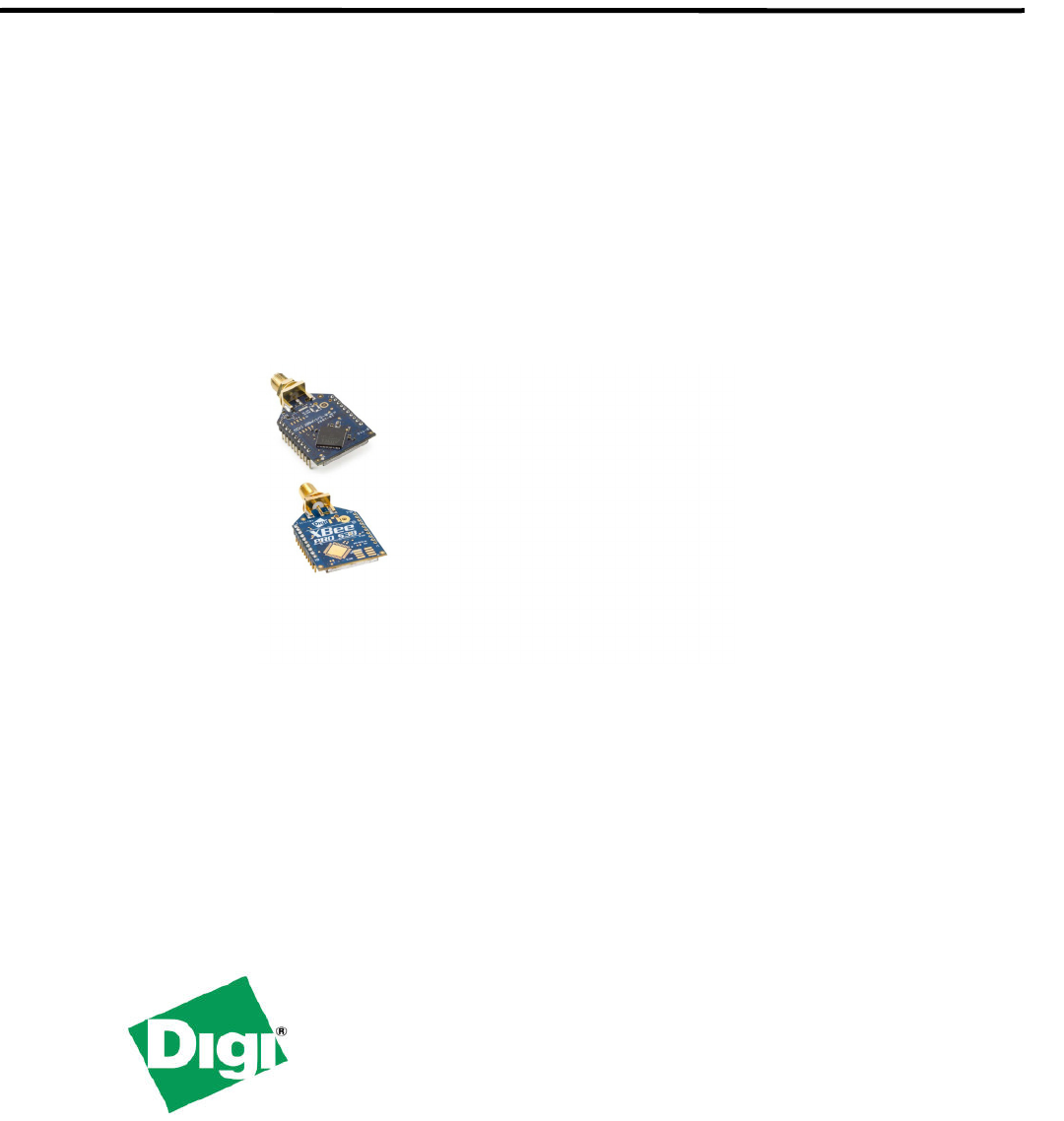
Digi International Inc.
11001 Bren Road East
Minnetonka, MN 55343
877 912-3444 or 952 912-3444
http://www.digi.com
XBee-PRO® 900HP/XBee-PRO® XSC RF Modules
XBee-PRO RF Modules by Digi International
Models: XBEE-PRO S3, XBEE-PRO S3B
Hardware: S3, S3B
90002173_B
August 30, 2012

XBee‐PRO®900HP/XBee‐PRO®XSCRFModules
©2012DigiInternational,Inc. 2
© 2012 Digi International, Inc. All rights reserved
Nopartofthecontentsofthismanualmaybetransmittedorreproducedinany
formorbyanymeanswithoutthewrittenpermissionofDigiInternational,Inc.
XBee‐PRO®isaregisteredtrademarkofDigiInternational,Inc.
Technical Support: Phone: (866) 765-9885 toll-free U.S.A. & Canada
(801) 765-9885 Worldwide
8:00 am - 5:00 pm [U.S. Mountain Time]
Online Support: http://www.digi.com/support/eservice/login.jsp
Email: rf-experts@digi.com

Contents
XBee‐PRO®900HP/XBee‐PRO®XSCRFModules
©2012DigiInternaitonal,Inc. 3
1. Preface: How to use this manual 5
2. RF Module Hardware 6
XBee-PRO S3B Hardware Description 6
Worldwide Acceptance 6
Specifications 7
Serial Communications Specifications 8
UART 8
SPI 8
GPIO Specifications 8
Hardware Specs for Programmable Variant 8
Mechanical Drawings 10
Pin Signals 11
Design Notes 11
Power Supply Design 11
Recommended Pin Connections 11
Board Layout 12
Module Operation for Programmable Variant 12
XBee Programmable Bootloader 14
Overview 14
Bootloader Software Specifics 14
Bootloader Menu Commands 18
Firmware Updates 19
Output File Configuration 19
3. RF Module Operation 21
Basic Operational Design 21
Serial Communications 21
UART Data Flow 21
SPI Communications 22
SPI Operation 23
Configuration 24
Data Format 25
SPI Parameters 25
Serial Buffers 26
UART Flow Control 26
Serial Interface Protocols 27
Modes of Operation 28
Description of Modes 28
Transmit Mode 28
Receive Mode 30
Command Mode 30
Sleep Mode 31
4. Networking Methods 32
MAC/PHY Basics 32
Related parameters: CM, HP, ID, PL, RR, MT 32
Addressing Basics 32
Related parameters: SH, SL, DH, DL, TO 32
Point to Point/Multipoint (P2MP) 33
Throughput 33
Repeater/Directed Broadcast 33
Related parameters: CE, NH, NN, BH 33
DigiMesh Networking 34
Related Command: MR 34
DigiMesh Feature Set 34
Data Transmission and Routing 34
Transmission Timeouts 35
5. Sleep Mode 37
Sleep Modes 37
Normal Mode (SM=0) 37
Asynchronous Pin Sleep Mode (SM=1) 37
Asynchronous Cyclic Sleep Mode (SM=4) 37
Asynchronous Cyclic Sleep with Pin Wake Up Mode
(SM=5) 38
Synchronous Sleep Support Mode (SM=7) 38
Synchronous Cyclic Sleep Mode (SM=8) 38
Asynchronous Sleep Operation 38
Wake Timer 38
Indirect Messaging and Polling (P2MP Packets
Only) 39
Indirect Messaging 39
Polling 39
Synchronous Sleep Operation (DigiMesh net-
works only) 39
Operation 39
Becoming a Sleep Coordinator 42
Configuration 43
Diagnostics 45
6. Command Reference Tables 46
7. API Operation 57
API Frame Format 57
API Serial Exchanges 59
AT Commands 59
Transmitting and Receiving RF Data 59
Remote AT Commands 59
Supporting the API 60
Frame Descriptions 60
AT Command 60
AT Command - Queue Parameter Value 61

Contents
XBee‐PRO®900HP/XBee‐PRO®XSCRFModules
©2012DigiInternaitonal,Inc. 4
TX Request 61
Explicit TX Request 62
Remote AT Command Request 64
AT Command Response 65
Modem Status 65
Transmit Status 66
Route Information Packet 66
Aggregate Addressing Update 68
RX Indicator 69
Explicit Rx Indicator 70
Node Identification Indicator 70
Remote Command Response 72
8. Advanced Application Features 73
Remote Configuration Commands 73
Sending a Remote Command 73
Applying Changes on Remote Devices 73
Remote Command Responses 73
Network Commissioning and Diagnostics 73
Device Configuration 73
Network Link Establishment and Maintenance 73
Device Placement 74
Device Discovery 75
Link Reliability 75
Commissioning Pushbutton and Associate LED 78
I/O Line Monitoring 80
I/O Samples 80
Queried Sampling 80
Periodic I/O Sampling 82
Digital I/O Change Detection 82
General Purpose Flash Memory 82
Accessing General Purpose Flash Memory 82
Over-the-Air Firmware Upgrades 88
Distributing the New Application 89
Verifying the New Application 89
Installing the Application 89
Things to Remember 90
Appendix A: XSC Firmware 91
Key Features 92
Worldwide Acceptance 92
Specifications 93
Pin Signals 93
Electrical Characteristics 95
Timing Specifications 95
Mechanical Drawings 96
RF Module Operation 97
Serial Communications 97
UART-Interfaced Data Flow 97
Serial Data 97
Flow Control 98
Modes of Operation 99
Idle Mode 99
Transmit Mode 99
Sleep Mode 101
Command Mode 103
RF Module Configuration 105
XBee Programming Examples 105
AT Commands 105
Binary Commands 106
Command Reference Table 106
Command Descriptions 107
RF Communication Modes 124
Addressing 125
Address Recognition 126
Basic Communications 126
Streaming Mode (Default) 126
Repeater Mode 127
Acknowledged Communications 130
Acknowledged Mode 130
Appendix B: Agency Certifications for S3B Hard-
ware 133
FCC (United States) Certification 133
Labeling Requirements 133
FCC Notices 133
Limited Modular Approval 134
FCC-approved Antennas 134
IC (Industry Canada) Certification 134
Appendix C: Agency Certifications for legacy S3/
S3B Hardware 138
FCC (United States) Certification 138
Labeling Requirements 138
FCC Notices 138
Limited Modular Approval 139
FCC-approved Antennas 139
IC (Industry Canada) Certification 139
Appendix D: Additional Information 144
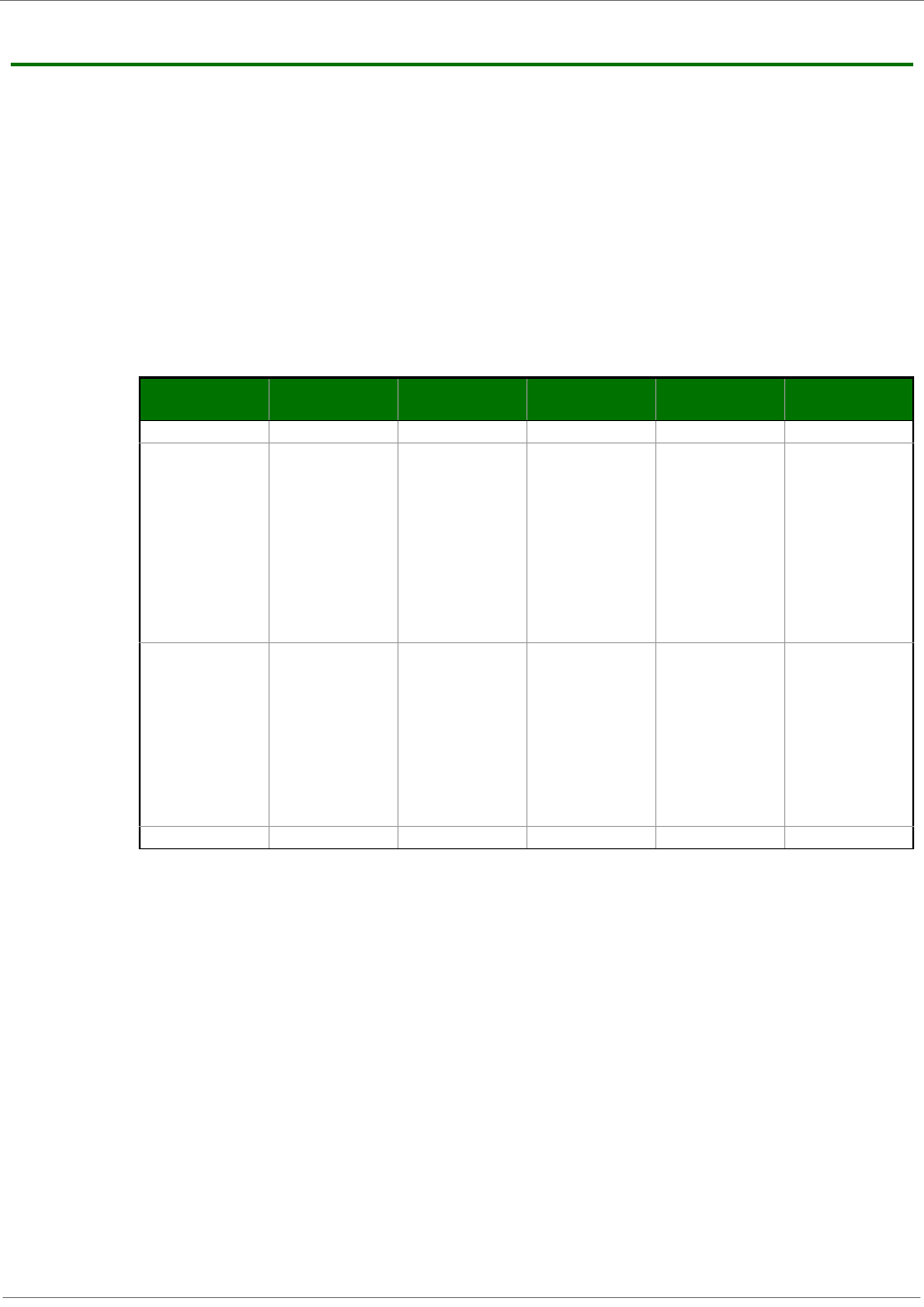
XBee‐PRO®900HP/XBee‐PRO®XSCRFModules
©2012DigiInternational,Inc. 5
Preface:Howtousethismanual
This combined manual contains documentation for two hardware platforms: the S3 and S3B. Existing S3
customers are strongly encouraged to migrate their systems and designs to the newer and superior S3B
platform.
This manual also contains documentation for two RF protocols: XStream Compatible (XSC) and 900HP. The
XSC firmware is provided for customers who need compatibility with existing networks which need to be
9XStream compatible. Customers which do not require this compatibility should not use the XSC firmware,
but rather the newer 900HP firmware.
Documentation for the XSC firmware is contained in Appendix A. All other firmware documentation in the
manual is not applicable to XSC firmware. Likewise documentation in Appendix A is not applicable to the
900HP firmware.
The following table describes how to use this manual based on the Digi part number for the module:
Digi Part Num-
bers FCC ID Hardware Plat-
form
Pre-installed
Firmware
Firmware avail-
able Notes
XBP09-XC… MCQ-XBEEXSC S3 XSC XSC
XBP9B-XC*T-001
(revision G and
earlier)
XBP9B-XC*T-002
(revision G and
earlier)
XBP9B-XC*T-021
(revision F and
earlier)
XBP9B-XC*T-022
(revision F and
earlier)
MCQ-XBPS3B S3B XSC XSC
S3B parts of revision
*** and earlier only
accept XSC firmware
and use an FCC ID of
MCQ-XBPS3B.
XBP9B-XC*T-001
(revision H and later)
XBP9B-XC*T-002
(revision H and later)
XBP9B-XC*T-021
(revision G and later)
XBP9B-XC*T-022
(revision G and later)
all other part numbers
beginning XBP9B-
XC...
MCQ-XB900HP S3B XSC XSC / 900HP
S3B parts greater
than revision ***
accept both XSC and
900HP firmware and
use an FCC ID of
MCQ-XB900HP.
XBP9B-D… MCQ-XB900HP S3B 900HP XSC / 900HP

XBee‐PRO®900HP/XBee‐PRO®XSCRFModules
©2012DigiInternational,Inc. 6
1.RFModuleHardware
This manual describes the operation of the XBee-PRO® 900HP RF module, which consists of firmware loaded onto XBee-
PRO S3B hardware.
XBee-PRO 900HP embedded RF modules provide wireless connectivity to end-point devices in mesh networks. Utilizing
the XBee-PRO Feature Set, these modules are interoperable with other devices. With the XBee, users can have their net-
work up-and-running in a matter of minutes without configuration or additional development.
XBee-PRO S3B Hardware Description
The XBee-PRO S3B radio module hardware consists of an Energy Micro EFM32G230F128 microcontroller, an
Analog Devices ADF7023 radio transceiver, an RF power amplifier, and in the programmable version, a
Freescale MC9S08QE32 microcontroller.
Worldwide Acceptance
FCC Certified (USA) - Refe r to Appe ndix B for FCC Re quir ement s.
Systems that include XBee-PRO Modules inherit Digi’s FCC Certification
ISM (Industrial, Scientific & Medical) frequency band
Manufactured under ISO 9001:2000 registered standards
XBee-PRO® (900 MHz) RF Modules are approved for use in US and Canada.
RoHS compliant
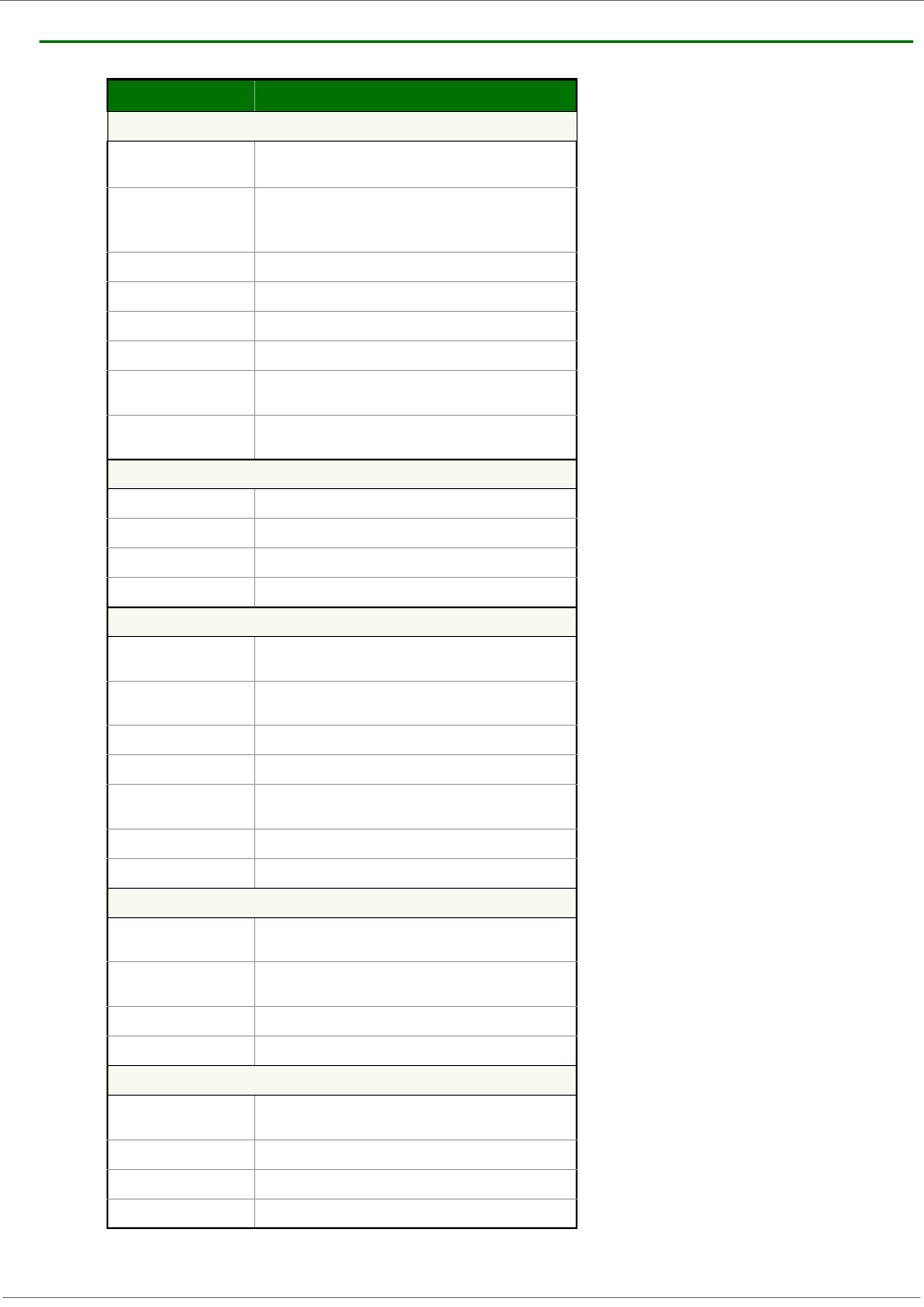
XBee‐PRO®900HP/XBee‐PRO®XSCRFModules
©2012DigiInternational,Inc. 7
Specifications
SpecificationsoftheXBee‐PRO®900HP/XBee‐PRO®XSCRFModule
Specification XBee
Performance
* Indoor/Urban Range 10kbps: up to 2000 ft (610m)
200kbps: up to 1000 ft (305m)
* Outdoor RF line-of-sight
Range
10kbps: up to 9 miles (15.5km)
200kbps: up to 4 miles (6.5km)
(with 2.1dB dipole antennas)
Transmit Power Output 24 dBm (250 mW) (software selectable)
RF Data Rate (High) 200 kbps
RF Data Rate (Low) 10 kbps
Serial UART interface CMOS Serial UART, baud rate stability of <1%
Serial Interface Data Rate
(software selectable) 9600-230400 baud
Receiver Sensitivity
(typical) -101 dBm, high data rate, -110 dBm, low data rate
Power Requirements
Supply Voltage 3.0 to 3.6 VDC
Transmit Current 215mA typical, (290mA max)
Idle / Receive Current 29mA typical at 3.3V, (35mA max)
Sleep Current 2.5 µA (typical)
General
**Operating Frequency
Band 902 to 928 MHz (software selectable channels)
Dimensions 1.297" x 0.962" x 0.215 (3.29cm x 2.44cm x 0.546cm) Note:
Dimensions do not include connector/antenna or pin lengths
Weight 5 to 8 grams, depending on the antenna option
Operating Temperature -40º to 85º C (industrial)
Antenna Options Integrated wire, U. FL RF connector, Reverse-polarity SMA
connector
Digital I/O 15 I/O lines,
ADC 4 10-bit analog inputs
Networking & Security
Supported Network
Topologies Mesh, point-to-point, point-to-multipoint, peer-to-peer
Number of Channels, user
selectable channels 64 channels available
Addressing Options PAN ID, Preamble ID, and 64-bit addresses
Encryption 128 bit AES
Agency Approvals
United States (FCC Part
15.247) MCQ-XB900HP
Industry Canada (IC) 1846A-XB900HP
Australia C-Tick
Brazil Pending

XBee‐PRO®900HP/XBee‐PRO®XSCRFModules
©2012DigiInternational,Inc. 8
* To determine your range, perform a range test under your operating conditions.
Serial Communications Specifications
XBee RF modules support both UART (Universal Asynchronous Receiver / Transmitter) and SPI (Serial
Peripheral Interface) serial connections.
UART
More information on UART operation is found in the UART section in Chapter 2.
SPI
For more information on SPI operation, see the SPI section in Chapter 2.
GPIO Specifications
XBee RF modules have 15 GPIO (General Purpose Input / Output) ports available. The exact list will depend
on the module configuration, as some GPIO pins are used for purposes such as serial communication.
See GPIO section for more information on configuring and using GPIO ports.
Hardware Specs for Programmable Variant
If the module has the programmable secondary processor, add the following table values to the specifications
listed on page 7. For example, if the secondary processor is running at 20 MHz and the primary processor is in
UARTPinAssignments
UART Pins Module Pin Number
DOUT 2
DIN / CONFIG 3
CTS / DIO7 12
RTS / DIO6 16
SPIPinAssignments
SPI Pins Module Pin Number
SPI_SCLK / DIO18 18
SPI_SSEL / DIO17 17
SPI_MOSI / DIO16 11
SPI_MISO / DIO15 4
SPI_ATTN / DIO1 19
ElectricalSpecificationsforGPIOPins
GPIO Electrical Specification Value
Voltage - Supply 3.0- 3.6 V
Low Schmitt switching threshold 0.3 x Vdd
High Schmitt switching threshold 0.7 x Vdd
Input pull-up resistor value 40 k
Input pull-down resistor value 40 k
Output voltage for logic 0 0.05 x Vdd
Output voltage for logic 1 0.95 x Vdd
Output source current 6 mA
Output sink current for 6 mA
Total output current (for GPIO pins) 48 mA

XBee‐PRO®900HP/XBee‐PRO®XSCRFModules
©2012DigiInternational,Inc. 9
receive mode then the new current value will be Itotal = Ir2 + Irx = 14 mA + 9 mA = 23 mA, where Ir2 is the
runtime current of the secondary processor and Irx is the receive current of the primary.
Specificationsoftheprogrammablesecondaryprocessor
Optional Secondary Processor Specification
These numbers add to specifications
(Add to RX, TX, and sleep currents depending on
mode of operation)
Runtime current for 32k running at 20MHz +14mA
Runtime current for 32k running at 1MHz +1mA
Sleep current +0.5A typical
For additional specifications see Freescale Datasheet and
Manual MC9SO8QE32
Minimum Reset Pulse for Programmable 100nS
Minimum Reset Pulse to Radio 50nS
VREF Range 1.8VDC to VCC
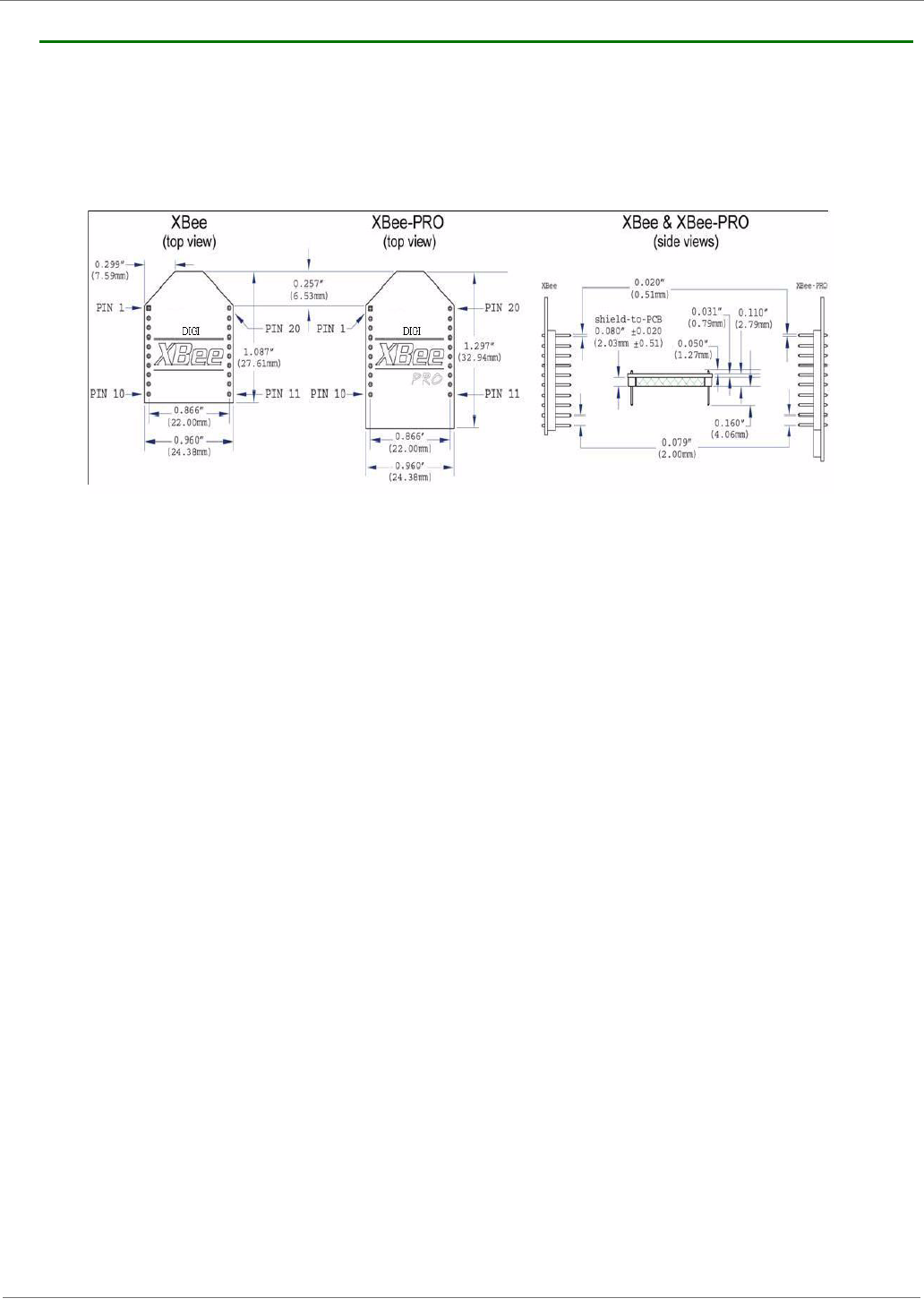
XBee‐PRO®900HP/XBee‐PRO®XSCRFModules
©2012DigiInternational,Inc. 10
Mechanical Drawings
MechanicaldrawingsoftheXBee‐PRO900HPRFModules(antennaoptionsnotshown).Alldimensionsareininches.
.

XBee‐PRO®900HP/XBee‐PRO®XSCRFModules
©2012DigiInternational,Inc. 11
Pin Signals
• Signal Direction is specified with respect to the module
• See Design Notes section below for details on pin connections.
Design Notes
The XBee modules do not specifically require any external circuitry or specific connections for proper
operation. However, there are some general design guidelines that are recommended for help in
troubleshooting and building a robust design.
Power Supply Design
Poor power supply can lead to poor radio performance, especially if the supply voltage is not kept within
tolerance or is excessively noisy. To help reduce noise, we recommend placing both a 1F and 47pF capacitor
as near to pin 1 on the PCB as possible. If using a switching regulator for your power supply, switching
frequencies above 500kHz are preferred. Power supply ripple should be limited to a maximum 250mV peak to
peak.
Note – For designs using the programmable modules, an additional 10F decoupling cap is recommended near
pin 1 of the module. The nearest proximity to pin 1 of the three caps should be in the following order: 47pf,
1F followed by 10F.
Recommended Pin Connections
The only required pin connections are VCC, GND, DOUT and DIN. To support serial firmware updates, VCC,
GND, DOUT, DIN, RTS, and DTR should be connected.
PinAssignmentsforXBeeModules
(Low‐assertedsignalsaredistinguishedwithahorizontallineabovesignalname.)
Pin # Name Direction Default State Description
1 VCC Power Supply
2 DOUT/DIO13 Both Output GPIO / UART Data out
3 DIN/nConfig/DIO14 Both Input GPIO / UART Data In
4 DIO12/SPI_MISO Both Output GPIO / SPI slave out
5 nRESET Input
Module Reset. Drive low to reset the module. This
is also an output with an open drain configuration
with an internal 20 K ohm pull-up (never drive to
logic high, as the module may be driving it low).
The minimum pulse width is 1 mS.
6 DIO10/PWM0 Both GPIO / RX Signal Strength Indicator
7 DIO11/PWM1 Both GPIO / Pulse Width Modulator
8 reserved Disabled Do Not Connect
9 nDTR/SLEEP_RQ/DIO8 Both Input GPIO / Pin Sleep Control Line (DTR on the dev
board)
10 GND Ground
11 DIO4/AD4/SPI_MOSI Both GPIO/SPI slave In
12 nCTS/DIO7 Both Output GPIO / Clear-to-Send Flow Control
13 On_nSLEEP/DIO9 Output Output GPIO / Module Status Indicator
14 VREF Input
Internally used for programmable secondary
processor. For compatibility with other XBee
modules, we recommend connecting this pin to the
voltage reference if Analog Sampling is desired.
Otherwise, connect to GND.
15 Associate/DIO5 Both Output GPIO / Associate Indicator
16 nRTS/DIO6 Both Input GPIO / Request-to-Send Flow Control
17 AD3/DIO3/SPI_nSSEL Both GPIO / Analog Input / SPI Slave Select
18 AD2/DIO2/SPI_CLK Both GPIO / Analog Input / SPI Clock
19 AD1/DIO1/SPI_nATTN Both GPIO / Analog Input / SPI Attention
20 AD0/DIO0 Both GPIO / Analog Input

XBee‐PRO®900HP/XBee‐PRO®XSCRFModules
©2012DigiInternational,Inc. 12
All unused pins should be left disconnected. All inputs on the radio can be pulled high or low with 40k internal
pull-up or pull-down resistors using the PR and PD software commands. No specific treatment is needed for
unused outputs.
For applications that need to ensure the lowest sleep current, unconnected inputs should never be left
floating. Use internal or external pull-up or pull-down resistors, or set the unused I/O lines to outputs.
Other pins may be connected to external circuitry for convenience of operation, including the Associate LED
pin (pin 15) and the Commissioning pin (pin 20). An LED attached to the the associate LED pin will flash
differently depending on the state of the module to the network, and a pushbutton attached to pin 20 can
enable various join functions without having to send serial port commands. Please see the commissioning
pushbutton and associate LED section in chapter 7 for more details. The source and sink capabilities are
limited to 6mA on all I/O pins.
The VRef pin (pin 14) is only used on the programmable versions of these modules. For compatibility with
other XBee modules, we recommend connecting this pin to a voltage reference if analog sampling is desired.
Otherwise, connect to GND.
Board Layout
XBee modules are designed to be self sufficient and have minimal sensitivity to nearby processors, crystals or
other PCB components. As with all PCB designs, Power and Ground traces should be thicker than signal traces
and able to comfortably support the maximum current specifications. No other special PCB design
considerations are required for integrating XBee radios except in the antenna section.
The choice of antenna and antenna location is very important for correct performance. XBees do not require
additional ground planes on the host PCB. In general, antenna elements radiate perpendicular to the direction
they point. Thus a vertical antenna emits across the horizon. Metal objects near the antenna cause reflections
and may reduce the ability for an antenna to radiate efficiently. Metal objects between the transmitter and
receiver can also block the radiation path or reduce the transmission distance, so external antennas should be
positioned away from them as much as possible. Some objects that are often overlooked are metal poles,
metal studs or beams in structures, concrete (it is usually reinforced with metal rods), metal enclosures,
vehicles, elevators, ventilation ducts, refrigerators, microwave ovens, batteries, and tall electrolytic
capacitors.
Module Operation for Programmable Variant
The modules with the programmable option have a secondary processor with 32k of flash and 2k of RAM. This
allows module integrators to put custom code on the XBee module to fit their own unique needs. The DIN,
DOUT, RTS, CTS, and RESET lines are intercepted by the secondary processor to allow it to be in control of the
data transmitted and received. All other lines are in parallel and can be controlled by either the internal
microcontroller or the MC9SO8QE micro (see Block Diagram for details). The internal microcontroller by
default has control of certain lines. These lines can be released by the internal microcontroller by sending the
proper command(s) to disable the desired DIO line(s) (see XBee Command Reference Tables).
In order for the secondary processor to sample with ADCs, the XBee pin 14 (VREF) must be connected to a
reference voltage.
Digi provides a bootloader that can take care of programming the processor over the air or through the serial
interface. This means that over the air updates can be supported through an XMODEM protocol. The processor
can also be programmed and debugged through a one wire interface BKGD (Pin 8).
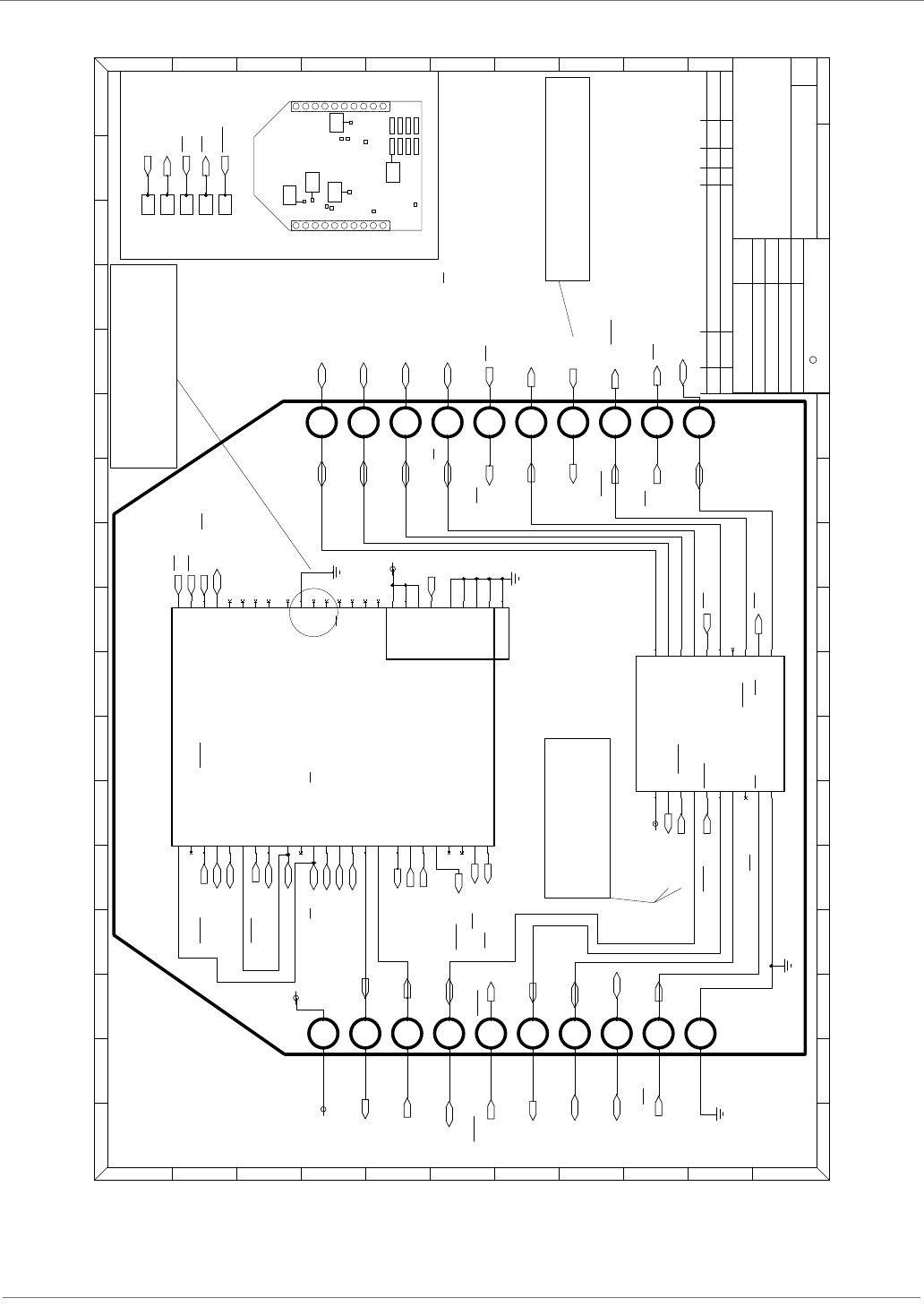
XBee‐PRO®900HP/XBee‐PRO®XSCRFModules
©2012DigiInternational,Inc. 13
GND
A
5
4
G
E
12
9
ECO
PART NO.
B
14
2
13
11
SHEET
REV
TITLE
DATE:
1
ENGINEER:
APPROVALS:
REV.
DATE
12
10
17
11
16
15
8
3
F
APPR
CKD
BY
C
D
6
DESCRIPTION OF CHANGE
E
G
F
7
DESIGNED:
CHECKED:
DRAWN:
D
C
B
A
L
K
J
H
1
7
6
5
4
2
8
3 9
DO NOT SCALE DRAWING
J
H
10
Digi International Inc.
All rights reserved
C
DOUT/PTB1
DIO3/ADC3/PTB5,A7/SS
BKGD/PTA4
DIO0/ADC0/PTA0
ON/SLEEP/PTA1
CTS/DIO7/PTC0
DIO4/PTB3/MOSI1
BKGD/PTA4
DIO12/PTB4/MISO1
DIN_RADIO
DOUT_RADIO
ASSOC/DIO5/PTD4
RTS/DIO6/PTD7
CTS_RADIO
VREF
CTS_RADIO
SLEEP_RQ/DTR/PTD5
RESET/PTA5
DIO1/ADC1/PTA3/SCL
RESET/PTA5
ASSOC/DIO5/PTD4
DIO2/ADC2/PTB2/SPSCK
DOUT_RADIO
DIN_RADIO
RESET_RADIO
ASSOC/DIO5/PTD4
ON/SLEEP/PTA1
ON/SLEEP/PTA1
RSSI/DIO10/PWM0/PTC5
DIO1/ADC1/PTA3/SCL
VREF
RTS/DIO6/PTD7
DIO2/ADC2/PTB2/SPSCK
DIO3/ADC3/PTB5,A7/SS
RTS/DIO6/PTD7
DIO2/ADC2/PTB2/SPSCK
DIN/PTB0
VREF
DIO11/PWM1/PTA2/SDA
RTS_RADIO
DIO1/ADC1/PTA3/SCL
DIO12/PTB4/MISO1
DIN/PTB0
SLEEP_RQ/DTR/PTD5
DIO4/PTB3/MOSI1
BKGD/PTA4
DIN_RADIO
DIO12/PTB4/MISO1
DOUT_RADIO
CTS/DIO7/PTC0
DIO11/PWM1/PTA2/SDA
DIO0/ADC0/PTA0
RTS_RADIO
RTS_RADIO
DIO4/PTB3/MOSI1
DOUT/PTB1
CTS/DIO7/PTC0
DIO0/ADC0/PTA0
CTS_RADIO
RESET_RADIO
DIO3/ADC3/PTB5,A7/SS
RSSI/DIO10/PWM0/PTC5
SLEEP_RQ/DTR/PTD5
RESET/PTA5
RSSI/DIO10/PWM0/PTC5
DIO11/PWM1/PTA2/SDA
RESET_RADIO
VCC
VCC
VCC
VCC
1
2
3
4
5
6
7
8
9
10
11
12
13
14
15
16
17
18
19
20
VCC
GND
RESERVED
DIN/CONFIG
DOUT
DTR/SLEEP_RQ/DIO8
PWM0/RSSI/DIO10
PWM1/DIO11
RESET
PWM2/DIO12
CTS/DIO7
RTS/AD6/DIO6
VREF
AD1/DIO1
AD2/DIO2
AD4/DIO4
AD3/DIO3
AD0/DIO0
ASSOC/AD5/DIO5
ON/SLEEP/DIO9
S
27
28
47
48
35
36
37
38
10
11
14
15
23
24
25
26
39
40
45
46
16
17
21
22
44
43
42
41
29
13
12
3
2
1
34
33
32
20
19
18
PTB6/SDA/XTAL
PTB1/KBI1P15/TxD1/ADP5
PTB2/KBIP6/SPSCK/ADP6
PTB3/KBIP7/MOSI/ADP7
PTB4/TPM2CH1/MISO
PTB5/TPM1CH1/SS
PTE6
PTD6/KBI2P6
PTA3/KBIP3/SCL/ADP3
PTA0/KBI1P0/TPM1CH0/ADP0/ACMP1+
PTA4/ACPM1O/BKGD/MS
PTA7/TPM2CH2/ADP9
PTA1/KBI1P1/TPM2CH0/ADP1/ACMP1-
PTA5/IRQ/TPM1CLK/RESET
PTA6/TPM1CH2/ADP8
PTA2/KBI1P2/SDA/ADP2
PTE4
PTE5
PTE3/SS
PTE2/MISO
PTD7/KBI2P7
PTD1/KBI2P1
PTD2/KBI2P2
PTD3/KBI2P3
PTD5/KBI2P5
PTE0/TPM2CLK/SPSCLK
PTD4/KBI2P4
PTB7/SCL/EXTEL
PTE1/MOSI
PTD0/KBI2P0
PTC4/TPM3CH4
PTB0/KBI1P4/RxD1/ADP4
PTC2/TPM3CH2
PTC7/TxD2/ACPM2-
PTC5/TPM3CH5/ACPM2O
PTC3/TPM3CH3
PTC1/TPM3CH1
PTC0/TPM3CH0
PTE7/TPM3CLK
PTC6/RxD2/ACPM2+
U1-A
MC9S08QE32CFT
30
4
5
6
7
8
9
31
49
VSS
VSSAD
VREFL
VSS
VDD
VDD
VDDAD
PAD
VREFH
U1-B
MC9S08QE32CFT
14
8
Commissioning Line
19
10
20
1
9
6
3
5
4
2
FREESCALE
A
11
TP5
7
13
TP2
Pin10
Pin11
TP1
VREF must be connected to
external reference for MC9S08
to sample ADC lines
Special Test Points
TP6
XBEE-PRO S3B
PROGRAMMABLE
BLOCK DIAGRAM
TP4
15
Pin1
Pin20
Commissioning Line
MC9S08 controls
DOUT, DIN, RESET, RTS, CTS
for Internal Radio.
These lines are not
connected to the
20 external pins.
TP1
12
Pins PTE4, 5 and 6 are used so
software can determine
fundamental Hardware differences
by turning on internal pull-up
resistors and reading the lines.
011 = Programmable S3B
PROGRAMMABLE XBEE-PRO S3B
16
TP2
18
TP5
TP4
17
TP6
1 OF 1
S3B RADIO

XBee‐PRO®900HP/XBee‐PRO®XSCRFModules
©2012DigiInternational,Inc. 14
XBee Programmable Bootloader
Overview
The XBee Programmable module is equipped with a Freescale MC9S08QE32 application processor. This
application processor comes with a supplied bootloader. This section describes how to interface the
customer's application code running on this processor to the XBee Programmable module's supplied
bootloader.
The first section discusses how to initiate firmware updates using the supplied bootloader for wired and over-
the-air updates.
Bootloader Software Specifics
Memory Layout
Figure 1 shows the memory map for the MC9S08QE32 application processor.
The supplied bootloader occupies the bottom pages of the flash from 0xF200 to 0xFFFF. Application
code cannot write to this space.
The application code can exist in Flash from address 0x8400 to 0xF1BC. 1k of Flash from 0x8000 to
0x83FF is reserved for Non Volatile Application Data that will not be erased by the bootloader during a
flash update.
A portion of RAM is accessible by both the application and the bootloader. Specifically, there is a shared
data region used by both the application and the bootloader that is located at RAM address 0x200 to
0x215. Application code should not write anything to BLResetCause or AppResetCause unless
informing the bootloader of the impending reset reason. The Application code should not clear
BLResetCause unless it is handling the unexpected reset reason.
To prevent a malfunctioning application from running forever, the Bootloader increments BLResetCause
after each watchdog or illegal instruction reset. If this register reaches above 0x10 the bootloader will
stop running the application for a few minutes to allow an OTA or Local update to occur. If no update is
initiated within the time period, BLResetCause is cleared and the application is started again. To
prevent unexpected halting of the application, the application shall clear or decrement BLResetCause
just before a pending reset. To disable this feature, the application shall clear BLResetCause at the
start of the application.
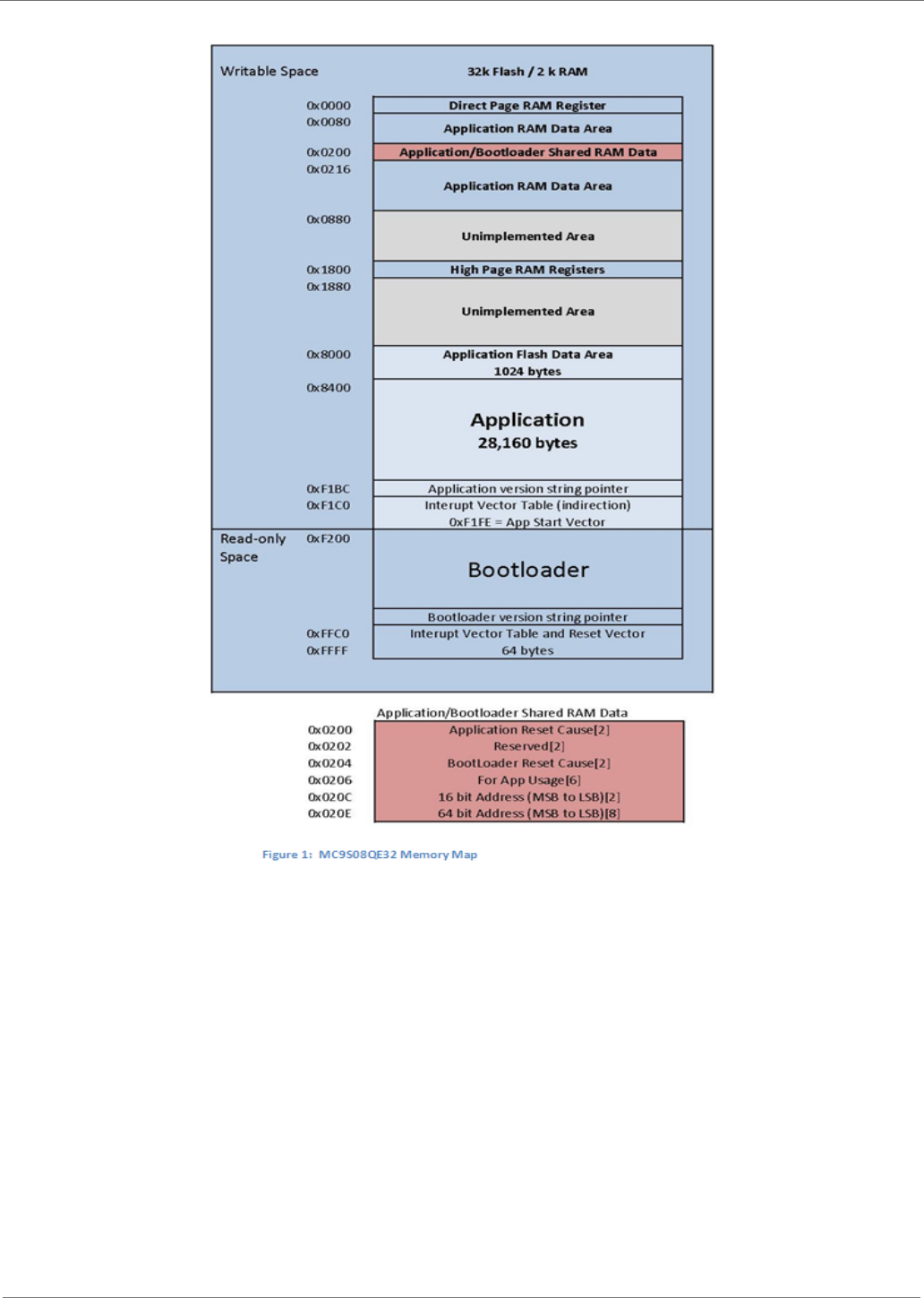
XBee‐PRO®900HP/XBee‐PRO®XSCRFModules
©2012DigiInternational,Inc. 15

XBee‐PRO®900HP/XBee‐PRO®XSCRFModules
©2012DigiInternational,Inc. 16
Operation
Upon reset of any kind, the execution control begins with the bootloader.
If the reset cause is Power-On reset (POR), Pin reset (PIN), or Low Voltage Detect (LVD) reset (LVD)
the bootloader will not jump to the application code if the override bits are set to RTS(D7)=1,
DTR(D5)=0, and DIN(B0)=0. Otherwise, the bootloader writes the reset cause "NOTHING" to the
shared data region, and jumps to the Application.
Reset causes are defined in the file common. h in an enumeration with the following definitions:
typedef enum {
BL_CAUSE_NOTHING = 0x0000, //PIN, LVD, POR
BL_CAUSE_NOTHING_COUNT = 0x0001,//BL_Reset_Cause counter
// Bootloader increments cause every reset
BL_CAUSE_BAD_APP = 0x0010,//Bootloader considers APP invalid
} BL_RESET_CAUSES;
typedef enum {
APP_CAUSE_NOTHING = 0x0000,
APP_CAUSE_USE001 = 0x0001,
// 0x0000 to 0x00FF are considered valid for APP use.
APP_CAUSE_USE255 = 0x00FF,
APP_CAUSE_FIRMWARE_UPDATE = 0x5981,
APP_CAUSE_BYPASS_MODE = 0x4682,
APP_CAUSE_BOOTLOADER_MENU = 0x6A18,
} APP_RESET_CAUSES;
Otherwise, if the reset cause is a "watchdog" or other reset, the bootloader checks the shared memory
region for the APP_RESET_CAUSE. If the reset cause is:
1."APP_CAUSE_NOTHING" or 0x0000 to 0x00FF, the bootloader increments the
BL_RESET_CAUSES, verifies that it is still less than BL_CAUSE_BAD_APP, and jumps back to
the application. If the Application does not clear the BL_RESET_CAUSE, it can prevent an
infinite loop of running a bad application that continues to perform illegal instructions or
watchdog resets.
2."APP_CAUSE_FIRMWARE_UPDATE", the bootloader has been instructed to update the
application "over-the-air" from a specific 64-bit address. In this case, the bootloader will
attempt to initiate an Xmodem transfer from the 64-bit address located in shared RAM.
3."APP_CAUSE_BYPASS_MODE", the bootloader executes bypass mode. This mode passes the
local UART data directly to the internal microcontroller allowing for direct communication with
the internal microcontroller.
The only way to exit bypass mode is to reset or power cycle the module.
If none of the above is true, the bootloader will enter "Command mode". In this mode, users can
initiate firmware downloads both wired and over-the-air, check application/bootloader version strings,
and enter Bypass mode.
Application version string
Figure 1 shows an "Application version string pointer" area in application flash which holds the pointer
to where the application version string resides. The application's linker command file ultimately
determines where this string is placed in application flash.
It is preferable that the application version string be located at address 0x8400 for MC9S08QE32 parts.
The application string can be any characters terminated by the NULL character (0x00). There is not a
strict limit on the number of characters in the string, but for practical purposes should be kept under
100 bytes including the terminating NULL character. During an update the bootloader erases the entire
application from 0x8400 on. The last page has the vector table specifically the redirected reset vector.
The version string pointer and reset vector are used to determine if the application is valid.

XBee‐PRO®900HP/XBee‐PRO®XSCRFModules
©2012DigiInternational,Inc. 17
Application Interrupt Vector table and Linker Command File
Since the bootloader flash region is read-only, the interrupt vector table is redirected to the region
0xF1C0 to 0xF1FD so that application developers can use hardware interrupts. Note that in order for
Application interrupts to function properly, the Application's linker command file (*.prm extension)
must be modified appropriately to allow the linker to place the developers code in the correct place in
memory. For example, the developer desires to use the serial communications port SCI1 receive
interrupt. The developer would add the following line to the Codewarrior linker command file for the
project:
VECTOR ADDRESS 0x0000F1E0 vSci1Rx
This will inform the linker that the interrupt function "vSci1Rx()" should be placed at address
0x0000F1E0. Next, the developer should add a file to their project "vector_table.c" that creates an
array of function pointers to the ISR routines used by the application.
extern void _Startup(void);/* _Startup located in Start08.c */
extern void vSci1Rx(void);/* sci1 rx isr */
extern short iWriteToSci1(unsigned char *);
void vDummyIsr(void);
#pragma CONST_SEG VECTORS
void (* const vector_table[])(void) = /* Relocated Interrupt vector table */{
vDummyIsr,/* Int.no. 0 Vtpm3ovf (at F1C0)Unassigned */
vDummyIsr, /* Int.no. 1 Vtpm3ch5 (at F1C2) Unassigned */
vDummyIsr, /* Int.no. 2 Vtpm3ch4 (at F1C4) Unassigned */
vDummyIsr, /* Int.no. 3 Vtpm3ch3 (at F1C6) Unassigned */
vDummyIsr, /* Int.no. 4 Vtpm3ch2 (at F1C8) Unassigned */
vDummyIsr, /* Int.no. 5 Vtpm3ch1 (at F1CA) Unassigned */
vDummyIsr, /* Int.no. 6 Vtpm3ch0 (at F1CC) Unassigned */
vDummyIsr, /* Int.no. 7 Vrtc (at F1CE) Unassigned */
vDummyIsr, /* Int.no. 8 Vsci2tx (at F1D0) Unassigned */
vDummyIsr, /* Int.no. 9 Vsci2rx (at F1D2) Unassigned */
vDummyIsr, /* Int.no. 10 Vsci2err (at F1D4) Unassigned */
vDummyIsr, /* Int.no. 11 Vacmpx (at F1D6) Unassigned */
vDummyIsr, /* Int.no. 12 Vadc (at F1D8) Unassigned */
vDummyIsr, /* Int.no. 13 Vkeyboard (at F1DA) Unassigned */
vDummyIsr, /* Int.no. 14 Viic (at F1DC) Unassigned */
vDummyIsr, /* Int.no. 15 Vsci1tx (at F1DE) Unassigned */
vSci1Rx, /* Int.no. 16 Vsci1rx (at F1E0) SCI1RX */
vDummyIsr, /* Int.no. 17 Vsci1err (at F1E2) Unassigned */
vDummyIsr, /* Int.no. 18 Vspi (at F1E4) Unassigned */
vDummyIsr, /* Int.no. 19 VReserved12 (at F1E6) Unassigned */
vDummyIsr, /* Int.no. 20 Vtpm2ovf (at F1E8) Unassigned */
vDummyIsr, /* Int.no. 21 Vtpm2ch2 (at F1EA) Unassigned */
vDummyIsr, /* Int.no. 22 Vtpm2ch1 (at F1EC) Unassigned */
vDummyIsr, /* Int.no. 23 Vtpm2ch0 (at F1EE) Unassigned */
vDummyIsr, /* Int.no. 24 Vtpm1ovf (at F1F0) Unassigned */
vDummyIsr, /* Int.no. 25 Vtpm1ch2 (at F1F2) Unassigned */
vDummyIsr, /* Int.no. 26 Vtpm1ch1 (at F1F4) Unassigned */
vDummyIsr, /* Int.no. 27 Vtpm1ch0 (at F1F6) Unassigned */

XBee‐PRO®900HP/XBee‐PRO®XSCRFModules
©2012DigiInternational,Inc. 18
vDummyIsr, /* Int.no. 28 Vlvd (at F1F8) Unassigned */
vDummyIsr, /* Int.no. 29 Virq (at F1FA) Unassigned */
vDummyIsr, /* Int.no. 30 Vswi (at F1FC) Unassigned */
_Startup /* Int.no. 31 Vreset (at F1FE) Reset vector */
};
void vDummyIsr(void){
for(;;){
if(iWriteToSci1("STUCK IN UNASSIGNED ISR\n\r>"));
}
}
The interrupt routines themselves can be defined in separate files. The "vDummyIsr" function is used
in conjunction with "iWritetoSci1" for debugging purposes.
Bootloader Menu Commands
The bootloader accepts commands from both the local UART and OTA. All OTA commands sent must be
Unicast with only 1 byte in the payload for each command. A response will be returned to the sender. All
Broadcast and multiple byte OTA packets are dropped to help prevent general OTA traffic from being
interpreted as a command to the bootloader while in the menu.
Bypass Mode - "B"
The bootloader provides a “bypass” mode of operation that essentially connects the freescale mcu to
the internal microcontroller’s serial UART. This allows direct communication to the internal
microcontroller’s radio for the purpose of firmware and radio configuration changes. Once in bypass
mode, the X-CTU utility can change modem configuration and/or update module’s firmware. Bypass
mode automatically handles any baud rate up to 115.2kbps. Note that this command is unavailable
when module is accessed remotely.
Update Firmware - "F"
The "F" command initiates a firmware download for both wired and over-the-air configurations.
Depending on the source of the command (received via Over the Air or local UART), the download will
proceed via wired or over-the-air respectively.
Adjust Timeout for Update Firmware - "T"
The "T" command changes the timeout before sending a NAK by Base-Time*2^(T). The Base-Time for
the local UART is different than the Base-Time for Over the Air. During a firmware update, the
bootloader will automatically increase the Timeout if repeat packets are received or multiple NAKs for
the same packet without success occur.
Application Version String - "A"
The "A" command provides the version of the currently loaded application. If no application is present,
"Unkown" will be returned.
Bootloader Version String - "V"
The "V" command provides the version of the currently loaded bootloader. The version will return a
string in the format BLFFF-HHH-XYZ_DDD where FFF represents the Flash size in kilo bytes, HHH is the
hardware, XYZ is the version, and DDD is the preferred XMODEM packet size for updates. Double the
preferred packet size is also possible, but not guaranteed. For example "BL032-2B0-023_064" will take
64 byte CRC XMODEM payloads and may take 128 byte CRC XMODEM payloads also. In this case, both
64 and 128 payloads are handled, but the 64 byte payload is preferred for better Over the Air
reliability.
Bootloader Version BL032-2x0-025_064 only operates at 9600 baud on the local UART as well as
communications to the internal microcontroller. A newer version of the Bootloader BL032-2x0-033_064
or newer BL032-2B0-XXX_064 has changed the baud rate to 115200 between the Programmable and

XBee‐PRO®900HP/XBee‐PRO®XSCRFModules
©2012DigiInternational,Inc. 19
the internal microcontroller. The internal module is also set to 115200 as the default baud rate. The
default rate of the programmable local UART is also set to 115200, however, the local UART has an
auto baud feature added to detect if the UART is at the wrong baud rate. If a single character is sent, it
will automatically switch to 115200 or 9600 baud.
Firmware Updates
Wired Updates
A user can update their application using the bootloader in a wired configuration with the following
steps:
a. Plug XBee programmable module into a suitable serial port on a PC.
b. Open a hyperterminal (or similar dumb terminal application) session with 115200 baud, no par-
ity, and 8 data bits with one stop bit.
c. Hit Enter to display the bootloader menu.
d. Hit the "F" key to initiate a wired firmware update.
e. A series of "C" characters Will be displayed within the hyperterminal window. At this point,
select the "transfer->send file" menu item. Select the desired flat binary output file.
f. Select "Xmodem" as the protocol.
g. Click "Send" on the "Send File" dialog. The file will be downloaded to the XBee Programmable
module. Upon a successful update, the bootloader will jump to the newly loaded application.
Over-The-Air updates
A user can update their application using the bootloader in an “over-the-air” configuration with the
following steps…(This procedure assumes that the bootloader is running and not the application. The
internal microcontroller baud rate of the programmable module must be set to 115200 baud. The
bootloader only operates at 115200 baud between the Radio and programmable bootloader. The
application must be programmed with some way to support returning to the bootloader in order to
support Over the Air (OTA) updates without local intervention.)
a. Open a hyperterminal session to the host module with no parity, no hardwareflow control, 8
data bits and 1 stop bit. (The host module does not have to operate at the same baud rate as the
remote module.) For faster updates and less latency due to the UART, set the host module to a
faster baud rate. (i.e. 115200)
b. Enter 3 pluses "+++" to place the module in command mode. (or XCTU’s “Modem Configura-
tion” tab can be used to set the correct parameters)
c. Set the Host Module destination address to the target module’s 64 bit address that the host
module will update (ATDH aabbccdd, ATDL eeffgghh, ATCN, where aabbccddeeffgghh is the hexa-
decimal 64 bit address of the target module).
d. Hit Enter and the bootloader command menu will be displayed from the remote module. (Note
that the option "B" doesn't exist for OTA)
e. Hit the "F" key to cause the remote module to request the new firmware file over-the-air.
f. The host module will begin receiving "C" characters indicating that the remote module is
requesting an Xmodem CRC transfer. Using XCTU or another terminal program, Select "XMODEM"
file transfer. Select the Binary file to upload/transfer. Click Send to start the transfer. At the con-
clusion of a successful transfer, the bootloader will jump to the newly loaded application.
Output File Configuration
BKGD Programming
P&E Micro provides a background debug tool that allows flashing applications on the MC9S08QE parts
through their background debug mode port. By default, the Codewarrior tool produces an "ABS"
output file for use in programming parts through the background debug interface. The programmable
XBee from the factory has the BKGD debugging capability disabled. In order to debug, a bootloader

XBee‐PRO®900HP/XBee‐PRO®XSCRFModules
©2012DigiInternational,Inc. 20
with the debug interface enabled needs to be loaded on the secondary processor or a stand-alone app
needs to be loaded.
Bootloader updates
The supplied bootloader requires files in a "flat binary" format which differs from the default ABS file
produced. The Codewarrior tool also produces a S19 output file. In order to successfully flash new
applications, the S19 file must be converted into the flat binary format. Utilities are available on the
web that will convert S19 output to "BIN" outputs. Often times, the "BIN" file conversion will pad the
addresses from 0x0000 to the code space with the same number. (Often 0x00 or 0xFF) These extra
bytes before the APP code starts will need to be deleted from the bin file before the file can be
transferred to the bootloader.
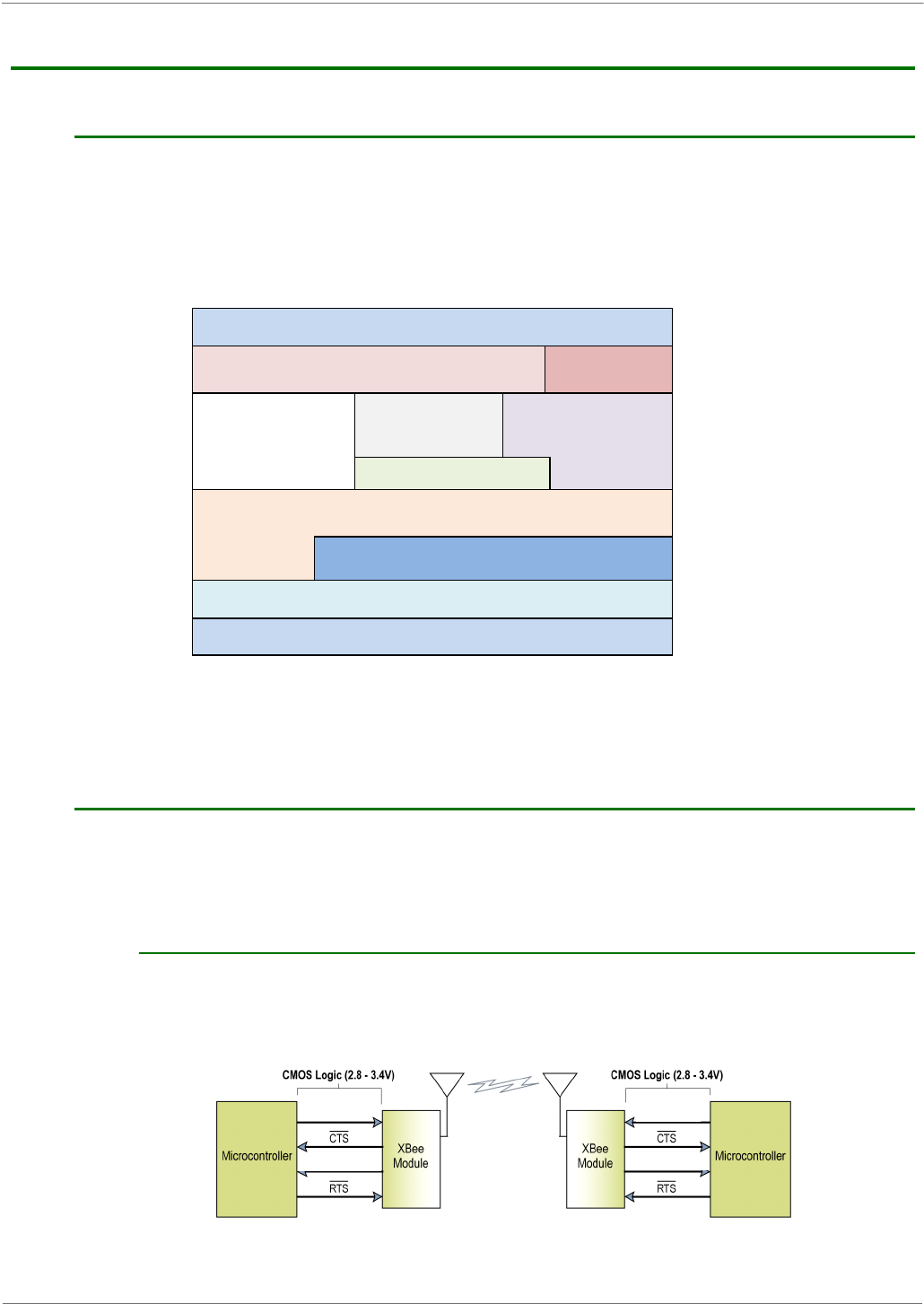
XBee‐PRO®900HP/XBee‐PRO®XSCRFModules
©2012DigiInternational,Inc. 21
2.RFModuleOperation
Basic Operational Design
The XBee-PRO® 900HP RF Module uses a multi-layered firmware base to order the flow of data, dependent on the
hardware and software configuration chosen by the user. This configuration block diagram is shown below, with the
host serial interface as the physical starting point, and the antenna as the physical endpoint for the transferred data.
As long as a block is able to touch another block, the two interfaces can interact. For example, if the module is using
SPI mode, Transparent Mode is not available. See below:
The command handler is the code that processes commands from AT Command Mode or API Mode (see AT Com-
mands section). The command handler can also process commands from remote radios (see Remote AT Commands
section).
Serial Communications
XBee RF Modules interface to a host device through a serial port. Through its serial port, the module can
communicate with any logic and voltage compatible UART, through a level translator to any serial device (for
example, through a RS-232 or USB interface board), or through a Serial Peripheral Interface (SPI), which is a
synchronous interface to be described later.
UART Data Flow
Devices that have a UART interface can connect directly to the pins of the RF module as shown in the figure
below.
SystemDataFlowDiagraminaUART‐interfacedenvironment
(Low‐assertedsignalsdistinguishedwithhorizontallineoversignalname.)
Packet Handler
Transparent
Mode
AT Command
Mode
API
Mode
Network Layer (DigiMesh/Repeater)
MAC/PHY Layer (Point-Multipoint)
UART SPI
Command Handler
Antenna
Host Serial Interface
DIN (data in) DIN (data in)
DOUT (data out) DOUT (data out)
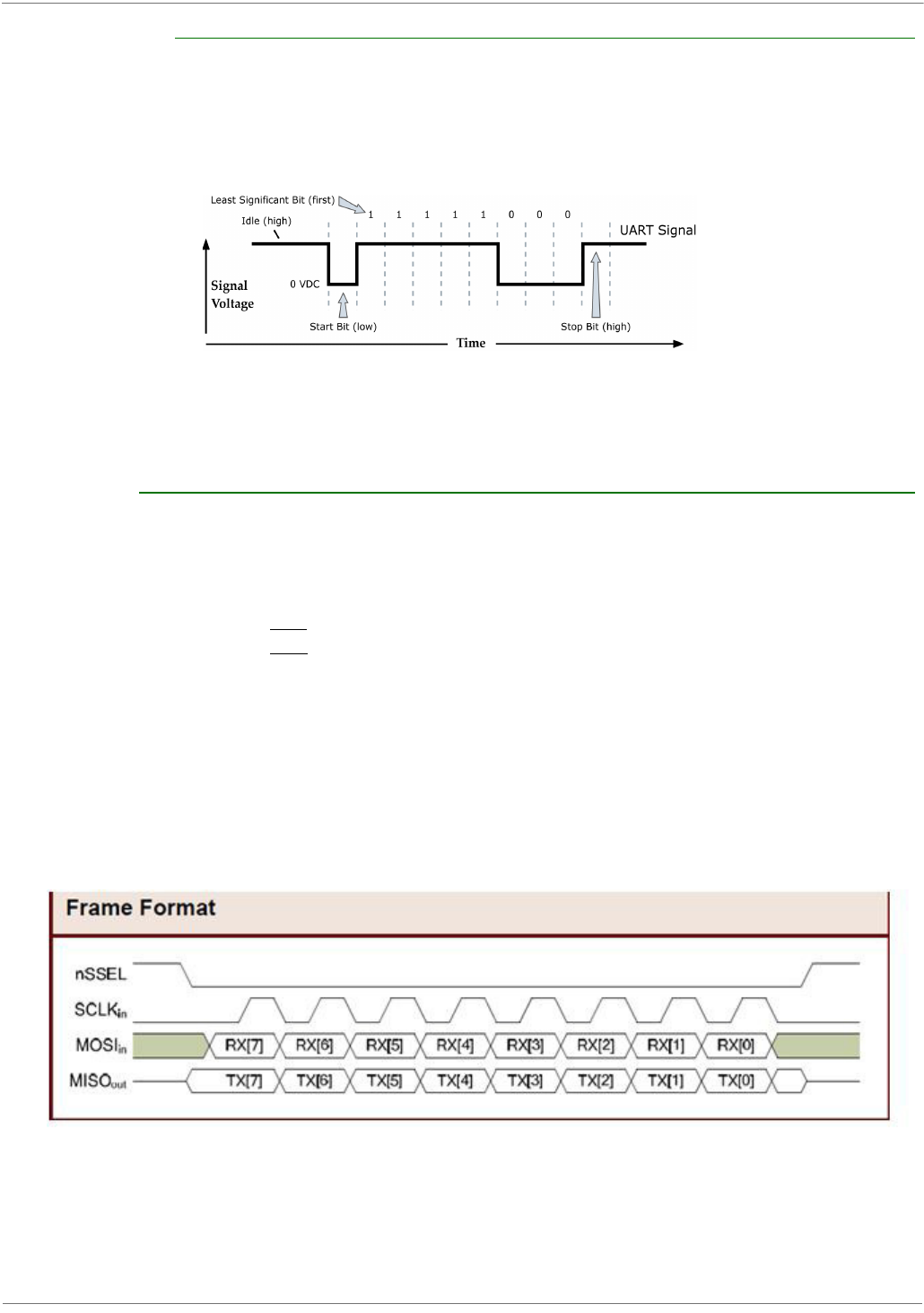
XBee‐PRO®900HP/XBee‐PRO®XSCRFModules
©2012DigiInternational,Inc. 22
Serial Data
Data enters the module UART through the DIN (pin 3) as an asynchronous serial signal. The signal should
idle high when no data is being transmitted.
Each data byte consists of a start bit (low), 8 data bits (least significant bit first) and a stop bit (high). The
following figure illustrates the serial bit pattern of data passing through the module.
UARTdatapacket0x1F(decimalnumberʺ31ʺ)astransmittedthroughtheRFmodule
ExampleDataFormatis8‐N‐1(bits‐parity‐#ofstopbits)
Serial communications depend on the two UARTs (the microcontroller's and the RF module's) to be
configured with compatible settings (baud rate, parity, start bits, stop bits, data bits).
The UART baud rate, parity, and stop bits settings on the XBee module can be configured with the BD, NB,
and SB commands respectively. See the command table in chapter 10 for details.
SPI Communications
The XBee modules support SPI communications in slave mode. Slave mode receives the clock signal and data
from the master and returns data to the master. The SPI port uses the following signals on the XBee:
• SPI_MOSI (Master Out, Slave In) - inputs serial data from the master
• SPI_MISO (Master In, Slave Out) - outputs serial data to the master
• SPI_SCLK (Serial Clock) - clocks data transfers on MOSI and MISO
•SPI_SSEL
(Slave Select) - enables serial communication with the slave
•SPI_ATTN
(Attention) - alerts the master that slave has data queued to send. The XBee mod-
ule will assert this pin as soon as data is available to send to the SPI master and it will remain
asserted until the SPI master has clocked out all available data.
In this mode, the following apply:
• SPI Clock rates up to 3.5 MHz are possible.
• Data is MSB first
• Frame Format mode 0 is used. This means CPOL=0 (idle clock is low) and CPHA=0 (data is
sampled on the clock’s leading edge). Mode 0 is diagramed below.
• SPI port is setup for API mode and is equivalent to AP=1.
FrameFormatforSPICommunications
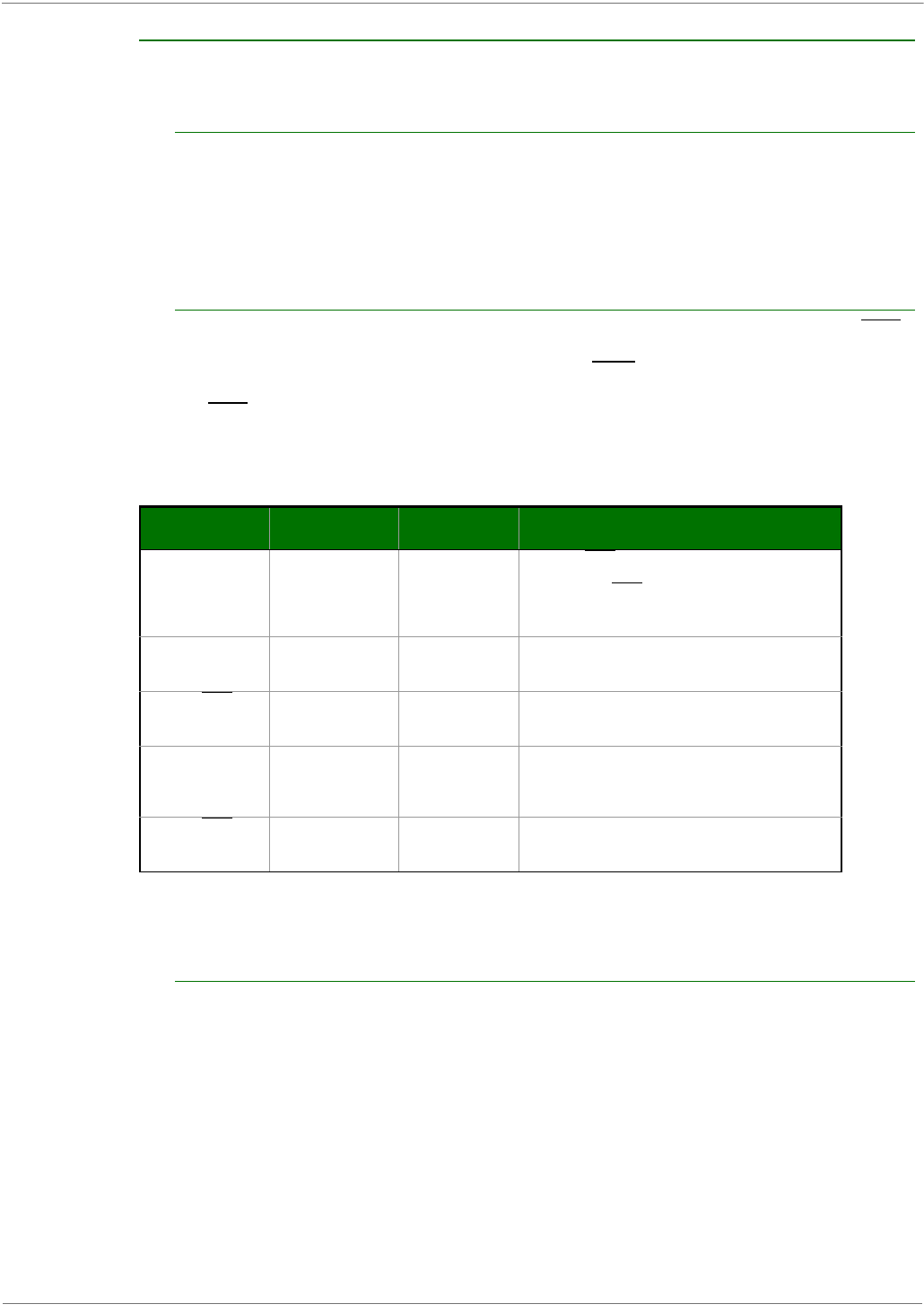
XBee‐PRO®900HP/XBee‐PRO®XSCRFModules
©2012DigiInternational,Inc. 23
SPI Operation
This section specifies how SPI is implemented on the XBee, what the SPI signals are, and how full duplex
operations work.
XBee Implementation of SPI
The module operates as a SPI slave only. This means that an external master will provide the clock and will
decide when to send. The XBee-PRO 900HP supports an external clock rate of up to 3.5 Mbps.
Data is transmitted and received with most significant bit first using SPI mode 0. This means the CPOL and
CPHA are both 0. Mode 0 was chosen because it's the typical default for most microcontrollers and would
simplify configuration of the master. Further information on Mode 0 is not included in this manual, but is well-
documented on the internet.
SPI Signals
The official specification for SPI includes the four signals SPI_MISO, SPI_MOSI, SPI_CLK, and SPI_SSEL.
Using only these four signals, the master cannot know when the slave needs to send and the SPI slave cannot
transmit unless enabled by the master. For this reason, the SPI_ATTN signal is available in the design. This
allows the module to alert the SPI master that it has data to send. In turn, the SPI master is expected to
assert SPI_SSEL and start SPI_CLK, unless these signals are already asserted and active respectively. This,
in turn, allows the XBee module to send data to the master.
The table below names the SPI signals and specifies their pinouts. It also describes the operation of each pin:
Note: By default, the inputs have pull-up resistors enabled. See the PR command to disable the pull-up
resistors. When the SPI pins are not connected but the pins are configured for SPI operation, then the pull-ups
are needed for proper UART operation.
Full Duplex Operation
SPI on XBee requires usage of API mode (without escaping) to packetize data. However, by design, SPI is a
full duplex protocol, even when data is only available in one direction. This means that whenever data is
received, it will also transmit, and that data will normally be invalid. Likewise, whenever data is transmitted,
invalid data will probably be received. The means of determining whether or not received data is invalid is by
packetizing the data with API packets.
SPI allows for valid data from the slave to begin before, at the same time, or after valid data begins from the
master. When the master is sending data to the slave and the slave has valid data to send in the middle of
receiving data from the master, this allows a true full duplex operation where data is valid in both directions
for a period of time. Not only must the master and the slave both be able to keep up with the full duplex
operation, but both sides must honor the protocol as specified.
An example follows to more fully illustrate the SPI interface while valid data is being sent in both directions.
Signal Name Pin Number Applicable AT
Command Description
SPI_MISO
(Master In, Slave out) 4ATP2
When SPI_SSEL is asserted (low) and SPI_CLK is active,
the module outputs the data on this line at the SPI_CLK
rate. When SPI_SSEL is de-asserted (high), this output
should be tri-stated such that another slave device can
drive the line.
SPI_MOSI
(Master out, Slave in) 11 ATD4
The SPI master outputs data on this line at the SPI_CLK
rate after it selects the desired slave. When the module is
configured for SPI operations, this pin is an input.
SPI_SSEL
(Slave Select)
(Master out, Slave in)
17 ATD3
The SPI master outputs a low signal on this line to select
the desired slave. When the module is configured for SPI
operations, this pin is an input.
SPI_CLK
(Clock)
(Master out, Slave in)
18 ATD2
The SPI master outputs a clock on this pin, and the rate
must not exceed the maximum allowed, 3.5 Mbps. When
the module is configured for SPI operations, this pin is an
input.
SPI_ATTN
(Attention)
(Master in, Slave out)
19 ATD1
The module asserts this pin low when it has data to send to
the SPI master. When this pin is configured for SPI
operations, it is an output (not tri-stated).

XBee‐PRO®900HP/XBee‐PRO®XSCRFModules
©2012DigiInternational,Inc. 24
Clk ___||||||||||||||||||||||||||||||||||||||||||||||||||______________________
MOSI XXXVVVVVVVVVVVVVVVVVVVVVVVVVVVVVVVVVVIIIIIIIIIIIIIIIXXXXXXXXXXX
MISO XXXIIIIIIIIIIIIIIIIIIIIIIIIIIIIVVVVVVVVVVVVVVVVVVVVVVVVVVIIIIIXXXXXXXX
SSEL ---________________________________________________-----------------
ATTN --------------------------________________________________-----------------
In the above (character oriented) timing diagram the notations mean the following:
___ indicates a low voltage signal
----- indicates a high voltage signal
||| indicates an oscillating clock
XXX indicates don't care data that will not be processed
VVV indicates valid data that should be processed
IIIII indicates invalid data that should be discarded
Low Power Operation
In general, sleep modes work the same on SPI as they do on UART. However, due to the addition of SPI
mode, there is the option of another sleep pin, as described below:
By default, DIO8 (SLEEP_REQUEST) is configured as a peripheral and is used for pin sleep to awaken and to
sleep the radio. This applies regardless of the selected serial interface (UART or SPI).
However, if SLEEP_REQUEST is not configured as a peripheral and SPI_SSEL is configured as a peripheral,
then pin sleep is controlled by SPI_SSEL rather than by SLEEP_REQUEST. Asserting SPI_SSEL by driving it low
either awakens the radio or keeps it awake. Negating SPI_SSEL by driving it high puts the radio to sleep.
Using SPI_SSEL for two purposes (to control sleep and to indicate that the SPI master has selected a
particular slave device) has the advantage of requiring one less physical pin connection to implement pin sleep
on SPI. It has the disadvantage of putting the radio to sleep whenever the SPI master negates SPI_SSEL
(meaning time will be lost waiting for the device to wake), even if that wasn't the intent. Therefore, if the user
has full control of SPI_SSEL so that it can control pin sleep, whether or not data needs to be transmitted, then
sharing the pin may be a good option in order to make the SLEEP_REQUEST pin available for another purpose.
If the radio is one of multiple slaves on the SPI, then the radio would sleep while the SPI master talks to the
other slave, but this is acceptable in most cases.
If neither pin is configured as a peripheral, then the radio stays awake, being unable to sleep in SM1 mode.
Configuration
The three considerations for configuration are:
•How is the serial port selected? (I.e. Should the UART or the SPI port be used?)
•If the SPI port is used, what should be the format of the data in order to avoid processing invalid
characters while transmitting?
•What SPI options need to be configured?
Serial Port Selection
In the default configuration the UART and SPI ports will both be configured for serial port operation.
If both interfaces are configured, serial data will go out the UART until the SPI_SSEL signal is asserted.
Thereafter, all serial communications will operate on the SPI interface.
If only the UART is enabled, then only the UART will be used, and SPI_SSEL will be ignored. If only the SPI is
enabled, then only the SPI will be used.
If neither serial port is enabled, the module will not support serial operations and all communications must
occur over the air. All data that would normally go to the serial port is discarded.

XBee‐PRO®900HP/XBee‐PRO®XSCRFModules
©2012DigiInternational,Inc. 25
Forcing UART Operation
In the rare case that a module has been configured with only the SPI enabled and no SPI master is available
to access the SPI slave port, the module may be recovered to UART operation by holding DIN / CONFIG low at
reset time. As always, DIN/CONFIG forces a default configuration on the UART at 9600 baud and it will bring
up the module in command mode on the UART port. Appropriate commands can then be sent to the module to
configure it for UART operation. If those parameters are written, then the module will come up with the UART
enabled, as desired on the next reset.
SPI Port Selection
SPI mode can be forced by holding DOUT/DIO13 (pin 2) low while resetting the module until SPI_nATTN
asserts. By this means, the XBee module will disable the UART and go straight into SPI communication mode.
Once configuration is completed, a modem status frame is queued by the module to the SPI port which will
cause the SPI_nATTN line to assert. The host can use this to determine that the SPI port has been configured
properly. This method internally forces the configuration to provide full SPI support for the following
parameters:
•D1 (note this parameter will only be changed if it is at a default of zero when method is invoked)
•D2
•D3
•D4
•P2.
As long as a WR command is not issued, these configuration values will revert back to previous values after a
power on reset. If a WR command is issued while in SPI mode, these same parameters will be written to flash.
After a reset, parameters that were forced and then written to flash become the mode of operation. If the
UART is disabled and the SPI is enabled in the written configuration, then the module will come up in SPI
mode without forcing it by holding DOUT low. If both the UART and the SPI are enabled at the time of reset,
then output will go to the UART until the host sends the first input. If that first input comes on the SPI port,
then all subsequent output will go to the SPI port and the UART will be disabled. If the first input comes on the
UART, then all subsequent output will go to the UART and the SPI will be disabled.
When the slave select (SPI_nSSEL) signal is asserted by the master, SPI transmit data is driven to the output
pin SPI_MISO, and SPI data is received from the input pin SPI_MOSI. The SPI_nSSEL pin has to be asserted
to enable the transmit serializer to drive data to the output signal SPI_MISO. A falling edge on SPI_nSSEL
causes the SPI_MISO line to be tri-stated such that another slave device can drive it, if so desired.
If the output buffer is empty, the SPI serializer transmits the last valid bit repeatedly, which may be either
high or low. Otherwise, the module formats all output in API mode 1 format, as described in chapter 7. The
attached host is expected to ignore all data that is not part of a formatted API frame.
Data Format
The SPI will only operate in API mode 1. Neither transparent mode nor API mode 2 (which escapes control
characters) will be supported. This means that the AP configuration only applies to the UART and will be
ignored while using the SPI.
SPI Parameters
Most host processors with SPI hardware allow the bit order, clock phase and polarity to be set. For
communication with all XBee radios the host processor must set these options as follows:
•Bit Order - send MSB first
•Clock Phase (CPHA) - sample data on first (leading) edge
•Clock Polarity (CPOL) - first (leading) edge rises
This is SPI Mode 0 and MSB first for all XBee radios. Mode 0 means that data is sampled on the leading edge
and that the leading edge rises. MSB first means that bit 7 is the first bit of a byte sent over the interface.

XBee‐PRO®900HP/XBee‐PRO®XSCRFModules
©2012DigiInternational,Inc. 26
Serial Buffers
To enable the UART port, DIN and DOUT must be configured as peripherals. To enable the SPI port, SPI_MISO,
SPI_MOSI, SPI_SSEL, and SPI_CLK must be enabled as peripherals. If both ports are enabled then output will
go to the UART until the first input on SPI.
When both the UART and SPI ports are enabled on power-up, all serial data will go out the UART. But, as soon
as input occurs on either port, that port is selected as the active port and no input or output will be allowed on
the other port until the next reset of the module.
If the configuration is changed so that only one port is configured, then that port will be the only one enabled
or used. If the parameters are written with only one port enabled, then the port that is not enabled will not
even be used temporarily after the next reset.
If both ports are disabled on reset, the UART will be used in spite of the wrong configuration so that at least
one serial port will be operational.
Serial Receive Buffer
When serial data enters the RF module through the DIN Pin (or the MOSI pin), the data is stored in the
serial receive buffer until it can be processed. Under certain conditions, the module may not be able to
process data in the serial receive buffer immediately. If large amounts of serial data are sent to the module
such that the serial receive buffer would overflow, then the new data will be discarded. If the UART is in
use, this can be avoided by the host side honoring CTS flow control.
If the SPI is the serial port, no hardware flow control is available. It is the user's responsibility to ensure
that receive buffer is not overflowed. One reliable strategy is to wait for a TX_STATUS response after each
frame sent to ensure that the module has had time to process it.
Serial Transmit Buffer
When RF data is received, the data is moved into the serial transmit buffer and sent out the UART or SPI
port. If the serial transmit buffer becomes full and system buffers are also full, then the entire RF data
packet is dropped. Whenever data is received faster than it can be processed and transmitted out the serial
port, there is a potential of dropping data.
UART Flow Control
The RTS and CTS module pins can be used to provide RTS and/or CTS flow control. CTS flow control provides
an indication to the host to stop sending serial data to the module. RTS flow control allows the host to signal
the module to not send data in the serial transmit buffer out the UART. RTS and CTS flow control are enabled
using the D6 and D7 commands. Please note that serial port flow control is not possible when using the SPI
port.
CTS Flow Control
If CTS flow control is enabled (D7 command), when the serial receive buffer is 17 bytes away from being
full, the module de-asserts CTS (sets it high) to signal to the host device to stop sending serial data. CTS is
re-asserted after the serial receive buffer has 34 bytes of space. See FT for the buffer size.
RTS Flow Control
If RTS flow control is enabled (D6 command), data in the serial transmit buffer will not be sent out the
DOUT pin as long as RTS is de-asserted (set high). The host device should not de-assert RTS for long
periods of time to avoid filling the serial transmit buffer. If an RF data packet is received, and the serial
transmit buffer does not have enough space for all of the data bytes, the entire RF data packet will be
discarded.
The UART Data Present Indicator is a useful feature when using RTS flow control. When enabled, the DIO1
line asserts (low asserted) when UART data is queued to be transmitted from the module. See the D1 com-
mand in the Command Reference Tables for more information.
Note: If the XBee is sending data out the UART when RTS is de-asserted (set high), the XBee could send
up to 5 characters out the UART or SPI port after RTS is de-asserted.
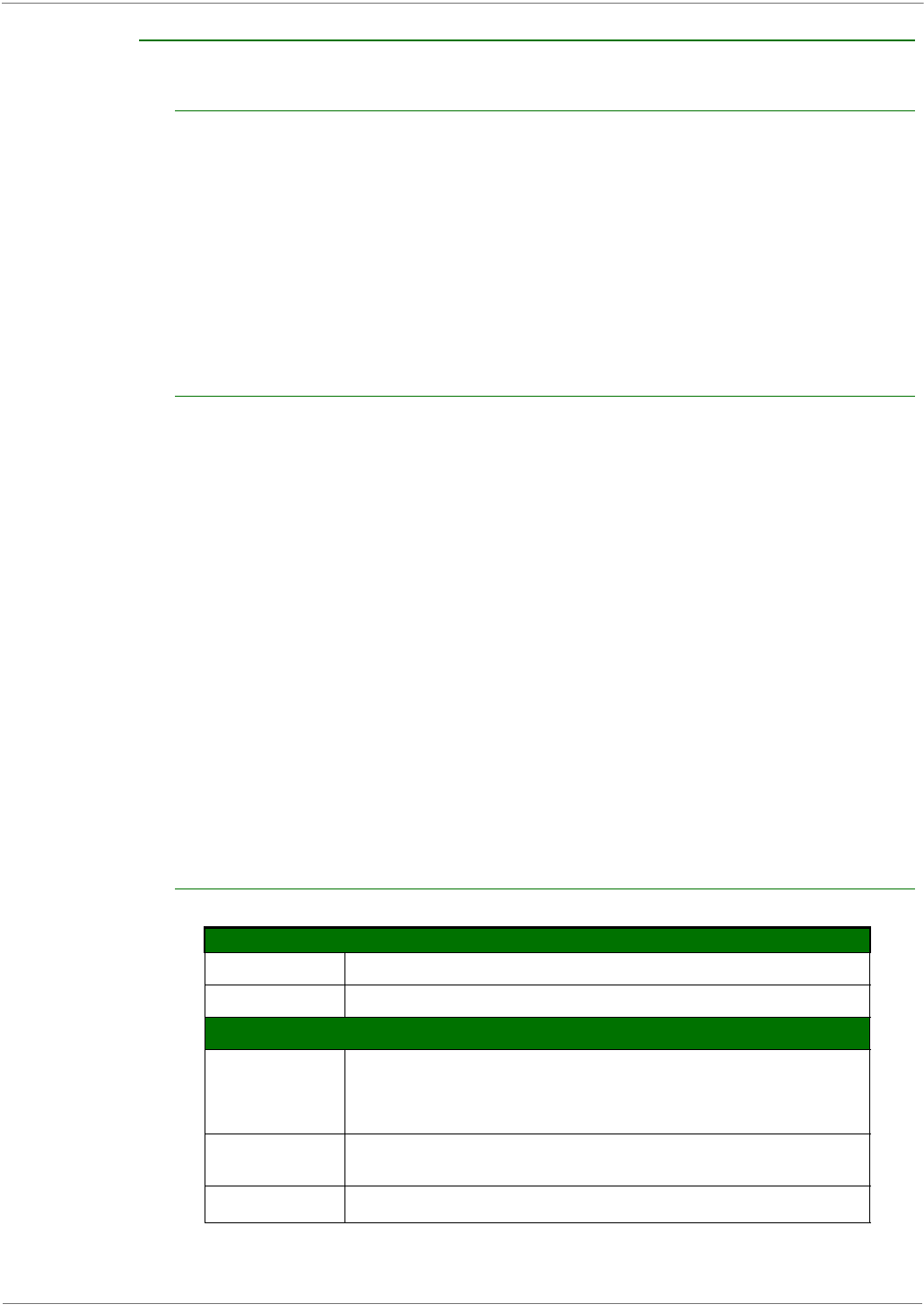
XBee‐PRO®900HP/XBee‐PRO®XSCRFModules
©2012DigiInternational,Inc. 27
Serial Interface Protocols
The XBee modules support both transparent and API (Application Programming Interface) serial interfaces.
Transparent Operation - UART
When operating in transparent mode, the modules act as a serial line replacement. All UART data received
through the DIN pin is queued up for RF transmission. When RF data is received, the data is sent out
through the serial port. The module configuration parameters are configured using the AT command mode
interface. Please note that transparent operation is not provided when using the SPI.
Data is buffered in the serial receive buffer until one of the following causes the data to be packetized and
transmitted:
•No serial characters are received for the amount of time determined by the RO (Packetization Time-
out) parameter. If RO = 0, packetization begins when a character is received.
•The Command Mode Sequence (GT + CC + GT) is received. Any character buffered in the serial
receive buffer before the sequence is transmitted.
•The maximum number of characters that will fit in an RF packet is received. See the NP parameter.
API Operation
API operation is an alternative to transparent operation. The frame-based API extends the level to which a
host application can interact with the networking capabilities of the module. When in API mode, all data
entering and leaving the module is contained in frames that define operations or events within the module.
Transmit Data Frames (received through the serial port) include:
•RF Transmit Data Frame
•Command Frame (equivalent to AT commands)
Receive Data Frames (sent out the serial port) include:
•RF-received data frame
•Command response
•Event notifications such as reset, etc.
The API provides alternative means of configuring modules and routing data at the host application layer. A
host application can send data frames to the module that contain address and payload information instead
of using command mode to modify addresses. The module will send data frames to the application
containing status packets; as well as source, and payload information from received data packets.
The API operation option facilitates many operations such as the examples cited below:
-> Transmitting data to multiple destinations without entering Command Mode
-> Receive success/failure status of each transmitted RF packet
-> Identify the source address of each received packet
A Comparison of Transparent and API Operation
The following table compares the advantages of transparent and API modes of operation:
Transparent Operation Features
Simple Interface All received serial data is transmitted unless the module is in command mode.
Easy to support It is easier for an application to support transparent operation and command mode
API Operation Features
Easy to manage data
transmissions to multiple
destinations
Transmitting RF data to multiple remotes only requires changing the address in the API frame. This
process is much faster than in transparent operation where the application must enter AT command
mode, change the address, exit command mode, and then transmit data.
Each API transmission can return a transmit status frame indicating the success or reason for
failure.
Received data frames
indicate the sender's
address
All received RF data API frames indicate the source address.
Advanced addressing
support
API transmit and receive frames can expose addressing fields including source and destination
endpoints, cluster ID and profile ID.
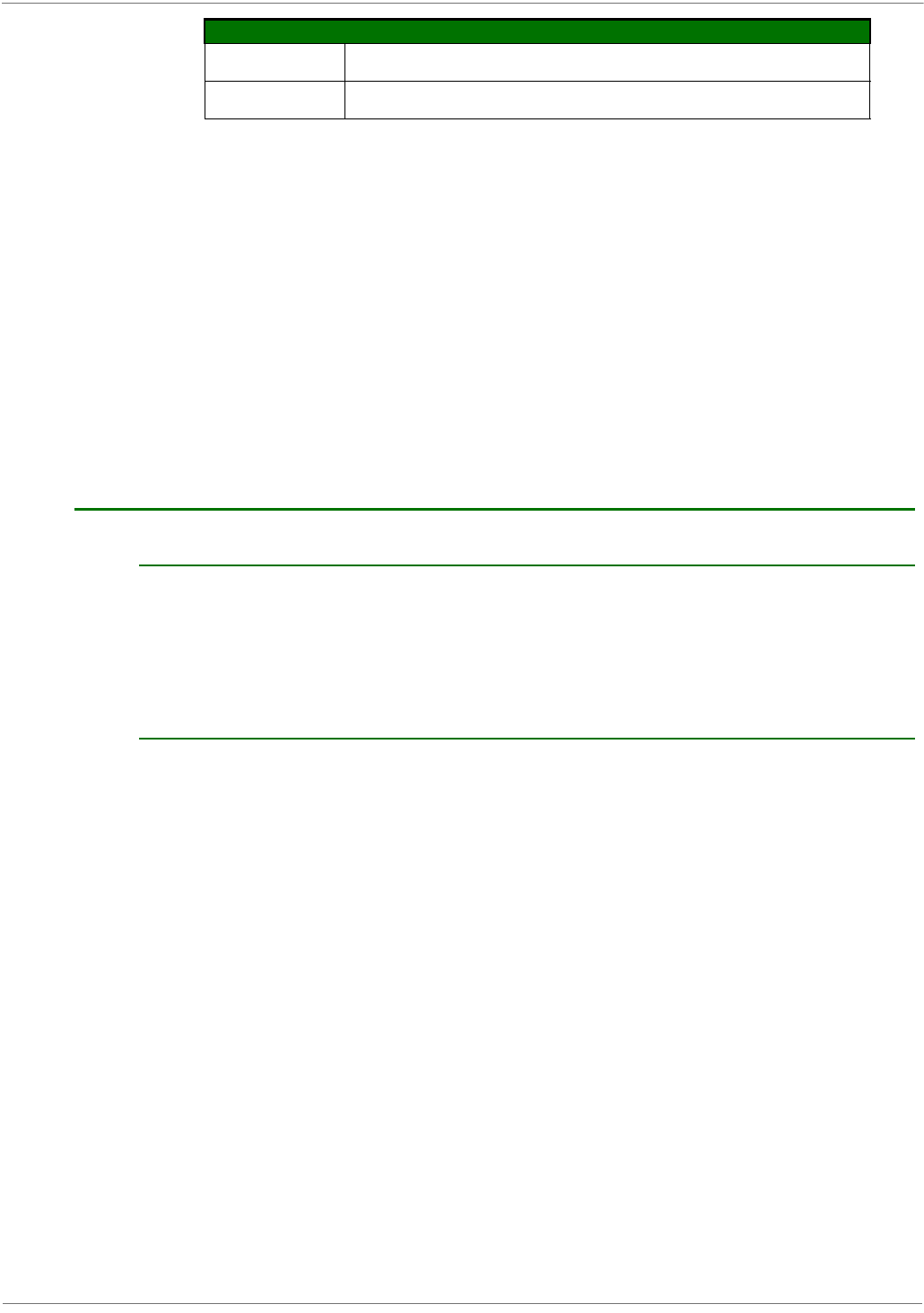
XBee‐PRO®900HP/XBee‐PRO®XSCRFModules
©2012DigiInternational,Inc. 28
As a general rule of thumb, API mode is recommended when a device:
• sends RF data to multiple destinations
• sends remote configuration commands to manage devices in the network
• receives RF data packets from multiple devices, and the application needs to know which device sent
which packet
• must support multiple endpoints, cluster IDs, and/or profile IDs
• uses the Device Profile services.
API mode is required when:
• receiving I/O samples from remote devices
• using SPI for the serial port
If the above conditions do not apply (e.g. a sensor node, router, or a simple application), then transparent
operation might be suitable. It is acceptable to use a mixture of devices running API mode and transparent
mode in a network.
Modes of Operation
Description of Modes
When not transmitting data, the RF module is in Receive Mode. The module shifts into the other modes of
operation under the following conditions:
•Transmit Mode (Serial data in the serial receive buffer is ready to be packetized)
•Sleep Mode
•Command Mode (Command Mode Sequence is issued, not available when using the SPI port)
Transmit Mode
When serial data is received and is ready for packetization, the RF module will attempt to transmit the data.
The destination address determines which node(s) will receive and send the data.
In the diagram below, route discovery applies only to DigiMesh transmissions. The data will be transmitted
once a route is established. If route discovery fails to establish a route, the packet will be discarded.
Advanced networking
diagnostics
API frames can provide indication of IO samples from remote devices, and node identification
messages.
Remote Configuration Set / read configuration commands can be sent to remote devices to configure them as needed
using the API.
Transparent Operation Features
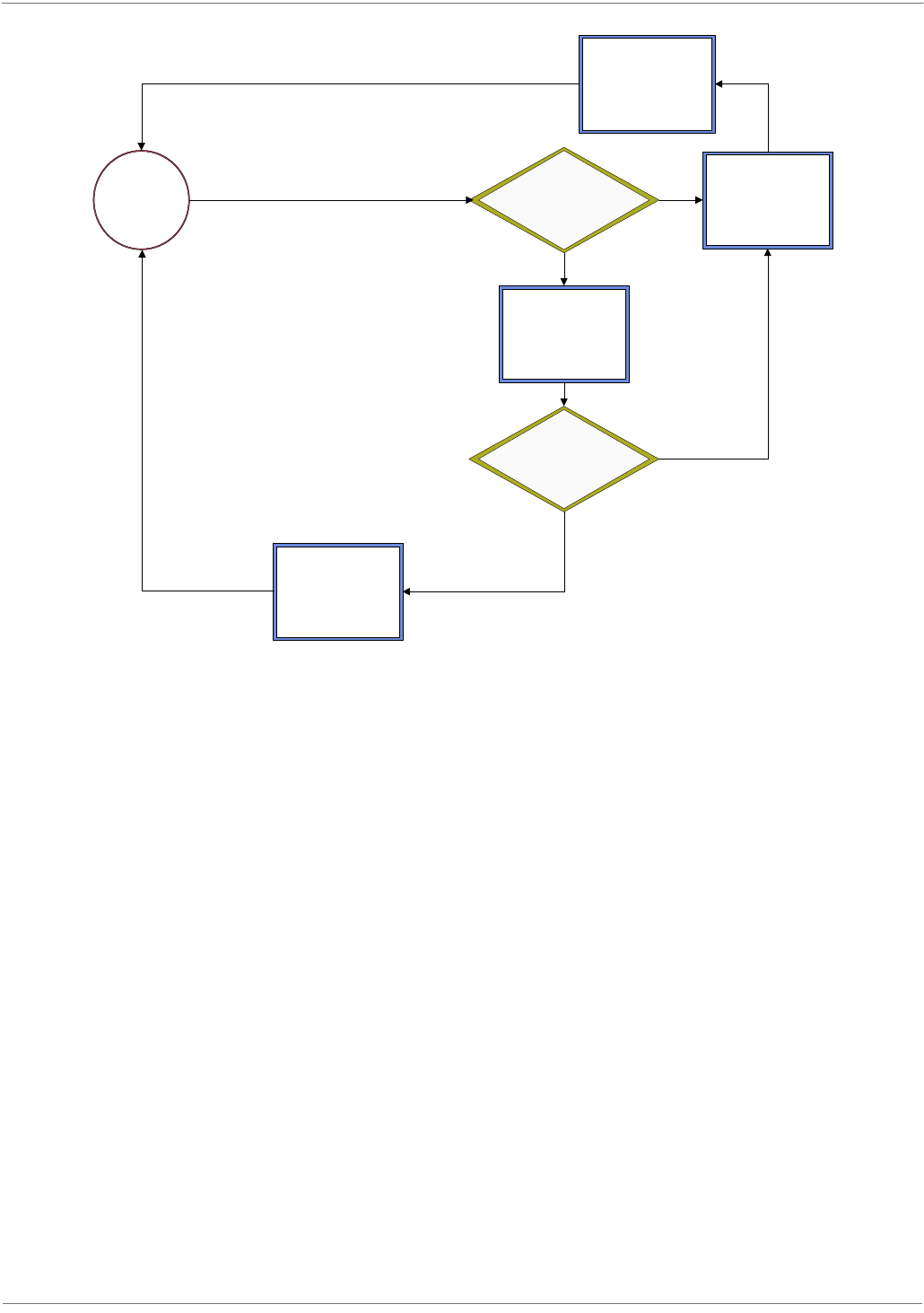
XBee‐PRO®900HP/XBee‐PRO®XSCRFModules
©2012DigiInternational,Inc. 29
TransmitModeSequence
Data Discarded
Successful
Transmission
New
Transmission
Route Known?
Route Discovered?
Route Discovery
Transmit Data
Idle Mode
No
Yes
No
Yes
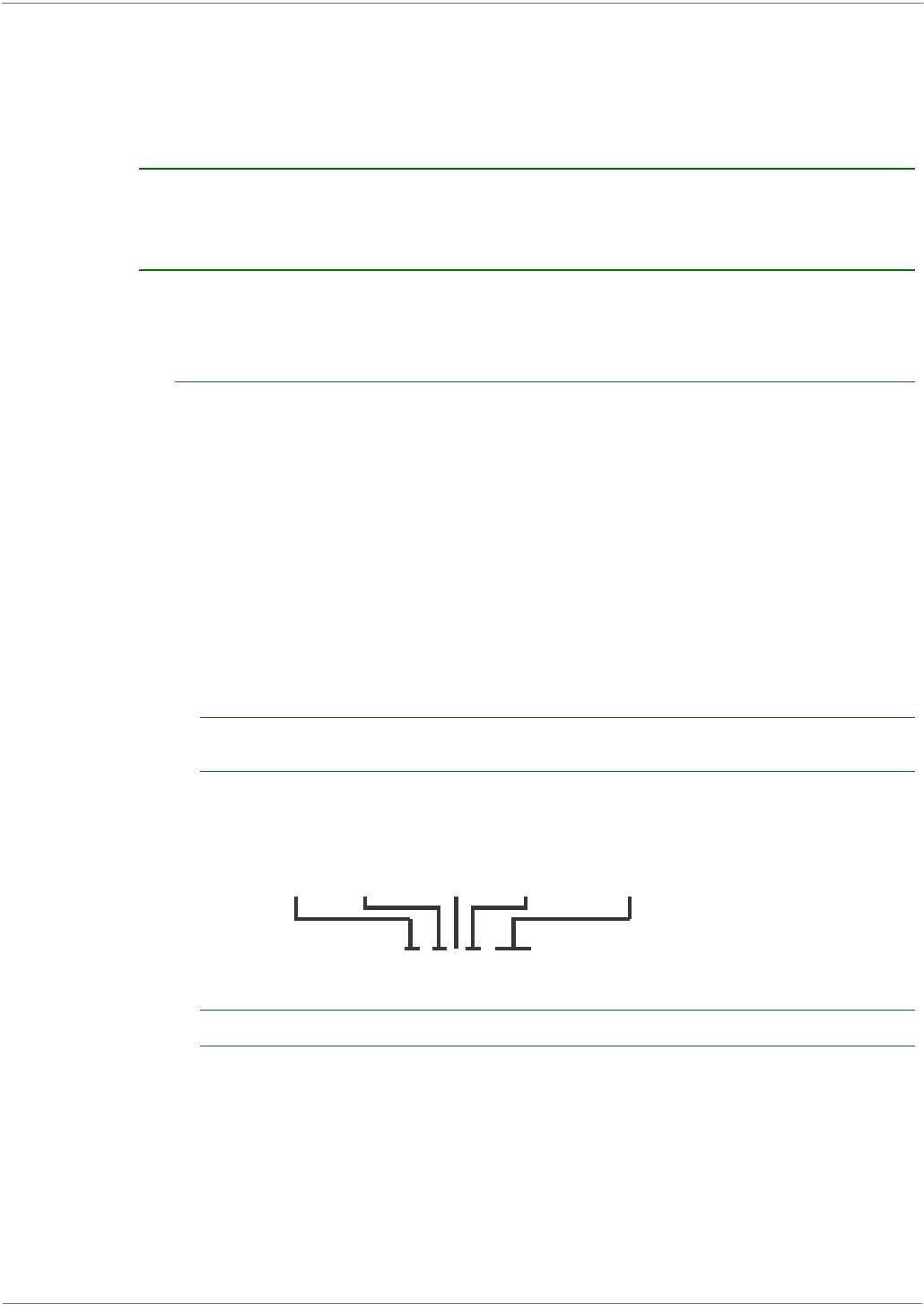
XBee‐PRO®900HP/XBee‐PRO®XSCRFModules
©2012DigiInternational,Inc. 30
When DigiMesh data is transmitted from one node to another, a network-level acknowledgement is
transmitted back across the established route to the source node. This acknowledgement packet indicates to
the source node that the data packet was received by the destination node. If a network acknowledgement is
not received, the source node will re-transmit the data.
See Data Transmission and Routing in chapter 4 for more information.
Receive Mode
If a valid RF packet is received, the data is transferred to the serial transmit buffer. This is the default mode
for the XBee radio.
Command Mode
To modify or read RF Module parameters, the module must first enter into Command Mode - a state in which
incoming serial characters are interpreted as commands. The API Mode section in Chapter 7 describes an
alternate means for configuring modules which is available with the SPI, as well as over the UART with code.
AT Command Mode
To Enter AT Command Mode:
Send the 3-character command sequence “+++” and observe guard times before and after the com-
mand characters. [Refer to the “Default AT Command Mode Sequence” below.]
Default AT Command Mode Sequence (for transition to Command Mode):
•No characters sent for one second [GT (Guard Times) parameter = 0x3E8]
•Input three plus characters (“+++”) within one second [CC (Command Sequence Character) parame-
ter = 0x2B.]
•No characters sent for one second [GT (Guard Times) parameter = 0x3E8]
Once the AT command mode sequence has been issued, the module sends an "OK\r" out the UART pin. The
"OK\r" characters can be delayed if the module has not finished transmitting received serial data.
When command mode has been entered, the command mode timer is started (CT command), and the
module is able to receive AT commands on the UART port.
All of the parameter values in the sequence can be modified to reflect user preferences.
NOTE: Failure to enter AT Command Mode is most commonly due to baud rate mismatch. By default,
the BD (Baud Rate) parameter = 3 (9600 bps).
To Send AT Commands:
Send AT commands and parameters using the syntax shown below.
SyntaxforsendingATCommands
To read a parameter value stored in the RF module’s register, omit the parameter field.
The preceding example would change the RF module Destination Address (Low) to “0x1F”. To store the new
value to non-volatile (long term) memory, send the WR (Write) command. This allows modified parameter
values to persist in the module’s registry after a reset. Otherwise, parameters are restored to previously
saved values after the module is reset.
Example: ATDL 1F<CR>
“AT”
Prex
ASCII
Command
Space
(optional)
Parameter
(optional, HEX)
Carriage
Return

XBee‐PRO®900HP/XBee‐PRO®XSCRFModules
©2012DigiInternational,Inc. 31
Command Response
When a command is sent to the module, the module will parse and execute the command. Upon
successful execution of a command, the module returns an “OK” message. If execution of a command
results in an error, the module returns an “ERROR” message.
Applying Command Changes
Any changes made to the configuration command registers through AT commands will not take effect until
the changes are applied. For example, sending the BD command to change the baud rate will not change
the actual baud rate until changes are applied. Changes can be applied in one of the following ways:
•The AC (Apply Changes) command is issued.
•AT command mode is exited.
To Exit AT Command Mode:
1. Send the ATCN (Exit Command Mode) command (followed by a carriage return).
[OR]
2. If no valid AT Commands are received within the time specified by CT (Command Mode Timeout)
Command, the RF module automatically returns to Idle Mode.
For an example of programming the RF module using AT Commands and descriptions of each config-
urable parameter, please see the Command Reference Table chapter.
Sleep Mode
Sleep modes allow the RF module to enter states of low power consumption when not in use. XBee RF
modules support both pin sleep (sleep mode entered on pin transition) and cyclic sleep (module sleeps for a
fixed time). XBee sleep modes are discussed in detail in chapter 5.

XBee‐PRO®900HP/XBee‐PRO®XSCRFModules
©2012DigiInternational,Inc. 32
3.NetworkingMethods
This chapter will attempt to explain the basic layers and the three networking methods available on the XBee-PRO®
900HP RF modules, building from the simplest to the most complex.
MAC/PHY Basics
PHY is short for Physical Layer. It is responsible for managing the hardware that modulates and demodulates the RF bits.
MAC stands for Media Access Layer. The MAC layer is responsible for sending and receiving RF frames. As part of each
packet, there is a MAC layer data header that has addressing information as well as packet options. This layer
implements packet acknowledgements (ACKs), packet tracking to eliminate duplicates, etc.
When a radio is transmitting, it cannot receive packets. When a radio is not sleeping, it is either receiving or
transmitting. There are no beacons or master/slave requirements in the design of the MAC/PHY.
This radio uses a patented method for scanning and finding a transmission. When a radio transmits, it sends out a
repeated preamble pattern, a MAC header, optionally a network header, followed then by packet data. A receiving radio
is able to scan all the channels to find a transmission during the preamble, then once it has locked into that it will
attempt to receive the whole packet.
Related parameters: CM, HP, ID, PL, RR, MT
The Preamble ID (HP) can be changed to make it so a group of radios will not interfere with another group of radios
in the same vicinity. The advantage of changing this parameter is that a receiving radio will not even lock into a
transmission of a transmitting radio that does not have the same ID.
The Network ID (ID) can be changed to further keep radios from interfering with each other. This ID is matched after
the preamble pattern has been matched, and the MAC header has been received. Networks are defined with a
unique network identifier. For modules to communicate they must be configured with the same network identifier.
The ID parameter allows multiple networks to co-exist on the same physical channel.
The Channel Mask (CM) parameter determines the channels that the radio will choose to communicate on. See CM
in the command reference.
Power Level (PL) sets the TX power level. The power level can be reduced from the maximum to reduce current con-
sumption or for testing. This comes at the expense of reduced radio range.
The RR parameter specifies the number of time a sending radio will attempt to get an ACK from a destination radio
when sending a packet.
The MT parameter specifies the number of times that a broadcast packet is repeatedly transmitted. This adds redun-
dancy that improves reliability.
Addressing Basics
Related parameters: SH, SL, DH, DL, TO
64-bit Addresses
Each radio is given a unique IEEE 64-bit address at the factory. This can be read with the SH and SL com-
mands. This is the source address that is returned in API mode of the radio that sent a packet. At this time
addresses are of the form: 0x0013A2XXXXXXXXXX. The first 6 digits are the Digi (MaxStream) OUI. The
broadcast address is 0x000000000000FFFF.
Unicast
To transmit to a specific radio:
• When using transparent mode set DH:DL to the SH:SL of the destination radio.
• For API mode, set the SH:SL address in the 64-bit destination address.
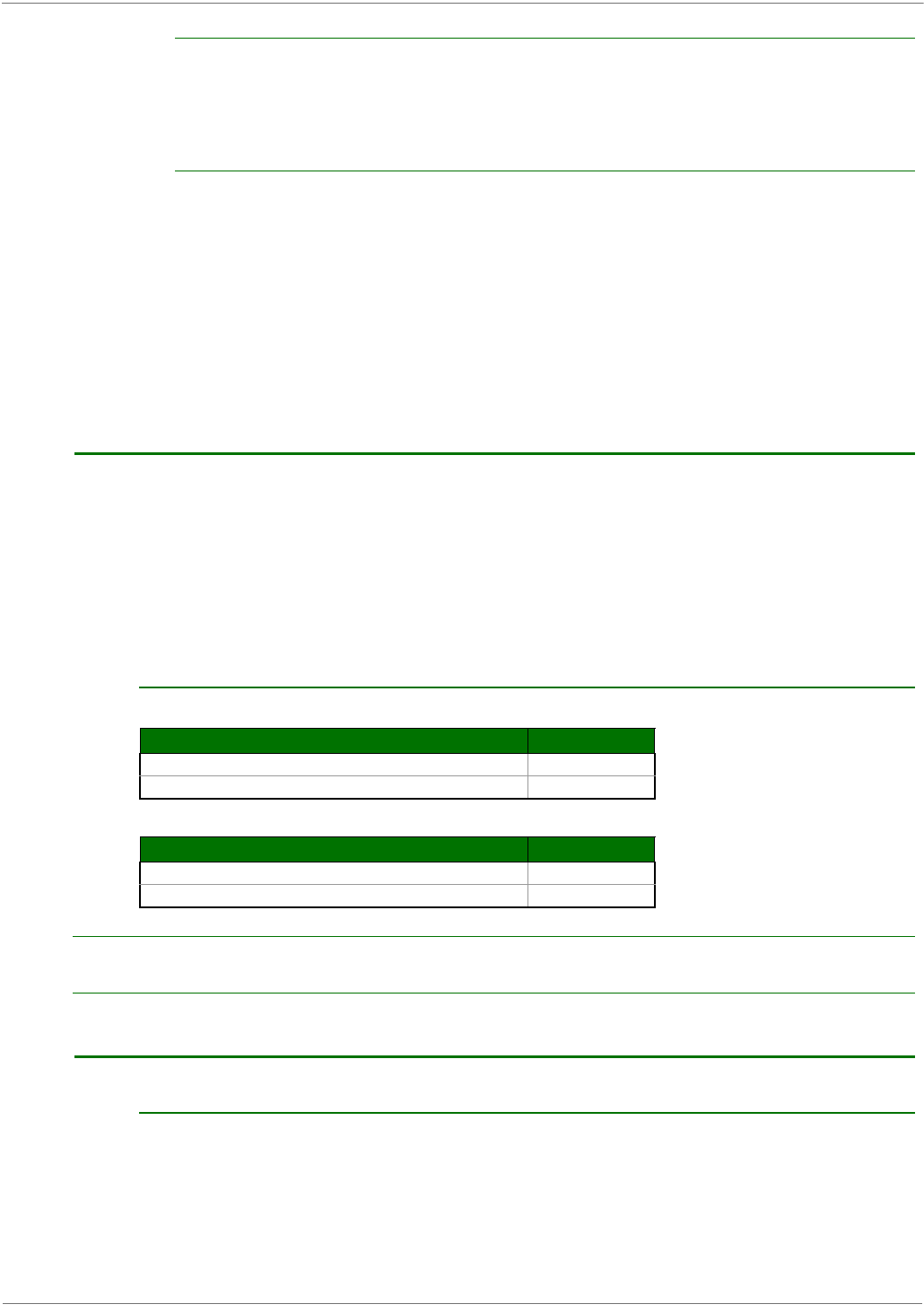
XBee‐PRO®900HP/XBee‐PRO®XSCRFModules
©2012DigiInternational,Inc. 33
Broadcast
To trans m it to all radios :
• For transparent mode set DH:DL to 0x000000000000FFFF, and for API mode set the 64-bit desti-
nation address to 0x000000000000FFFF.
• The scope of the broadcast changes based on the delivery method chosen.
Delivery Method
There are three delivery methods supported by this radio:
• Point to multipoint. (0x40)
• Repeater (Directed broadcast). (0x80)
•DigiMesh. (0xC0)
The TO parameter is the default delivery method used by transparent mode. For API transmissions the
TxOptions API field is used to specify the delivery method. When the TxOptions API field is set to 0, the
value in the TO parameter will also be used by API transmissions.
The three delivery modes are described below:
Point to Point/Multipoint (P2MP)
This delivery mode does not use a network header, only the MAC header. All messages are always sent directly to the
destination. There is no repeating of the packet by other nodes.
A P2MP unicast is only delivered directly to the destination radio, which must be in range of the sending radio. This radio
uses patented technology that allows the destination radio to receive transmissions directed to it, even when there is a
large amount of traffic. This works best when broadcast transmissions are kept to a minimum. A P2MP broadcast
transmission is repeated MT+1 times by the sending node, but is not repeated by nodes which receive it, so like a
unicast transmission, the receiving radio must be in range. All radios that receive a P2MP broadcast transmission will
output the data through the serial port.
Throughput
10 kbps version, 115.2 kbps serial data rate
200 kbps version, 115.2 kbps serial data rate
Note: Data throughput measurements were made setting the serial interface rate to 115200 bps, and measuring the time
to send 100,000 bytes from source to destination. During the test, no route discoveries or failures occurred.
Repeater/Directed Broadcast
Related parameters: CE, NH, NN, BH
Directed broadcast transmissions will be received and repeated by all routers in the network. Because ACKs are not
used the originating node will send the broadcast multiple times. By default a broadcast transmission is sent four
times. Essentially the extra transmissions become automatic retries without acknowledgments. This will result in all
nodes repeating the transmission four times as well. Sending frequent broadcast transmissions can quickly reduce
the available network bandwidth and as such should be used sparingly.
Configuration Data Throughput
Point to point unicast, Encryption Disabled 8.8 kbps
Point to point unicast, Encryption Enabled 8.7 kbps
Configuration Data Throughput
Point to point unicast, Encryption Disabled 105.5 kbps
Point to point unicast, Encryption Enabled 105.4 kbps

XBee‐PRO®900HP/XBee‐PRO®XSCRFModules
©2012DigiInternational,Inc. 34
The MAC layer is the building block that is used to build repeater capability. Repeater mode is implemented with a
network layer header that comes after the MAC layer header in each packet. In this network layer there is additional
packet tracking to eliminate duplicate broadcasts. In this delivery method, unicasts and broadcast packets are both
sent out as broadcasts that are always repeated. All repeated packets are sent to every radio. Broadcast data will be
sent out the serial port of all radios that receive it.
When a unicast is sent, it specifies a destination address in the network header. Only the radio that has the matching
destination address then will send it out the serial port. This is called a directed broadcast. Any node that has a CE
parameter set to route will rebroadcast the packet if its broadcast hops (BH) or broadcast radius values have not
been depleted. If a repeated broadcast has already been seen, the node will ignore it. The NH parameter sets the
maximum number of hops that a broadcast will be repeated. This value is always used, unless a BH value is specified
that is smaller.
By default the CE parameter is set to route all broadcasts. As such, all nodes that receive a repeated packet will
repeat it. By changing the CE parameter, you can limit which nodes repeat packets, which can help dense networks
from becoming overly congested while packets are being repeated.
Transmission timeout calculations for directed broadcast/repeater mode are the same as for DigiMesh, and can be
found below in the DigiMesh section.
DigiMesh Networking
Related Command: MR
In the same manner as the repeater delivery method, DigiMesh builds on P2MP and repeater modes. In DigiMesh,
broadcasts always use repeater delivery method, but unicasts use meshing technologies. In the DigiMesh network
layer, there are additional network layer ACKs and NACKs. Mesh networking allows messages to be routed through
several different nodes to a final destination. DigiMesh firmware allows manufacturers and system integrators to bol-
ster their networks with the self-healing attributes of mesh networking. In the event that one RF connection
between nodes is lost (due to power-loss, environmental obstructions, etc.) critical data can still reach its destina-
tion due to the mesh networking capabilities embedded inside the modules. Note that if you disable network ACKs,
the network will never heal.
DigiMesh Feature Set
DigiMesh contains the following features
• Self-healing
Any node may enter or leave the network at any time without causing the network as a whole to fail.
• Peer-to-peer architecture
No hierarchy and no parent-child relationships are needed.
• Quiet Protocol
Routing overhead will be reduced by using a reactive protocol similar to AODV.
• Route Discovery
Rather than maintaining a network map, routes will be discovered and created only when needed.
• Selective acknowledgements
Only the destination node will reply to route requests.
• Reliable delivery
Reliable delivery of data is accomplished by means of acknowledgements.
• Sleep Modes
Low power sleep modes with synchronized wake are supported with variable sleep and wake times.
Data Transmission and Routing
Unicast Addressing
When transmitting while using DigiMesh Unicast communications, reliable delivery of data is accomplished
using retries and acknowledgements. The number of mesh network retries is determined by the MR (Mesh
Network Retries) parameter. RF data packets are sent up to MR + 1 times across the network route, and
ACKs (acknowledgements) are transmitted by the receiving node upon receipt. If a network ACK is not
received within the time it would take for a packet to traverse the network twice, a retransmission occurs.
Note that when sending a DigiMesh Unicast that both MAC and NWK retries/acknowledgments are used.
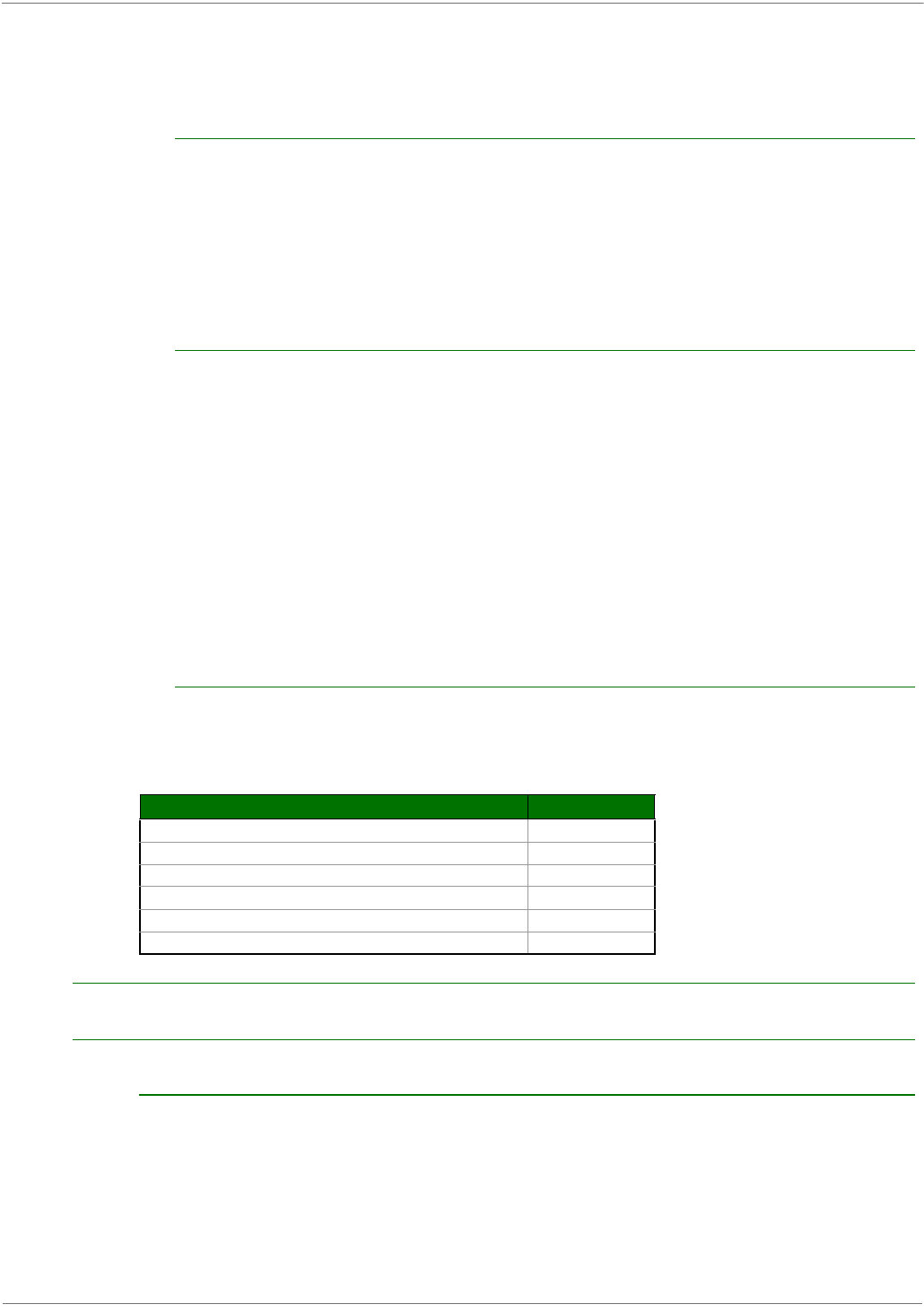
XBee‐PRO®900HP/XBee‐PRO®XSCRFModules
©2012DigiInternational,Inc. 35
MAC retries/acknowledgments are used for transmissions between adjacent nodes in the route. NWK
retries/acknowledgments are used across the entire route.
To send Unicast messages, set the DH and DL on the transmitting module to match the corresponding SH
and SL parameter values on the receiving module.
Routing
A module within a mesh network is able to determine reliable routes using a routing algorithm and table.
The routing algorithm uses a reactive method derived from AODV (Ad-hoc On-demand Distance Vector). An
associative routing table is used to map a destination node address with its next hop. By sending a mes-
sage to the next hop address, either the message will reach its destination or be forwarded to an interme-
diate router which will route the message on to its destination. A message with a broadcast address is
broadcast to all neighbors. All routers receiving the message will rebroadcast the message MT+1 times and
eventually the message will reach all corners of the network. Packet tracking prevents a node from resend-
ing a broadcast message more than MT+1 times.
Route Discovery
If the source node doesn’t have a route to the requested destination, the packet is queued to await a route
discovery (RD) process. This process is also used when a route fails. A route fails when the source node
uses up its network retries without ever receiving an ACK. This results in the source node initiating RD.
RD begins by the source node broadcasting a route request (RREQ). Any router that receives the RREQ that
is not the ultimate destination is called an intermediate node.
Intermediate nodes may either drop or forward a RREQ, depending on whether the new RREQ has a better
route back to the source node. If so, information from the RREQ is saved and the RREQ is updated and
broadcast. When the ultimate destination receives the RREQ, it unicasts a route reply (RREP) back to the
source node along the path of the RREQ. This is done regardless of route quality and regardless of how
many times an RREQ has been seen before.
This allows the source node to receive multiple route replies. The source node selects the route with the
best round trip route quality, which it will use for the queued packet and for subsequent packets with the
same destination address.
Throughput
Throughput in a DigiMesh network can vary by a number of variables, including: number of hops, encryp-
tion enabled/disabled, sleeping end devices, failures/route discoveries. Our empirical testing showed the
following throughput performance in a robust operating environment (low interference).
200 kbps version, 115.2 kbps serial data rate, 100 KB
Note: Data throughput measurements were made setting the serial interface rate to 115200 bps, and measuring the time
to send 100,000 bytes from source to destination. During the test, no route discoveries or failures occurred.
Transmission Timeouts
When a node receives an API TX Request (API configured modules) or an RO timeout occurs (modules configured for
Transparent Mode) the time required to route the data to its destination depends on a number of configured param-
eters, whether the transmission is a unicast or a broadcast, and if the route to the destination address is known.
Timeouts or timing information is provided for the following transmission types:
• Transmitting a broadcast
• Transmitting a unicast with a known route
Configuration Data Throughput
Mesh unicast, 1 hop, Encryption Disabled 91.0 kbps
Mesh unicast, 3 hop, Encryption Disabled 32.5 kbps
Mesh unicast, 6 hop, Encryption Disabled 16.7 kbps
Mesh unicast, 1 hop, Encryption Enabled 89.3 kbps
Mesh unicast, 3 hop, Encryption Enabled 32.2 kbps
Mesh unicast, 6 hop, Encryption Enabled 16.1 kbps

XBee‐PRO®900HP/XBee‐PRO®XSCRFModules
©2012DigiInternational,Inc. 36
• Transmitting a unicast with an unknown route
• Transmitting a unicast with a broken route.
Note: The timeouts in this section are theoretical timeouts and not precisely accurate. The application should pad the
calculated maximum timeouts by a few hundred milliseconds. When using API mode, Tx Status API packets should be the
primary method of determining if a transmission has completed.
Unicast One Hop Time
A building block of many of the calculations presented below is the unicastOneHopTime. As its name indi-
cates, it represents the amount of time it takes to send a unicast transmission between two adjacent
nodes. It is dependent upon the %H setting. It is defined as follows:
unicastOneHopTime=%H
Transmitting a broadcast
A broadcast transmission must be relayed by all routers in the network. The maximum delay would be
when the sender and receiver are on the opposite ends of the network. The NH and %H parameters define
the maximum broadcast delay as follows:
BroadcastTxTime=NH*%8
Transmitting a unicast with a known route
When a route to a destination node is known the transmission time is largely a function of the number of
hops and retries. The timeout associated with a unicast assumes the maximum number of hops is neces-
sary (as specified by NH). The timeout can be estimated in the following manner:
knownRouteUnicast=2*NH*MR*unicastOneHopTime
Transmitting a unicast with an unknown route
If the route to the destination is not known the transmitting module will begin by sending a route discovery.
If the route discovery is successful and a route is found then the data is transmitted. The timeout associ-
ated with the entire operation can be estimated as follows:
unknownRouteUnicast=BroadcastTxTime+NH*unicastOneHopTime +knownRouteUnicast
Transmitting a unicast with a broken route
If the route to a destination node has changed since the last time a route discovery was completed a node
will begin by attempting to send the data along the previous route. After it fails a route discovery will be ini-
tiated and, upon completion of the route discovery, the data will be transmitted along the new route. The
timeout associated with the entire operation can be estimated as follows:
brokenRouteUnicast=BroadcastTxTime+NH*unicastOneHopTime +2*knownRouteUnicast

XBee‐PRO®900HP/XBee‐PRO®XSCRFModules
©2012DigiInternational,Inc. 37
4.SleepMode
A number of low-power modes exist to enable modules to operate for extended periods of time on battery power.
These sleep modes are enabled with the SM command. The sleep modes are characterized as either asynchronous
(SM = 1, 4, 5) or synchronous (SM = 7,8). Asynchronous sleeping modes should not be used in a synchronous
sleeping network, and vice versa.
Asynchronous sleep modes can be used to control the sleep state on a module by module basis. Modules operating
in an asynchronous sleep mode should not be used to route data. Digi strongly encourages users to set asynchro-
nous sleeping modules as non-routing nodes using the CE command. This will prevent the node from attempting to
route data.
The synchronous sleep feature of DigiMesh makes it possible for all nodes in the network to synchronize their sleep
and wake times. All synchronized cyclic sleep nodes enter and exit a low power state at the same time. This forms
a cyclic sleeping network. Nodes synchronize by receiving a special RF packet called a sync message which is sent
by a node acting as a sleep coordinator. A node in the network can become a coordinator through a process called
nomination. The sleep coordinator will send one sync message at the beginning of each wake period. The sync
message is sent as a broadcast and repeated by every node in the network. The sleep and wake times for the entire
network can be changed by locally changing the settings on an individual node. The network will use the most
recently set sleep settings.
Sleep Modes
Normal Mode (SM=0)
Normal mode is the default for a newly powered-on node. In this mode, a node will not sleep. Normal mode
nodes should be mains-powered.
A normal mode module will synchronize to a sleeping network, but will not observe synchronization data
routing rules (it will route data at any time, regardless of the wake state of the network). When synchronized,
a normal node will relay sync messages generated by sleep-compatible nodes but will not generate sync
messages. Once a normal node has synchronized with a sleeping network, it can be put into a sleep-
compatible sleep mode at any time.
Asynchronous Pin Sleep Mode (SM=1)
Pin sleep allows the module to sleep and wake according to the state of the Sleep_RQ pin (pin 9). Pin sleep
mode is enabled by setting the SM command to 1. When Sleep_RQ is asserted (high), the module will finish
any transmit or receive operations and enter a low-power state. The module will wake from pin sleep when
the Sleep_RQ pin is de-asserted (low). When indirect messaging polling is enabled (see the CE command), a
poll will be sent upon waking to the module's parent node as described in the Indirect Messaging and Polling
Section.
Asynchronous Cyclic Sleep Mode (SM=4)
Cyclic sleep allows the module to sleep for a specified time and wake for a short time to poll. Cyclic sleep
mode is enabled by setting the SM command to 4. In cyclic sleep, the module sleeps for a specified time. If
the XBee receives serial or RF data while awake, it will then extend the time before it returns to sleep by the
amount specified by the ST command. Otherwise, it will enter sleep mode immediately. The On_SLEEP line
is asserted (high) when the module wakes, and is de-asserted (low) when the module sleeps. If hardware
flow control is enabled (D7 command), the CTS pin will assert (low) when the module wakes and can receive
serial data, and de-assert (high) when the module sleeps. When indirect messaging polling is enabled (see the
CE command), a poll will be sent upon waking to the module's parent node as described in the Indirect
Messaging and Polling Section.

XBee‐PRO®900HP/XBee‐PRO®XSCRFModules
©2012DigiInternational,Inc. 38
Asynchronous Cyclic Sleep with Pin Wake Up Mode (SM=5)
(SM=5) is similar to both the (SM=1) and (SM=4) modes. When the SLEEP_REQUEST pin is asserted the
module will enter a cyclic sleep mode similar to (SM=4). When the SLEEP_REQUEST pin is de-asserted the
module will immediately wake up. The module will not sleep when the SLEEP_REQUEST pin is de-asserted.
When indirect messaging polling is enabled (see the CE command) upon waking a poll will be sent to the
module's parent node as described in the Indirect Messaging and Polling Section. Polls will also be regularly
sent to the parent while the module is held awake.
Synchronous Sleep Support Mode (SM=7)
A node in synchronous sleep support mode will synchronize itself with a sleeping network but will not itself
sleep. At any time, the node will respond to new nodes which are attempting to join the sleeping network
with a sync message. A sleep support node will only transmit normal data when the other nodes in the
sleeping network are awake. Sleep support nodes are especially useful when used as preferred sleep
coordinator nodes and as aids in adding new nodes to a sleeping network.
Note: Because sleep support nodes do not sleep, they should be mains powered.
Synchronous Cyclic Sleep Mode (SM=8)
A node in synchronous cyclic sleep mode sleeps for a programmed time, wakes in unison with other nodes,
exchanges data and sync messages, and then returns to sleep. While asleep, it cannot receive RF messages
or read commands from the UART port. Generally, sleep and wake times are specified by the SP and ST
respectively of the network’s sleep coordinator. These parameters are only used at start up until the node is
synchronized with the network. When a module has synchronized with the network, its sleep and wake times
can be queried with the OS and OW commands respectively. If D9 = 1 (ON_SLEEP enabled) on a cyclic sleep
node, the ON_SLEEP line will assert when the module is awake and de-assert when the module is asleep.
CTS is also de-asserted while asleep (D7 = 1). A newly-powered unsynchronized sleeping node will poll for a
synchronized message and then sleep for the period specified by SP, repeating this cycle until it becomes
synchronized by receiving a sync message. Once a sync message is received, the node will synchronize itself
with the network.
Note: All nodes in a synchronous sleep network should be configured to operate in either Synchro-
nous Sleep Support Mode or Synchronous Cyclic Sleep Mode. Asynchronous sleeping nodes are not
compatible with synchronous sleep nodes.
Asynchronous Sleep Operation
Wake Timer
In cyclic sleep mode (SM=4 or SM=5), if serial or RF data is received, the module will start a sleep timer (time
until sleep). Any data received serially or by RF link will reset the timer. The timer duration can be set using
the ST command. The module returns to sleep when the sleep timer expires.

XBee‐PRO®900HP/XBee‐PRO®XSCRFModules
©2012DigiInternational,Inc. 39
Indirect Messaging and Polling (P2MP Packets Only)
The messaging mode command (CE) can be used to enable indirect messaging and polling. This enables
reliable communication with asynchronous sleeping devices.
Indirect Messaging
Indirect messaging is a communication mode designed for communicating with asynchronous sleeping
devices. A module can enable indirect messaging by making itself an indirect messaging coordinator with the
CE command. An indirect messaging coordinator does not immediately transmit a P2MP unicast when it is
received over the serial port. Instead the module holds onto the data until it is requested via a poll. On
receiving a poll the indirect messaging coordinator will send a queued data packet (if available) to the
requestor.
Because it is possible for polling device to be eliminated, a mechanism is in place to purge unrequested data
packets. If the coordinator holds an indirect data packet for an indirect messaging poller for more than 2.5
times its SP value, then the packet is purged. Users are encouraged to set the SP of the coordinator to the
same value as the highest SP time that exists among the pollers in the network. If the coordinator is in API
mode, a TxStatus message is generated for a purged data packet with a status of 0x75
(INDIRECT_MESSAGE_UNREQUESTED).
An indirect messaging coordinator will queue up as many data packets as it has buffers available. After the
coordinator has used all of its available buffers, it will hold transmission requests unprocessed on the serial
input queue. After the serial input queue is full, CTS will be de-asserted (if hardware flow control is enabled).
Obviously, after receiving a poll or purging data from the indirect messaging queue the buffers become
available again.
Indirect messaging has no effect on P2MP broadcasts, directed broadcasts, repeater packets, or DigiMesh
packets. These messages are sent immediately when received over the serial port and are not put on the
indirect messaging queue
Polling
Polling is the automatic process by which a node can request data from an indirect messaging coordinator.
Polling can be enabled on a device by configuring it as an indirect messaging poller with the CE command and
setting its DH:DL registers to match the SH:SL registers of the module which will function as the Indirect
Messaging Coordinator. When polling is enabled, the module will send a P2MP poll request regularly to the
address specified by the DH:DL registers. When a P2MP unicast is sent to the destination specified by the
DH:DL of an a polling module, the data will also function as a poll.
When a polling device is also an asynchronous sleeping device, then that device will send a poll shortly after
waking from sleep. After that first poll is sent, the module will send polls in the normal manner described
above until it returns to sleep.
The 200K data rate product will send polls at least every 100ms when awake. The 10K data rate product will
send polls at least every 300ms when awake.
Synchronous Sleep Operation (DigiMesh networks only)
The Sleeping Router feature of DigiMesh makes it possible for all nodes in the network to synchronize their
sleep and wake times. All synchronized cyclic sleep nodes enter and exit a low power state at the same time.
This forms a cyclic sleeping network. Nodes synchronize by receiving a special RF packet called a sync
message which is sent by a node acting as a sleep coordinator. A node in the network can become a sleep
coordinator through a process called nomination. The sleep coordinator will send one sync message at the
beginning of each wake period. The sync message is sent as a broadcast and repeated by every node in the
network. The sleep and wake times for the entire network can be changed by locally changing the settings on
an individual node. The network will use the most recently set sleep settings.
Operation
One node in a sleeping network acts as the sleeping coordinator. The process by which a node becomes a
sleep coordinator is described later in this document. During normal operations, at the beginning of a wake

XBee‐PRO®900HP/XBee‐PRO®XSCRFModules
©2012DigiInternational,Inc. 40
cycle the sleep coordinator will send a sync message as a broadcast to all nodes in the network. This message
contains synchronization information and the wake and sleep times for the current cycle. All cyclic sleep
nodes receiving a sync message will remain awake for the wake time and then sleep for the sleep period
specified.
The sleep coordinator will send one sync message at the beginning of each cycle with the currently configured
wake and sleep times. All router nodes which receive this sync message will relay the message to the rest of
the network. If the sleep coordinator does not hear a re-broadcast of the sync message by one of its
immediate neighbors then it will re-send the message one additional time. It should be noted that if SP or ST
are changed, the network will not apply the new settings until the beginning of the next wake time. See the
Changing Sleep Parameters section below for more information.
A sleeping router network is robust enough that an individual node can go several cycles without receiving a
sync message (due to RF interference, for example). As a node misses sync messages, the time available for
transmitting messages in the wake time is reduced to maintain synchronization accuracy. By default, a
module will also reduce its active sleep time progressively as sync messages are missed.
Synchronization Messages
A sleep coordinator will regularly send sync messages to keep the network in sync. Nodes which have not
been synchronized or, in some cases, which have lost sync will also send messages requesting sync
information.
Deployment mode is used by sleep compatible nodes when they are first powered up and the sync message
has not been relayed. A sleep coordinator in deployment mode will rapidly send sync messages until it
receives a relay of one of those messages. This allows a network to be deployed more effectively and allows
a sleep coordinator which is accidentally or intentionally reset to rapidly re-synchronize with the rest of the
network. If a node which has exited deployment mode receives a sync message from a sleep coordinator
which is in deployment mode, the sync will be rejected and a corrective sync will be sent to the sleep
coordinator. Deployment mode can be disabled using the sleep options command (SO).
A sleep coordinator which is not in deployment mode or which has had deployment mode disabled will send a
sync message at the beginning of the wake cycle. The sleep coordinator will then listen for a neighboring
node to relay the sync. If the relay is not heard, the sync coordinator will send the sync one additional time.
A node which is not acting as a sleep coordinator which has never been synchronized will send a message
requesting sync information at the beginning of its wake cycle. Synchronized nodes which receive one of
these messages will respond with a synchronization packet. Nodes which are configured as non-sleep
coordinators (using the SO command) which have gone six or more cycles without hearing a sync will also
send a message requesting sync at the beginning of their wake period.
The following diagram illustrates the synchronization behavior of sleep compatible modules:
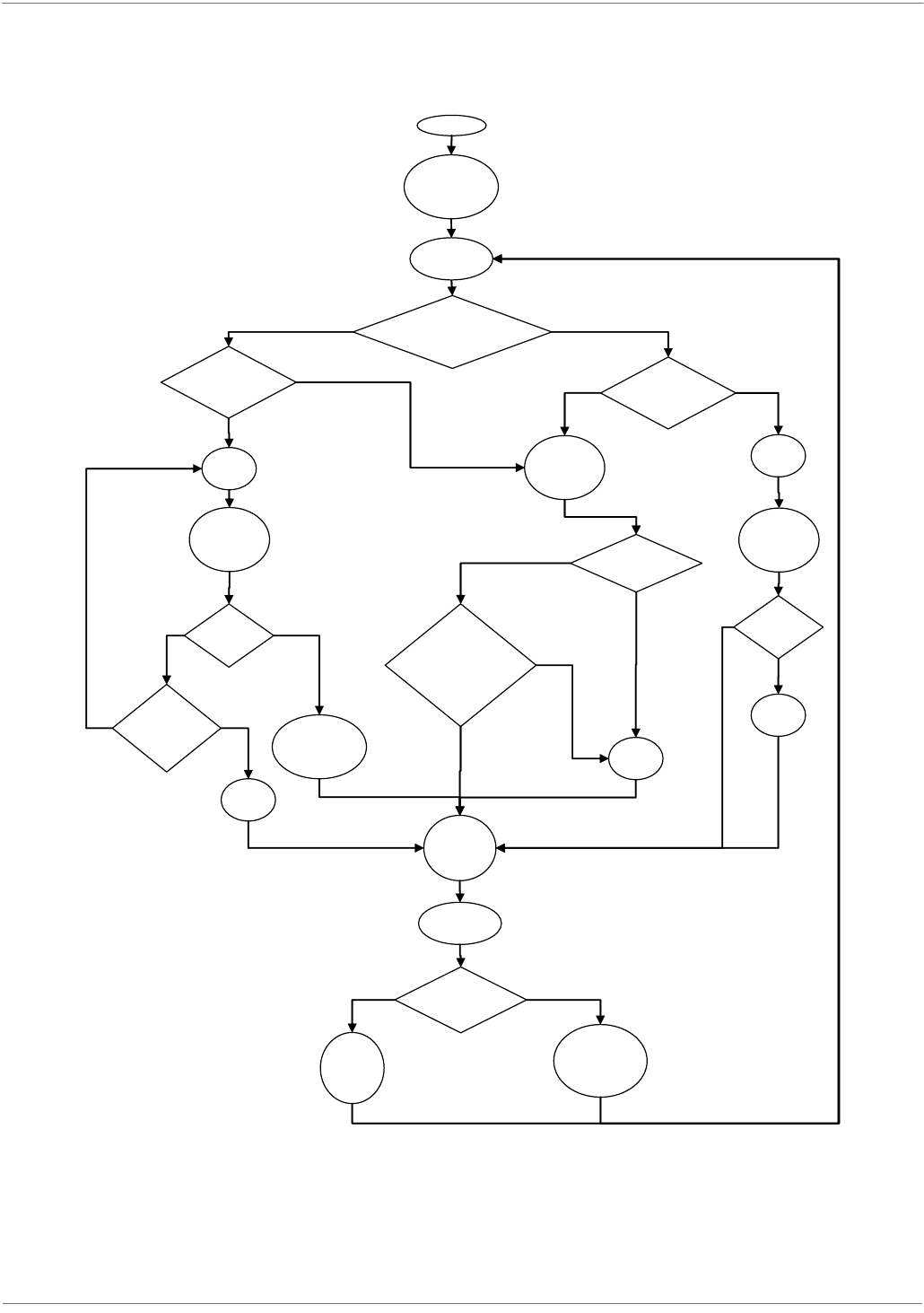
XBee‐PRO®900HP/XBee‐PRO®XSCRFModules
©2012DigiInternational,Inc. 41
Is Node in
Deployment
Mode?
Wait Sleep
Guard Time
Send
S
y
nc
Yes
Listen for
Relay of
S
y
nc
Heard
Relay?
No
Coord.
Rapid Sync
Disabled?
No
Is Sleep
Coordinator?
No
Wait
Random
Holdoff
Send
S
y
nc
Yes No
Listen for
Relay of
S
y
nc
Heard
Relay?
Send
S
y
nc
No
Network
Transmit
Time
Yes
Wait Sleep
Guard Time
Is Cyclic Sleep
Node?
Wait Sleep
Time in Low
Power Mode
Wait
Sleep
Time
Yes
No
Send
S
y
nc
Yes
Yes
Ever been
S
y
nc’ed?
Send
Poll
No
Yes
Exit
Deployment
Mode
Power-up
Enter
Deployment
Mode
Is Sleep
Coordinator?
No
Yes
Is node a non-
sleep coord.
node which has
lost s
y
nc?
Yes
No

XBee‐PRO®900HP/XBee‐PRO®XSCRFModules
©2012DigiInternational,Inc. 42
Becoming a Sleep Coordinator
A node can become a sleep coordinator in one of four ways:
Preferred Sleep Coordinator Option
A node can be specified to always act as a sleep coordinator. This is done by setting the preferred sleep
coordinator bit (bit 0) in the sleep operations parameter (SO) to 1. A node with the sleep coordinator bit set
will always send a sync message at the beginning of a wake cycle. For this reason, it is imperative that no
more than one node in the network has this bit set. Although it is not necessary to specify a preferred sleep
coordinator, it is often useful to select a node for this purpose to improve network performance. A node which
is centrally located in the network can serve as a good sleep coordinator to minimize the number of hops a
sync message must take to get across the network. A sleep support node and/or a node which is mains
powered may be a good candidate.
The preferred sleep coordinator bit should be used with caution. The advantages of using the option become
weaknesses when used on a node that is not positioned or configured properly. The preferred sleep
coordinator option can also be used when setting up a network for the first time. When starting a network, a
node can be configured as a sleep coordinator so it will begin sending sleep messages. After the network is
set up, the preferred sleep coordinator bit can be disabled.
Nomination and Election
Nomination is an optional process that can occur on a node in the event that contact with the network sleep
coordinator is lost. By default, this behavior is disabled. This behavior can be enabled with the sleep options
command (SO). This process will automatically occur in the event that contact with the previous sleep
coordinator is lost. Any sleep compatible node which has this behavior enabled is eligible to become the sleep
coordinator for the network. If a sleep compatible node has missed three or more sync messages and is not
configured as a non-sleep coordinator (presumably because the sleep coordinator has been disabled) it may
become a sleep coordinator. Depending on the platform and other configured options, such a node will
eventually nominate itself after a number of cycles without a sync. A nominated node will begin acting as the
new network sleep coordinator. It is possible for multiple nodes to nominate themselves as the sleep
coordinator. If this occurs, an election will take place to establish seniority among the multiple sleep
coordinators. Seniority is determined by four factors (in order of priority):
1. Newer sleep parameters: a node using newer sleep parameters (SP/ST) is considered senior to a node
using older sleep parameters. (See the Changing Sleep Parameters section below.)
2. Preferred Sleep Coordinator: a node acting as a preferred sleep coordinator is senior to other nodes.
3. Sleep Support Node: sleep support nodes are senior to cyclic sleep nodes. (This behavior can be modified
using the SO parameter.)
4. Serial number: in the event that the above factors do not resolve seniority, the node with the higher serial
number is considered senior.
Commissioning Button
The commissioning button can be used to select a module to act as the sleep coordinator. If the
commissioning button functionality has been enabled, a node can be immediately nominated as a sleep
coordinator by pressing the commissioning button twice or by issuing the CB2 command. A node nominated
in this manner is still subject to the election process described above. A node configured as a non-sleep
coordinator will ignore commissioning button nomination requests.
Changing Sleep Parameters
Any sleep compatible node in the network which does not have the non-sleep coordinator sleep option set can
be used to make changes to the network’s sleep and wake times. If a node’s SP and/or ST are changed to
values different from those that the network is using, that node will become the sleep coordinator. That node
will begin sending sync messages with the new sleep parameters at the beginning of the next wake cycle.
Note #1: For normal operations, a module will use the sleep and wake parameters it gets from the sleep sync
message, not the ones specified in its SP and ST parameters. The SP and ST parameters are not updated with
the values of the sync message. The current network sleep and wake times used by the node can be queried
using the OS and OW commands.

XBee‐PRO®900HP/XBee‐PRO®XSCRFModules
©2012DigiInternational,Inc. 43
Note #2: Changing network parameters can cause a node to become a sleep coordinator and change the
sleep settings of the network. The following commands can cause this to occur: NH, NN, NQ, and MR. In
most applications, these network parameters should only be configured during deployment.
Sleep Guard Times
To compensate for variations in the timekeeping hardware of the various modules in a sleeping router
network, sleep guard times are allocated at the beginning and end of the wake time. The size of the sleep
guard time varies based on the sleep and wake times selected and the number of cycles that have elapsed
since the last sync message was received. The sleep guard time guarantees that a destination radio will be
awake when a transmission is sent. As more and more consecutive sync messages are missed, the sleep
guard time increases in duration and decreases the available transmission time.
Auto-Early Wake-Up Sleep Option
Similarly to the sleep guard time, the auto early wake-up option decreases the sleep period based on the
number of sync messages missed. This option comes at the expense of battery life. Auto-early wake-up
sleep can be disabled using the sleep options (SO) command.
Configuration
Selecting Sleep Parameters
Choosing proper sleep parameters is vital to creating a robust sleep-enabled network with a desireable battery
life. To select sleep parameters that will be good for most applications, follow these steps:
1. Choose NH. Based on the placement of the nodes in your network, select appropriate values for the
Network Hops (NH) parameter.
Note: the default value of NH has been optimized to work for the majority of deployments. In most cases, we
suggest that the parameter not be modified from its default value. Decreasing its parameters for small
networks can improve battery life, but care should be taken so that the value is not made too small.
2. Determine the Sync Message Propagation Time (SMPT). This is the maximum amount of time it
takes for a sleep synchronization message to propagate to every node in the network. This number is the
BroadcastTxTime described in the "Transmission Timeouts" section of Chapter 3.
3. Select desired duty cycle. The ratio of sleep time to wake time is the factor that has the greatest effect
on the RF module’s power consumption. Battery life can be estimated based on the following factors: sleep
period, wake time, sleep current, RX current, TX current, and battery capacity.
4. Choose sleep period and wake time. The wake time needs to be long enough to transmit the desired
data as well as the sync message. The ST parameter will automatically adjust upwards to its minimum value
when other AT commands are changed that will affect it (SP, and NH). Use a value larger than this minimum.
If a module misses successive sync messages, it reduces its available transmit time to compensate for
possible clock drift. Budget a large enough ST time to allow for a few sync messages to be missed and still
have time for normal data transmissions.
Starting a Sleeping Network
By default, all new nodes operate in normal (non-sleep) mode. To start a sleeping network, follow these
steps:
1. Enable the preferred sleep coordinator option on one of the nodes, and set its SM to a sleep compatible
mode (7 or 8) with its SP and ST set to a quick cycle time. The purpose of a quick cycle time is to allow
commands to be sent quickly through the network during commissioning.
2. Next, power on the new nodes within range of the sleep coordinator. The nodes will quickly receive a sync
message and synchronize themselves to the short cycle SP and ST.
3. Configure the new nodes in their desired sleep mode as cyclic sleeping nodes or sleep support nodes.
4. Set the SP and ST values on the sleep coordinator to the desired values for the deployed network.
5. Wait a cycle for the sleeping nodes to sync themselves to the new SP and ST values.
6. Disable the preferred sleep coordinator option bit on the sleep coordinator (unless a preferred sleep
coordinator is desired).

XBee‐PRO®900HP/XBee‐PRO®XSCRFModules
©2012DigiInternational,Inc. 44
7. Deploy the nodes to their positions.
Alternatively, nodes can be set up with their sleep pre-configured and written to flash (using the WR
command) prior to deployment. If this is the case, the commissioning button and associate LED can be used
to aid in deployment:
1. If a preferred sleep coordinator is going to be used in the network, deploy it first. If there will be no
preferred sleep coordinator, select a node for deployment, power it on and press the commissioning button
twice. This will cause the node to begin emitting sync messages.
Verify that the first node is emitting sync messages by watching its associate LED. A slow blink indicates that
the node is acting as a sleep coordinator.
2. Next, power on nodes in range of the sleep coordinator or other nodes which have synchronized with the
network. If the synchronized node is asleep, it can be woken by pressing the commissioning button once.
3. Wait a cycle for the new node to sync itself.
4. Verify that the node syncs with the network. The associate LED will blink when the module is awake and
synchronized.
5. Continue this process until all nodes have been deployed.
Adding a New Node to an Existing Network
To add a new node to the network, the node must receive a sync message from a node already in the network.
On power-up, an unsynchronized sleep compatible node will periodically send a broadcast requesting a sync
message and then sleep for its SP period. Any node in the network that receives this message will respond
with a sync. Because the network can be asleep for extended periods of time, and as such cannot respond to
requests for sync messages, there are methods that can be used to sync a new node while the network is
asleep.
1. Power the new node on within range of a sleep support node. Sleep support nodes are always awake and
will be able to respond to sync requests promptly.
2. A sleeping cyclic sleep node in the network can be woken by the commissioning button. Place the new node
in range of the existing cyclic sleep node and wake the existing node by holding down the commissioning
button for 2 seconds, or until the node wakes. The existing node stays awake for 30 seconds and will respond
to sync requests while it is awake.
If you do not use one of these two methods, you must wait for the network to wake up before adding the new
node. The new node should be placed in range of the network with a sleep/wake cycle that is shorter than the
wake period of the network. The new node will periodically send sync requests until the network wakes up
and it receives a sync message.
Changing Sleep Parameters
Changes to the sleep and wake cycle of the network can be made by selecting any node in the network and
changing the SP and/or ST of the node to values different than those the network is currently using. If using
a preferred sleep coordinator or if it is known which node is acting as the sleep coordinator, it is suggested
that this node be used to make changes to network settings. If the network sleep coordinator is not known,
any node that does not have the non-sleep coordinator sleep option bit set (see the SO command) can be
used.
When changes are made to a node’s sleep parameters, that node will become the network’s sleep coordinator
(unless it has the non-sleep coordinator option selected) and will send a sync message with the new sleep
settings to the entire network at the beginning of the next wake cycle. The network will immediately begin
using the new sleep parameters after this sync is sent.
Changing sleep parameters increases the chances that nodes will lose sync. If a node does not receive the
sync message with the new sleep settings, it will continue to operate on its old settings. To minimize the risk
of a node losing sync and to facilitate the re-syncing of a node that does lose sync, the following precautions
can be taken:
1. Whenever possible, avoid changing sleep parameters.
2. Enable the missed sync early wake up sleep option (SO). This command is used to tell a node to wake up
progressively earlier based on the number of cycles it has gone without receiving a sync. This will increase
the probability that the un-synced node will be awake when the network wakes up and sends the sync
message.

XBee‐PRO®900HP/XBee‐PRO®XSCRFModules
©2012DigiInternational,Inc. 45
Note: using this sleep option increases reliability but may decrease battery life. Nodes using this sleep option
which miss sync messages will have an increased wake time and decreased sleep time during cycles in which
the sync message is missed. This will reduce battery conservation.
3. When changing between two sets of sleep settings, choose settings so that the wake periods of the two
sleep settings will happen at the same time. In other words, try to satisfy the following equation: (SP1 +
ST1) = N * (SP2 + ST2), where SP1/ST1 and SP2/ST2 are the desired sleep settings and N is an integer.
Rejoining Nodes Which Have Lost Sync
Mesh networks get their robustness from taking advantage of routing redundancies which may be available in
a network. It is recommended to architect the network with redundant mesh nodes to increase robustness. If
a scenario exists such that the only route connecting a subnet to the rest of the network depends on a single
node, and that node fails -- or the wireless link fails due to changing environmental conditions (catastrophic
failure condition), then multiple subnets may arise while using the same wake and sleep intervals. When this
occurs the first task is to repair, replace, and strengthen the weak link with new and/or redundant modules to
fix the problem and prevent it from occurring in the future.
When the default DigiMesh sleep parameters are used, separated subnets will not drift out of phase with each
other. Subnets can drift out of phase with each other if the network is configured in one of the following ways:
• If multiple modules in the network have had the non-sleep coordinator sleep option bit dis-
abled and are thus eligible to be nominated as a sleep coordinator.
• If the modules in the network are not using the auto early wake-up sleep option.
If a network has multiple subnets that have drifted out of phase with each other, get the subnets back in
phase with the following steps:
1. Place a sleep support node in range of both subnets.
2. Select a node in the subnet that you want the other subnet to sync up with. Use this node to slightly
change the sleep cycle settings of the network (increment ST, for example).
3. Wait for the subnet’s next wake cycle. During this cycle, the node selected to change the sleep cycle
parameters will send the new settings to the entire subnet it is in range of, including the sleep support node
which is in range of the other subnet.
4. Wait for the out of sync subnet to wake up and send a sync. When the sleep support node receives this
sync, it will reject it and send a sync to the subnet with the new sleep settings.
5. The subnets will now be in sync. The sleep support node can be removed. If desired, the sleep cycle
settings can be changed back to what they were.
In the case that only a few nodes need to be replaced, this method can also be used:
1. Reset the out of sync node and set its sleep mode to cyclic sleep (SM = 8). Set it up to have a short sleep
cycle.
2. Place the node in range of a sleep support node or wake a sleeping node with the commissioning button.
3. The out of sync node will receive a sync from the node which is synchronized to the network and sync to the
network sleep settings.
Diagnostics
The following are useful in some applications when managing a sleeping router network:
Query current sleep cycle: the OS and OW commands can be used to query the current operational sleep
and wake times a module is currently using.
Sleep Status: the SS command can be used to query useful information regarding the sleep status of the
module. This command can be used to query if the node is currently acting as a network sleep coordinator, as
well as other useful diagnostics.
Missed Sync Messages Command: the MS command can be used to query the number of cycles that have
elapsed since the module last received a sync message.
Sleep Status API messages: when enabled with the SO command, a module configured in API mode will
output modem status frames immediately after a module wakes up and just prior to a module going to sleep.
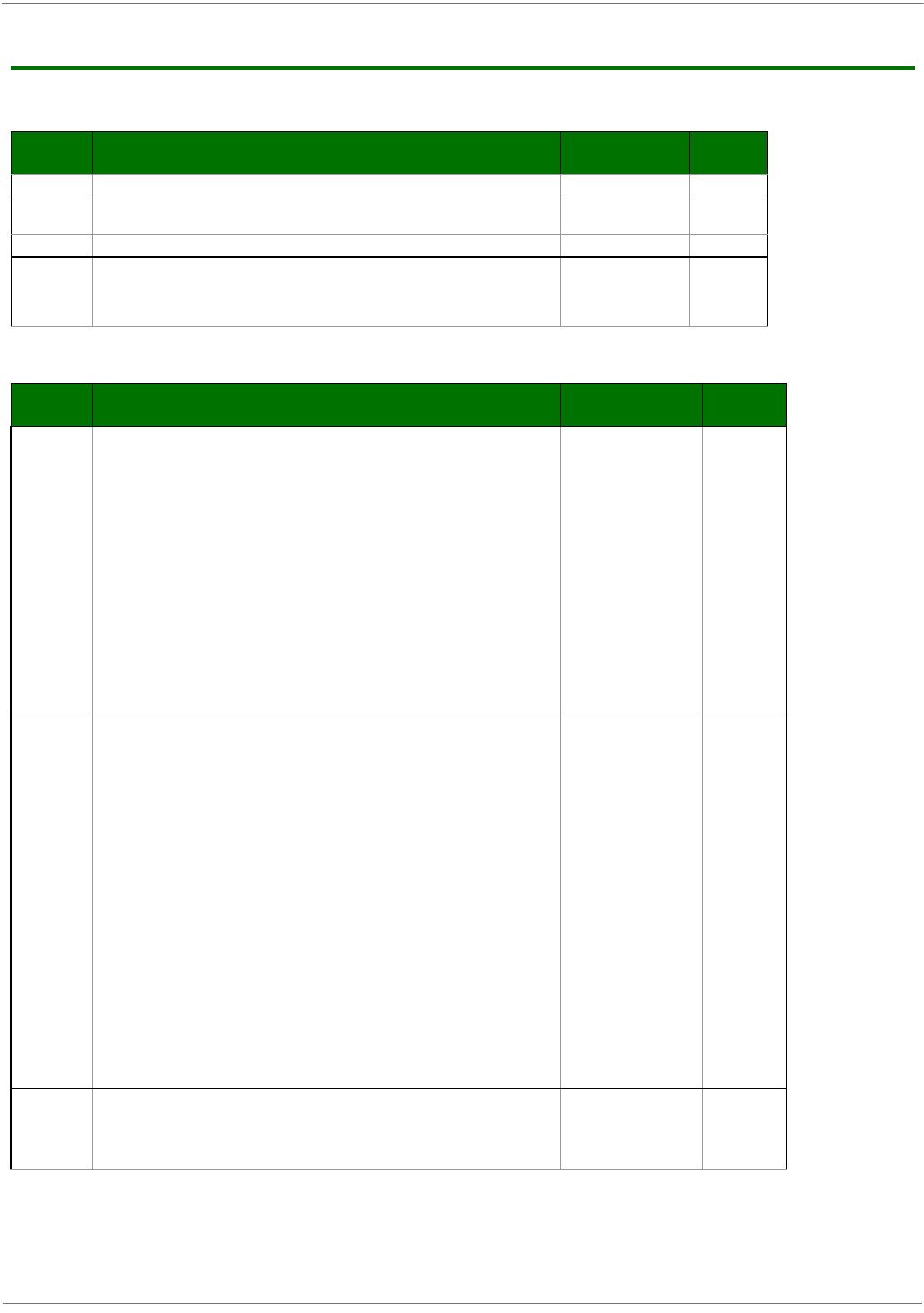
XBee‐PRO®900HP/XBee‐PRO®XSCRFModules
©2012DigiInternational,Inc. 46
5.CommandReferenceTables
Special
MAC/PHY Level
Table5‐02. MAC/PHY‐levelCommands
Table5‐01. SpecialCommands
AT
Command Name and Description Parameter Range Default
AC Apply Changes. Immediately applies new settings without exiting command mode. -- --
FR Software Reset. Reset module. Responds immediately with an “OK” then performs a
reset 100ms later. -- --
RE Restore Defaults. Restore module parameters to factory defaults. -- --
WR
Write. Write parameter values to non-volatile memory so that parameter modifications
persist through subsequent resets.
Note: Once WR is issued, no additional characters should be sent to the module until
after the "OK\r" response is received.
-- --
AT
Command Name and Description Parameter Range Default
AF
Available Frequencies. This read only command can be queried to return a bitfield of
the frequencies that are available in the module’s region of operation.
This command returns a bitfield. Each bit corresponds to a physical channel. Channels
are spaced 400 kHz apart:
Bit 0 – 902.400 MHz
Bit 1 – 902.800 MHz
.
.
.
Bit 31 – 914.800 MHz
.
.
.
Bit 63 – 927.600 MHz
0x1FFFFFF –
0x00FFFFFFFFFFFFFF
FF
USA/Canada:
0x00FFFFFF
FFFFFFFFFF
(channels 0 –
63)
Australia:
0x00FFFFFF
FE00000000
(channels 33
– 63)
Brazil:
0x00FFFFFF
FE00000FFF
(channels 0-
11, 33 – 63)
CM
Channel Mask. The channel mask command allows channels to be selectively enabled
or disabled. This is useful to avoid using frequencies that experience unacceptable
levels of RF interference.
This command is a bitfield. Each bit in the bitfield corresponds to a frequency as defined
in the Available Frequencies (AF) command. When a bit in the Channel Mask and the
corresponding bit in the Available Frequencies are both set to 1 then that physical
channel may be chosen by the module as an active channel for communication.
A minimum of 25 channels must be made available for the module to communicate on.
The module will choose the 25 lowest enabled frequencies as its active channels if more
than 25 are enabled.
All modules in a network must use an identical set of active channels. Separate
networks which are in physical range of each other should use different Preamble
Patterns (HP) and/or Network ID’s (ID) to avoid receiving data from the other network.
The user may find the Energy Detect (ED) command especially useful when choosing
what channels to enable or disable.
Note that channel 19 (910.000MHz is disabled by default. This channel has
approximately 2dBm worse receiver sensitivity than other channels. It is suggested that
this channel not be used.
0x1FFFFFF –
0x00FFFFFFFFFFFFFF
FF
0xFFFFFFFF
FFF7FFFF
HP
Preamble ID. The preamble ID for which module communicates. Only modules with
matching preamble IDs can communicate with each other. Different preamble IDs
minimize interference between multiple sets of modules operating in the same vicinity.
When receiving a packet this is checked before the network ID, as it is encoded in the
preamble, and the network ID is encoded in the MAC header.
0-9 0
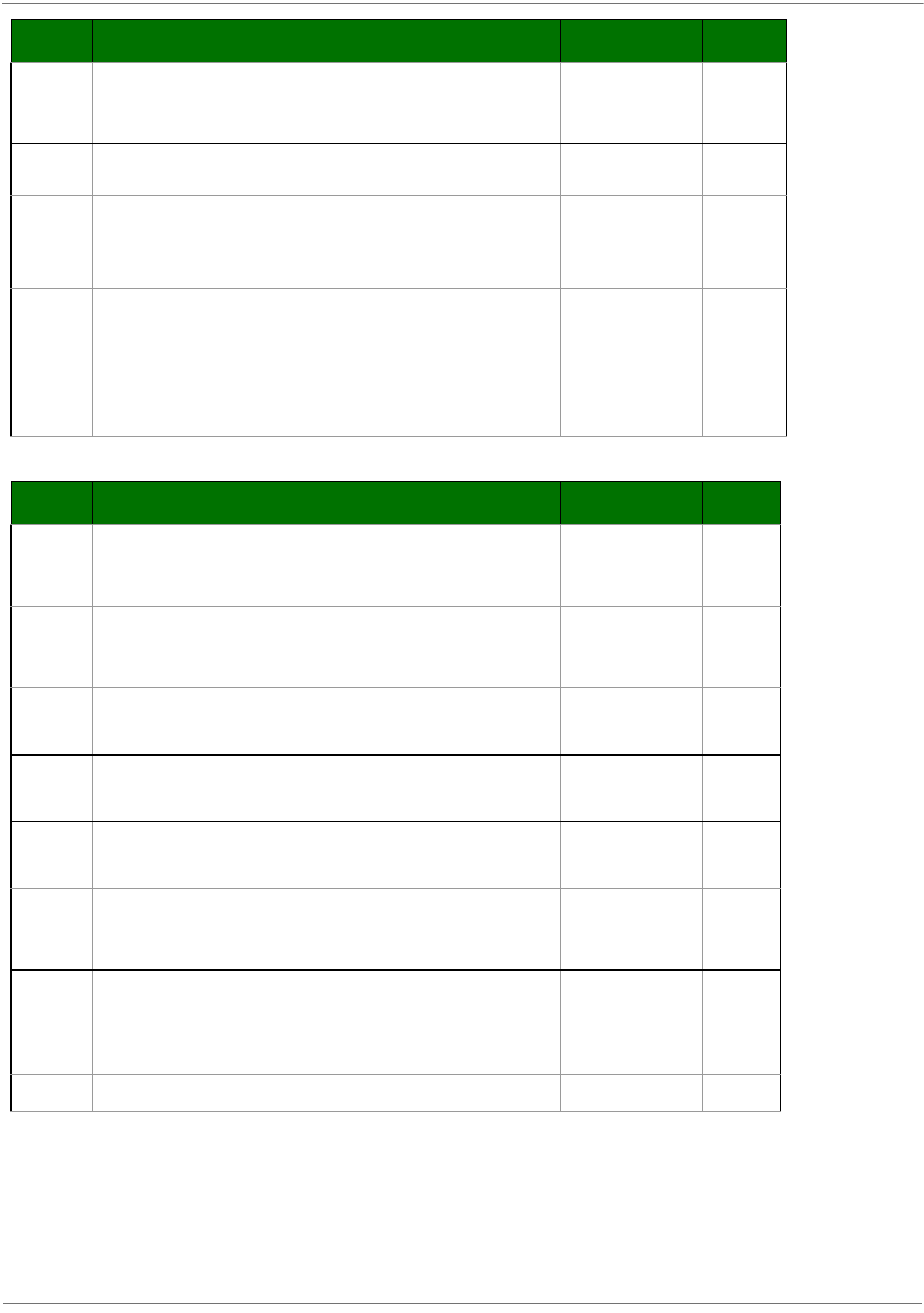
XBee‐PRO®900HP/XBee‐PRO®XSCRFModules
©2012DigiInternational,Inc. 47
Diagnostics
ID
Network ID. The user network identifier. Nodes must have the same network identifier to
communicate. Changes to ID can be written to non-volatile memory using the WR
command. Only modules with matching IDs can communicate with each other. When
receiving a packet this is checked after the preamble ID. If using OEM network IDs,
0xFFFF will use the factory value.
0-0x7FFF 0x7FFF
MT
Broadcast Multi-Transmit. The number of additional MAC-level broadcast
transmissions. All broadcast packets are transmitted MT+1 times to ensure it is
received.
0-5 3
PL Power Level. Set/Read the power level at which the RF module transmits conducted
power. Power level 4 is calibrated and the other power levels are approximate. .
0 = +7 dBm
1 = +15 dBm
2 = +18 dBm
3 = +21 dBm
4 = +24 dBm
4
RR
Unicast Mac Retries. The maximum number of MAC level packet delivery attempts for
unicasts. If RR is non-zero packets sent from the radio will request an
acknowledgement, and can be resent up to RR times if no acknowledgements are
received.
0-0xF 0x10
ED
Energy Detect. Start an Energy Detect scan. This parameter is the time in milliseconds
to scan all channels. The module will loop through all the channels until the time elapses.
The maximal energy on each channel is returned, and each value is followed by a
comma with the list ending with a carriage return. The values returned reflect the
detected energy level in units of -dBm.
0-0xFF 0x10
Table5‐03. DiagnosticsCommands‐MACStatisticsandTimeouts
AT
Command Name and Description Parameter Range Default
BC
Bytes Transmitted. The number of RF bytes transmitted. This count is incremented for
every PHY level byte transmitted. The purpose of this count is to estimate battery life by
tracking time doing transmissions. This number rolls over to zero from 0xFFFF. The
counter can be reset to any 16-bit value by appending a hexadecimal parameter to the
command.
0-0xFFFF 0
DB
Received Signal Strength. This command reports the received signal strength of the
last received RF data packet. The DB command only indicates the signal strength of the
last hop. It does not provide an accurate quality measurement for a multihop link. The DB
command value is measured in -dBm. For example if DB returns 0x60, then the RSSI of
the last packet received was -96dBm.
0-0xFF
[read-only] 0
ER
Received Error Count. This count is incremented whenever a packet is received which
contained integrity errors of some sort. Once the number reaches 0xFFFF, further events
will not be counted. The counter can be reset to any 16-bit value by appending a
hexadecimal parameter to the command.
0-0xFFFF 0
GD
Good Packets Received. This count is incremented whenever a good frame with a valid
MAC header is received on the RF interface. Once the number reaches 0xFFFF, further
events will not be counted. The counter can be reset to any 16-bit value by appending a
hexadecimal parameter to the command.
0-0xFFFF 0
EA
MAC ACK Timeouts. This count is incremented whenever a MAC ACK timeout occurs
on a MAC level unicast. Once the number reaches 0xFFFF further events will not be
counted. The counter can be reset to any 16-bit value by appending a hexadecimal
parameter to the command.
0-0xFFFF 0
TR
Transmission Errors. This count is incremented whenever a MAC transmission attempt
exhausts all MAC retries without ever receiving a MAC acknowledgement message from
the destination node. Once the number reaches 0xFFFF, further events will not be
counted. The counter can be reset to any 16-bit value by appending a hexadecimal
parameter to the command.
0-0xFFFF 0
UA
MAC Unicast Transmission Count. This count is incremented whenever a MAC
unicast transmission occurs for which an ACK is requested. Once the number reaches
0xFFFF further events will not be counted. The counter can be reset to any 16-bit value
by appending a hexadecimal parameter to the command.
0-0xFFFF 0
%H MAC Unicast One Hop Time. The MAC unicast one hop timeout in milliseconds.
Changing MAC parameters can change this value. [read-only] 0xCF
%8 MAC Broadcast One Hop Time. The MAC broadcast one hop timeout in milliseconds.
Changing MAC parameters can change this value. [read-only] 0x1BE
AT
Command Name and Description Parameter Range Default
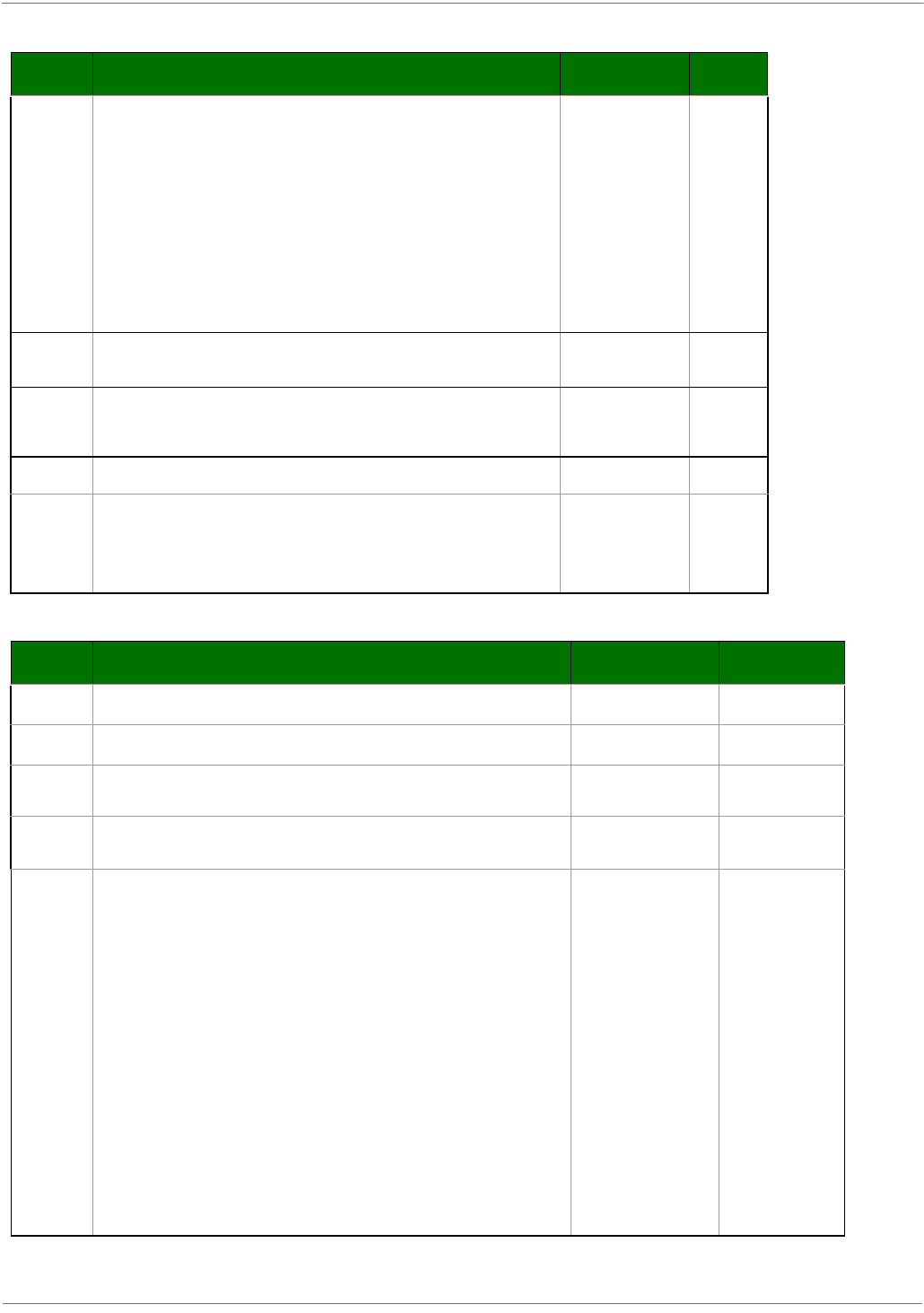
XBee‐PRO®900HP/XBee‐PRO®XSCRFModules
©2012DigiInternational,Inc. 48
Network
Addressing
Table5‐04. NetworkCommands‐DigiMeshandRepeater
AT
Command Name and Description Parameter Range Default
CE
Node Messaging Options. The module's routing and messaging mode bit field. A
routing module will repeat broadcasts. Indirect Messaging Coordinators will not transmit
point-to-multipoint unicasts until they are requested by an Indirect Messaging Poller.
Setting a radio as an Indirect Messaging Poller will cause it to regularly send polls to its
Indirect Messaging Coordinator. Nodes can also be configured to route, or not route,
multi-hop packets.
Bit 0 - Indirect Messaging Coordinator enable
All point-multipoint unicasts will be held until requested by a polling end device.
Bit 1 - Disable routing on this node
When set, this node will not propagate broadcasts or become an intermediate
node in a DigiMesh route. This node will not function as a repeater.
Bit 2 - Indirect Messaging Polling enable
Periodically send requests for messages held by the node’s coordinator.
Bit 0 and bit 2 cannot be set at the same time.
0-6 0
BH
Broadcast Hops. The transmission hops for broadcast data transmissions. Set to 0 for
maximum radius. If BH is set greater than NH then the value of NH is used.
Supported in both variants.
0-0x20 0
NH
Network Hops The maximum number of hops expected to be seen in a network route.
This value doesn't limit the number of hops allowed, but it is used to calculate timeouts
waiting for network acknowledgements.
Supported in both variants.
0-0x20
NN Network Delay Slots. Set or read the maximum random number of network delay slots
before rebroadcasting a network packet. 0 to 0x05 3
MR
Mesh Unicast Retries The maximum number of network packet delivery attempts. If MR
is non-zero, packets sent will request a network acknowledgement, and can be resent up
to MR+1 times if no acknowledgements are received. We recommend setting this value
to 1. If this parameter is set to 0, then network ACKs are disabled. Routes can be found
initially, but will never be repaired if a route fails.
Supported in the 200k variant only.
0 to 7 1
Table5‐05. AddressingCommands
AT
Command Name and Description Parameter Range Default
SH Serial Number High. The upper 32 bits of the module’s unique IEEE 64-bit MAC address. 0-0xFFFFFFFF
[read-only] Factory
SL Serial Number Low. The lower 32 bits of the module’s unique IEEE 64-bit MAC address. 0-0xFFFFFFFF
[read-only] Factory
DH
Destination Address High. The upper 32 bits of the 64-bit destination address. When
combined with DL, it defines the destination address used for transmission in transparent
mode.
0-0xFFFFFFFF 0
DL
Destination Address Low. The lower 32 bits of the 64-bit destination address. When
combined with DH, DL defines the destination address used for transmission in
transparent mode.
0-0xFFFFFFFF 0x0000FFFF
TO
Transmit Options.
This command defines transmission options for all packets originating from this radio.
These options can be overridden on a packet-by-packet basis by using the TxOptions field
of the API TxRequest frames.
Bit Meaning Description
6, 7 Delivery method b’00 - <invalid option>.
b’01 - Point-Multipoint
b’10 - Repeater mode (directed broadcast of packets)
b’11 - DigiMesh (not available on 10k product)
5 Reserved <set this bit to 0>
4 Reserved <set this bit to 0>
3 Trace Route Enable a Trace Route on all DigiMesh API packets
2 NACK Enable a NACK messages on all DigiMesh API packets
1 Disable RD Disable Route Discovery on all DigiMesh unicasts
0 Disable ACK Disable acknowledgments on all unicasts
Example #1: Setting TO to 0x80 would cause all transmissions to be sent using
repeater mode.
Example #2: Setting TO to 0xC1 would cause all transmissions to be sent using
DigiMesh, with network acknowledgments disabled.
Bits 6 & 7 cannot be set to
DigiMesh on the 10k build.
Bits 4 & 5 must be set to 0
Bits 1, 2, & 3 cannot be set
on the 10k build
0x40
(10k product)
0xC0
(200k product)
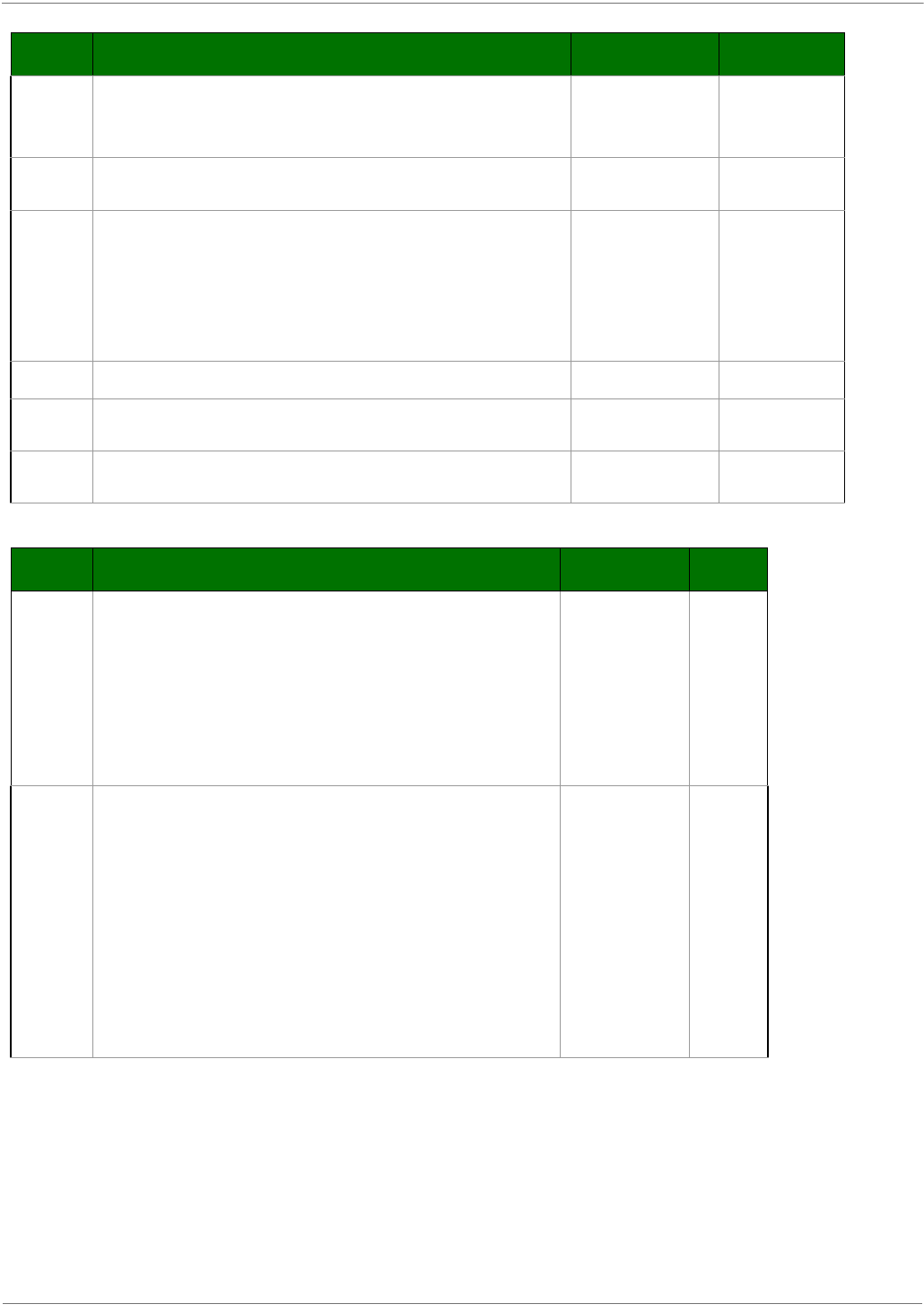
XBee‐PRO®900HP/XBee‐PRO®XSCRFModules
©2012DigiInternational,Inc. 49
Addressing Discovery/Configuration
NI
Node Identifier. A string identifier for this module. The string accepts only printable ASCII
data In AT Command Mode, the string can not start with a space. A carriage return or
comma ends the command. Command will automatically end when maximum bytes for the
string have been entered. This string is returned as part of the ATND (Network Discover)
command. This identifier is also used with the ATDN (Destination Node) command.
up to 20 byte ASCII string a space character
NT
Node Discover Timeout. The amount of time a node will spend discovering other nodes
when ND or DN is issued. This value is used to randomize the responses to alleviate
network congestion.
0x20 - 0x2EE0
[x 100 msec] 0x82 (130d)
NO
Node Discovery Options. The options value for the network discovery command. The
options bitfield value can change the behavior of the ND (network discovery) command
and/or change what optional values are returned in any received ND responses or API
node identification frames.
Options include:
0x01 = Append DD value (to ND responses or API node identification frames)
0x02 = Local device sends ND or FN response frame when ND is issued.
0x04 = Append RSSI (of the last hop for DigiMesh networks) to ND or FN responses or
API node identification frames.
0-0x07 [bitfield] 0
CI Cluster ID. The application layer cluster ID value. This value will be used as the cluster ID
for all data transmissions. The default value 0x11 (Transparent data cluster ID) 0-0xFFFF 0x11
DE
Destination Endpoint. The application layer destination ID value. This value will be used
as the destination endpoint for all data transmissions. The default value (0xE8) is the Digi
data endpoint.
0-0xFF 0xE8
SE
Source Endpoint. The application layer source endpoint value. This value will be used as
the source endpoint for all data transmissions. The default value 0xE8 (Data endpoint) is
the Digi data endpoint
0-0xFF 0xE8
Table5‐06. AddressingDiscovery/ConfigurationCommands
AT
Command Name and Description Parameter Range Default
AG
Aggregator Support. The AG command sends a broadcast through the network that
has the following effects on nodes which receive the broadcast:
- The receiving node will establish a DigiMesh route back to the originating node,
provided there is space in the routing table.
- The DH and DL of the receiving node will be updated to the address of the originating
node if the AG parameter matches the current DH/DL of the receiving node.
- For API-enabled modules on which DH and DL are updated, an Aggregate Addressing
Update frame will be sent out the serial port.
Note that the AG command is only available on products that support DigiMesh.
Any 64-bit number n/a
DN
Discover Node. Resolves an NI (Node Identifier) string to a physical address (case
sensitive).
The following events occur after the destination node is discovered:
<AT Firmware>
1. DL & DH are set to the extended (64-bit) address of the module with the matching
NI (Node Identifier) string.
2. OK (or ERROR)\r is returned.
3. Command Mode is exited to allow immediate communication
<API Firmware>
0xFFFE and 64-bit extended addresses are returned in an API Command Response
frame.
If there is no response from a module within (NT * 100) milliseconds or a parameter is
not specified (left blank), the command is terminated and an “ERROR” message is
returned. In the case of an ERROR, Command Mode is not exited.
20 byte ascii string
Table5‐05. AddressingCommands
AT
Command Name and Description Parameter Range Default
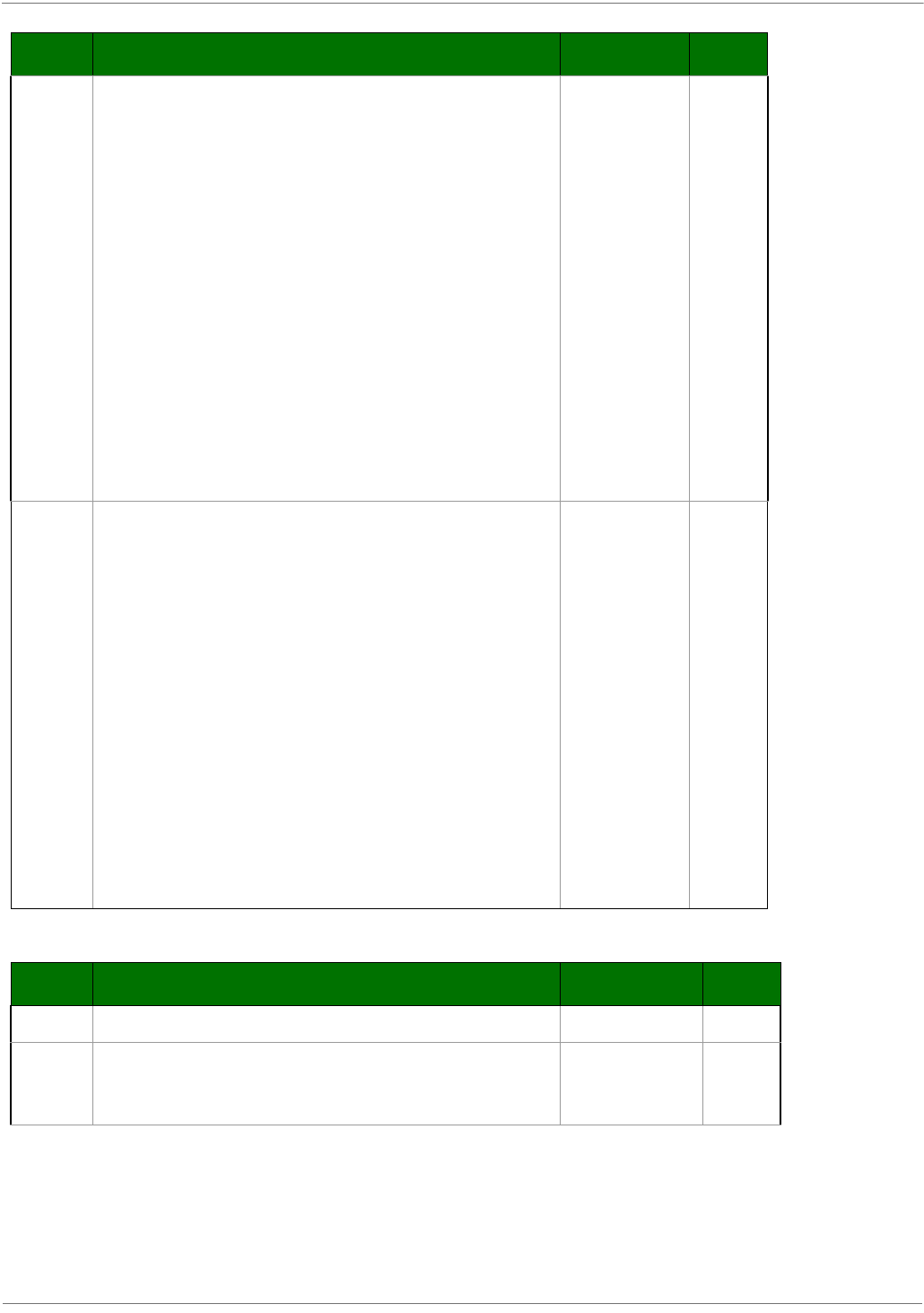
XBee‐PRO®900HP/XBee‐PRO®XSCRFModules
©2012DigiInternational,Inc. 50
Security
Table5‐07. SecurityCommands
ND
Network Discover. Discovers and reports all RF modules found. The following
information is reported for each module discovered.
MY<CR> (always 0xFFFE)
SH<CR>
SL<CR>
NI<CR> (Variable length)
PARENT_NETWORK ADDRESS<CR> (2 Bytes) (always 0xFFFE)
DEVICE_TYPE<CR> (1 Byte: 0=Coord, 1=Router, 2=End Device)
STATUS<CR> (1 Byte: Reserved)
PROFILE_ID<CR> (2 Bytes)
MANUFACTURER_ID<CR> (2 Bytes)
DIGI DEVICE TYPE<CR> (4 Bytes. Optionally included based on NO settings.)
RSSI OF LAST HOP<DR> (1 Byte. Optionally included based on NO settings.)
<CR>
After (NT * 100) milliseconds, the command ends by returning a <CR>. ND also accepts
a Node Identifier (NI) as a parameter (optional). In this case, only a module that
matches the supplied identifier will respond.
If the ND command is sent through a local API frame, each response is returned as a
separate Local or Remote AT Command Response API packet, respectively. The data
consists of the above listed bytes without the carriage return delimiters. The NI string
will end in a "0x00" null character.
n/a n/a
FN
Find Neighbors. Discovers and reports all RF modules found within immediate RF
range. The following information is reported for each module discovered.
MY<CR> (always 0xFFFE)
SH<CR>
SL<CR>
NI<CR> (Variable length)
PARENT_NETWORK ADDRESS<CR> (2 Bytes) (always 0xFFFE)
DEVICE_TYPE<CR> (1 Byte: 0=Coord, 1=Router, 2=End Device)
STATUS<CR> (1 Byte: Reserved)
PROFILE_ID<CR> (2 Bytes)
MANUFACTURER_ID<CR> (2 Bytes)
DIGI DEVICE TYPE<CR> (4 Bytes. Optionally included based on NO settings.)
RSSI OF LAST HOP<DR> (1 Byte. Optionally included based on NO settings.)
<CR>
If the FN command is issued in command mode, after (NT*100) ms + overhead time,
the command ends by returning a <CR>.
If the FN command is sent through a local API frame, each response is returned as a
separate Local or Remote AT Command Response API packet, respectively. The data
consists of the above listed bytes without the carriage return delimiters. The NI string
will end in a "0x00" null character.
n/a n/a
AT
Command Name and Description Parameter Range Default
EE Security Enable Enables or disables 128-bit AES encryption. This command parameter
must be set the same on all devices for communication to work. 0-1 0
KY
AES Encryption Key Sets the 16 byte network security key value. This command is
write-only; it cannot be read. Attempts to read KY will return an OK status. This
command parameter must be set the same on all devices for communication to work.
This value is passed in as hex characters when setting from AT command mode, and as
binary bytes when set in ATI mode.
128-bit value n/a
Table5‐06. AddressingDiscovery/ConfigurationCommands
AT
Command Name and Description Parameter Range Default
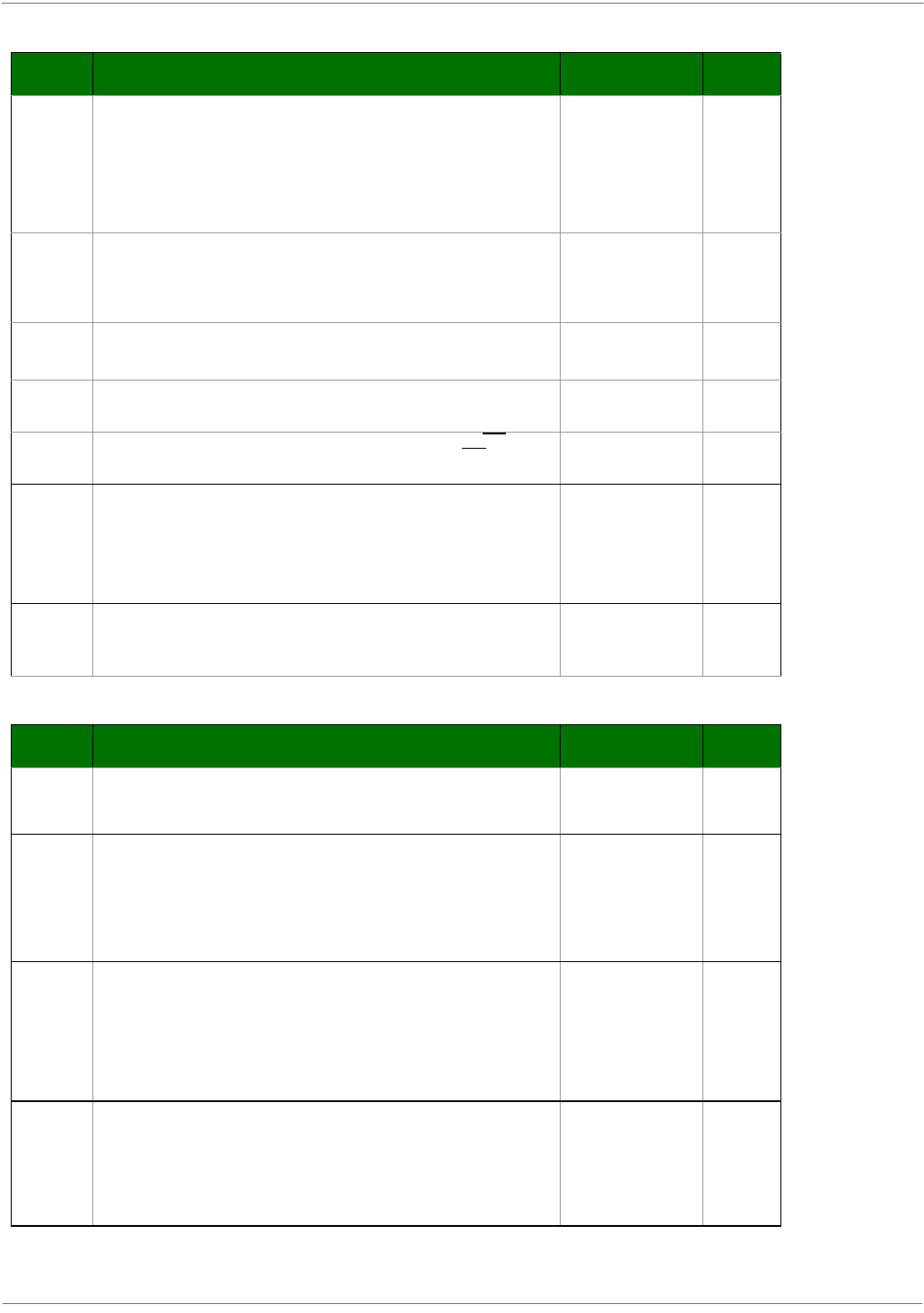
XBee‐PRO®900HP/XBee‐PRO®XSCRFModules
©2012DigiInternational,Inc. 51
Serial Interfacing
I/O Settings
Table5‐08. SerialInterfacingCommands
AT
Command Name and Description Parameter Range Default
BD
Baud rate. The UART baud rate (speed for data transfer between radio modem and
host). Values from 0-8 select preset standard rates. Values at 0x39 and above select the
actual baud rate. Providing the host supports it. Baud rates can go as high as 7Mbps.
The values from 0 to 8 are interpreted as follows:
0 - 1,200bps 3 - 9,600bps 6 - 57,600bps
1 - 2,400bps 4 - 19,200bps 7 - 115,200bps
2 - 4,800bps 5 - 38,400bps 8 - 230,400bps
0 to 8, and 0x100 to
0x6ACFC0
0x03 (9600
bps)
NB
Parity. Set or read parity settings for UART communications. The values from 0 to 2 are
interpreted as follows:
0 No parity
1 Even parity
2 Odd parity
0-2 0 (No parity)
SB
Stop Bits. The number of stop bits for the UART.
0 - One stop bit
1 - Two stop bits
0-1 0
RO
Packetization Timeout. The number of UART character times of inter-character silence
required before packetization in transparent mode. Set (RO=0) to transmit characters as
they arrive instead of buffering them into one RF packet.
0 - 0xFF
[x character times] 3
FT
Flow Control Threshhold. The UART flow control threshhold. De-assert CTS and/or
send XOFF when FT bytes are in the UART receive buffer. Re-assert CTS when less
than FT - 16 bytes are in the UART receive buffer.
0x11 - 0x16F 0x13F
AP
API mode. The UART API mode. The following settings are allowed:
0 Transparent mode, API mode is off. All UART input and output is raw data and
packets are delineated using the RO and RB parameters.
1 API mode without escapes is on. All UART input and output data is packetized in
the API format.
2 API mode is on with escaped sequences inserted to allow for control characters
(XON, XOFF, escape, and the 0x7e delimiter to be passed as data.)
0- 2 0
AO
API Options. The API data frame output format for received frames. This parameter
applies to both the UART and SPI interfaces.
0 API RX Indicator (0x90)
1 API Explicit RX Indicator (0x91)
0, 1 0
Table5‐09. I/OSettingsandCommands
AT
Command Name and Description Parameter Range Default
CB
Commissioning Pushbutton. This command can be used to simulate commissioning
button presses in software. The parameter value should be set to the number of button
presses to be simulated. For example, sending the ATCB1 command will execute the
action associated with 1 commissioning button press.
0-4 n/a
D0
DIO0 / AD0 Configuration (Pin 20).
0 = Disabled
1 = Commissioning button
2 = ADC
3 = Digital input
4 = Digital output low
5 = Digital output high
0 - 5 1
D1
DIO1 / AD1 Configuration (Pin 19).
0 = Disabled
1 = SPI Attention
2 = ADC
3 = Digital input
4 = Digital output low
5 = Digital output high
6 = Uart Data Present Indicator
0-6 0
D2
DIO2 / AD2 Configuration (Pin 18).
0 = Disabled
1 = SPI Clock
2 = ADC
3 = Digital input
4 = Digital output low
5 = Digital output high
0-5 0
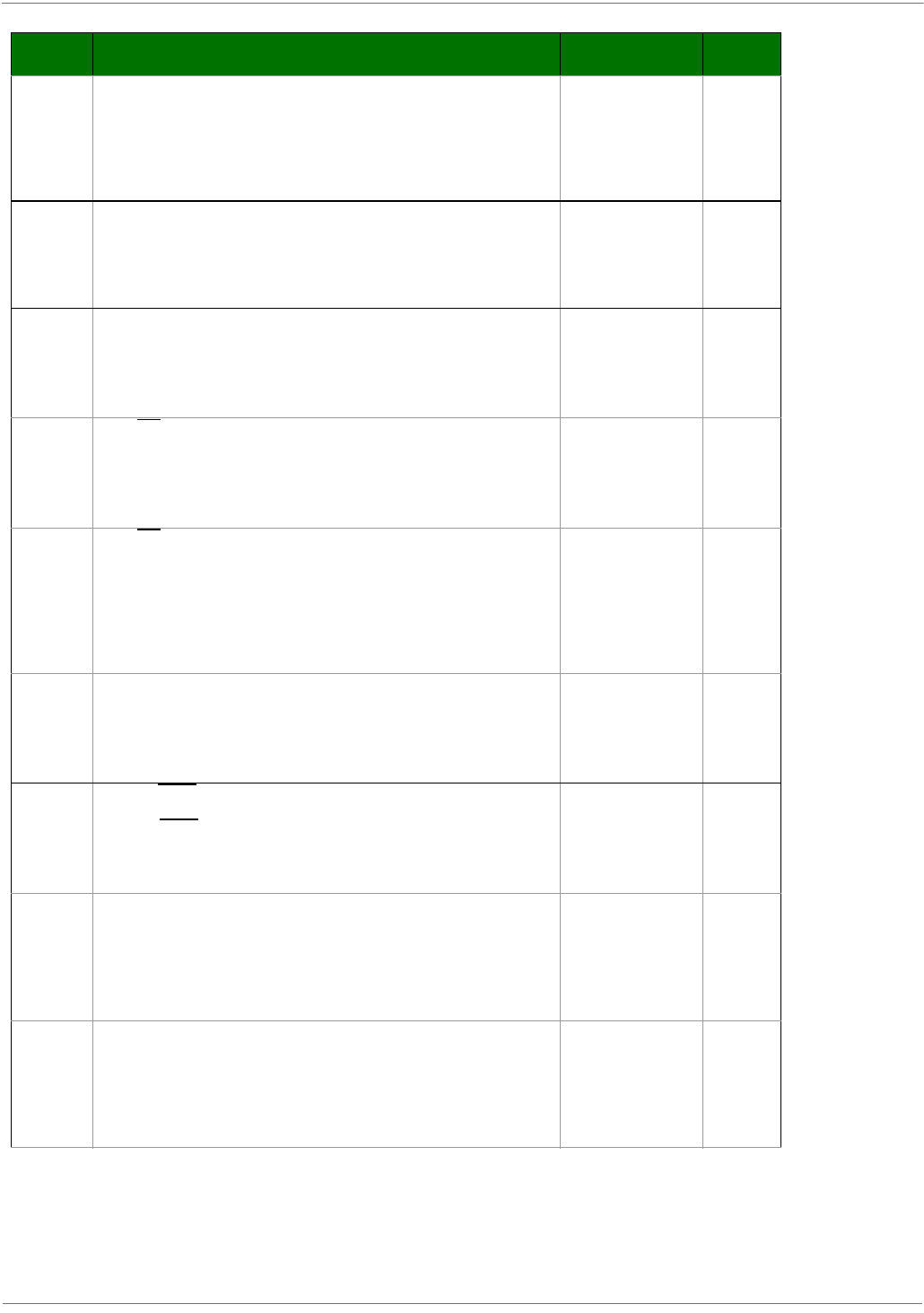
XBee‐PRO®900HP/XBee‐PRO®XSCRFModules
©2012DigiInternational,Inc. 52
D3
DIO3 / AD3 Configuration (Pin 17).
0 = Disabled
1 = SPI Slave Select
2 = ADC
3 = Digital input
4 = Digital output low
5 = Digital output high
0-5 0
D4
DIO4 Configuration (Pin 11).
0 = Disabled
1 = SPI_MOSI
3 = Digital input
4 = Digital output low
5 = Digital output high
0, 1, 3-5 0
D5
DIO5 / ASSOCIATE_INDICATOR Configuration (Pin 15).
0 = Disabled
1 = Associated Indicator
3 = Digital input
4 = Digital output low
5 = Digital output high
0, 1, 3-5 1
D6
DIO6 / RTS Configuration (Pin 16).
0 = Disabled
1 = RTS flow control
3 = Digital input
4 = Digital output low
5 = Digital output high
0, 1, 3-5 0
D7
DIO7 / CTS Configuration (Pin 12).
0 = Disabled
1 = CTS flow control
3 = Digital input
4 = Digital output low
5 = Digital output high
6 = RS-485 Tx enable, low TX (0V on transmit, high when idle)
7 = RS-485 Tx enable, high TX (high on transmit, 0V when idle)
0, 1, 3-7 1
D8
DIO8 / SLEEP_REQUEST Configuration (Pin 9).
0 = Disabled
1 = Sleep request
3 = Digital input
4 = Digital output low
5 = Digital output high
0, 1, 3-5 1
D9
DIO9 / ON/SLEEP Configuration. (Pin 13)
0 = Disabled
1 = ON/SLEEP output
3 = Digital input
4 = Digital output low
5 = Digital output high
0, 1, 3-5 1
P0
DIO10 / RSSI / PWM0 Configuration (Pin 6).
0 = Disabled
1 = RSSI PWM0 output
2 = PWM0 output
3 = Digital input
4 = Digital output low
5 = Digital output high
0-5 1
P1
DIO11 / PWM1 Configuration (Pin 7).
0 = Disabled
1 = 32.768 kH clock output
2 = PWM1 output
3 = Digital input
4 = Digital output low
5 = Digital output high
0, 2-5 0
Table5‐09. I/OSettingsandCommands
AT
Command Name and Description Parameter Range Default
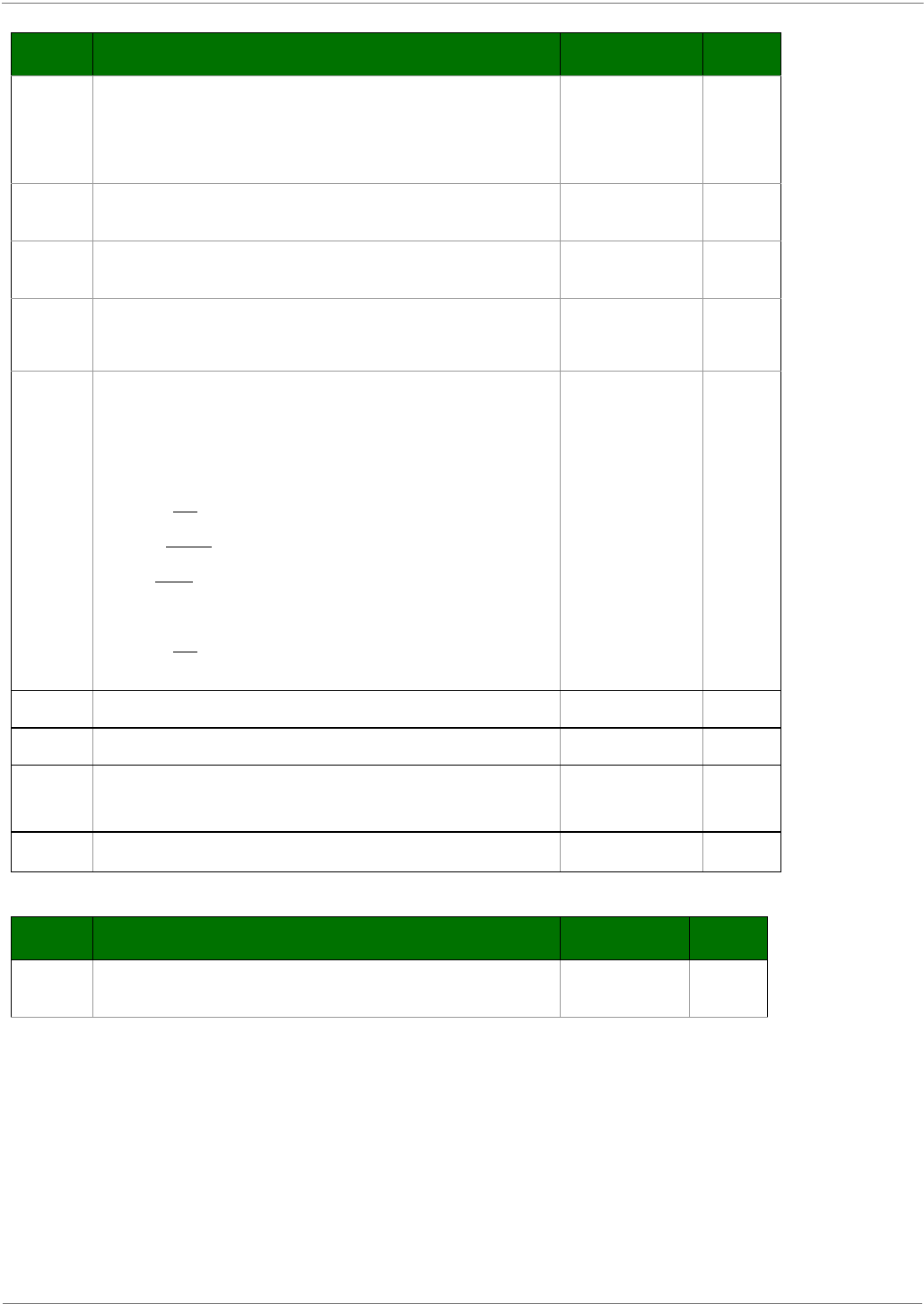
XBee‐PRO®900HP/XBee‐PRO®XSCRFModules
©2012DigiInternational,Inc. 53
I/O Sampling
P2
DIO12 Configuration (Pin 4).
0 = Disabled
1 = SPI_MISO
3 = Digital input
4 = Digital output low
5 = Digital output high
0, 1, 3-5 0
P3
DIO13 / DOUT Configuration (Pin 2).
0 = Disabled
1 = UART DOUT output
0, 1 1
P4
DIO14 / DIN Configuration (Pin 3).
0 = Disabled
1 = UART DIN output
0, 1 1
PD
Pull Direction. The resistor pull direction bit field for corresponding I/O lines that are set
in the PR command.
0 = pull down
1 = pull up
0-0x7FFF 0
PR
Pull-up Resistor. The bit field that configures the internal pull-up resistor status for the
I/O lines. "1" specifies the pull-up/down resistor is enabled. "0" specifies no pullup/down.
Bits:
0 - DIO4 / AD4 / SPI_MOSI
1 - DIO3 / AD3 / SPI_SSEL
2 - DIO2 / AD2 / SPI_SCLK
3 - DIO1 / AD1 / SPI_ATTN
4 - DIO0 / AD0
5 - DIO6 / RTS
6 - SLEEP_REQUEST
7 - DIN / CONFIG
8 - DIO5 / AD5 / ASSOCIATE
9 - On/SLEEP
10 - DIO12 / SPI_MISO
11 - DIO10 / PWM0 / RSSI
12 - DIO11/ PWM1
13 - DIO7/CTS
14 - PWM0 / DOUT
0 - 0x7FFF 0x7FFF
M0 PWM0 Duty Cycle. The duty cycle of the PWM0 line. The line should be configured as a
PWM output using the P0 command. 0-0x3FF 0
M1 PWM1 Duty Cycle. The duty cycle of the PWM1 line. The line should be configured as a
PWM output using the P1 command. 0-0x3FF 0
LT
Assoc LED Blink Time. The Associate LED blink time. If the Associate LED
functionality is enabled (D5 command), this value determines the on and off blink times
for the LED. If LT=0, the default blink rate will be used (500ms sleep coordinator, 250ms
otherwise). For all other LT values, LT is measured in 10ms
0x14-0xFF [x 10 ms] 0
RP RSSI PWM Timer. Time RSSI signal will be output after last transmission. When RP =
0xFF, output will always be on. 0 - 0xFF [x 100 ms] 0x28
(4 seconds)
Table5‐010. I/OSamplingCommands
AT
Command Name and Description Parameter Range Default
AV
Analog Voltage Reference. The analog voltage reference that is used for A/D sampling.
0 = 1.25 V reference
1 = 2.5 V reference
0, 1 0
Table5‐09. I/OSettingsandCommands
AT
Command Name and Description Parameter Range Default

XBee‐PRO®900HP/XBee‐PRO®XSCRFModules
©2012DigiInternational,Inc. 54
Sleep
SleepCommands
IC
DIO Change Detection. The digital I/O pins to monitor for changes in the I/O state. IC
works with the individual pin configuration commands (D0-D9, P0-P2). If a pin is enabled
as a digital input/output, the IC command can be used to force an immediate I/O sample
transmission when the DIO state changes. IC is a bitmask that can be used to enable or
disable edge detection on individual channels. Unused bits should be set to 0.
Bit (I/O pin):
0 (DIO0)
1 (DIO1)
2 (DIO2)
3 (DIO3)
4 (DIO4)
5 (DIO5)
6 (DIO6)
7 (DIO7)
8 (DIO8)
9 (DIO9)
10 (DIO10)
11 (DIO11)
12 (DIO12)
0-0xFFFF 0
IF
Sleep Sample Rate.The number of sleep cycles that must elapse between periodic I/O
samples. This allows I/O samples to be taken only during some wake cycles. During
those cycles I/O samples are taken at the rate specified by IR.
1-0xFF 1
IR
IO Sample Rate. The I/O sample rate to enable periodic sampling. For periodic sampling
to be enabled, IR must be set to a non-zero value, and at least one module pin must
have analog or digital I/O functionality enabled (see D0-D9, P0-P2 commands). The
sample rate is measured in milliseconds.
0 - 0xFFFF (ms) 0
IS Force Sample. Forces a read of all enabled digital and analog input lines. n/a n/a
%V Supply Voltage. The supply voltage of the module in millivolts. -- --
AT
Command Name and Description Parameter Range Default
SM
Sleep Mode. The sleep mode of the module.
0 - Normal
1 - Pin sleep. In this mode, the sleep/wake state of the module is controlled by the
SLEEP_REQUEST line.
4 - Asynchronous cyclic sleep. In this mode, the module periodically sleeps and
wakes based on the SP and ST commands.
5 - Asynchronous cyclic sleep with pin wake-up. In this mode, the module acts in
the same way as asynchronous cyclic sleep when SLEEP_RQ is asserted.
When SLEEP_RQ is not asserted the module remains awake..
7 - Sleep support mode.
8 - Synchronous cyclic sleep mode.
0, 1, 4, 5, 7, 8 0
SO
Sleep Options. The sleep options of the module. This command is a bitmask.
For synchronous sleep modules, the following sleep options are defined:
bit 0 = Preferred sleep coordinator
bit 1 = Non-sleep coordinator
bit 2 = Enable API sleep status messages
bit 3 = Disable early wake-up
bit 4 = Enable node type equality
bit 5 = Disable lone coordinator sync repeat
For ansynchronous sleep modules, the following sleep options are defined:
bit 8 = Always wake for ST time
Any of the available sleep
option bits can be set or
cleared. Bit 0 and bit 1
cannot be set at the same
time.
0x02
SN
Number of Sleep Periods. The number of sleep periods value. This command controls
the number of sleep periods that must elapse between assertions of the ON_SLEEP
line during the wake time of asynchronous cyclic sleep. During cycles when the
ON_SLEEP line is not asserted, the module will wake up and check for any serial or RF
data. If any such data is received, then the ON_SLEEP line will be asserted and the
module will fully wake up. Otherwise, the module will return to sleep after checking. This
command does not work with synchronous sleep.
1 - 0xFFFF 1
SP
Sleep Period. The sleep period of the module. This command defines the amount of
time the module will sleep per cycle.For a node operating as an Indirect Messaging
Coordinator, this command defines the amount of time that it will hold an indirect
message for an Indirect Messaging Poller. The coordinator will hold the message for
(2.5*SP).
1 - 1440000 (x 10 ms) 2 seconds
Table5‐010. I/OSamplingCommands
AT
Command Name and Description Parameter Range Default
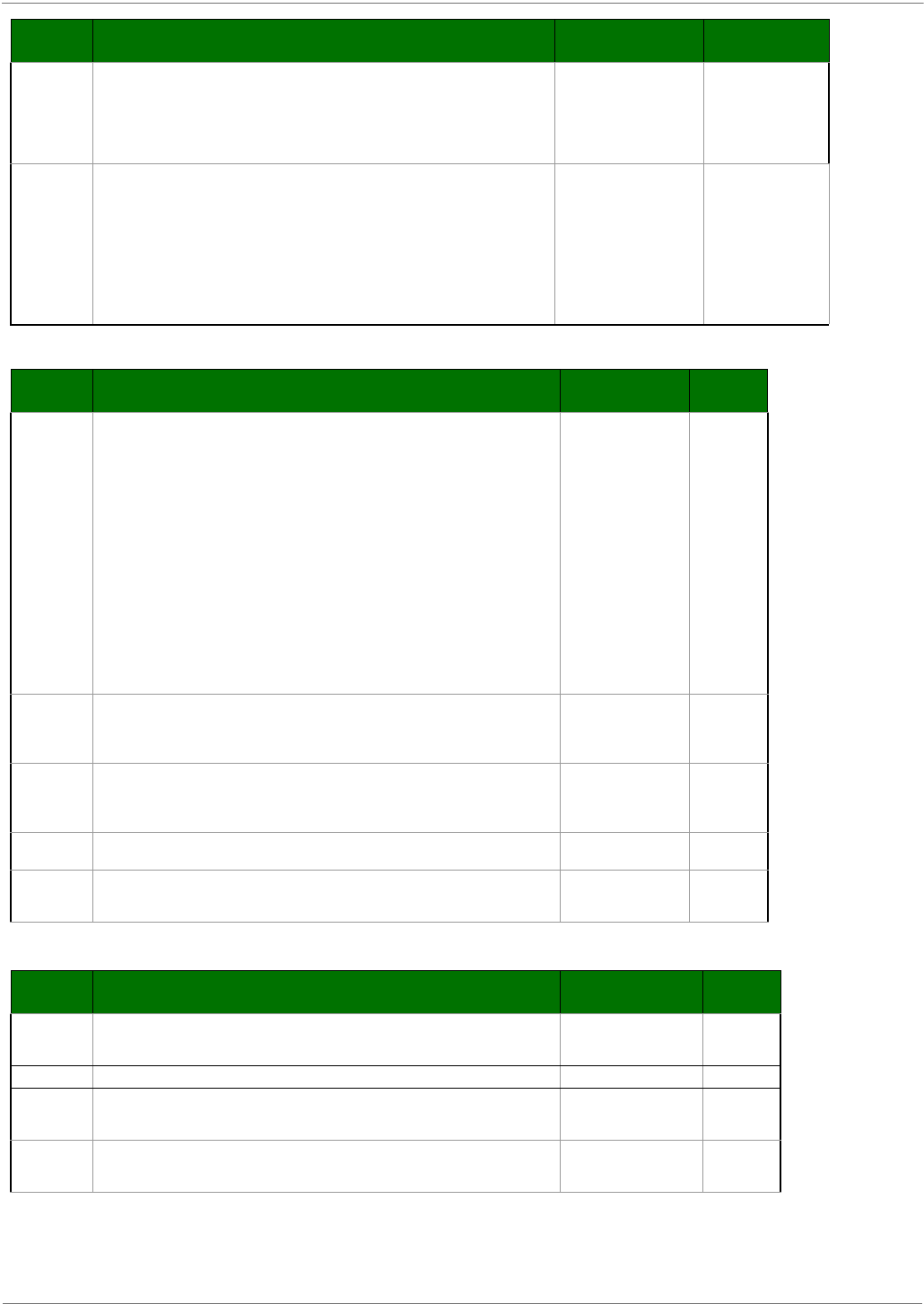
XBee‐PRO®900HP/XBee‐PRO®XSCRFModules
©2012DigiInternational,Inc. 55
Sleep Diagnostics
AT Command Options
ST
Wake Time. The wake period of the module.
For asynchronous sleep modules, this command defines the amount of time that the
module will stay awake after receiving RF or serial data.
For synchronous sleep modules, this command defines the amount of time that the
module will stay awake when operating in cyclic sleep mode. This value will be adjusted
upwards automatically if it is too small to function properly based on other settings.
0x45-0x36EE80 0x7D0 (2 seconds)
WH
Wake Host. The wake host timer value.
If the wake host timer is set to a non-zero value, this timer specifies a time (in
millisecond units) that the device should allow after waking from sleep before sending
data out the UART or transmitting an I/O sample. If serial characters are received, the
WH timer is stopped immediately.
When in synchronous sleep, the device will shorten its sleep period by the value
specified by the WH command to ensure that it is prepared to communicate when the
network wakes up. When in this this sleep mode, the device will always stay awake for
the WH time plus the amount of time it takes to transmit a one-hop unicast to another
node.
0-0xFFFF (x 1ms) 0
Table5‐011. Diagnostics‐SleepStatusTiming
AT
Command Name and Description Parameter Range Default
SS
Sleep Status. The SS command can be used to query a number of Boolean values
describing the status of the module.
Bit 0: This bit will be true when the network is in its wake state.
Bit 1: This bit will be true if the node is currently acting as a network sleep
coordinator.
Bit 2: This bit will be true if the node has ever received a valid sync message since
the time it was powered on.
Bit 3: This bit will be true if the node has received a sync message in the current
wake cycle.
Bit 4: This bit will be true if the user has altered the sleep settings on the module so
that the node will nominate itself and send a sync message with the new settings
at the beginning of the next wake cycle.
Bit 5: This bit will be true if the user has requested that the node nominate itself as
the sleep coordinator (using the commissioning button or the CB2 command).
Bit 6 = This bit will be true if the node is currently in deployment mode.
All other bits: Reserved - All non-documented bits can be any value and should be
ignored.
[read-only] 0x40
OS
Operational Sleep Period. The sleep period that the node is currently using. This
number will oftentimes be different from the SP parameter if the node has synchronized
with a sleeping router network.
Units of 10mSec
[read-only] 0x12C
OW
Operational Wake Period. The wake time that the node is currently using. This number
will oftentimes be different from the ST parameter if the node has synchronized with a
sleeping router network.
Units of 1 ms
[read-only] 0xBB8
MS Number of Missed Syncs. The number of wake cycles that have elapsed since the last
sync message was received. Supported in the 80k firmware variant only. [read-only] 0
SQ
Missed Sync Count. Count of the number of syncs that have been missed. This value
can be reset by setting ATSQ to 0. When the value reaches 0xFFFF it will not be
incremented anymore.
0-0xFFFF 0
Table5‐012. ATCommandOptions
AT
Command Name and Description Parameter Range Default
CC
Command Character. Set or read the character to be used between guard times of the
AT Command Mode Sequence. The AT Command Mode Sequence causes the radio
modem to enter Command Mode (from Idle Mode).
0 - 0xFF 0x2B
CN Exit Command Mode. Explicitly exit the module from AT Command Mode. n/a n/a
CT
Command Mode Timeout. Set/Read the period of inactivity (no valid commands
received) after which the RF module automatically exits AT Command Mode and returns
to Idle Mode.
2-0x1770 0x64 (100d)
GT
Guard Times. Set required period of silence before and after the Command Sequence
Characters of the AT Command Mode Sequence (GT + CC + GT). The period of silence
is used to prevent inadvertent entrance into AT Command Mode.
0 to 0xFFFF 0x3E8
(1000d)
AT
Command Name and Description Parameter Range Default
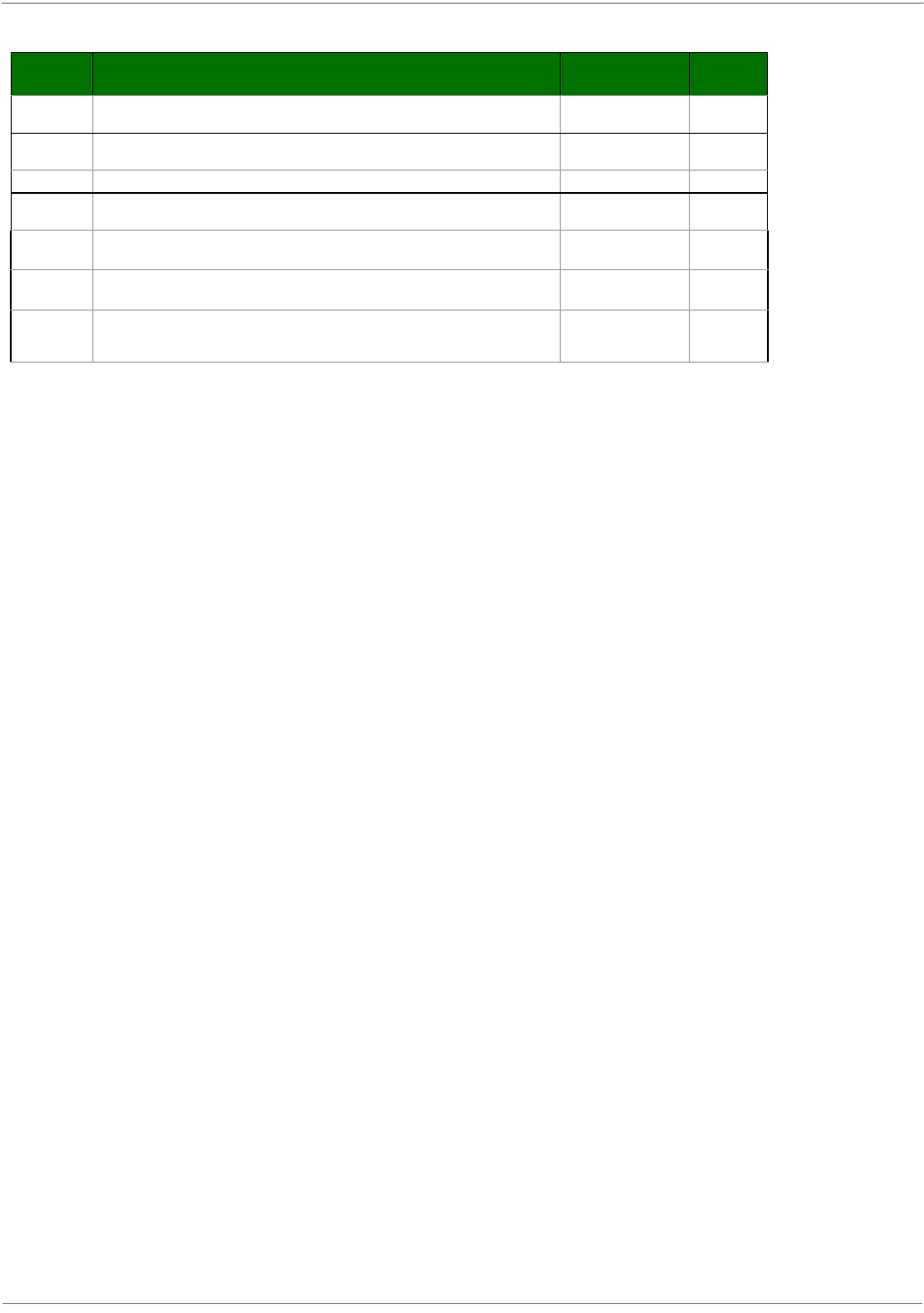
XBee‐PRO®900HP/XBee‐PRO®XSCRFModules
©2012DigiInternational,Inc. 56
Firmware Commands
Table5‐013. FirmwareVersion/Information
AT
Command Name and Description Parameter Range Default
VL Version Long. Shows detailed version information including application build date and
time. [read-only] n/a
VR Firmware Version. Read firmware version of the module. 0 - 0xFFFFFFFF [read-
only] Firmware-set
HV Hardware Version. Read hardware version of the module. 0 - 0xFFFF [read-only] Factory-set
HS Hardware Series. The module hardware series number. For example, if the module is
version S8B, this will return 0x801. 0-0xFFFF Factory-set
DD Device Type Identifier. Stores a device type value. This value can be used to
differentiate multiple XBee-based products.
0-0xFFFFFFFF
[ read only ] 0xC0000
NP Maximum RF Payload Bytes. This value returns the maximum number of RF payload
bytes that can be sent in a unicast transmission based on the current configurations.
0-0xFFFF
[read-only] 0x100
CK
Configuration CRC. The CRC of the current settings. The purpose of this command is
to allow the detection of an unexpected configuration change on a device. After a
firmware update, this command may return a different value.
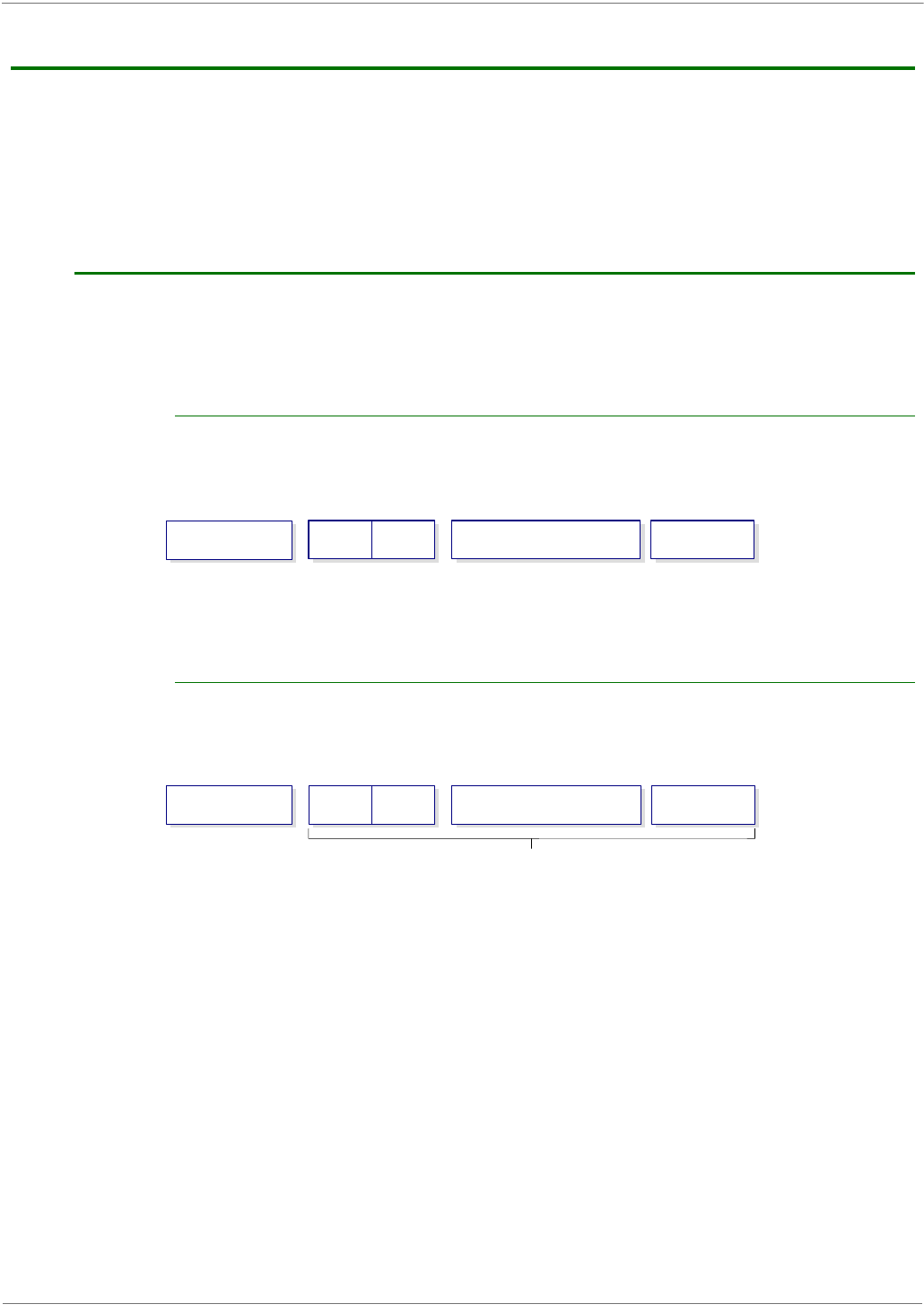
XBee‐PRO®900HP/XBee‐PRO®XSCRFModules
©2012DigiInternational,Inc. 57
6.APIOperation
As an alternative to Transparent Operation, API (Application Programming Interface) Operations are available.
API operation requires that communication with the module be done through a structured interface (data is
communicated in frames in a defined order). The API specifies how commands, command responses and
module status messages are sent and received from the module using a serial data frame.
Please note that Digi may add new frame types to future versions of firmware, so please build into your
software interface the ability to filter out additional API frames with unknown Frame Types.
API Frame Format
Two API modes are supported and both can be enabled using the AP (API Enable) command. Use the following
AP parameter values to configure the module to operate in a particular mode:
•AP = 1: API Operation
• AP = 2: API Operation (with escaped characters--possible on UART only)
API Operation (AP parameter = 1)
When this API mode is enabled (AP = 1), the serial data frame structure is defined as follows:
Figure6‐01. SerialDataFrameStructure:
MSB=MostSignificantByte,LSB=LeastSignificantByte
Any data received prior to the start delimiter is silently discarded. If the frame is not received correctly or if
the checksum fails, the module will reply with a module status frame indicating the nature of the failure.
API Operation - with Escape Characters (AP parameter = 2)
When this API mode is enabled (AP = 2), the UART data frame structure is defined as follows:
UARTDataFrameStructure‐withescapecontrolcharacters:
MSB=MostSignificantByte,LSB=LeastSignificantByte
Escape characters. When sending or receiving a UART data frame, specific data values must be escaped
(flagged) so they do not interfere with the data frame sequencing. To escape an interfering data byte, insert
0x7D and follow it with the byte to be escaped XOR’d with 0x20.
Length
(Bytes 2-3)
Checksum
(Byte n + 1)
MSB LSB 1 Byte
Start Delimiter
(Byte 1)
0x7E
Frame Data
(Bytes 4-n)
API-specific Structure
Start Delimiter
(Byte 1)
Length
(Bytes 2-3)
Frame Data
(Bytes 4-n)
Checksum
(Byte n + 1)
0x7E MSB LSB API-specific Structure 1 Byte
Characters Escaped If Needed
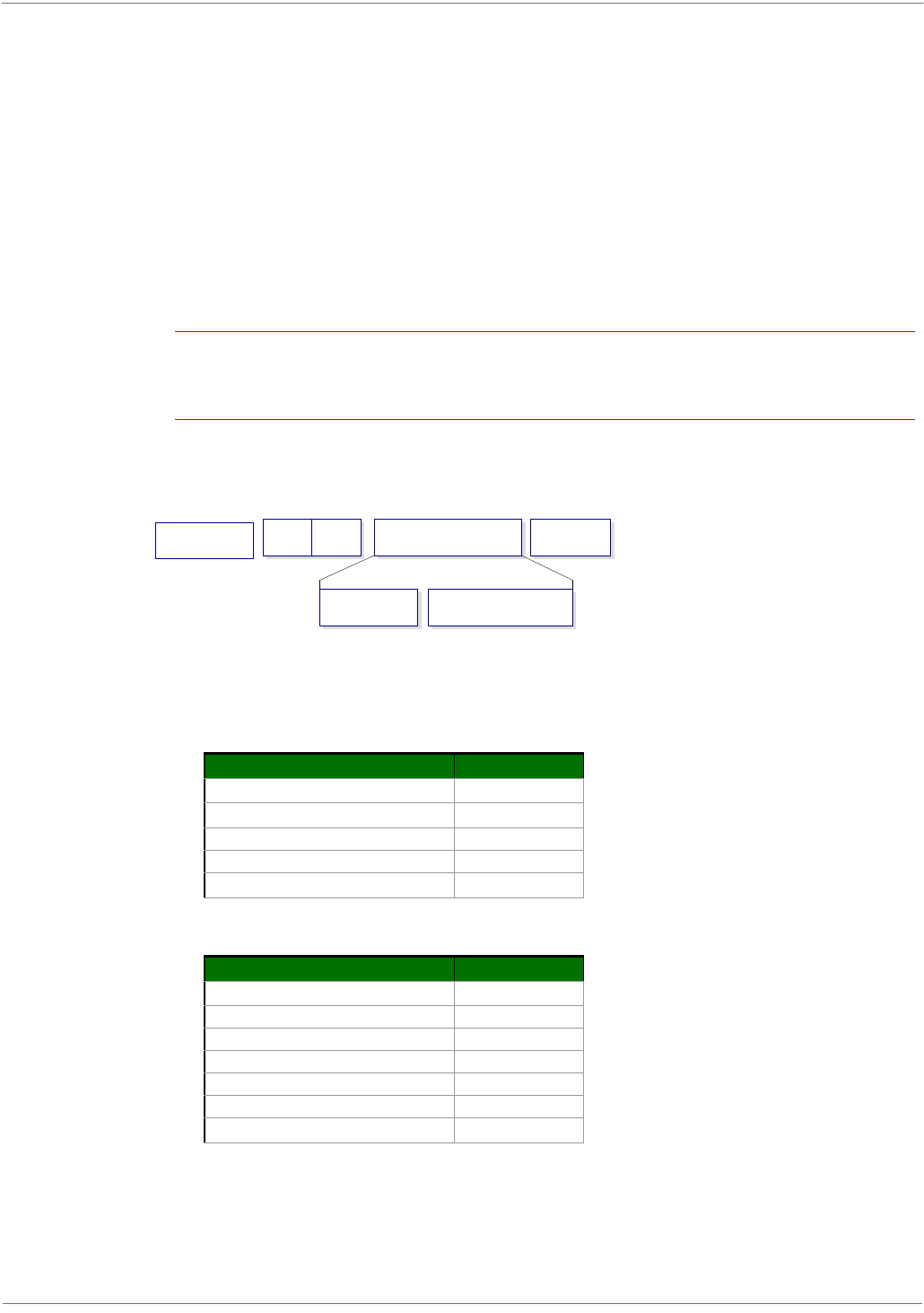
XBee‐PRO®900HP/XBee‐PRO®XSCRFModules
©2012DigiInternational,Inc. 58
Data bytes that need to be escaped:
• 0x7E – Frame Delimiter
•0x7D – Escape
• 0x11 – XON
• 0x13 – XOFF
Example - Raw serial data frame (before escaping interfering bytes):
0x7E 0x00 0x02 0x23 0x11 0xCB
0x11 needs to be escaped which results in the following frame:
0x7E 0x00 0x02 0x23 0x7D 0x31 0xCB
Note: In the above example, the length of the raw data (excluding the checksum) is 0x0002 and the
checksum of the non-escaped data (excluding frame delimiter and length) is calculated as:
0xFF - (0x23 + 0x11) = (0xFF - 0x34) = 0xCB.
Length
The length field has two-byte value that specifies the number of bytes that will be contained in the frame data
field. It does not include the checksum field.
Frame Data
Frame data of the serial data frame forms an API-specific structure as follows:
SerialDataFrame&API‐specificStructure:
The cmdID frame (API-identifier) indicates which API messages will be contained in the cmdData frame
(Identifier-specific data). Note that multi-byte values are sent big endian.The XBee modules support the
following API frames:
Note that requests are less than 0x80, and responses are always 0x80 or higher.
APIFrameNamesandValues SenttotheModule
API Frame Names API ID
AT Command 0x08
AT Command - Queue Parameter Value 0x09
TX Request 0x10
Explicit TX Request 0x11
Remote Command Request 0x17
APIFrameNamesandValues ReceivedfromtheModule
API Frame Names API ID
AT Command Response 0x88
Modem Status 0x8A
Transmit Status 0x8B
RX Indicator (AO=0) 0x90
Explicit Rx Indicator (AO=1) 0x91
Node Identification Indicator (AO=0) 0x95
Remote Command Response 0x97
Length
(Bytes 2-3)
Checksum
(Byte n + 1)
MSB LSB 1 Byte
Start Delimiter
(Byte 1)
0x7E
Frame Data
(Bytes 4-n)
API-specific Structure
Identifier-specific Data
cmdData
API Identifier
cmdID
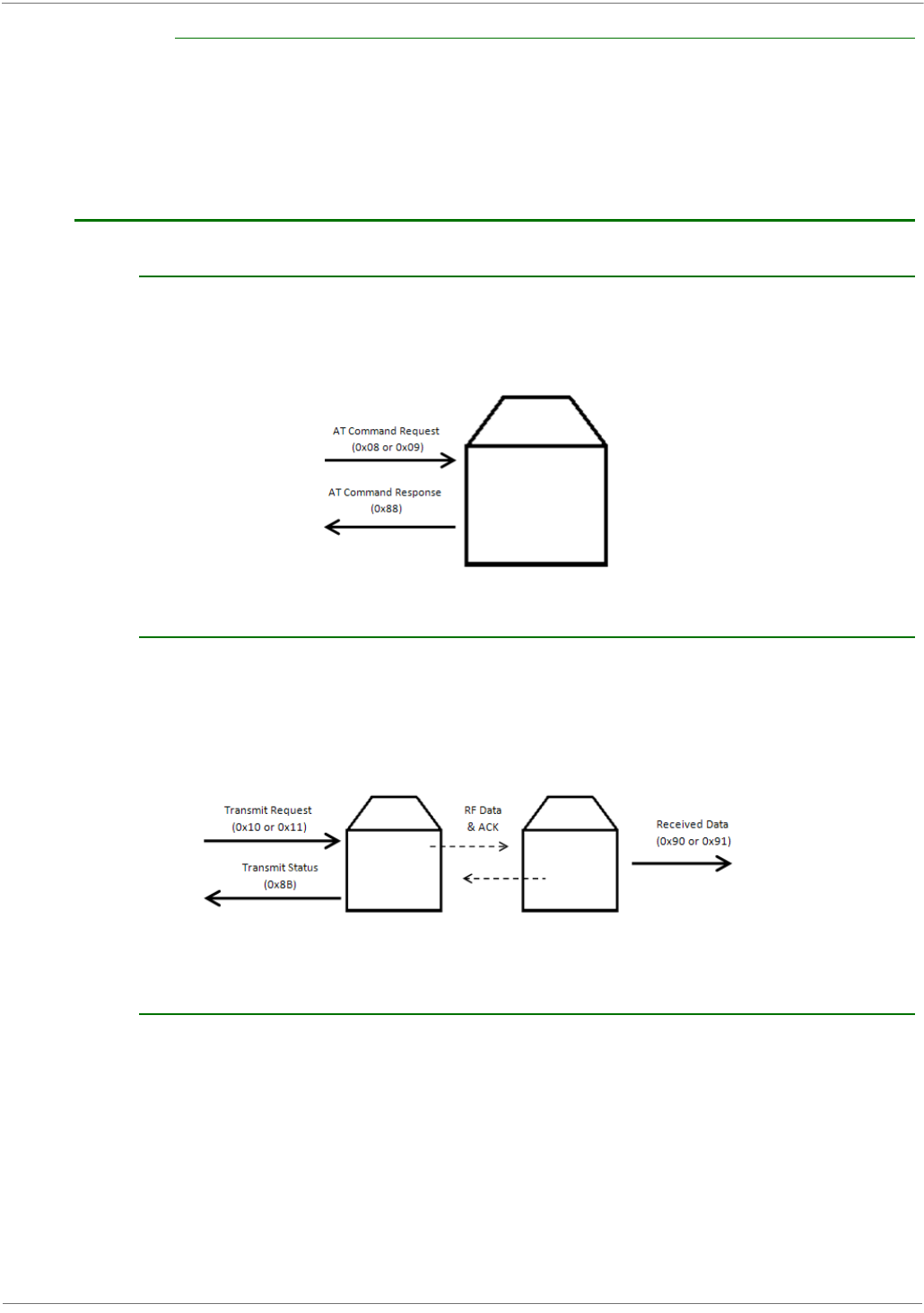
XBee‐PRO®900HP/XBee‐PRO®XSCRFModules
©2012DigiInternational,Inc. 59
Checksum
To test data integrity, a checksum is calculated and verified on non-escaped data.
To calculate: Not including frame delimiters and length, add all bytes keeping only the lowest 8 bits of the
result and subtract the result from 0xFF.
To verify: Add all bytes (include checksum, but not the delimiter and length). If the checksum is correct, the
sum will equal 0xFF.
API Serial Exchanges
AT Commands
The following image shows the API frame exchange that takes place at the serial interface when sending an AT
command request to read or set a module parameter. The response can be disabled by setting the frame ID to
0 in the request.
Transmitting and Receiving RF Data
The following image shows the API exchanges that take place at the serial interface when sending RF data to
another device. The transmit status frame is always sent at the end of a data transmission unless the frame ID
is set to 0 in the TX request. If the packet cannot be delivered to the destination, the transmit status frame
will indicate the cause of failure. The received data frame (0x90 or 0x91) is set by the AP command.
Remote AT Commands
The following image shows the API frame exchanges that take place at the serial interface when sending a
remote AT command. A remote command response frame is not sent out the serial interface if the remote
device does not receive the remote command.
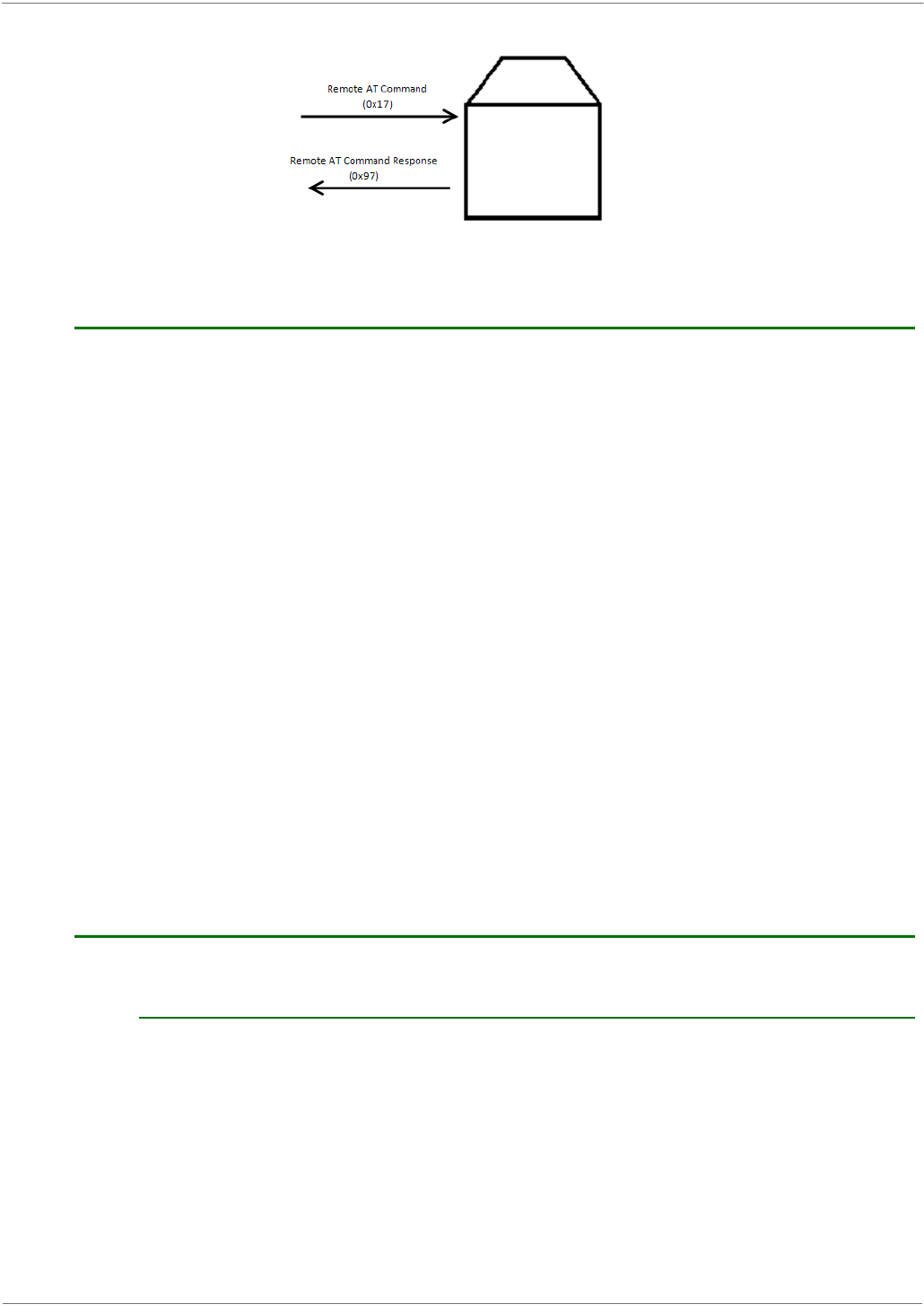
XBee‐PRO®900HP/XBee‐PRO®XSCRFModules
©2012DigiInternational,Inc. 60
Supporting the API
Applications that support the API should make provisions to deal with new API frames that may be introduced
in future releases. For example, a section of code on a host microprocessor that handles received serial API
frames (sent out the module's DOUT pin) might look like this:
Frame Descriptions
The following sections illustrate the types of frames encountered while using the API.
AT Command
Frame Type: 0x08
Used to query or set module parameters on the local device. This API command applies changes after
executing the command. (Changes made to module parameters take effect once changes are applied.) The
API example below illustrates an API frame when modifying the NH parameter value of the module
void XBee
_
HandleRxAPIFrame
(
_
apiFrameUnion
*
papiFrame
)
{
switch(papiFrame->api_id){
case RX_RF_DATA_FRAME:
//process received RF data frame
break;
case RX_IO_SAMPLE_FRAME:
//process IO sample frame
break;
case NODE_IDENTIFICATION_FRAME:
//process node identification frame
break;
default:
//Discard any other API frame types that are not being used
break;
}
}
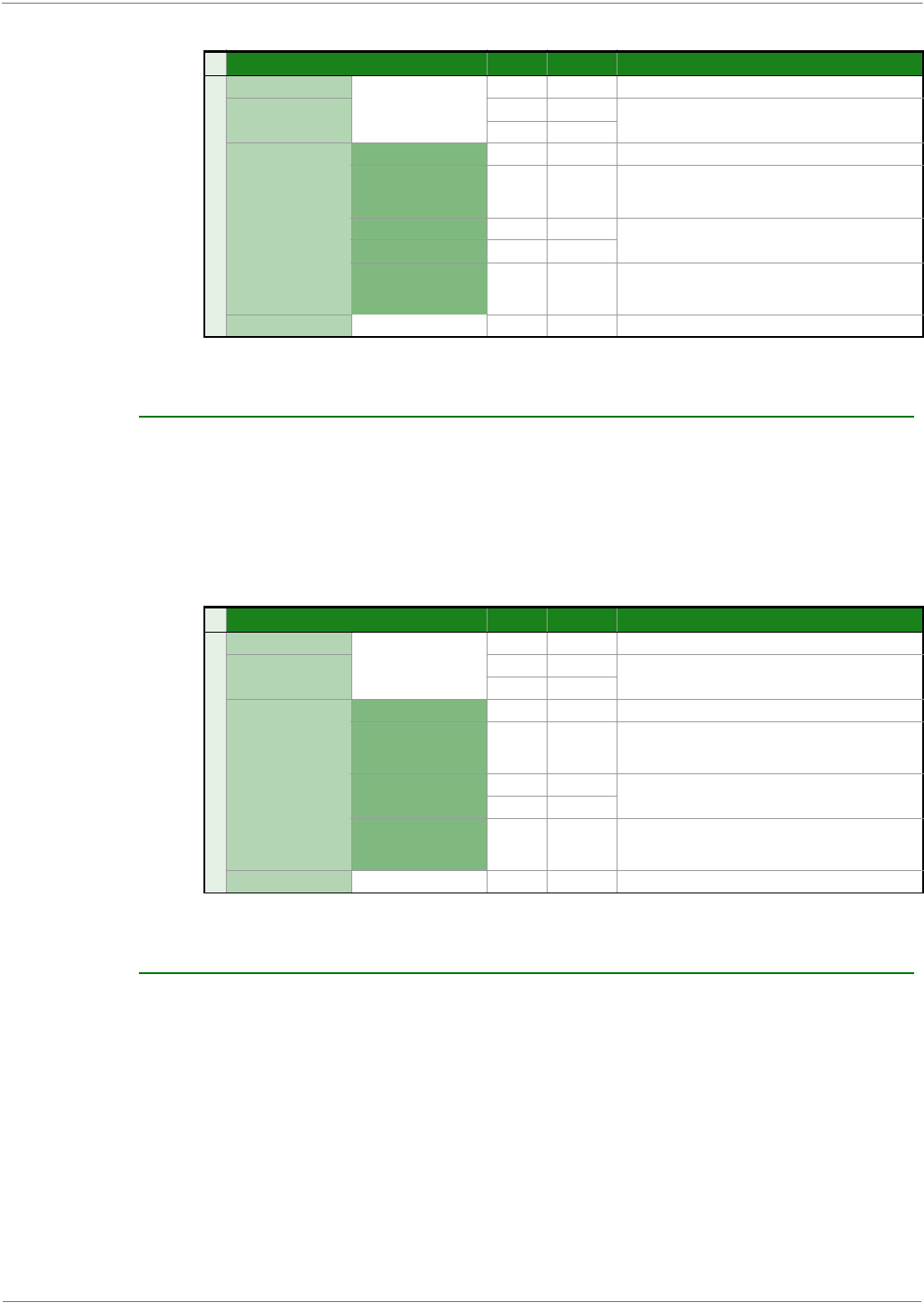
XBee‐PRO®900HP/XBee‐PRO®XSCRFModules
©2012DigiInternational,Inc. 61
The above example illustrates an AT command when querying an NH value.
AT Command - Queue Parameter Value
Frame Type: 0x09
This API type allows module parameters to be queried or set. In contrast to the “AT Command” API type, new
parameter values are queued and not applied until either the “AT Command” (0x08) API type or the AC (Apply
Changes) command is issued. Register queries (reading parameter values) are returned immediately.
Example: Send a command to change the baud rate (BD) to 115200 baud, but don't apply
changes yet. (Module will continue to operate at the previous baud rate until changes are applied.)
Note: In this example, the parameter could have been sent as a zero-padded 2-byte or 4-byte value.
TX Request
Frame Type: 0x10
A TX Request API frame causes the module to send data as an RF packet to the specified destination.
The 64-bit destination address should be set to 0x000000000000FFFF for a broadcast transmission (to all
devices). For unicast transmissions the 64 bit address field should be set to the address of the desired
destination node. The reserved field should be set to 0xFFFE.
This example shows if escaping is disabled (AP=1).
Frame Fields Offset Example Description
A
P
I
P
a
c
k
e
t
Start Delimiter 00x7E
Length MSB 1 0x00 Number of bytes between the length and the checksum
LSB 2 0x04
Frame-specific Data
Frame Type 30x08
Frame ID 40x52
Identifies this command for correlation to a later response
frame (0x88) to this command. If set to 0, no response
frame will be sent.
AT Command 50x4E (N) Command Name - Two ASCII characters that identify the
AT Command.
6 0x48 (H)
Parameter Value
(optional)
If present, indicates the requested parameter value to set
the given register. If no characters present, register is
queried.
Checksum 8 0x0F 0xFF - the 8 bit sum of bytes from offset 3 to this byte.
Frame Fields Offset Example Description
A
P
I
P
a
c
k
e
t
Start Delimiter 00x7E
Length MSB 1 0x00 Number of bytes between the length and the checksum
LSB 2 0x05
Frame-specific Data
Frame Type 30x09
Frame ID 40x01
Identifies the UART data frame for the host to correlate
with a subsequent ACK (acknowledgement). If set to 0,
no response is sent.
AT Command 5 0x42 (B) Command Name - Two ASCII characters that identify the
AT Command.
6 0x44 (D)
Parameter Value
(ATBD7 = 115200
baud)
0x07
If present, indicates the requested parameter value to set
the given register. If no characters present, register is
queried.
Checksum 8 0x68 0xFF - the 8 bit sum of bytes from offset 3 to this byte.
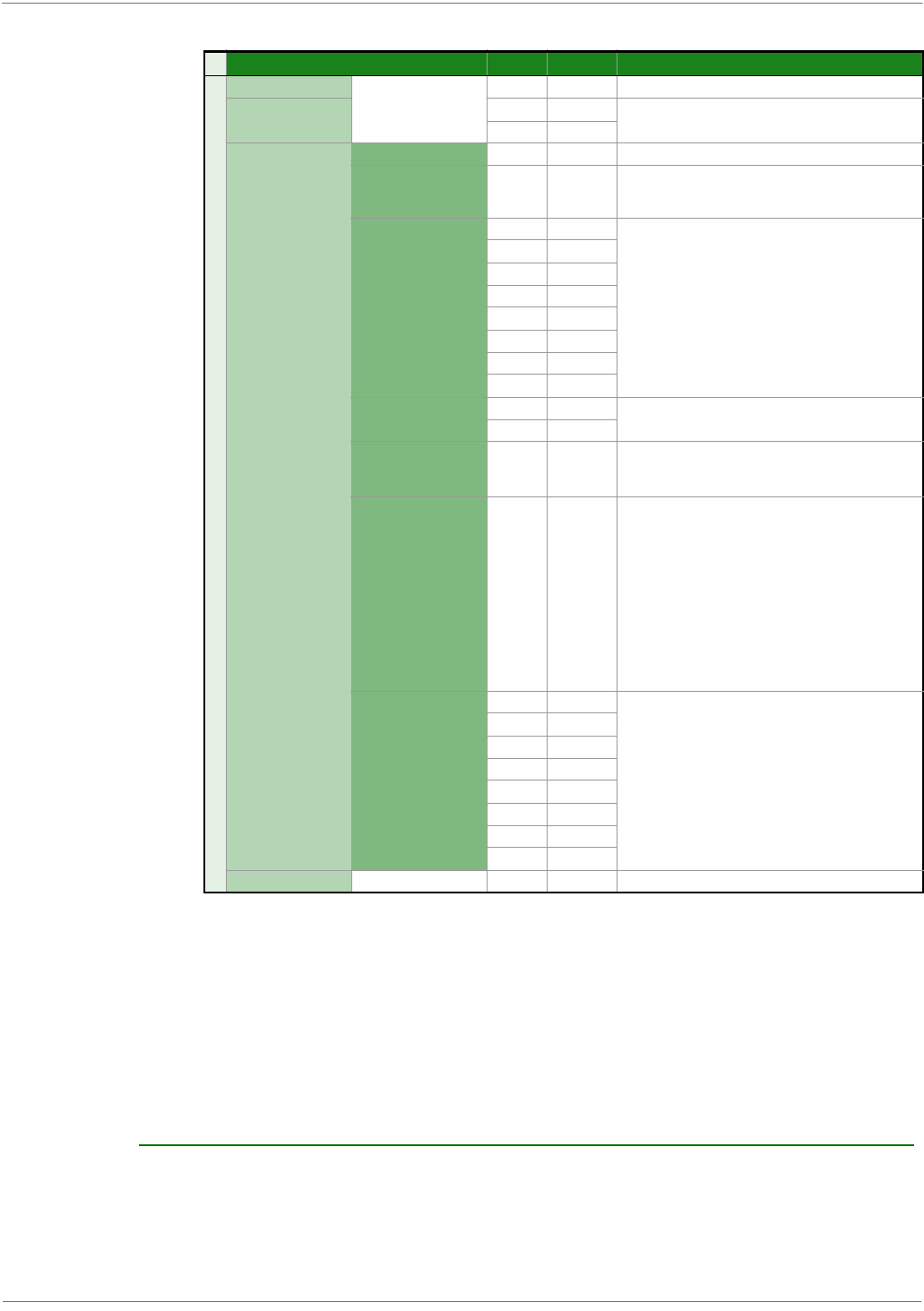
XBee‐PRO®900HP/XBee‐PRO®XSCRFModules
©2012DigiInternational,Inc. 62
Example: The example above shows how to send a transmission to a module where escaping is disabled
(AP=1) with destination address 0x0013A200 40014011, payload "TxData0A". If escaping is enabled (AP=2),
the frame should look like:
0x7E 0x00 0x16 0x10 0x01 0x00 0x7D 0x33 0xA2 0x00 0x40 0x0A 0x01 0x27
0xFF 0xFE 0x00 0x00 0x54 0x78 0x44 0x61 0x74 0x61 0x30 0x41 0x7D 0x33
The checksum is calculated (on all non-escaped bytes) as [0xFF - (sum of all bytes from API frame type
through data payload)].
Explicit TX Request
Frame Type: 0x11
Allows application layer fields (endpoint and cluster ID) to be specified for a data transmission. Similar to the
TX Request, but also requires application layer addressing fields to be specified (endpoints, cluster ID, profile
Frame Fields Offset Example Description
A
P
I
P
a
c
k
e
t
Start Delimiter 00x7E
Length MSB 1 0x00 Number of bytes between the length and the checksum
LSB 2 0x16
Frame-specific Data
Frame Type 30x10
Frame ID 40x01
Identifies this command for correlation to a later response
frame (0x90) to this command. If set to 0, no response
frame will be sent..
64-bit Destination
Address
MSB 5 0x00
Set to the 64-bit address of the destination device. The
following address is also supported:
0x000000000000FFFF - Broadcast address
60x13
70xA2
80x00
90x40
10 0x0A
11 0x01
LSB 12 0x27
Reserved 13 0xFF Set to 0xFFFE.
14 0xFE
Broadcast Radius 15 0x00
Sets maximum number of hops a broadcast transmission
can occur. If set to 0, the broadcast radius will
be set to the maximum hops value.
Transmit Options 16 0x00
If the Transmit Options Bitfield is 0, then the TO
parameter will be used.
Bitfield:
bit 0: Disable ACK
bit 1: Disable Route Discovery
bit 2: Enable Unicast NACK messages.
bit 3: Enable Unicast Trace Route messages.
bits 6,7: b’01 - Point-Multipoint
b’10 - Repeater mode (directed broadcast)
b’11 - DigiMesh (not available on 10k product)
All other bits must be set to 0.
RF Data
17 0x54
Data that is sent to the destination device
18 0x78
19 0x44
20 0x61
21 0x74
22 0x61
23 0x30
24 0x41
Checksum 25 0x13 0xFF - the 8 bit sum of bytes from offset 3 to this byte.
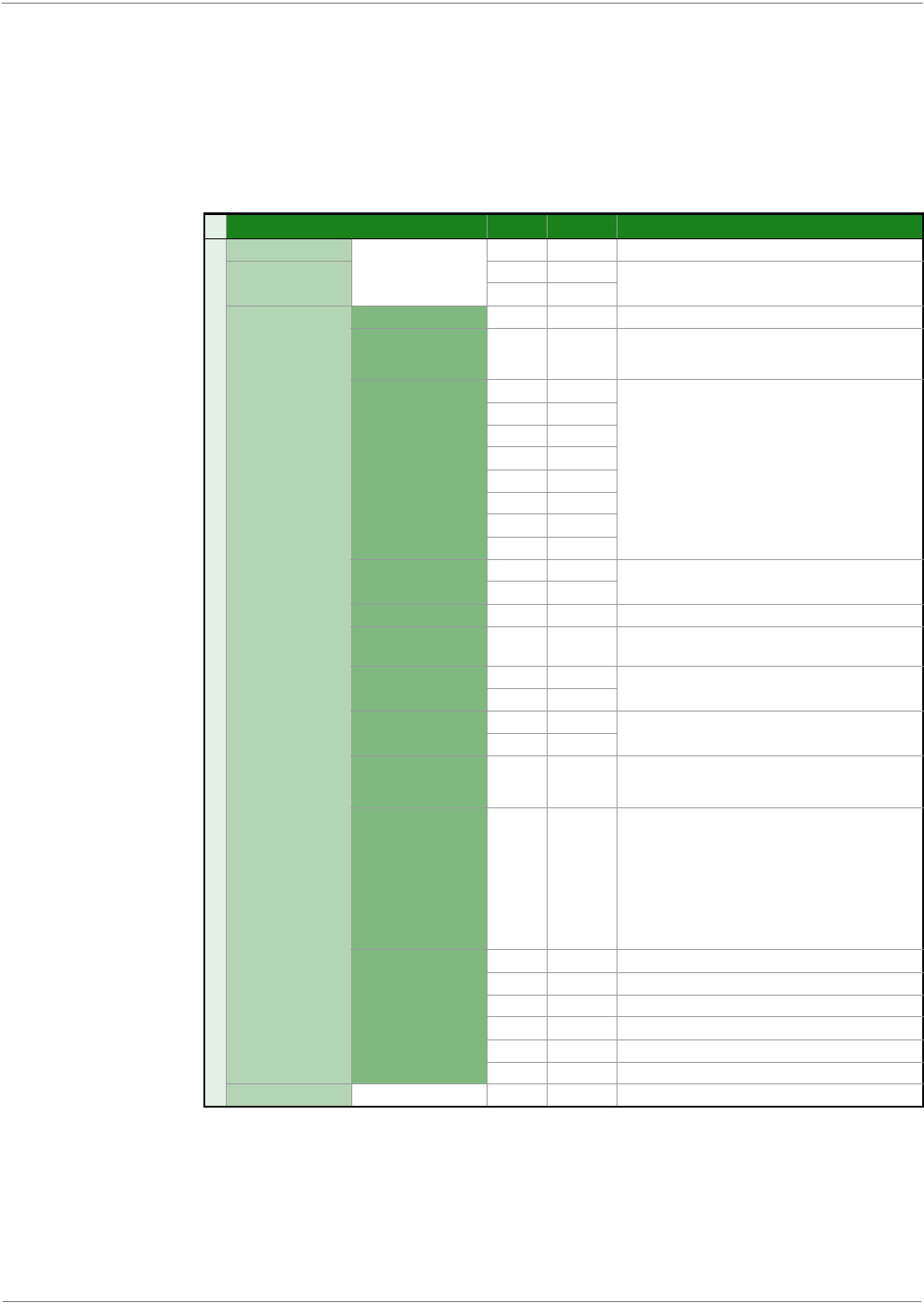
XBee‐PRO®900HP/XBee‐PRO®XSCRFModules
©2012DigiInternational,Inc. 63
ID). An Explicit TX Request API frame causes the module to send data as an RF packet to the specified
destination, using the specified source and destination endpoints, cluster ID, and profile ID.
The 64-bit destination address should be set to 0x000000000000FFFF for a broadcast transmission (to all
devices). For unicast transmissions the 64 bit address field should be set to the address of the desired
destination node. The reserved field should be set to 0xFFFE.
The broadcast radius can be set from 0 up to NH to 0xFF. If the broadcast radius exceeds the value of NH then
the value of NH will be used as the radius. This parameter is only used for broadcast transmissions.
The maximum number of payload bytes can be read with the NP command.
Example: The above example sends a data transmission to a radio with a 64 bit address of
0x0013A20001238400 using a source endpoint of 0xA0, destination endpoint 0xA1, cluster ID
=0x1554, and profile ID 0xC105. Payload will be "TxData".
Frame Fields Offset Example Description
A
P
I
P
a
c
k
e
t
Start Delimiter 00x7E
Length MSB 1 0x00 Number of bytes between the length and the checksum
LSB 2 0x1A
Frame-specific Data
Frame Type 30x11
Frame ID 40x01
Identifies this command for correlation to a later response
frame (0x91) to this command. If set to 0, no response
frame will be sent.
64-bit Destination
Address
MSB 5 0x00
Set to the 64-bit address of the destination device. The
following address is also supported:
0x000000000000FFFF - Broadcast address
60x13
70xA2
80x00
90x01
10 0x23
11 0x84
LSB12 0x00
Reserved 13 0xFF Set to 0xFFFE.
14 0xFE
Source Endpoint 15 0xA0 Source endpoint for the transmission.
Destination Endpoint 16 0xA1 Destination endpoint for the
transmission.
Cluster ID 17 0x15 Cluster ID used in the transmission
18 0x54
Profile ID 19 0xC1 Profile ID used in the transmission
20 0x05
Broadcast Radius 21 0x00
Sets the maximum number of hops a broadcast
transmission can traverse. If set to 0, the transmission
radius will be set to the network maximum hops value.
Transmit Options 22 0x00
If the Transmit Options Bitfield is 0, then the TO
parameter will be used.
Bitfield:
bit 0: Disable ACK
bit 1: Don't attempt route Discovery.
bit 2: Enable Unicast NACK messages.
bit 3: Enable Unicast Trace Route messages.
All other bits must be set to 0.
Data Payload
23 0x54
24 0x78
25 0x44
26 0x61
27 0x74
28 0x61
Checksum 29 0xDD 0xFF - the 8 bit sum of bytes from offset 3 to this byte.
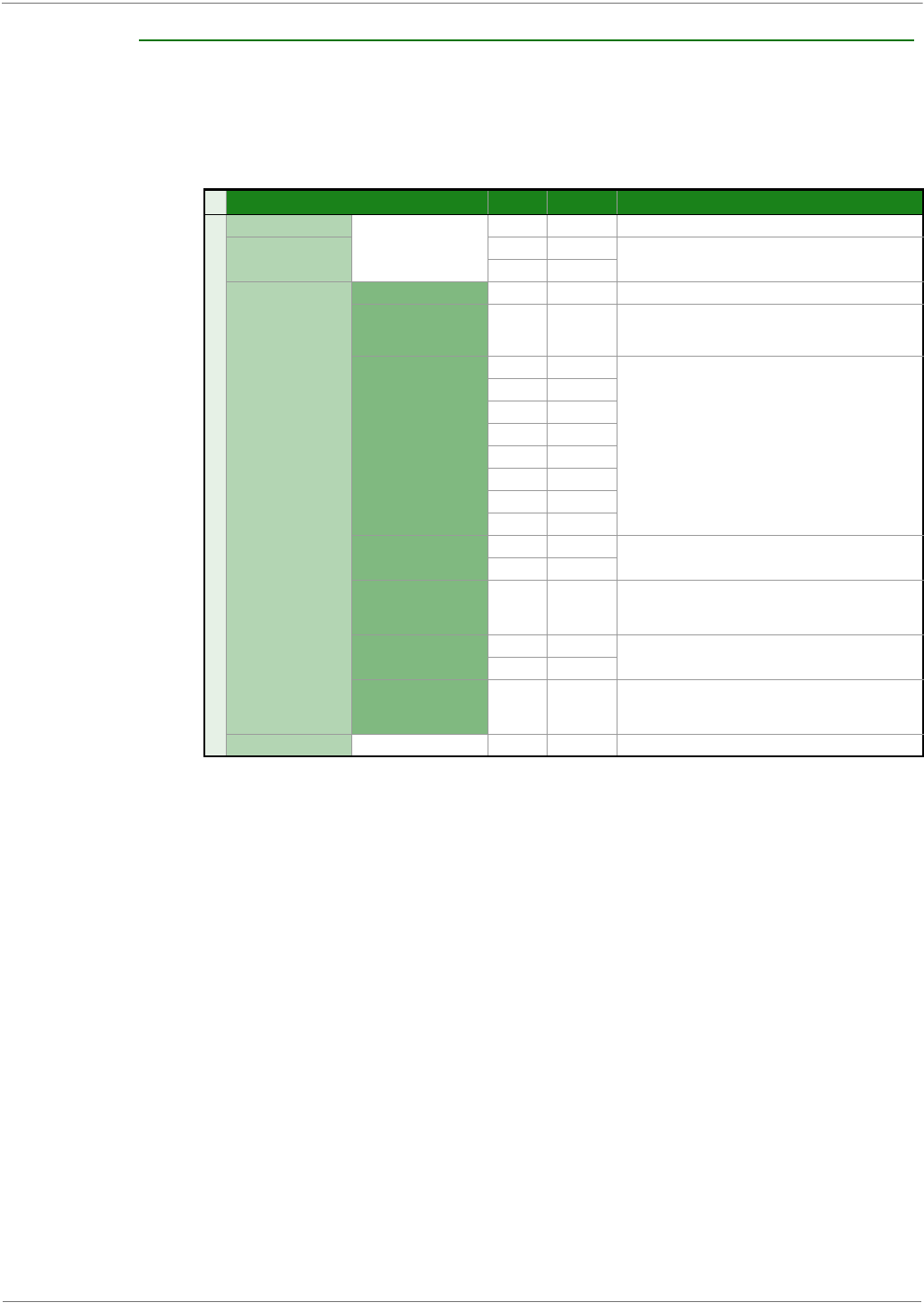
XBee‐PRO®900HP/XBee‐PRO®XSCRFModules
©2012DigiInternational,Inc. 64
Remote AT Command Request
Frame Type: 0x17
Used to query or set module parameters on a remote device. For parameter changes on the remote device to
take effect, changes must be applied, either by setting the apply changes options bit, or by sending an AC
command to the remote.
Example: The above example sends a remote command to change the broadcast hops register on
a remote device to 1 (broadcasts go to 1-hop neighbors only), and apply changes so the new
configuration value immediately takes effect. In this example, the 64-bit address of the remote is
0x0013A200 40401122.
Frame Fields Offset Example Description
A
P
I
P
a
c
k
e
t
Start Delimiter 00x7E
Length MSB 1 0x00 Number of bytes between the length and the checksum
LSB 2 0x10
Frame-specific Data
Frame Type 30x17
Frame ID 40x01
Identifies this command for correlation to a later response
frame (0x97) to this command. If set to 0, no response
frame will be sent.
64-bit Destination
Address
MSB 5 0x00
Set to the 64-bit address of the destination device. The
following address is also supported:
0x000000000000FFFF - Broadcast address
60x13
70xA2
80x00
90x40
10 0x40
11 0x11
LSB 12 0x22
Reserved 13 0xFF Set to 0xFFFE.
14 0xFE
Remote Command
Options 15 0x02 (apply
changes)
0x02 - Apply changes on remote. (If not set, AC
command must be sent before changes will take effect.)
All other bits must be set to 0.
AT Command 16 0x42 (B) Name of the command
17 0x48 (H)
Command Parameter 18 0x01
If present, indicates the requested parameter value to set
the given register. If no characters present,
the register is queried.
Checksum 18 0xF5 0xFF - the 8 bit sum of bytes from offset 3 to this byte.
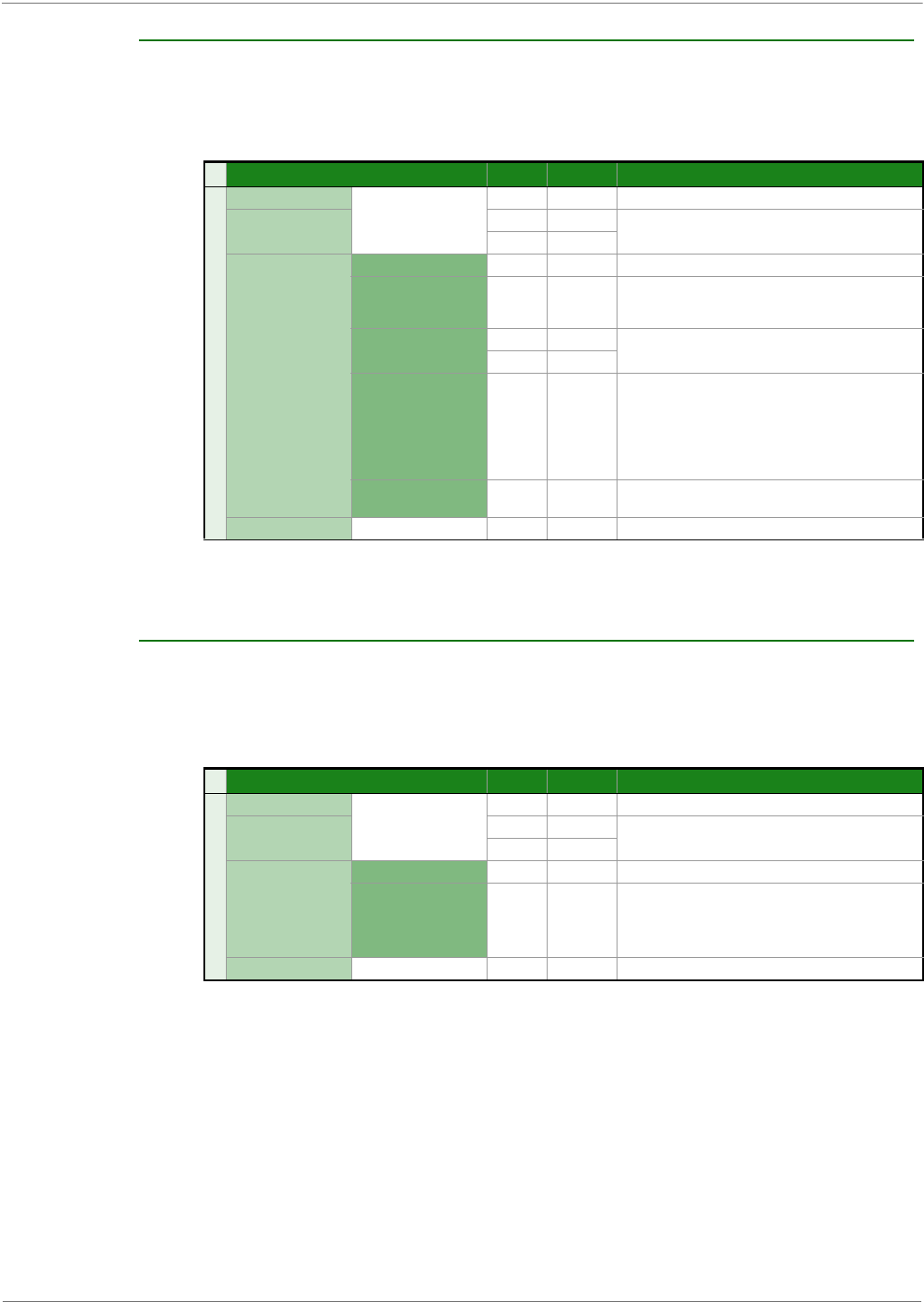
XBee‐PRO®900HP/XBee‐PRO®XSCRFModules
©2012DigiInternational,Inc. 65
AT Command Response
Frame Type: 0x88
In response to an AT Command message, the module will send an AT Command Response message. Some
commands will send back multiple frames (for example, the ND (Node Discover) command).
Example: Suppose the BD parameter is changed on the local device with a frame ID of 0x01. If
successful (parameter was valid), the above response would be received.
Modem Status
Frame Type: (0x8A)
RF module status messages are sent from the module in response to specific conditions.
Example: The following API frame is returned when an API device powers up.
Frame Fields Offset Example Description
A
P
I
P
a
c
k
e
t
Start Delimiter 00x7E
Length MSB 1 0x00 Number of bytes between the length and the checksum
LSB 2 0x05
Frame-specific Data
Frame Type 30x88
Frame ID 40x01
Identifies the serial interface data frame being reported.
Note: If Frame ID = 0 in the associated request frame
then no response frame will be delivered..
AT Command 5 ‘B’ = 0x42 Command Name - Two ASCII characters that identify the
AT Command.
6 ‘D’ = 0x44
Command Status 70x00
The least significant nibble indicates the command
status:
0 = OK
1 = ERROR
2 = Invalid Command
3 = Invalid Parameter
Command Data Register data in binary format. If the register was set,
then this field is not returned, as in this example.
Checksum 8 0xF0 0xFF - the 8 bit sum of bytes from offset 3 to this byte.
Frame Fields Offset Example Description
A
P
I
P
a
c
k
e
t
Start Delimiter 00x7E
Length MSB 1 0x00 Number of bytes between the length and the checksum
LSB 2 0x02
Frame-specific Data
Frame Type 30x8A
Status 40x00
0x00 = Hardware reset
0x01= Watchdog timer reset
0x0B = Network Woke Up
0x0C = Network Went To Sleep
Checksum 5 0x75 0xFF - the 8 bit sum of bytes from offset 3 to this byte.
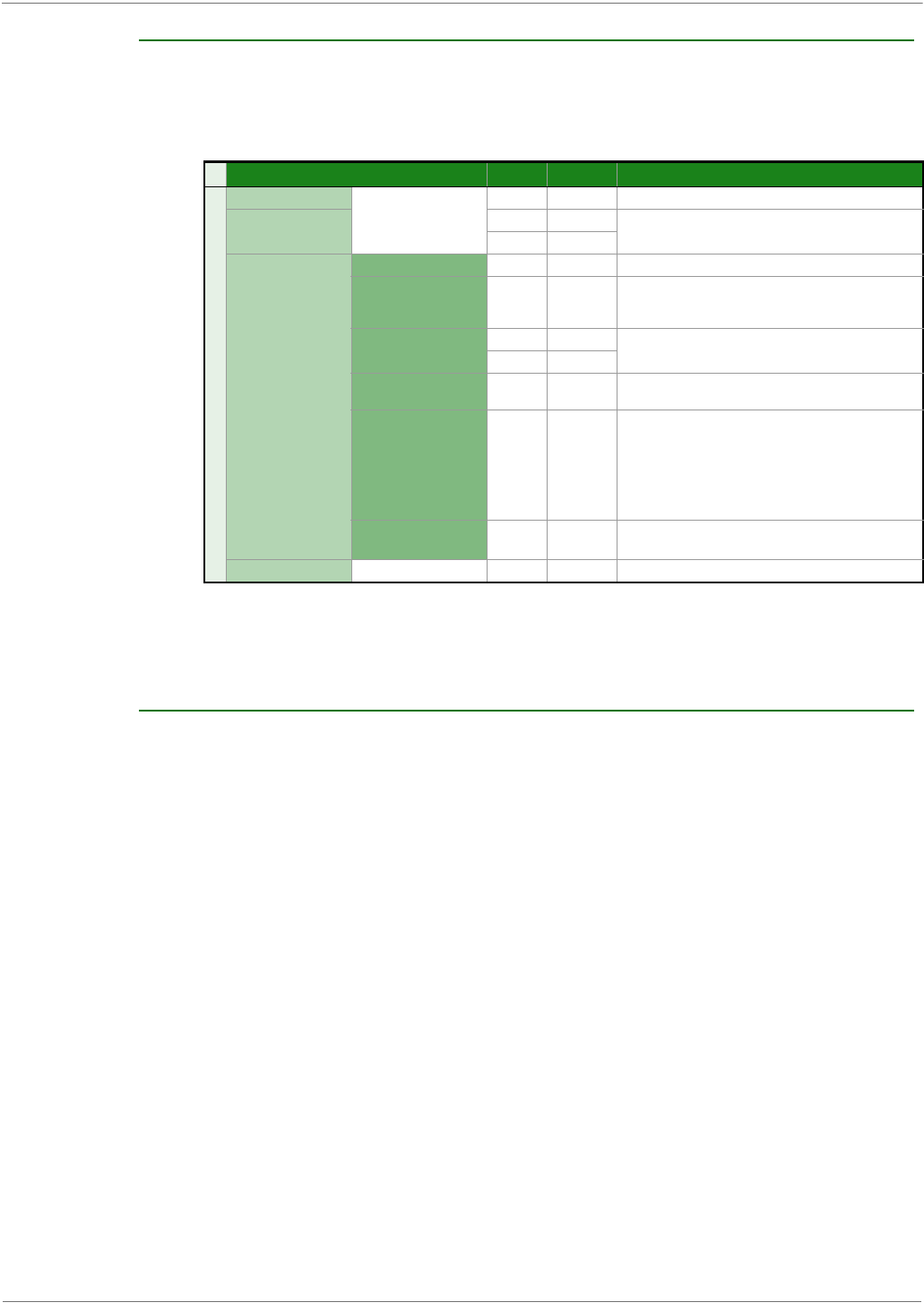
XBee‐PRO®900HP/XBee‐PRO®XSCRFModules
©2012DigiInternational,Inc. 66
Transmit Status
Frame Type: 0x8B
When a TX Request is completed, the module sends a TX Status message. This message will indicate if the
packet was transmitted successfully or if there was a failure.
Example: In the above example, a unicast data transmission was sent successfully to a
destination device using a frame ID of 0x47.)
Route Information Packet
Frame type: 0x8D
A Route Information Packet can be output for DigiMesh unicast transmissions on which the NACK enable or the
Trace Route enable TX option is enabled.
Frame Fields Offset Example Description
A
P
I
P
a
c
k
e
t
Start Delimiter 00x7E
Length MSB 1 0x00 Number of bytes between the length and the checksum
LSB 2 0x07
Frame-specific Data
Frame Type 30x8B
Frame ID 40x47
Identifies the serial interface data frame being reported.
Note:If Frame ID = 0 in the associated request frame then
no response frame will be delivered..
Reserved 50xFF Reserved.
60xFE
Transmit Retry Count 70x00 The number of application transmission retries that took
place.
Delivery Status 80x00
0x00 = Success
0x01 = MAC ACK Failure
0x21 = Network ACK Failure
0x25 = Route Not Found
0x74 = Payload too large.
0x75 = Indirect message unrequested.
Discovery Status 90x02 0x00 = No Discovery Overhead
0x02 = Route Discovery
Checksum 10 0x2E 0xFF - the 8 bit sum of bytes from offset 3 to this byte.
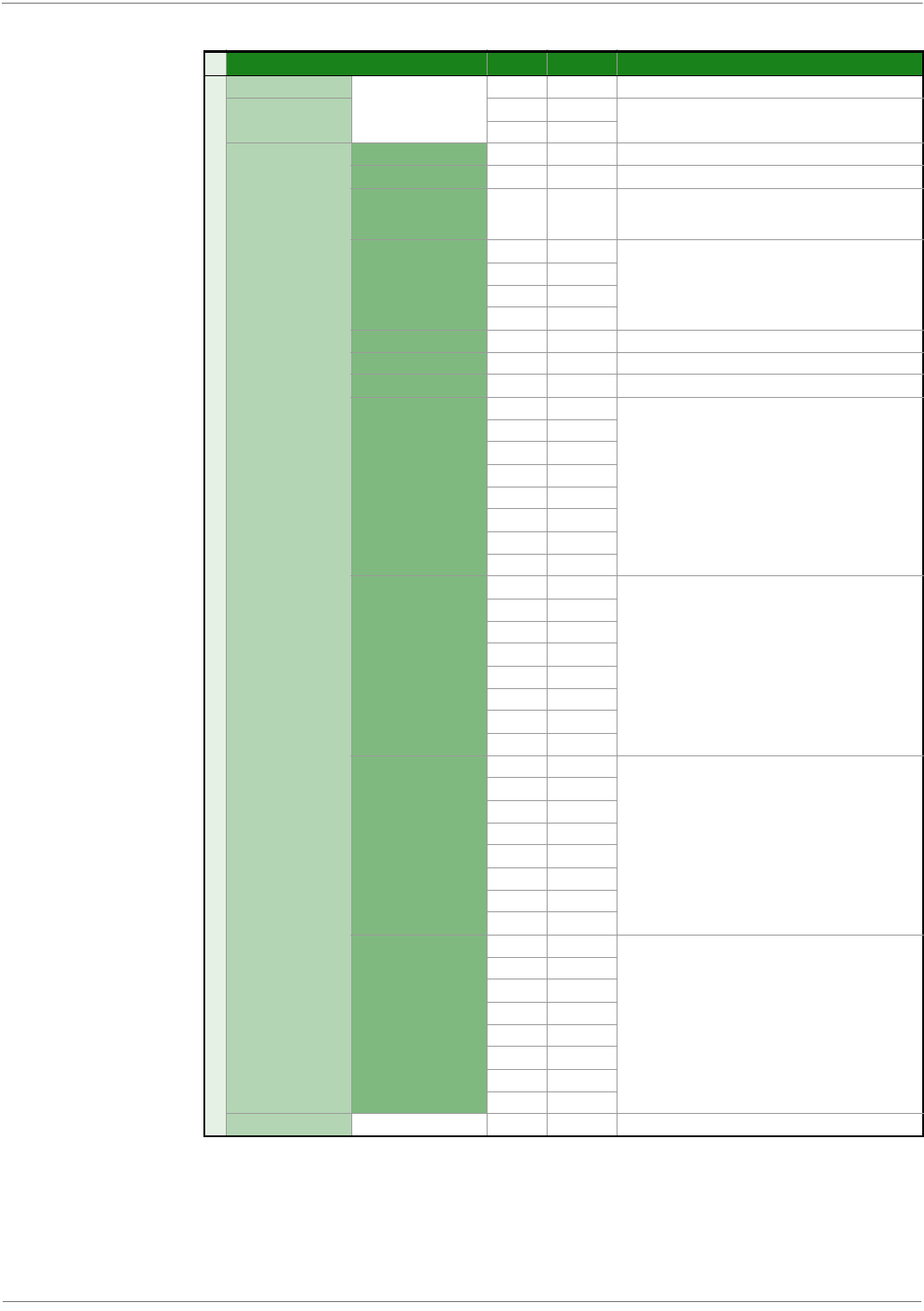
XBee‐PRO®900HP/XBee‐PRO®XSCRFModules
©2012DigiInternational,Inc. 67
Example: The above example represents a possible Route Information Frame that could be
received when doing a trace route on a transmission from a radio with serial number
0x0013a2004052AAAA to a radio with serial number 0x0013a2004052DDDD. This particular
Frame Fields Offset Example Description
A
P
I
P
a
c
k
e
t
Start Delimiter 00x7E
Length MSB 1 0x00 Number of bytes between the length and the checksum
LSB 2 0x2A
Frame-specific Data
Frame Type 30x8D
Source Evemt 4 0x12 0x11 = NACK, 0x12 = Trace Route
Length 50x2B
Number of bytes that follow (excluding checksum). If
length increases, then new items have been added to the
end of the list (for future revisions).
Timestamp
MSB 6 0x9C
System timer value on the node generating the Route
Information Packet.
70x93
80x81
LSB 9 0x7F
ACK Timout Count 10 0x00 The number of MAC ACK timeouts that occurred.
Reserved 11 0x00 Reserved
Reserved 12 0x00 Reserved
Destination Address
MSB 13 0x00
Address of the final destination node of this network level
transmission.
14 0x13
15 0xA2
16 0x00
17 0x40
18 0x52
19 0xAA
LSB 20 0xAA
Source Address
MSB 21 0x00
Address of the source node of this network level
transmission.
22 0x13
23 0xA2
24 0x00
25 0x40
26 0x52
27 0xDD
LSB 28 0xDD
Responder Address
MSB 29 0x00
Address of the node that generated this Route
Information Packet after sending (or attempting to send)
the packet to the next hop (the Reciever Node)
30 0x13
31 0xA2
32 0x00
33 0x40
34 0x52
35 0xBB
LSB 36 0xBB
Receiver Address
MSB 37 0x00
Address of the node to which the data packet was just
sent (or attempted to be sent to)
38 0x13
39 0xA2
40 0x00
41 0x40
42 0x52
43 0xCC
LSB 44 0xCC
Checksum 45 0xCE 0xFF - the 8 bit sum of bytes from offset 3 to this byte.
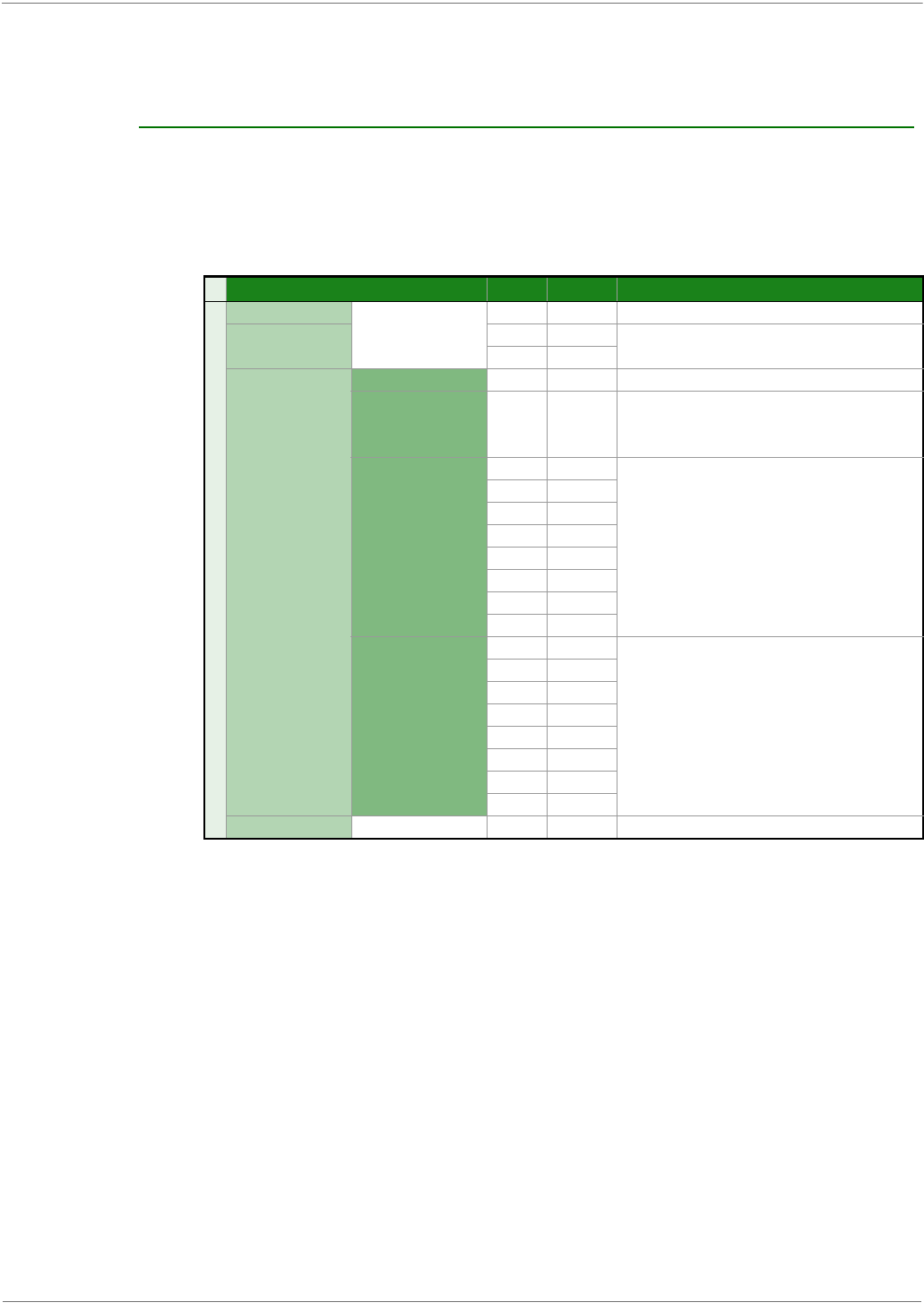
XBee‐PRO®900HP/XBee‐PRO®XSCRFModules
©2012DigiInternational,Inc. 68
frame indicates that the transmission was successfully forwarded from the radio with serial
number 0x0013a2004052BBBB to the radio with serial number 0x0013a2004052CCCC.
Aggregate Addressing Update
Frame type: 0x8E
An Aggregate Addressing Update frame is output on an API-enabled node when an address update frame
(generated by the AG command being issued on a node in the network) causes the node to update its DH and
DL registers.
Example: In the above example a radio which had a destination address (DH/DL) of
0x0013A2004052AAAA updated its destination address to 0x0013A2004052BBBB.
Frame Fields Offset Example Description
A
P
I
P
a
c
k
e
t
Start Delimiter 00x7E
Length MSB 1 0x00 Number of bytes between the length and the checksum
LSB 2 0x12
Frame-specific Data
Frame Type 30x8E
Format ID 40x00
Byte reserved to indicate format of additional packet
information which may be added in future firmware
revisions. In the current firmware revision, 0x00 is
returned in this field.
New Address
MSB 5 0x00
Address to which DH and DL are being set
60x13
70xA2
80x00
90x40
10 0x52
11 0xBB
LSB 12 0xBB
Old Address
13 0x00
Address to which DH and DL were previously set
14 0x13
15 0xA2
16 0x00
17 0x40
18 0x52
19 0xAA
20 0xAA
Checksum 21 0x2E 0xFF - the 8 bit sum of bytes from offset 3 to this byte.
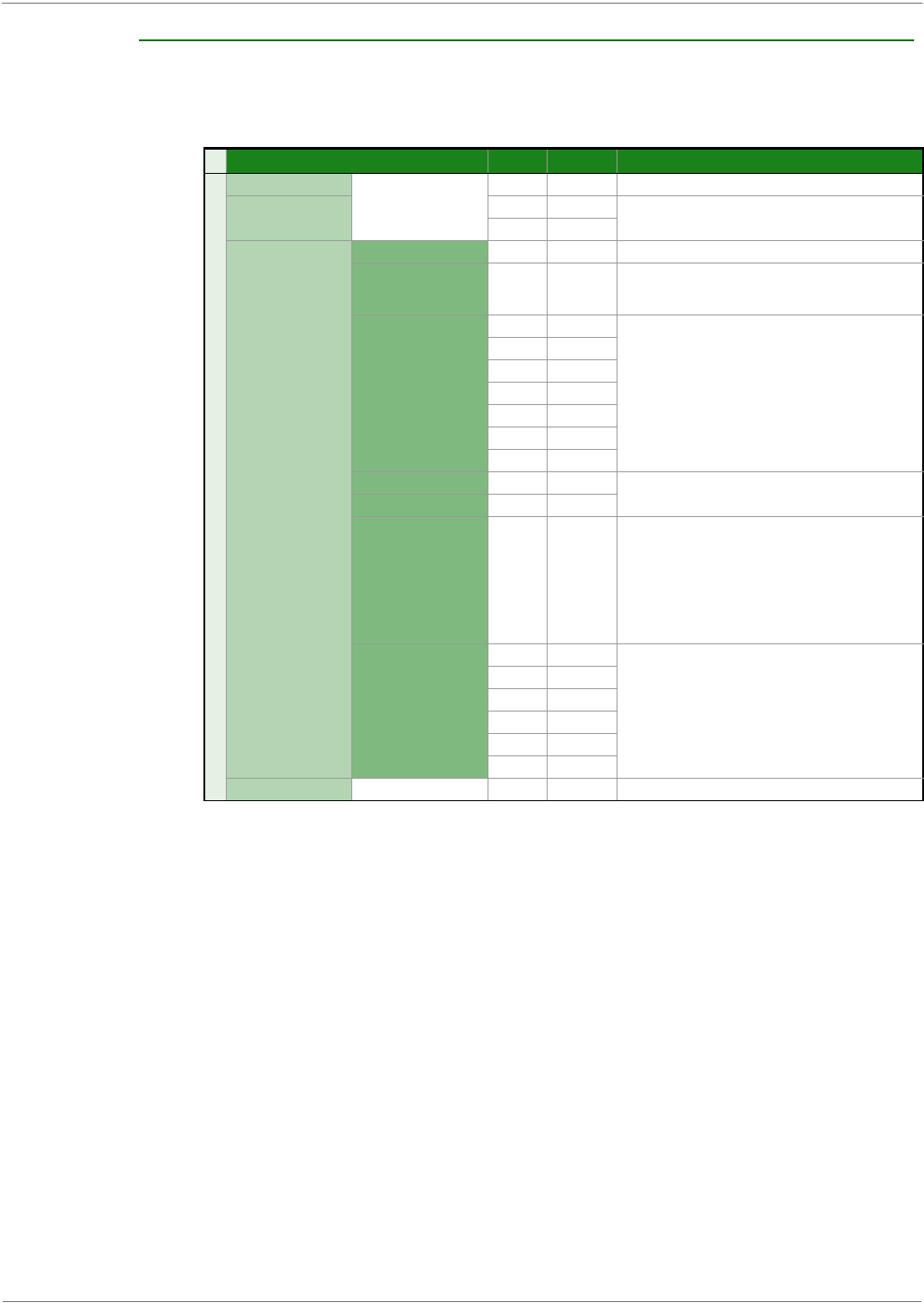
XBee‐PRO®900HP/XBee‐PRO®XSCRFModules
©2012DigiInternational,Inc. 69
RX Indicator
Frame Type: (0x90)
When the module receives an RF packet, it is sent out the UART using this message type.
Example: Example: In the above example, a device with a 64-bit address of 0x0013A200
40522BAA sends a unicast data transmission to a remote device with payload "RxData". If AO=0
on the receiving device, it would send the above frame out its serial interface.
Frame Fields Offset Example Description
A
P
I
P
a
c
k
e
t
Start Delimiter 00x7E
Length MSB 1 0x00 Number of bytes between the length and the checksum
LSB 2 0x12
Frame-specific Data
Frame Type 30x90
Frame ID 40x00
Identifies the UART data frame for the host to correlate
with a subsequent ACK (acknowledgement). If set to 0,
no response is sent.
64-bit Source
Address
MSB 5 0x13
64-bit address of sender
60xA2
70x00
80x40
90x52
10 0x2B
LSB 11 0xAA
Reserved 12 0xFF Reserved
13 0xFE
Receive Options 14 0x01
bit 0: Packet was acknowledged.
bit 1: Broadcasted packet.
bits 6,7:
b’01 - Point-Multipoint
b’10 - Repeater mode (directed broadcast)
b’11 - DigiMesh (not available on 10k product)
other bits should be ignored.
Received Data
15 0x52
Received RF data
16 0x78
17 0x44
18 0x61
19 0x74
20 0x61
Checksum 21 0x11 0xFF - the 8 bit sum of bytes from offset 3 to this byte.
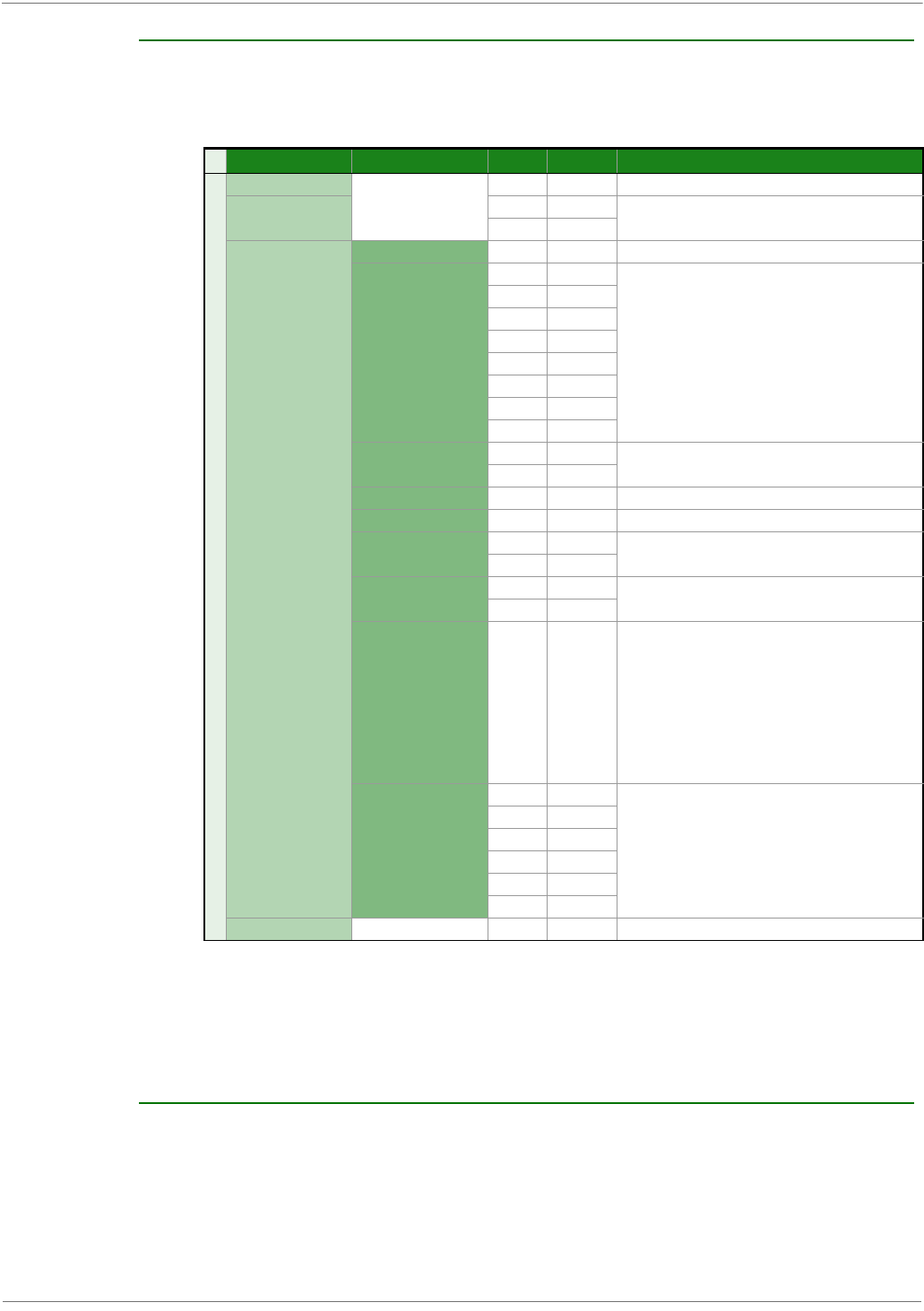
XBee‐PRO®900HP/XBee‐PRO®XSCRFModules
©2012DigiInternational,Inc. 70
Explicit Rx Indicator
Frame Type:0x91
When the modem receives an RF packet it is sent out the UART using this message type (when AO=1).
Example: In the above example, a device with a 64-bit address of 0x0013A200 40522BAA sends
a broadcast data transmission to a remote device with payload "RxData". Suppose the
transmission was sent with source and destination endpoints of 0xE0, cluster ID=0x2211, and
profile ID=0xC105. If AO=1 on the receiving device, it would send the above frame out its serial
interface.
Node Identification Indicator
Frame Type:0x95
This frame is received when a module transmits a node identification message to identify itself (when AO=0).
The data portion of this frame is similar to a network discovery response frame (see ND command).
Frame Fields Offset Example Description
A
P
I
P
a
c
k
e
t
Start Delimiter 00x7E
Length MSB 1 0x00 Number of bytes between the length and the checksum
LSB 2 0x18
Frame-specific Data
Frame Type 30x91
64-bit Source
Address
MSB 4 0x00
64-bit address of sender
50x13
60xA2
70x00
80x40
90x52
10 0x2B
LSB 11 0xAA
Reserved 12 0xFF Reserved.
13 0xFE
Source Endpoint 14 0xE0 Endpoint of the source that initiated the transmission
Destination Endpoint 15 0xE0 Endpoint of the destination the message is addressed to.
Cluster ID 16 0x22 Cluster ID the packet was addressed to.
17 0x11
Profile ID 18 0xC1 Profile ID the packet was addressed to.
19 0x05
Receive Options 20 0x02
bit 0: Packet was acknowledged.
bit 1: Broadcasted packet.
bits 6,7
b’01 - Point-Multipoint
b’10 - Repeater mode (directed broadcast)
b’11 - DigiMesh (not available on 10k product)
other bits should be ignored.
Received Data
21 0x52
Received RF data
22 0x78
23 0x44
24 0x61
25 0x74
26 0x61
Checksum 27 0x56 0xFF - the 8 bit sum of bytes from offset 3 to this byte.
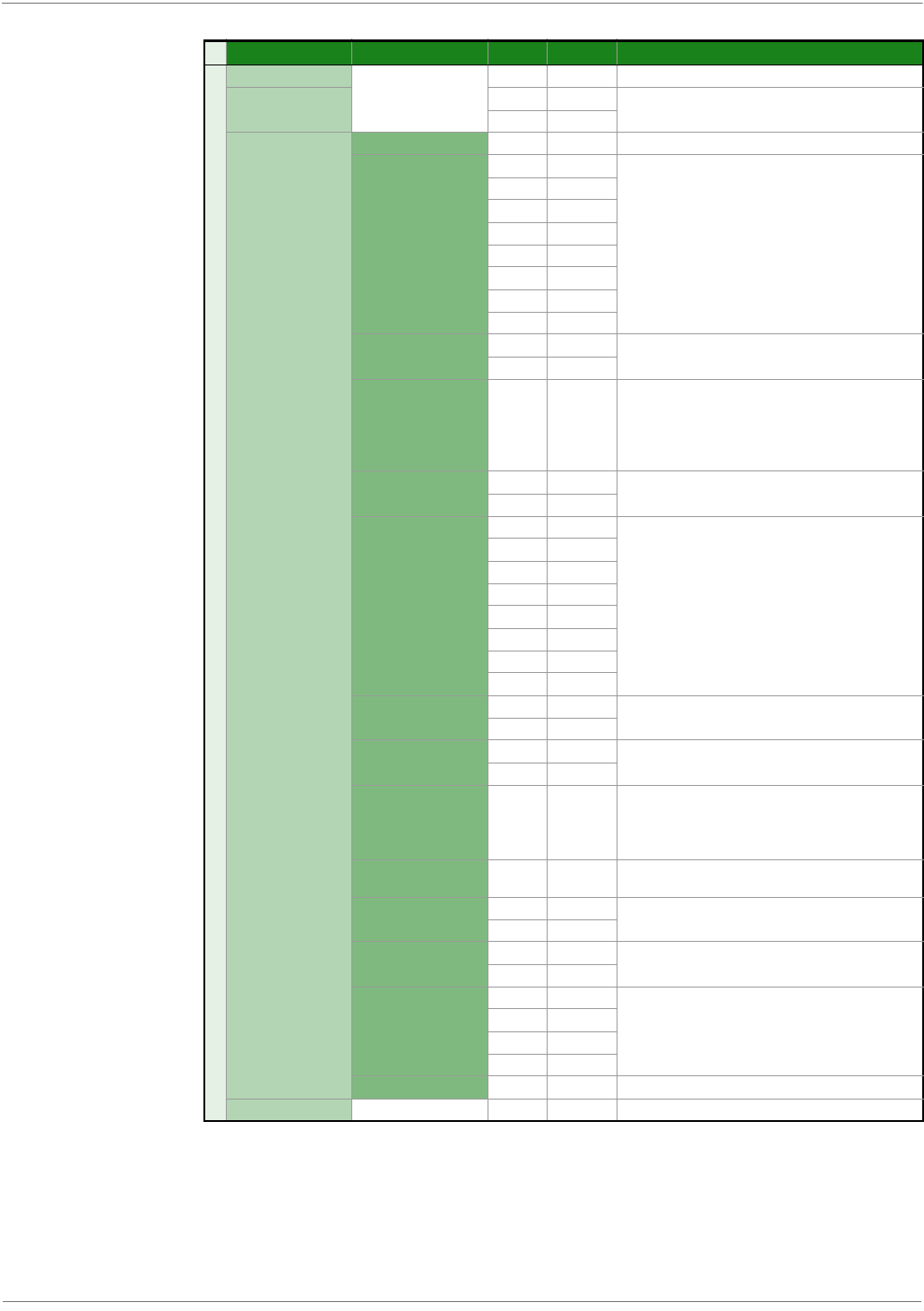
XBee‐PRO®900HP/XBee‐PRO®XSCRFModules
©2012DigiInternational,Inc. 71
Example: If the commissioning push button is pressed on a remote router device with 64-bit
address 0x0013a200407402ac and default NI string, the following node identification indicator
would be received: 0x7e 0025 9500 13a2 0040 7402 acff fec2 fffe 0013 a200 4074 02ac 2000 fffe
0101 c105 101e 000c 0000 2e33
Frame Fields Offset Example Description
A
P
I
P
a
c
k
e
t
Start Delimiter 00x7E
Length MSB 1 0x00 Number of bytes between the length and the checksum
LSB 2 0x25
Frame-specific Data
Frame Type 30x95
64-bit Source
Address
MSB 4 0x00
64-bit address of sender
50x13
60xA2
70x00
80x40
90x74
10 0x02
LSB 11 0xAC
Reserved 12 0xFF Reserved.
13 0xFE
Receive Options 14 0xC2
0x01 - Packet Acknowledged
0x02 - Packet was a broadcast packet
0x40 - Point-multipoint packet
0x80 - Directed broadcast packet
0xC0 - DigiMesh packet
Reserved 15 0xFF Reserved
16 0xFE
64-bit Address
MSB 17 0x00
Indicates the 64-bit address of the remote module that
transmitted the node identification frame.
18 0x13
19 0xA2
20 0x00
21 0x40
22 0x74
23 0x02
LSB 24 0xAC
NI String 25 0x20 Node identifier string on the remote device. The NI string
is terminated with a NULL byte (0x00).
26 0x00
Reserved 27 0xFF Reserved
28 0xFE
Device Type 29 0x01
0=Coordinator
1=Normal Mode
2=End Device
(See the NO command description for more options)
Source Event 30 0x01 1=Frame sent by node identification pushbutton event
(See D0 command description)
Digi Profile ID 31 0xC1 Set to Digi’s application profile ID
32 0x05
Digi Manufacturer ID 33 0x10 Set to Digi’s Manufacturer ID
34 0x1E
Digi DD Value
(optional)
35 0x00
Reports the DD value of the responding module (this field
can be enabled with the NO command)
36 0x0C
37 0x00
38 0x00
RSSI (optional) 39 0x2E RSSI (this field can be enabled with the NO command)
Checksum 40 0x33 0xFF - the 8 bit sum of bytes from offset 3 to this byte.
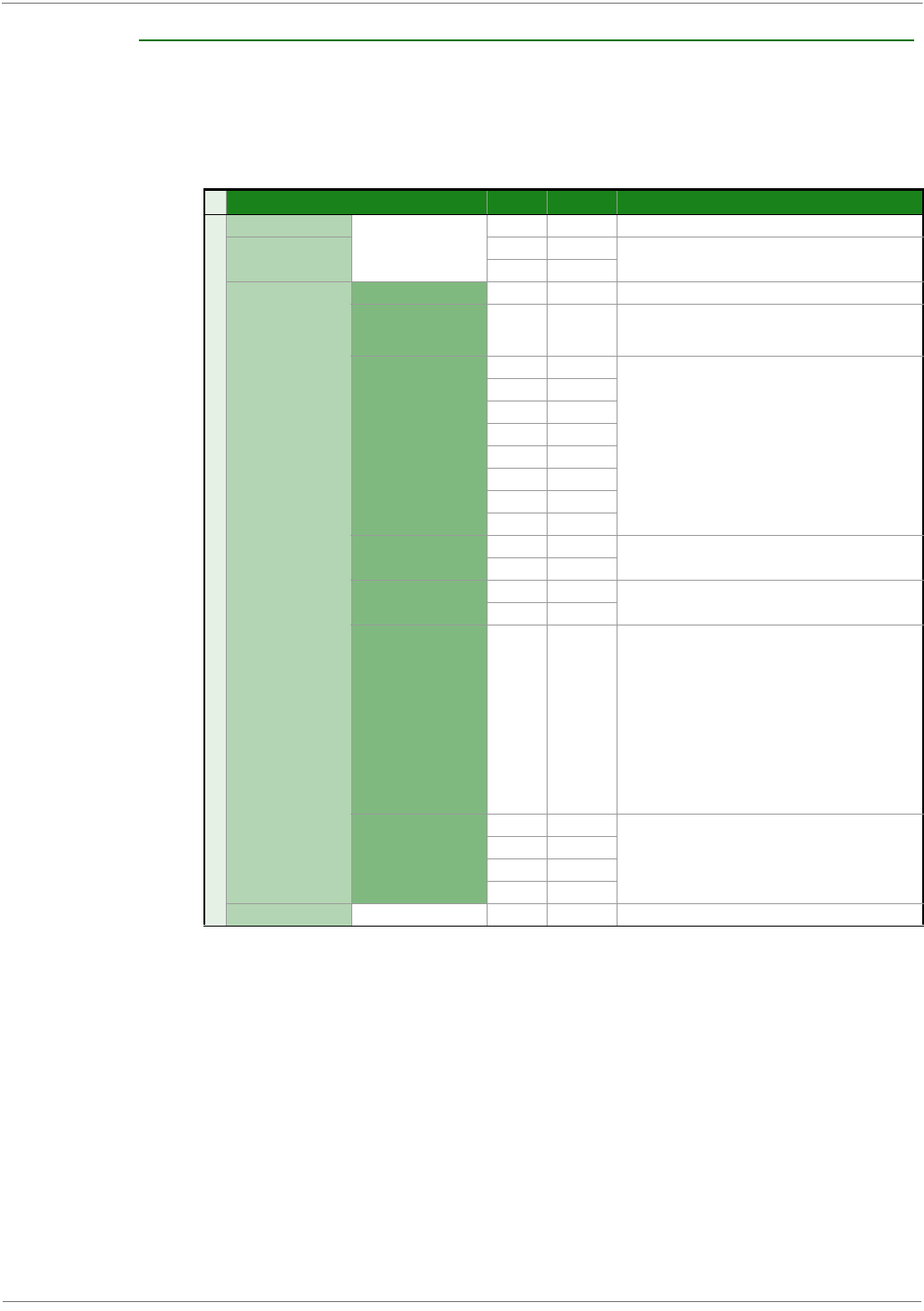
XBee‐PRO®900HP/XBee‐PRO®XSCRFModules
©2012DigiInternational,Inc. 72
Remote Command Response
Frame Type: 0x97
If a module receives a remote command response RF data frame in response to a Remote AT Command
Request, the module will send a Remote AT Command Response message out the serial interface. Some
commands may send back multiple frames--for example, Node Discover (ND) command.
Example: If a remote command is sent to a remote device with 64-bit address 0x0013A200
40522BAA to query the SL command, and if the frame ID=0x55, the response would look like the
above example.
Frame Fields Offset Example Description
A
P
I
P
a
c
k
e
t
Start Delimiter 00x7E
Length MSB 1 0x00 Number of bytes between the length and the checksum
LSB 2 0x13
Frame-specific Data
Frame Type 30x97
Frame ID 40x55
This is the same value passed in to the request. If Frame
ID = 0 in the associated request frame then no response
frame will be delivered.
64-bit Source
(remote) Address
MSB 5 0x00
The address of the remote radio returning this response.
60x13
70xA2
80x00
90x40
10 0x52
11 0x2B
LSB 12 0xAA
Reserved 13 0xFF Reserved
14 0xFE
AT Commands 15 0x53 Name of the command
16 0x4C
Command Status 17 0x00
The least significant nibble indicates the command
status:
0 = OK
1 = ERROR
2 = Invalid Command
3 = Invalid Parameter
The most significant nibble is a bitfield as follows:
0x40 = The RSSI field is invalid and should be ignored.
Software prior to version 8x60 did not include RSSI
information
0x80 = Response is a remote command.
Command Data
18 0x40
The value of the required register
19 0x52
20 0x2B
21 0xAA
Checksum 22 0xF4 0xFF - the 8 bit sum of bytes from offset 3 to this byte.

XBee‐PRO®900HP/XBee‐PRO®XSCRFModules
©2012DigiInternational,Inc. 73
7.AdvancedApplicationFeatures
Remote Configuration Commands
A module in API mode has provisions to send configuration commands to remote devices using the Remote
Command Request API frame (See API Operations chapter.) This API frame can be used to send commands to
a remote module to read or set command parameters.
Sending a Remote Command
To send a remote command, the Remote Command Request frame should be populated with the 64-bit
address of the remote device, the correct command options value, and the command and parameter data
(optional). If a command response is desired, the Frame ID should be set to a non-zero value. Only unicasts
of remote commands are supported. Remote commands cannot be broadcast.
Applying Changes on Remote Devices
When remote commands are used to change command parameter settings on a remote device, parameter
changes do not take effect until the changes are applied. For example, changing the BD parameter will not
change the actual serial interface rate on the remote until the changes are applied. Changes can be applied
using remote commands in one of three ways:
• Set the apply changes option bit in the API frame
• Issue an AC command to the remote device
• Issue a WR + FR command to the remote device to save changes and reset the device.
Remote Command Responses
If the remote device receives a remote command request transmission, and the API frame ID is non-zero, the
remote will send a remote command response transmission back to the device that sent the remote
command. When a remote command response transmission is received, a device sends a remote command
response API frame out its serial interface. The remote command response indicates the status of the
command (success, or reason for failure), and in the case of a command query, it will include the register
value. The device that sends a remote command will not receive a remote command response frame if:
• The destination device could not be reached
• The frame ID in the remote command request is set to 0.
Network Commissioning and Diagnostics
Network commissioning is the process whereby devices in a network are discovered and configured for
operation. The XBee modules include several features to support device discovery and configuration. In
addition to configuring devices, a strategy must be developed to place devices to ensure reliable routes.
To accommodate these requirements, the XBee modules include various features to aid in device placement,
configuration, and network diagnostics.
Device Configuration
XBee modules can be configured locally through serial commands (AT or API), or remotely through remote API
commands. API devices can send configuration commands to set or read the configuration settings of any
device in the network.
Network Link Establishment and Maintenance
Building Aggregate Routes
In many applications it is necessary for many or all of the nodes in the network to transmit data to a central
aggregator node. In a new DigiMesh network the overhead of these nodes discovering routes to the

XBee‐PRO®900HP/XBee‐PRO®XSCRFModules
©2012DigiInternational,Inc. 74
aggregator node can be extensive and taxing on the network. To eliminate this overhead the AG command
can be used to automatically build routes to an aggregate node in a DigiMesh network.
To send a unicast, modules configured for transparent mode (AP=0) must set their DH/DL registers to the
MAC address of the node to which they need to transmit to. In networks of transparent mode modules which
transmit to an aggregator node it is necessary to set every module's DH/DL registers to the MAC address of
the aggregator node. This can be a tedious process. The AR command can be used to set the DH/DL
registers of all the nodes in a DigiMesh network to that of the aggregator node in a simple and effective
method.
Upon deploying a DigiMesh network the AG command can be issued on the desired aggregator node to cause
all nodes in the network to build routes to the aggregator node. The command can optionally be used to
automatically update the DH/DL registers to match the MAC address of the aggregator node. The AG
command requires a 64-bit parameter. The parameter indicates the current value of the DH/DL registers on a
module which should be replaced by the 64-bit address of the node sending the AG broadcast. If it is not
desirable to update the DH/DL of the module receiving the AG broadcast then the invalid address of 0xFFFE
can be used. API enabled modules will output an Aggregator Update API frame if they update their DH/DL
address (see the API section of this manual for a description of the frame). All modules which receive an AG
broadcast will update their routing table information to build a route to the sending module, regardless of
whether or not their DH/DL address is updated. This routing information will be used for future transmissions
of DigiMesh unicasts.
Example 1: To update the DH/DL registers of all modules in the network to be equal to the MAC address of an
aggregator node with a MAC address of 0x0013a2004052c507 after network deployment the following
technique could be employed:
1. Deploy all modules in the network with the default DH/DL of 0xFFFF.
2. Issue an ATAGFFFF command on the aggregator node.
Following the preceding sequence would result in all of the nodes in the network which received the AG
broadcast to have a DH of 0x0013a200 and a DL of 0x4052c507. These nodes would have automatically built
a route to the aggregator.
Example 2: To cause all nodes in the network to build routes to an aggregator node with a MAC address of
0x0013a2004052c507 without affecting the DH/DL of any nodes in the network the ATAGFFFE command
should be issued on the aggregator node. This will cause an AG broadcast to be sent to all nodes in the
network. All of the nodes will update their internal routing table information to contain a route to the
aggregator node. None of the nodes will update their DH/DL registers (because none of the registers are set
to an address of 0xFFFE).
Node Replacement
The AG command can also be used to update the routing table and DH/DL registers in the network after a
module is replaced. The DH/DL registers of nodes in the network can also be updated. To update only the
routing table information without affecting the DH/DL registers then the process of Example 2 above can be
used. To update the DH/DL registers of the network then the method of Example 3 below can be used.
Example 3: The module with serial number 0x0013a2004052c507 was being used as a network aggregator.
It was replaced with a module with serial number 0x0013a200f5e4d3b2. The AG0013a2004052c507
command should be issued on the new module. This will cause all modules which had a DH/DL register
setting of 0x0013a2004052c507 to update their DH/DL register setting to the MAC address of the sending
module (0x0013a200f5e4d3b2).
Device Placement
For a network installation to be successful, the installer must be able to determine where to place individual
XBee devices to establish reliable links throughout the network.
Link Testing
A good way to measure the performance of a network is to send unicast data through the network from one
device to another to determine the success rate of many transmissions. To simplify link testing, the modules
support a loopback cluster ID (0x12) on the data endpoint (0xE8). Any data sent to this cluster ID on the data
endpoint will be transmitted back to the sender.
The configuration steps to send data to the loopback cluster ID depend on the AP setting:

XBee‐PRO®900HP/XBee‐PRO®XSCRFModules
©2012DigiInternational,Inc. 75
AT Configuration (AP=0)
To send data to the loopback cluster ID on the data endpoint of a remote device, set the CI command value to
0x12. The SE and DE commands should be set to 0xE8 (default value). The DH and DL commands should be
set to the address of the remote (0 for the coordinator, or the 64-bit address of the remote). After exiting
command mode, any received serial characters will be transmitted to the remote device, and returned to the
sender.
API Configuration (AP=1 or AP=2)
Send an Explicit Addressing Command API frame (0x11) using 0x12 as the cluster ID and 0xE8 as the source
and destination endpoint. Data packets received by the remote will be echoed back to the sender.
RSSI Indicators
It is possible to measure the received signal strength on a device using the DB command. DB returns the RSSI
value (measured in -dBm) of the last received packet. However, this number can be misleading in DigiMesh
networks. The DB value only indicates the received signal strength of the last hop. If a transmission spans
multiple hops, the DB value provides no indication of the overall transmission path, or the quality of the worst
link - it only indicates the quality of the last link and should be used accordingly.
The DB value can be determined in hardware using the RSSI/PWM module pin (pin 6). If the RSSI PWM
functionality is enabled (P0 command), when the module receives data, the RSSI PWM is set to a value based
on the RSSI of the received packet. (Again, this value only indicates the quality of the last hop.) This pin could
potentially be connected to an LED to indicate if the link is stable or not.
Device Discovery
Network Discovery
The network discovery command can be used to discover all Digi modules that have joined a network. Issuing
the ND command sends a broadcast network discovery command throughout the network. All devices that
receive the command will send a response that includes the device’s addressing information, node identifier
string (see NI command), and other relevant information. This command is useful for generating a list of all
module addresses in a network.
When a device receives the network discovery command, it waits a random time before sending its own
response. The maximum time delay is set on the ND sender with the NT command. The ND originator includes
its NT setting in the transmission to provide a delay window for all devices in the network. Large networks
may need to increase NT to improve network discovery reliability. The default NT value is 0x82 (13 seconds).
Neighbor Polling
The neighbor poll command can be used to discover the modules which are immediate neighbors (within RF
range) of a particular node. This command is useful in determining network topology and determining
possible routes. The command is issued using the FN command. The FN command can be initiated locally on
a node using AT command mode or by using a local AT command request frame. The command can also be
initiated remotely by sending the target node an FN command using a remote AT command request API
frame.
A node which executes an FN command will send a broadcast to all of its immediate neighbors. All radios
which receive this broadcast will send an RF packet to the node that initiated the FN command. In the case
where the command is initiated remotely this means that the responses are sent directly to the node which
sent the FN command to the target node. The response packet is output on the initiating radio in the same
format as a network discovery frame.
Link Reliability
For a mesh network installation to be successful, the installer must be able to determine where to place
individual XBee devices to establish reliable links throughout the mesh network.
Network Link Testing
A good way to measure the performance of a mesh network is to send unicast data through the network from
one device to another to determine the success rate of many transmissions. To simplify link testing, the
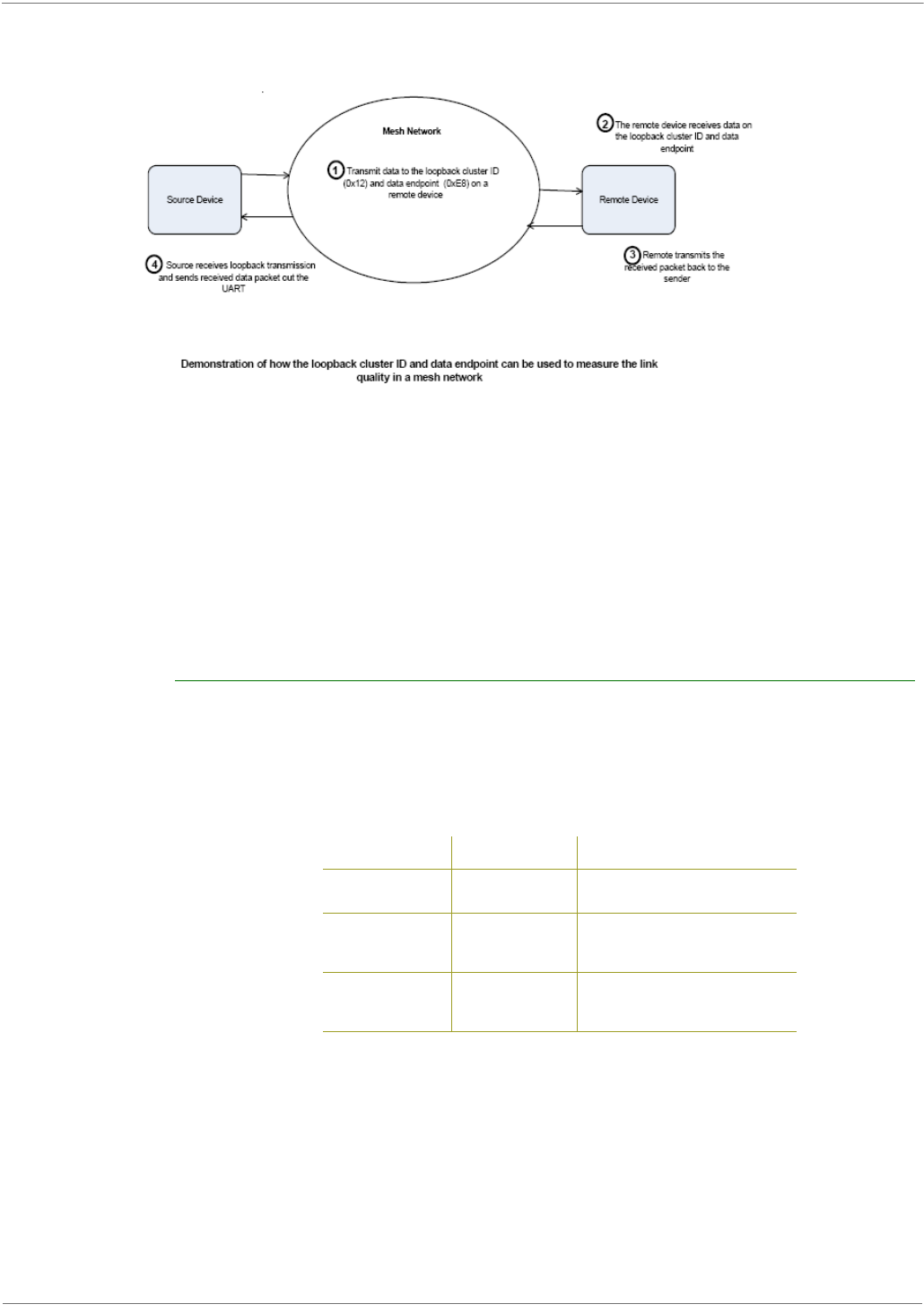
XBee‐PRO®900HP/XBee‐PRO®XSCRFModules
©2012DigiInternational,Inc. 76
modules support a loopback cluster ID (0x12) on the data endpoint (0xE8). Any data sent to this cluster ID on
the data endpoint will be transmitted back to the sender. This is shown in the figure below:
The configuration steps to send data to the loopback cluster ID depend on the AP setting:
AT Configuration (AP=0)
To send data to the loopback cluster ID on the data endpoint of a remote device, set the CI command value to
0x12. The SE and DE commands should be set to 0xE8 (default value). The DH and DL commands should be
set to the address of the remote. After exiting command mode, any received serial characters will be
transmitted to the remote device, and returned to the sender.
API Configuration (AP=1 or AP=2)
Send an Explicit Addressing ZigBee Command API frame (0x11) using 0x12 as the cluster ID and 0xE8 as the
source and destination endpoint. Data packets received by the remote will be echoed back to the sender.
Link Testing Between Adjacent Devices
It is often advantageous to test the quality of a link between two adjacent nodes in a network. The Test Link
Request Cluster ID can be used to send a number of test packets between any two nodes in a network.
A link test can be initiated using an Explicit TX Request frame. The command frame should be addressed to
the Test Link Request Cluster ID (0x0014) on destination endpoint 0xE6 on the radio which should execute the
test link. The Explicit TX Request frame should contain a 12 byte payload with the following format:
After completing the transmissions of the test link packets the executing radio will send the following data
packet to the requesting radio's Test Link Result Cluster (0x0094) on endpoint (0xE6). If the requesting radio
is configured to operate in API mode then the following information will be output as an API Explicit RX
Indicator Frame:
Number of Bytes Field Name Description
8Destination address The address with which the radio
should test its link
2Payload size
The size of the test packet. (The
maximum payload size for this radio
can be queried with the MP command.)
2Iterations
The number of packets which should
be sent. This should be a number
between 1 and 4000.

XBee‐PRO®900HP/XBee‐PRO®XSCRFModules
©2012DigiInternational,Inc. 77
Example:
Suppose that the link between radio A (SH/SL = 0x0013a20040521234) and radio B (SH/
SL=0x0013a2004052abcd) is to be tested by transmitting 1000 40 byte packets. The following
API packet should be sent to the serial interface of the radio on which the results should be
output, radio C. Note that radio C can be the same radio as radio A or B (whitespace used to
delineate fields, bold text is the payload portion of the packet):
7E 0020 11 01 0013A20040521234 FFFE E6 E6 0014 C105 00 00 0013A2004052ABCD 0028
03E8 EB
And the following is a possible packet that could be returned:
7E 0027 91 0013A20040521234 FFFE E6 E6 0094 C105 00 0013A2004052ABCD 0028 03E8
03E7 0064 00 0A 50 53 52 9F
(999 out of 1000 packets successful, 100 retries used, RR=10, maxRSSI=-80dBm, minRSSI=-
83dBm, avgRSSI=-82dBm)
If the result field is not equal to zero then an error has occurred. The other fields in the packet should be
ignored. If the Success field is equal to zero then the RSSI fields should be ignored.
Trace Routing
In many applications it is useful to determine the route which a DigiMesh unicast takes to its destination. This
information is especially useful when setting up a network or diagnosing problems within a network. The
Trace Route API option of Tx Request Packets (see the API section of this manual for a description of the API
frames) causes routing information packets to be transmitted to the originator of a DigiMesh unicast by the
intermediate nodes.
When a unicast is sent with the Trace Route API option enabled, the unicast is sent to its destination radios
which forward the unicast to its eventual destination will transmit a Route Information (RI) packet back along
the route to the unicast originator. A full description of Route Information API packets can be found in the API
section of this manual. In general they contain addressing information for the unicast and the intermediate
hop for which the trace route packet was generated, RSSI information, and other link quality information.
Example:
Suppose that a data packet with trace route enabled was successfully unicast from radio A to radio E, through
radios B, C, and D. The following sequence would occur:
Number of Bytes Field Name Description
8Destination address The address with which the radio
tested its link
2Payload size The size of the test packet that was
sent to test the link.
2Iterations The number of packets which were
sent.
2Success The number of packets successfully
acknowledged.
2Retries The total number of MAC retries used
to transfer all the packets.
1Result 0x00 - command was successful
0x03 - invalid parameter used
1RR The maximum number of MAC retries
allowed.
1maxRSSI The strongest RSSI reading observed
during the test.
1minRSSI The weakest RSSI reading observed
during the test.
1avgRSSI The average RSSI reading observed
during the test.
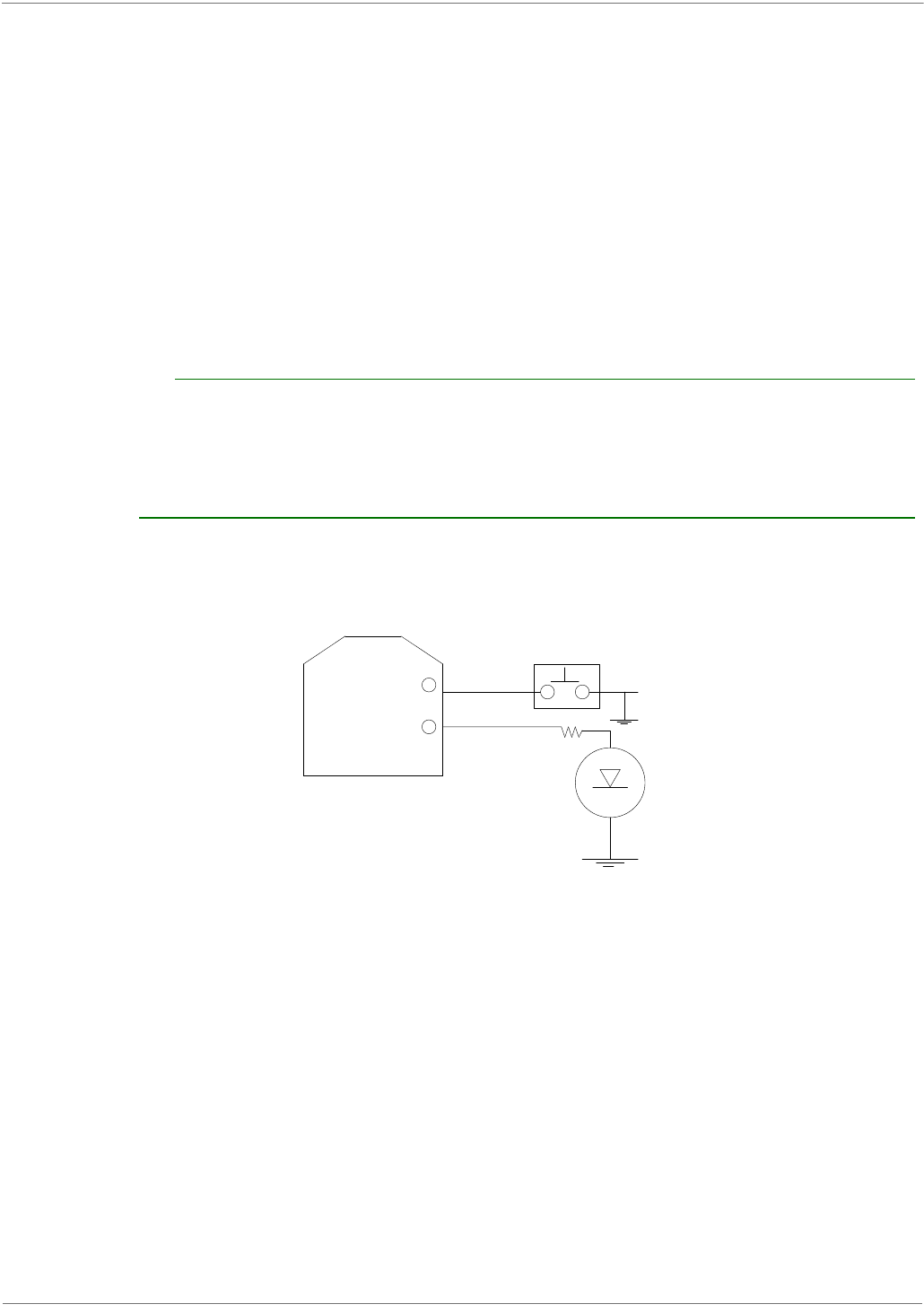
XBee‐PRO®900HP/XBee‐PRO®XSCRFModules
©2012DigiInternational,Inc. 78
• After the successful MAC transmission of the data packet from A to B, A would output a RI
Packet indicating that the transmission of the data packet from A to E was successfully for-
warded one hop from A to B.
• After the successful MAC transmission of the data packet from B to C, B would transmit a RI
Packet to A. A would output this RI packet out its serial interface upon reception.
• After the successful MAC transmission of the data packet from C to D, C would transmit a RI
Packet to A (through B). A would output this RI packet out its serial interface upon reception.
• After the successful MAC transmission of the data packet from D to E, D would transmit a RI
Packet to A (through C and B). A would output this RI packet out its serial interface upon
reception.
It is important to note that Route Information packets are not guaranteed to arrive in the same order as the
unicast packet took. It is also possible for the transmission of Route Information packets on a weak route to
fail before arriving at the unicast originator.
Because of the large number of Route Information packets which can be generated by a unicast with Trace
Route enabled it is suggested that the Trace Route option only be used for occasional diagnostic purposes and
not for normal operations.
NACK Messages
The NACK API option of Tx Request Packets (see the API section of this manual for a description of the API
frames) provides the option to have a Route Information packet generated and sent to the originator of a
unicast when a MAC acknowledgment failure occurs on one of the hops to the destination. This information is
useful because it allows marginal links to be identified and repaired.
Commissioning Pushbutton and Associate LED
The XBee modules support a set of commissioning and LED behaviors to aid in device deployment and
commissioning. These include the commissioning push button definitions and associate LED behaviors. These
features can be supported in hardware as shown below.
CommissioningPushbuttonandAssociateLEDFunctionalities
XBee
20
15
Push button
R
Associate
LED
A pushbutton and an LED can be connected to module pins 20 and 15 respectively to
support the commissioning pushbutton and associated LED functionalities.
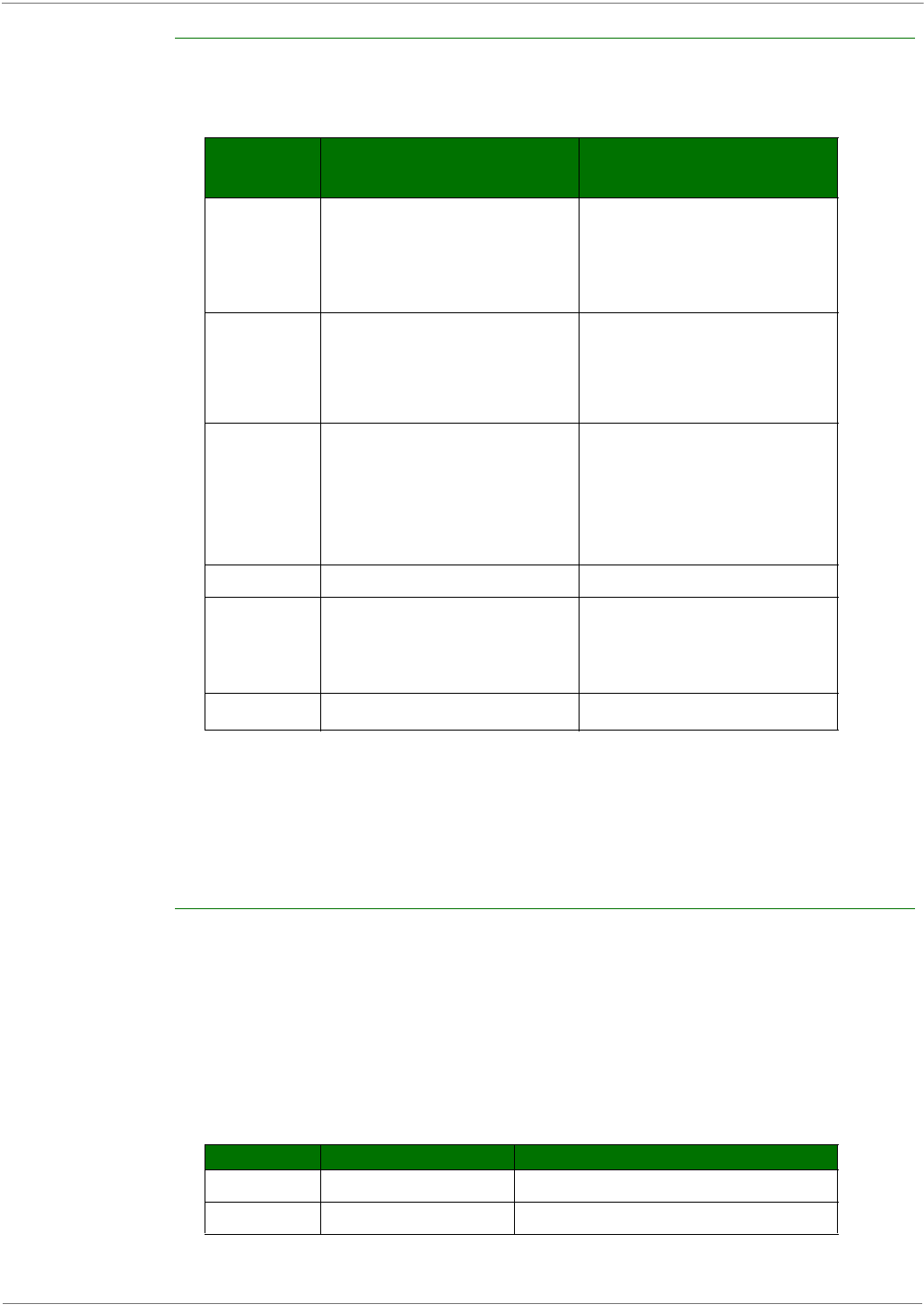
XBee‐PRO®900HP/XBee‐PRO®XSCRFModules
©2012DigiInternational,Inc. 79
Commissioning Pushbutton
The commissioning pushbutton definitions provide a variety of simple functions to aid in deploying devices in a
network. The commissioning button functionality on pin 20 is enabled by setting the D0 command to 1
(enabled by default).
Button presses may be simulated in software using the ATCB command. ATCB should be issued with a
parameter set to the number of button presses to execute. (i.e. sending ATCB1 will execute the action(s)
associated with a single button press.)
The node identification frame is similar to the node discovery response frame – it contains the device’s
address, node identifier string (NI command), and other relevant data. All API devices that receive the node
identification frame send it out their serial interface as an API Node Identification Indicator frame (0x95).
Associate LED
The Associate pin (pin 15) can provide indication of the device's sleep status and diagnostic information. To
take advantage of these indications, an LED can be connected to the Associate pin as shown in the figure
above. The Associate LED functionality is enabled by setting the D5 command to 1 (enabled by default). If
enabled, the Associate pin is configured as an output and will behave as described in the following sections.
The Associate pin indicates the synchronization status of a sleep compatible node. On a non-sleep compatible
node the pin functions as a power indicator. The following table describes this functionality.
The LT command can be used to override the blink rate of the Associate pin. When set to 0, the device uses
the default blink time (500ms for sleep coordinator, 250ms otherwise).
Button Presses
Sleep
Configuration and
Sync Status
Action
1 Not configured for sleep
Immediately sends a Node Identification
broadcast transmission.
All devices that receive this transmission will
blink their Associate LED rapidly for 1 second.
All API devices that receive this transmission
will send a Node Identification frame out their
serial interface (API ID 0x95)
1 Configured for asynchronous sleep
Wakes the module for 30 seconds. Immediately
sends a Node Identification broadcast
transmission. All devices that receive this
transmission will blink their Associate LED
rapidly for 1 second. All API devices that receive
this transmission will send a Node Identification
frame out their serial interface (API ID 0x95).
1 Configured for synchronous sleep
Wakes the module for 30 seconds (or until the
entire module goes to sleep). Queues a Node
Identification broadcast transmission to be sent
at the beginning of the next network wake cycle.
All devices that receive this transmission will
blink their Associate LEDs rapidly for 1 second.
All API devices that receive this transmission
will send a Node Identification frame out their
serial interface (API ID 0x95).
2 Not configured for synchronous sleep No effect.
2 Configured for synchronous sleep
Causes a node which is configured with
sleeping router nomination enabled (see
description of the ATSO – sleep options
command in the XBee module’s Product
Manual) to immediately nominate itself as the
network sleep coordinator.
4Any Issues an ATRE to restore module parameters
to default values.
Sleep mode LED Status Meaning
0 On, blinking The device is powered and operating properly.
1, 4, 5 Off The device is in a low power mode.
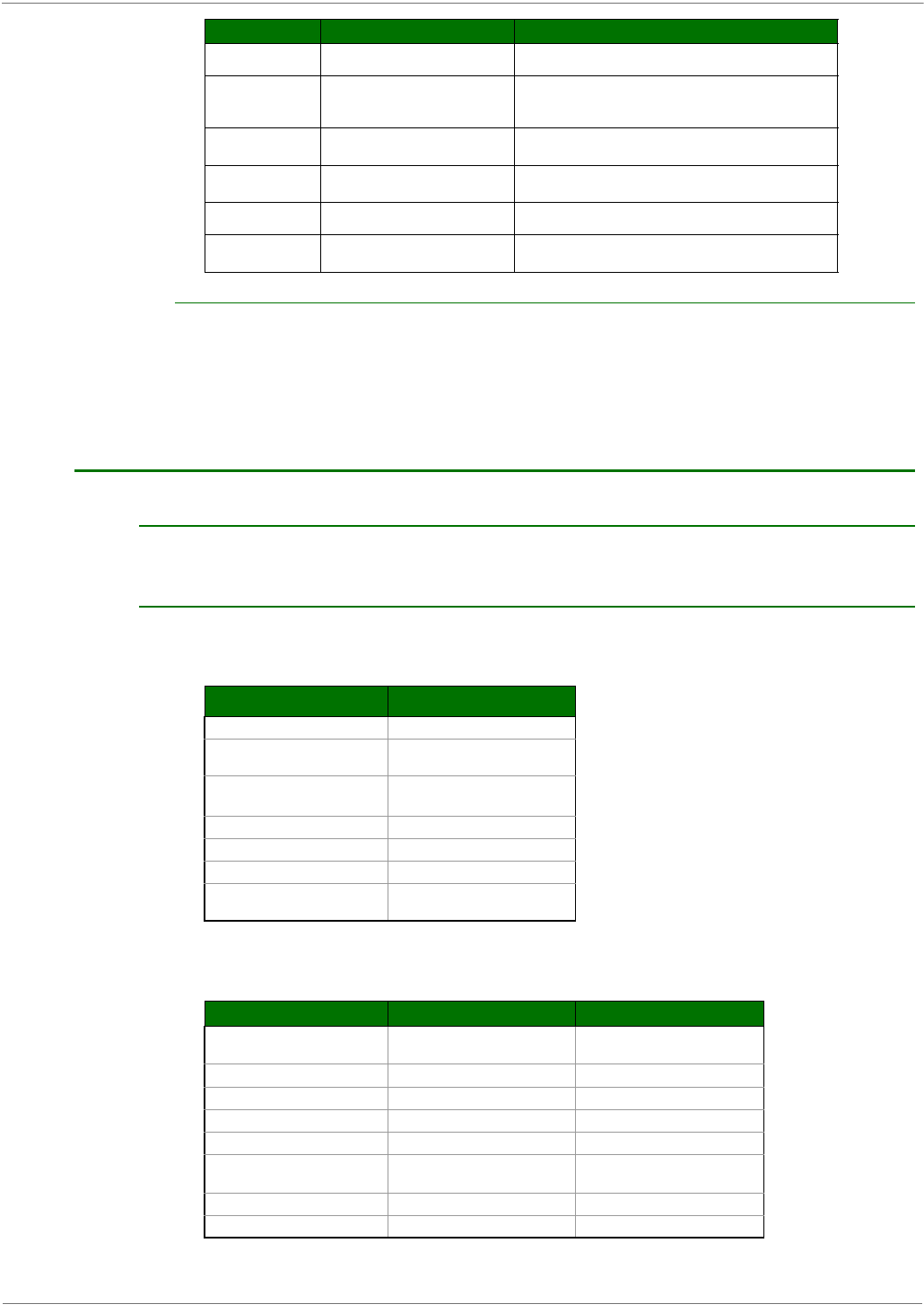
XBee‐PRO®900HP/XBee‐PRO®XSCRFModules
©2012DigiInternational,Inc. 80
Diagnostics Support
The Associate pin works with the commissioning pushbutton to provide additional diagnostic behaviors to aid
in deploying and testing a network. If the commissioning push button is pressed once the device transmits a
broadcast node identification packet at the beginning of the next wake cycle if sleep compatible, or
immediately if not sleep compatible. If the Associate LED functionality is enabled (D5 command), a device
that receives this transmission will blink its Associate pin rapidly for 1 second.
I/O Line Monitoring
I/O Samples
The XBee modules support both analog input and digital IO line modes on several configurable pins.
Queried Sampling
Parameters for the pin configuration commands typically include the following:
Setting the configuration command that corresponds to a particular pin will configure the pin:
1, 4, 5 On, blinking The device is powered, awake and is operating properly.
7 On, solid
The network is asleep or the device has not synchronized
with the network or has lost synchronization with the
network.
7, 8 On, slow blinking (500 ms blink
time)
The device is acting as the network sleep coordinator and is
operating properly.
7, 8 On, fast blinking (250 ms blink
time) The device is properly synchronized with the network.
8 Off The device is in a low power mode.
8 On, solid The device has not synchronized or has lost synchronization
with the network.
Pin Command Parameter Description
0 Unmonitored digital input
1Reserved for pin-specific
alternate functionalities.
2Analog input (A/D pins) or
PWM output (PWM pins)
3 Digital input, monitored.
4 Digital output, low.
5 Digital output, high.
7Alternate functionalities, where
applicable.
Module Pin Names Module Pin Number Configuration Command
CD / DIO12 4P2
PWM0 / RSSI / DIO10 6 P0
PWM1 / DIO11 7 P1
DTR / SLEEP_RQ / DIO8 9 D8
AD4 / DIO4 11 D4
CTS / DIO7 12 D7
ON_SLEEP / DIO9 13 D9
ASSOC / AD5 / DIO5 15 D5
Sleep mode LED Status Meaning
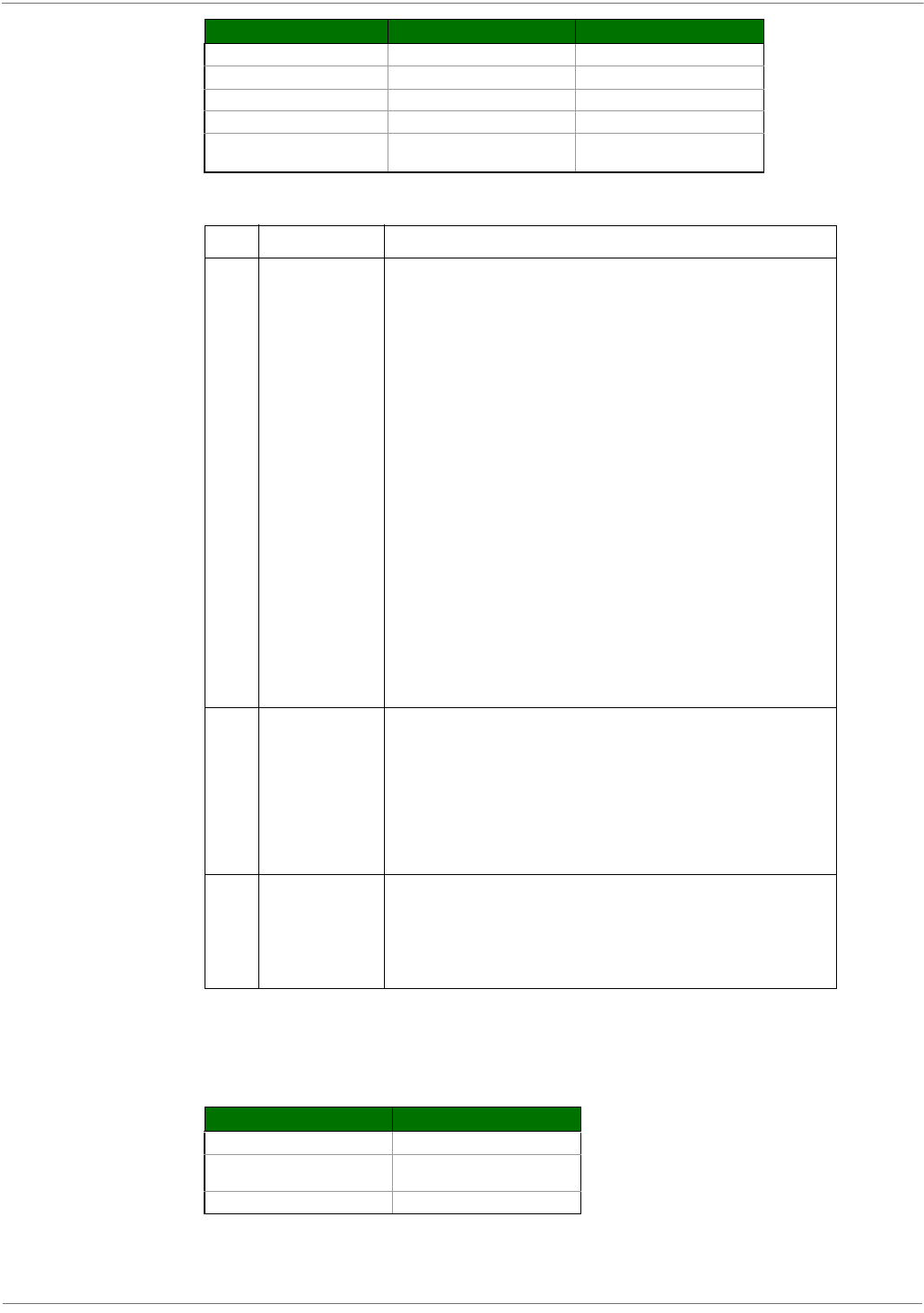
XBee‐PRO®900HP/XBee‐PRO®XSCRFModules
©2012DigiInternational,Inc. 81
See the command table for more information. Pullup resistors for each digital input can be enabled using the
PR command.
If the IS command is issued from AT command mode then a carriage return delimited list will be returned
containing the above-listed fields. If the command is issued via an API frame then the module will return an
AT command response API frame with the IO data included in the command data portion of the packet.
RTS / DIO6 16 D6
AD3 / DIO3 17 D3
AD2 / DIO2 18 D2
AD1 / DIO1 19 D1
AD0 / DIO0 /
CommissioningButton 20 D0
1 Sample Sets Number of sample sets in the packet. (Always set to 1.)
2 Digital Channel Mask
Indicates which digital IO lines have sampling enabled. Each bit corresponds to one
digital IO line on the module.
• bit 0 = AD0/DIO0
• bit 1 = AD1/DIO1
• bit 2 = AD2/DIO2
• bit 3 = AD3/DIO3
• bit 4 = DIO4
• bit 5 = ASSOC/DIO5
•bit 6 = RTS/DIO6
•bit 7 = CTS/GPIO7
• bit 8 = DTR / SLEEP_RQ / DIO8
• bit 9 = ON_SLEEP / DIO9
• bit 10 = RSSI/DIO10
• bit 11 = PWM/DIO11
• bit 12 = CD/DIO12
For example, a digital channel mask of 0x002F means DIO0,1,2,3, and 5 are enabled
as digital IO.
1 Analog Channel Mask
Indicates which lines have analog inputs enabled for sampling. Each bit in the analog
channel mask corresponds to one analog input channel.
•bit 0 = AD0/DIO0
•bit 1 = AD1/DIO1
•bit 2 = AD2/DIO2
•bit 3 = AD3/DIO3
•bit 4 = AD4/DIO4
Variable Sampled Data Set
If any digital IO lines are enabled, the first two bytes of the data set indicate the state
of all enabled digital IO. Only digital channels that are enabled in the Digital Channel
Mask bytes have any meaning in the sample set. If no digital IO are enabled on the
device, these 2 bytes will be omitted.
Following the digital IO data (if any), each enabled analog channel will return 2 bytes.
The data starts with AIN0 and continues sequentially for each enabled analog input
channel up to AIN5.
Example Sample AT Response
0x01\r [1 sample set]
0x0C0C\r [Digital Inputs: DIO 2, 3, 10, 11
enabled]
0x03\r [Analog Inputs: A/D 0, 1 enabled]
Module Pin Names Module Pin Number Configuration Command
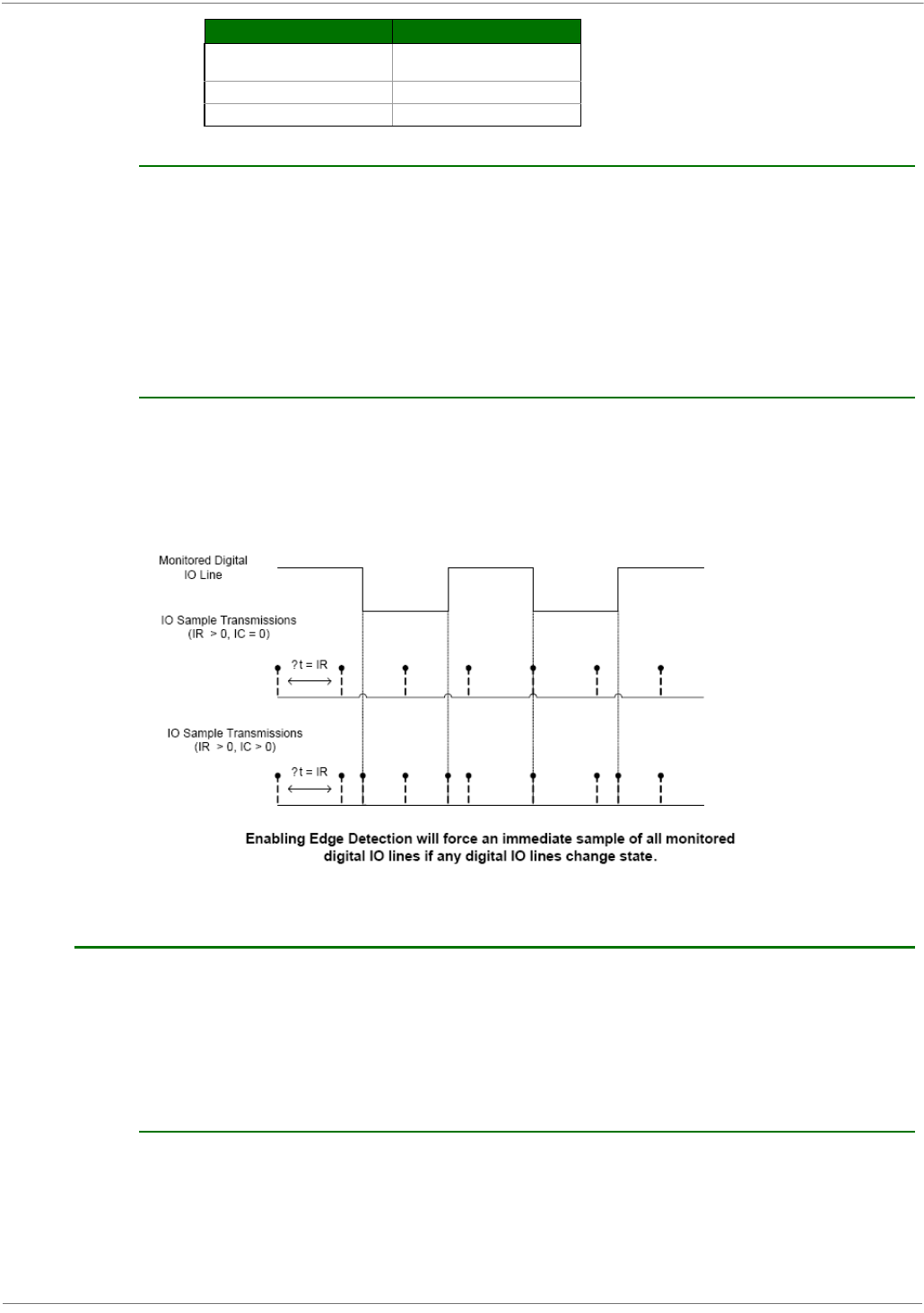
XBee‐PRO®900HP/XBee‐PRO®XSCRFModules
©2012DigiInternational,Inc. 82
Periodic I/O Sampling
Periodic sampling allows an XBee-PRO module to take an I/O sample and transmit it to a remote device at a
periodic rate. The periodic sample rate is set by the IR command. If IR is set to 0, periodic sampling is
disabled. For all other values of IR, data will be sampled after IR milliseconds have elapsed and transmitted to
a remote device. The DH and DL commands determine the destination address of the IO samples. Only
devices with API mode enabled will send IO data samples out their serial interface. Devices not in API mode
will discard received IO data samples.
A module with sleep enabled will transmit periodic I/O samples at the IR rate until the ST time expires and the
device can resume sleeping. See the sleep section for more information on sleep.
Digital I/O Change Detection
Modules can be configured to transmit a data sample immediately whenever a monitored digital I/O pin
changes state. The IC command is a bitmask that can be used to set which digital I/O lines should be
monitored for a state change. If one or more bits in IC is set, an I/O sample will be transmitted as soon as a
state change is observed in one of the monitored digital I/O lines. The figure below shows how edge detection
can work with periodic sampling.
General Purpose Flash Memory
XBee-PRO 900HP modules provide 119 512-byte blocks of flash memory which can be read and written by the
user application. This memory provides a non-volatile data storage area which can be used for a multitude of
purposes. Some common uses of this data storage include: storing logged sensor data, buffering firmware
upgrade data for a host microcontroller, or storing and retrieving data tables needed for calculations
performed by a host microcontroller. The General Purpose Memory (GPM) is also used to store a firmware
upgrade file for over-the-air firmware upgrades of the XBee module itself.
Accessing General Purpose Flash Memory
The GPM of a target node can be accessed locally or over-the-air by sending commands to the
MEMORY_ACCESS cluster ID (0x23) on the DIGI_DEVICE endpoint (0xE6) of the target node using explicit API
frames. (Explicit API frames are described in the API Operation section.
To issue a GPM command the payload of an explicit API frame should be formatted in the following way:
0x0408\r [Digital input states: DIO 3, 10
high, DIO 2, 11 low]
0x03D0\r [Analog input ADIO 0= 0x3D0]
0x0124\r [Analog input ADIO 1=0x120]
Example Sample AT Response

XBee‐PRO®900HP/XBee‐PRO®XSCRFModules
©2012DigiInternational,Inc. 83
*Multi-byte parameters should be specified with big-endian byte ordering.
When a GPM command is sent to a radio via a unicast the receiving radio will unicast a response back to the
requesting radio's source endpoint specified in the request packet. No response is sent for broadcast
requests. If the source endpoint is set to the DIGI_DEVICE endpoint (0xE6) or explicit API mode is enabled
on the requesting radio then a GPM response will be output as an explicit API RX indicator frame on the
requesting node (assuming API mode is enabled.)
The format of the response is very similar to the request packet:
*Multi-byte parameters should be specified with big-endian byte ordering.
The following commands exist for interacting with GPM:
PLATFORM_INFO_REQUEST (0x00):
A PLATFORM_INFO_REQUEST frame can be sent to query details of the GPM structure.
PLATFORM_INFO (0x80):
Byte Offset in
Payload
Number of
Bytes Field Name General Field Description
01 GPM_CMD_ID Specific GPM commands are described below
11 GPM_OPTIONS Command-specific options
22* GPM_BLOCK_NUM The block number addressed in the GPM
42* GPM_START_INDEX The byte index within the addressed GPM
block
62*
GPM_NUM_BYTES The number of bytes in the GPM_DATA field,
or in the case of a READ, the number of bytes
requested
8varies GPM_DATA
Byte Offset in
Payload
Number of
Bytes Field Name General Field Description
01 GPM_CMD_ID This field will be the same as the request field
11GPM_STATUS Status indicating whether the command was
successful
22* GPM_BLOCK_NUM The block number addressed in the GPM
42* GPM_START_INDEX The byte index within the addressed GPM
block
62* GPM_NUM_BYTES The number of bytes in the GPM_DATA field
8varies GPM_DATA
Field Name Command-Specific Description
GPM_CMD_ID Should be set to PLATFORM_INFO_REQUEST (0x00)
GPM_OPTIONS This field is unused for this command. Set to 0.
GPM_BLOCK_NUM This field is unused for this command. Set to 0.
GPM_START_INDEX This field is unused for this command. Set to 0.
GPM_NUM_BYTES This field is unused for this command. Set to 0.
GPM_DATA No data bytes should be specified for this command.

XBee‐PRO®900HP/XBee‐PRO®XSCRFModules
©2012DigiInternational,Inc. 84
When a PLATFORM_INFO_REQUEST command request has been unicast to a node, that node will send a
response in the following format to the source endpoint specified in the requesting frame.
Example:
A PLATFORM_INFO_REQUEST sent to a radio with a serial number of 0x0013a200407402AC should be
formatted as follows (spaces added to delineate fields):
7E 001C 11 01 0013A200407402AC FFFE E6 E6 0023 C105 00 00 00 00 0000 0000 0000 24
Assuming all transmissions were successful, the following API packets would be output the source node's
serial interface:
7E 0007 8B 01 FFFE 00 00 00 76
7E 001A 91 0013A200407402AC FFFE E6 E6 0023 C105 C1 80 00 0077 0200 0000 EB
ERASE (0x01):
The ERASE command erases (writes all bits to binary 1) one or all of the GPM flash blocks. The ERASE
command can also be used to erase all blocks of the GPM by setting the GPM_NUM_BYTES field to 0.
ERASE_RESPONSE (0x81):
When an ERASE command request has been unicast to a node, that node will send a response in the following
format to the source endpoint specified in the requesting frame.
Field Name Command-Specific Description
GPM_CMD_ID Should be set to PLATFORM_INFO (0x80)
GPM_STATUS A 1 in the least significant bit indicates an error occurred. All other bits
are reserved at this time.
GPM_BLOCK_NUM Indicates the number of GPM blocks available.
GPM_START_INDEX Indicates the size, in bytes, of a GPM block.
GPM_NUM_BYTES The number of bytes in the GPM_DATA field. For this command, this
field will be set to 0.
GPM_DATA No data bytes are specified for this command.
Field Name Command-Specific Description
GPM_CMD_ID Should be set to ERASE (0x01)
GPM_OPTIONS There are currently no options defined for the ERASE command. Set
this field to 0.
GPM_BLOCK_NUM Set to the index of the GPM block that should be erased. When
erasing all GPM blocks, this field is ignored (set to 0).
GPM_START_INDEX
The ERASE command only works on complete GPM blocks. The
command cannot be used to erase part of a GPM block. For this
reason GPM_START_INDEX is unused (set to 0).
GPM_NUM_BYTES
Setting GPM_NUM_BYTES to 0 has a special meaning. It indicates
that every flash block in the GPM should be erased (not just the one
specified with GPM_BLOCK_NUM). In all other cases, the
GPM_NUM_BYTES field should be set to the GPM flash block size.
GPM_DATA No data bytes are specified for this command.
Field Name Command-Specific Description
GPM_CMD_ID Should be set to ERASE_RESPONSE (0x81)

XBee‐PRO®900HP/XBee‐PRO®XSCRFModules
©2012DigiInternational,Inc. 85
Example:
To erase flash block 42 of a target radio with serial number of 0x0013a200407402ac an ERASE packet should
be formatted as follows (spaces added to delineate fields):
7E 001C 11 01 0013A200407402AC FFFE E6 E6 0023 C105 00 C0 01 00 002A 0000 0200 37
Assuming all transmissions were successful, the following API packets would be output the source node's
serial interface:
7E 0007 8B 01 FFFE 00 00 00 76
7E 001A 91 0013A200407402AC FFFE E6 E6 0023 C105 C1 81 00 002A 0000 0000 39
WRITE (0x02) and ERASE_THEN_WRITE (0x03):
The WRITE command writes the specified bytes to the GPM location specified. Before writing bytes to a GPM
block it is important that the bytes have been erased previously. The ERASE_THEN_WRITE command
performs an ERASE of the entire GPM block specified with the GPM_BLOCK_NUM field prior to doing a WRITE.
WRITE _RESPONSE (0x82) and ERASE_THEN_WRITE_RESPONSE(0x83):
When a WRITE or ERASE_THEN_WRITE command request has been unicast to a node, that node will send a
response in the following format to the source endpoint specified in the requesting frame.
GPM_STATUS A 1 in the least significant bit indicates an error occurred. All other bits
are reserved at this time.
GPM_BLOCK_NUM Matches the parameter passed in the request frame.
GPM_START_INDEX Matches the parameter passed in the request frame.
GPM_NUM_BYTES The number of bytes in the GPM_DATA field. For this command, this
field will be set to 0.
GPM_DATA No data bytes are specified for this command.
Field Name Command-Specific Description
GPM_CMD_ID Should be set to WRITE (0x02) or ERASE_THEN_WRITE (0x03)
GPM_OPTIONS There are currently no options defined for this command. Set this field
to 0.
GPM_BLOCK_NUM Set to the index of the GPM block that should be written.
GPM_START_INDEX Set to the byte index within the GPM block where the given data
should be written.
GPM_NUM_BYTES
Set to the number of bytes specified in the GPM_DATA field. Only one
GPM block can be operated on per command. For this reason,
GPM_START_INDEX + GPM_NUM_BYTES cannot be greater than
the GPM block size. It is also important to remember that the number
of bytes sent in an explicit API frame (including the GPM command
fields) cannot exceed the maximum payload size of the radio. The
maximum payload size can be queried with the NP AT command.
GPM_DATA The data to be written.
Field Name Command-Specific Description
GPM_CMD_ID Should be set to WRITE_RESPONSE (0x82) or
ERASE_THEN_WRITE_RESPONSE (0x83)
GPM_STATUS A 1 in the least significant bit indicates an error occurred. All other bits
are reserved at this time.
GPM_BLOCK_NUM Matches the parameter passed in the request frame.
Field Name Command-Specific Description

XBee‐PRO®900HP/XBee‐PRO®XSCRFModules
©2012DigiInternational,Inc. 86
Example:
To write 15 bytes of incrementing data to flash block 22 of a target radio with serial number of
0x0013a200407402ac a WRITE packet should be formatted as follows (spaces added to delineate fields):
7E 002B 11 01 0013A200407402AC FFFE E6 E6 0023 C105 00 C0 02 00 0016 0000 000F 0102030405060708090A0B0C0D0E0F C5
Assuming all transmissions were successful and that flash block 22 was previously erased, the following API
packets would be output the source node's serial interface:
7E 0007 8B 01 FFFE 00 00 00 76
7E 001A 91 0013A200407402AC FFFE E6 E6 0023 C105 C1 82 00 0016 0000 0000 4C
READ (0x04):
The READ command can be used to read the specified number of bytes from the GPM location specified. Data
can be queried from only one GPM block per command.
READ _RESPONSE (0x84):
When a READ command request has been unicast to a node, that node will send a response in the following
format to the source endpoint specified in the requesting frame.
GPM_START_INDEX Matches the parameter passed in the request frame.
GPM_NUM_BYTES The number of bytes in the GPM_DATA field. For this command, this
field will be set to 0.
GPM_DATA No data bytes are specified for these commands.
Field Name Command-Specific Description
GPM_CMD_ID Should be set to READ (0x04)
GPM_OPTIONS There are currently no options defined for this command. Set this field
to 0.
GPM_BLOCK_NUM Set to the index of the GPM block that should be read.
GPM_START_INDEX Set to the byte index within the GPM block where the given data
should be read.
GPM_NUM_BYTES
Set to the number of data bytes to be read. Only one GPM block can
be operated on per command. For this reason, GPM_START_INDEX
+ GPM_NUM_BYTES cannot be greater than the GPM block size. It is
also important to remember that the number of bytes sent in an explicit
API frame (including the GPM command fields) cannot exceed the
maximum payload size of the radio. The maximum payload size can
be queried with the NP AT command.
GPM_DATA No data bytes should be specified for this command.
Field Name Command-Specific Description
GPM_CMD_ID Should be set to READ_RESPONSE (0x84)
GPM_STATUS A 1 in the least significant bit indicates an error occurred. All other bits
are reserved at this time.
GPM_BLOCK_NUM Matches the parameter passed in the request frame.
GPM_START_INDEX Matches the parameter passed in the request frame.
GPM_NUM_BYTES The number of bytes in the GPM_DATA field.
GPM_DATA The bytes read from the GPM block specified.
Field Name Command-Specific Description

XBee‐PRO®900HP/XBee‐PRO®XSCRFModules
©2012DigiInternational,Inc. 87
Example:
To read 15 bytes of previously written data from flash block 22 of a target radio with serial number of
0x0013a200407402ac a READ packet should be formatted as follows (spaces added to delineate fields):
7E 001C 11 01 0013A200407402AC FFFE E6 E6 0023 C105 00 C0 04 00 0016 0000 000F 3B
Assuming all transmissions were successful and that flash block 22 was previously written with incrementing
data, the following API packets would be output the source node's serial interface:
7E 0007 8B 01 FFFE 00 00 00 76
7E 0029 91 0013A200407402AC FFFE E6 E6 0023 C105 C1 84 00 0016 0000 000F 0102030405060708090A0B0C0D0E0F C3
FIRMWARE_VERIFY (0x05) and FIRMWARE_VERIFY_AND_INSTALL(0x06):
The FIRMWARE_VERIFY and FIRMWARE_VERIFY_AND_INSTALL commands are used when remotely updating
firmware on a module. Remote firmware upgrades are covered in detail in the next section. These commands
check if the General Purpose Memory contains a valid over-the-air update file. For the
FIRMWARE_VERIFY_AND_INSTALL command, if the GPM contains a valid firmware image then the module will
reset and begin using the new firmware.
FIRMWARE_VERIFY _RESPONSE (0x85):
When a FIRMWARE_VERIFY command request has been unicast to a node, that node will send a response in
the following format to the source endpoint specified in the requesting frame.
FIRMWARE_VERIFY _AND_INSTALL_RESPONSE (0x86):
When a FIRMWARE_VERIFY_AND_INSTALL command request has been unicast to a node, that node will send
a response in the following format to the source endpoint specified in the requesting frame only if the GPM
memory does not contain a valid image. If the image is valid, the module will reset and begin using the new
firmware.
Field Name Command-Specific Description
GPM_CMD_ID Should be set to FIRMWARE_VERIFY (0x05) or
FIRMWARE_VERIFY_AND_INSTALL (0x06)
GPM_OPTIONS There are currently no options defined for this command. Set this field
to 0.
GPM_BLOCK_NUM This field is unused for this command. Set to 0.
GPM_START_INDEX This field is unused for this command. Set to 0.
GPM_NUM_BYTES This field is unused for this command. Set to 0.
GPM_DATA This field is unused for this command.
Field Name Command-Specific Description
GPM_CMD_ID Should be set to FIRMWARE_VERIFY_RESPONSE (0x85)
GPM_STATUS
A 1 in the least significant bit indicates the GPM does not contain a
valid firmware image. A 0 in the least significant bit indicates the GPM
does contain a valid firmware image. All other bits are reserved at this
time.
GPM_BLOCK_NUM This field is unused for this command. Set to 0.
GPM_START_INDEX This field is unused for this command. Set to 0.
GPM_NUM_BYTES This field is unused for this command. Set to 0.
GPM_DATA This field is unused for this command.

XBee‐PRO®900HP/XBee‐PRO®XSCRFModules
©2012DigiInternational,Inc. 88
Example:
To verify a firmware image previously loaded into the GPM on a target radio with serial number of
0x0013a200407402ac a FIRMWARE_VERIFY packet should be formatted as follows (spaces added to delineate
fields):
7E 001C 11 01 0013A200407402AC FFFE E6 E6 0023 C105 00 00 05 00 0000 0000 0000 1F
Assuming all transmissions were successful and that the firmware image previously loaded into the GPM is
valid, the following API packets would be output the source node's serial interface:
7E 0007 8B 01 FFFE 00 00 00 76
7E 001A 91 0013A200407402AC FFFE E6 E6 0023 C105 C1 85 00 0000 0000 0000 5F
Working with Flash Memory
When working with the General Purpose Memory the user should be aware of a number of limitations
associated with working with flash memory:
• Flash memory write operations are only capable of changing binary 1's to binary 0's. Only the
erase operation can change binary 0's to binary 1's. For this reason it is usually necessary to
erase a flash block before performing a write operation.
• A flash memory block must be erased in its entirety when performing an erase operation. A
block cannot be partially erased.
• Flash memory has a limited lifetime. The flash memory on which the GPM is based is rated at
20,000 erase cycles before failure. Care must be taken to ensure that the frequency of erase/
write operations allows for the desired product lifetime. Digi's warranty will not cover products
whose number of erase cycles has been exceeded.
• Over-the-Air firmware upgrades (described in the next section) require the entire GPM be
erased. Any user data stored in the GPM will be lost during an over-the-air upgrade.
Over-the-Air Firmware Upgrades
XBee-PRO 900HP modules provide two methods of updating the firmware on the module. Firmware can be
updated locally via X-CTU (a free testing and configuration utility provided by Digi) using the radio's serial port
interface. Firmware can also be updated using the radios' RF interface (Over-the-Air Updating.)
The over-the-air firmware upgrading method provided is a robust and versatile technique which can be
tailored to many different networks and applications. It has been engineered to be reliable and minimize
disruption of normal network operations.
There are three phases of the over-the-air upgrade process: distributing the new application, verifying the
new application, and installing the new application. In the following section the node which will be upgraded
will be referred to as the target node. The node providing the update information will be referred to as the
source node. In most applications the source node will be locally attached to a PC running update software.
Field Name Command-Specific Description
GPM_CMD_ID Should be set to FIRMWARE_VERIFY_AND_INSTALL_RESPONSE
(0x86)
GPM_STATUS A 1 in the least significant bit indicates the GPM does not contain a
valid firmware image. All other bits are reserved at this time.
GPM_BLOCK_NUM This field is unused for this command. Set to 0.
GPM_START_INDEX This field is unused for this command. Set to 0.
GPM_NUM_BYTES This field is unused for this command. Set to 0.
GPM_DATA This field is unused for this command.
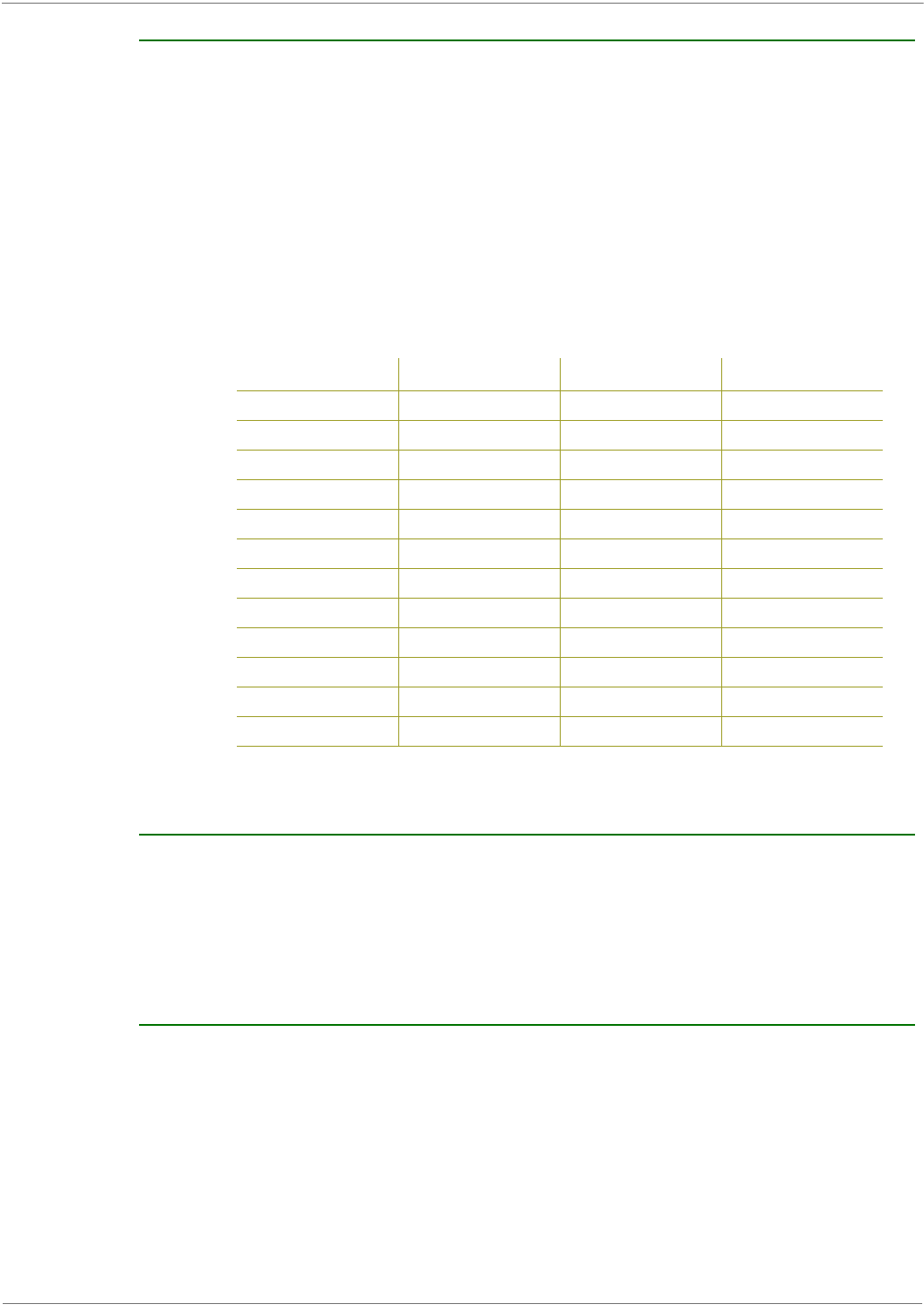
XBee‐PRO®900HP/XBee‐PRO®XSCRFModules
©2012DigiInternational,Inc. 89
Distributing the New Application
The first phase of performing an over-the-air upgrade on a module is transferring the new firmware file to the
target node. The new firmware image should be loaded in the target node's GPM prior to installation. XBee-
PRO 900HP modules use an encrypted binary (.ebin) file for both serial and over-the-air firmware upgrades.
These firmware files are available on the Digi Support website.
The contents of the .ebin file should be sent to the target radio using general purpose memory WRITE
commands. The entire GPM should be erased prior to beginning an upload of an .ebin file. The contents of
the .ebin file should be stored in order in the appropriate GPM memory blocks. The number of bytes that are
sent in an individual GPM WRITE frame is flexible and can be catered to the user application.
Example:
XBee-PRO 900HP firmware version 8060 has an .ebin file of 55,141 bytes in length. Based on network traffic
it was determined that sending a 128 byte packet every 30 seconds minimized network disruption. For this
reason the .ebin should be divided and addressed as follows:
Verifying the New Application
For an uploaded application to function correctly every single byte from the .ebin file must be properly
transferred to the GPM. To guarantee that this is the case GPM VERIFY functions exist to ensure that all bytes
are properly in place. The FIRMWARE_VERIFY function reports whether or not the uploaded data is valid. The
FIRMWARE_VERIFY_AND_INSTALL command will report if the uploaded data is invalid. If the data is valid it
will begin installing the application. No installation will take place on invalid data.
Installing the Application
When the entire .ebin file has been uploaded to the GPM of the target node a
FIRMWARE_VERIFY_AND_INSTALL command can be issued. Once the target receives the command it will
verify the .ebin file loaded in the GPM. If it is found to be valid then the module will install the new firmware.
This installation process can take up to 8 seconds. During the installation the module will be unresponsive to
both serial and RF communication. To complete the installation the target module will reset. AT parameter
settings which have not been written to flash (using the WR command) will be lost.
GPM_BLOCK_NUM GPM_START_INDEX GPM_NUM_BYTES .ebin bytes
00 128 0 to 127
0128 128 128 to 255
0256 128 256 to 383
0384 128 384 to 511
10 128 512 to 639
1128 128 640 to 767
----
----
----
107 0 54784 to 54911
107 128 54912 to 55039
107 256 101 55040 to 55140

XBee‐PRO®900HP/XBee‐PRO®XSCRFModules
©2012DigiInternational,Inc. 90
Things to Remember
• The firmware upgrade process requires that the module resets itself. Because of this reset
parameters which have not been written to flash will be lost after the reset. To avoid this,
write all parameters with the WR command before doing a firmware upgrade. Packet routing
information will also be lost after this reset. Route discoveries will be necessary for DigiMesh
unicasts involving the upgraded node as a source, destination, or intermediate node.
• Because explicit API Tx frames can be addressed to a local node (accessible via the SPI or
UART) or a remote node (accessible over the RF port) the same process can be used to update
firmware on a module in either case.
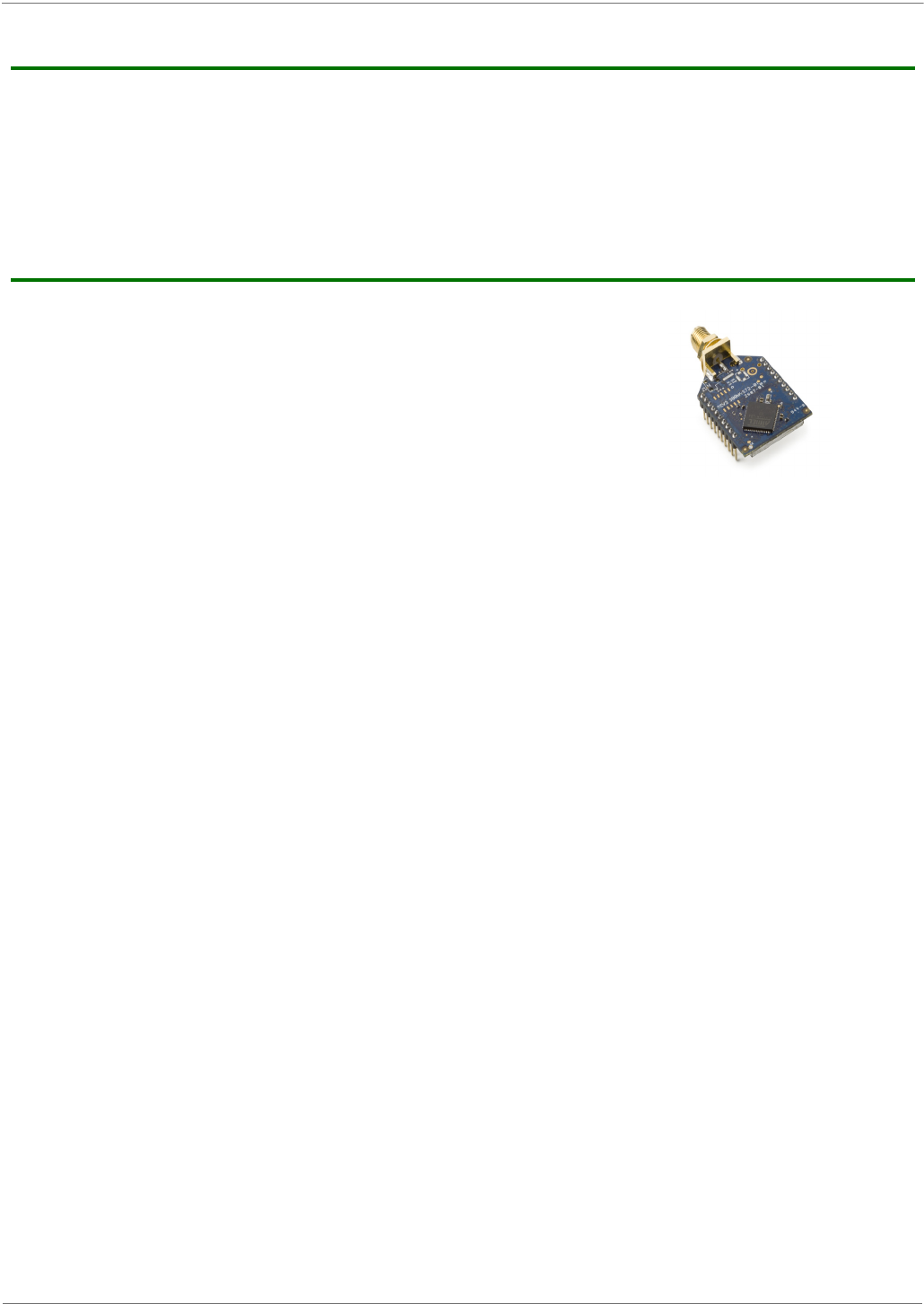
XBee‐PRO®900HP/XBee‐PRO®XSCRFModules
©2012DigiInternational,Inc. 91
AppendixA:XSCFirmware
1.XBee‐PRO®900HP/XBee‐PRO®XSCRF
Module
The XBee-PRO XSC (900 MHz) RF Modules were engineered to afford RF Modules
and integrators an easy-to-use RF solution that provides reliable delivery of crit-
ical data between remote devices. These modules come configured to sustain
reliable long-range wireless links. The XBee Module is a drop-in wireless solution
that transfers a standard asynchronous serial data stream.
The S3 hardware variant is a legacy design and will become obsolete. New and
old designs should use the S3B hardware variant, which features better perfor-
mance, lower current draw, and is backward compatible with and a direct
replacement for S3 radios. The S3B hardware with XSC firmware is also fully
backward compatible (serial interface and over-the-air) with the 9XStream radios.

XBee‐PRO®900HP/XBee‐PRO®XSCRFModules
©2012DigiInternational,Inc. 92
Key Features
Long Range Data Integrity
XBee-PRO XSC-S3:
• Indoor/Urban: 1200' (370m)
• Outdoor line-of-sight: Up to 6 miles (9.6
km)
• Outdoor line-of-sight: Up to 15 miles (24
km) w/ high gain antenna
• Receiver Sensitivity: -106 dBm,
XBee-PRO XSC-S3B:
• Indoor/Urban range: 2000’ (610 m)
• Outdoor line-of-sight range: 9 miles (14 km)
• Receiver Sensitivity: -109 dBm
Advanced Networking & Security
• True peer-to-peer (no “master” required)
communications
• Point-to-point & point-to-multipoint topolo-
gies supported
• Retries and Acknowledgements
• 7 hopping channels, each with over 65,000
available network addresses
• FHSS (Frequency Hopping Spread Spec-
trum)
Easy-to-Use
• No configuration required for out-of-the-box
RF data communications
• Advanced configurations available through
standard AT & binary commands
• Portable (small form factor easily designed
into a wide range of data radio systems)
• Software-selectable serial interface baud rates
• I/O Support: CTS, RTS (& more)
• Support for multiple data formats
(parity, start and stop bits, etc.)
• Power-saving Sleep Modes
Worldwide Acceptance
FCC Certified (USA) - Refe r to Appe ndix C fo r FCC Requir emen ts.
Systems that include XBee-PRO Modules inherit Digi’s FCC Certification
ISM (Industrial, Scientific & Medical) frequency band
Manufactured under ISO 9001:2000 registered standards
XBee-PRO™ XSC (900 MHz) RF Modules are approved for use in US and Canada.
RoHS compliant
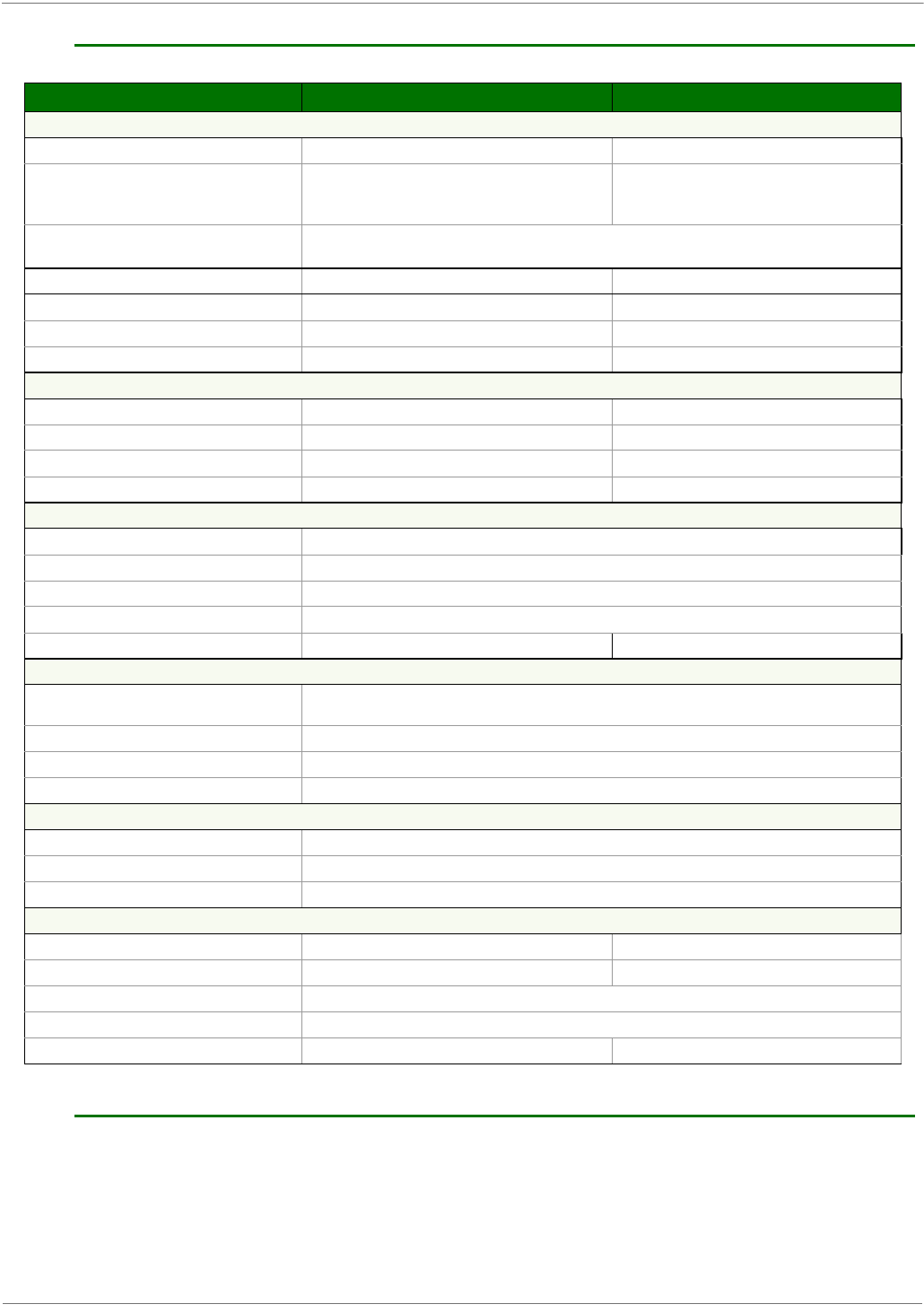
XBee‐PRO®900HP/XBee‐PRO®XSCRFModules
©2012DigiInternational,Inc. 93
Specifications
Pin Signals
Table1‐01. XBee‐PROXSCRFModuleSpecifications
Specification XBee-PRO XSC (S3 Hardware) XBee-PRO XSC (S3B Hardware)
Performance
Indoor/Urban Range Up to 1200ft (370m) up to 2000ft (610m)
Outdoor line-of-sight Range Up to 6 miles (9.6km) w/ dipole antenna
Up to 15 miles (24km) w/ high-gain antenna
Up to 9 miles (14km) w/ dipole antenna
Up to 28 miles (45km) w/ high-gain antenna
Interface Data Rate 125 - 65,000 bps
(Software selectable, includes non-standard baud rates)
Throughput Data Rate 9,600 bps 9.6kbps or 19.2kbps
RF Data Rate 10kbps 10kbps or 20kbps
Transmit Power Output +20dBm (100mW) Up to 24dBm (250mW) software selectable
Receiver Sensitivity -106dBm -109dBm at 9600 baud -107dBm at 19200 baud
Power Requirements
Supply Voltage 3.0-3.6 VDC regulated 2.4 to 3.6VDC
Receive Current 65mA 26mA typical
Transmit Current 265mA 215mA at 24dBm
Power Down Current 50uA 2.5uA typical @3.3v
General
Frequency Range 902-928MHz (located in the 900MHz ISM Band)
Spread Spectrum Frequency Hopping
Network Topology Point-to-Point, Peer-to-Peer, Point-to-Multipoint
Channel Capacity 7 hop sequences share 25 frequencies
Board-level Serial Data Interface (S3B) 3V CMOS UART (5V-tolerant) 3V CMOS UART
Physical Properties
Module Board Size 1.297" x 0.962" x 0.215 (3.29cm x 2.44cm x 0.546cm)
Note: Dimensions do not include connector/antenna or pin lengths
Weight 5 to 8 grams, depending on the antenna option
Connector 2 rows of 10 pins, 22mm apart with 2mm spaced male Berg-type headers
Operating Temperature -40 to 85º C (industrial)
Antenna Options
Integrated Wire ¼ wave monopole, 3.25” (8.26cm) length, 1.9dBi Gain
RF Connector Reverse-polarity SMA or U.FL
Impedance 50 ohms unbalanced
Certifications
FCC Part 15.247 MCQ-XBEEXSC MCQ-XBPS3B
Industry Canada (IC) 1846A-XBEEXSC 1846A-XBPS3B
Europe N/A
RoHS Compliant
Australia N/A Pending
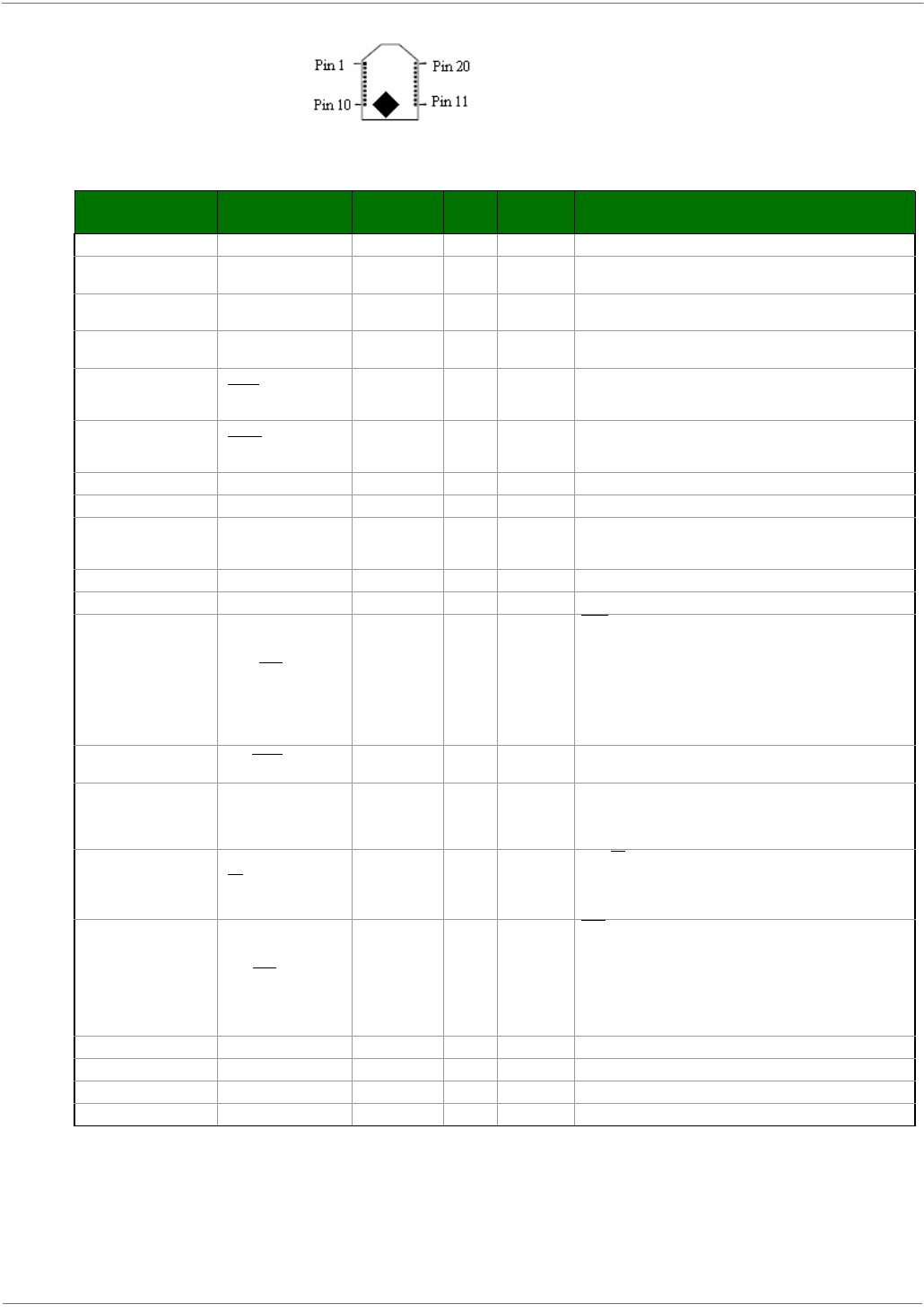
XBee‐PRO®900HP/XBee‐PRO®XSCRFModules
©2012DigiInternational,Inc. 94
Figure1‐01. XBee‐PROXSCRFModulePinNumbers(topview,shieldunderneath)
Table1‐02. J1PinSignalDescriptions
(Low‐assertedsignalsdistinguishedwithahorizontallineoversignalname.)
Note:*S3hasa100kpull‐up.S3Bhasinternalpull‐up.**S3has10kpull‐up.S3Bhasinternalpull‐up.
Module Pin Public Signal Notes I/O When
Active Function
1 VCC I Supply Voltage
2 DO (Data Out) O n/a Serial data exiting the module (to the UART host). Refer to the
Serial Communications section for more information
3 DI (Data In I n/a Serial data entering the module (from UART host). Refer to the
Serial Communications section for more information.
4 DO3 / RX LED O high Pin is driven high during RF data reception; otherwise, the pin is
driven low. Refer to the CD Command section to enable.
5 Reset
**Has a pull up
resistor I/O low
Re-boot module.(minimum pulse is 90us) Open Drain
configuration. Module will drive reset line low momentarily on
reboot and power up.
6 Config *Has a pull up
resistor I low / high
Pin can be used as a backup method for entering Command
Mode during power-up. Primary method is with “+++”. Refer to
the AT Commands section for more information.
7 O Driven high Do not Connect
8 NC Do not Connect
9 DI3 / SLEEP *Has a pull up
resistor Ihigh
By default, DI3 pin is not used. To configure this pin to support
Sleep Modes, refer to the Sleep Mode, SM Command and PW
Command sections.
10 GND Ground
11 O Driven high Do not Connect
12 DO2 / CTS / RS-485
Enable Olow
CTS (clear-to-send) flow control - When pin is driven low, UART
host is permitted to send serial data to the module. Refer to the
Serial Communications and CS Command sections for more
information.
----------------------------------------------------------------
RS-485 Enable - To configure this pin to enable RS-485 (2-wire
or 4-wire) communications, refer to the Serial Communications
and CS Command sections.
13 ON / Sleep Ohigh high = Indicates power is on and module is not in Sleep Mode.
Low = Sleep mode or module is unpowered
14 VREF I n/a
Not used on this module. For compatibility with other XBee
modules, we recommend connecting this pin to a voltage
reference if Analog sampling is desired. Otherwise, connect to
GND.
15 TX / PWR O n/a
low = TX - Pin pulses low during transmission
--------------------------------------------------------------
high = PWR - Indicates power is on and module is not in Sleep
Mode
16 DI2 / RTS / CMD *Has a pull
down resistor Ilow
RTS (request-to-send) flow control - By default, this pin is not
used. To configure this pin to regulate the flow of serial data
exiting the module, refer to the Serial Communications and RT
Command sections.
---------------------------------------------------------------
CMD -Refer to Binary Commands and RT Command sections
to enable binary command programming.
17 O Driven low Do not Connect
18 O Driven low Do not Connect
19 O Driven low Do not Connect
20 O Driven low Do not Connect
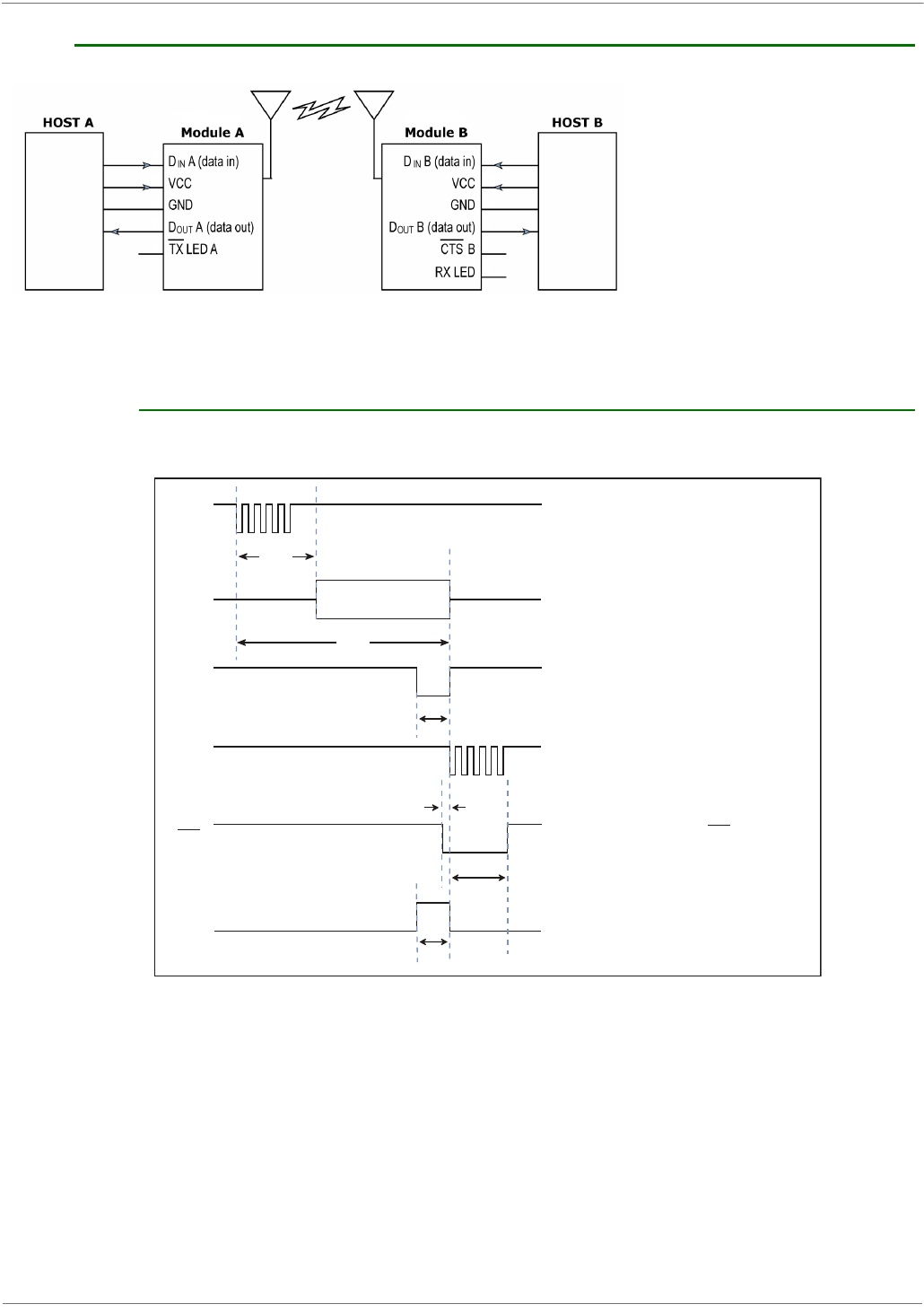
XBee‐PRO®900HP/XBee‐PRO®XSCRFModules
©2012DigiInternational,Inc. 95
Electrical Characteristics
Figure1‐02. SystemBlockDiagramBasicwirelesslinkbetweenhosts
The data flow sequence is initiated when the first byte of data is received in the DI Buffer of the
transmitting module (XBee Module A). As long as XBee Module A is not already receiving RF data,
data in the DI Buffer is packetized, then transmitted over-the-air to XBee Module B.
Timing Specifications
Figure1‐03. TimingSpecifications(“A”and“B”refertoFigure1‐02.)
A Transmits over air
B Receives
T
ST
T
TX
T
TL
T
RL
Host A sends serial data to XBee Module A
After T , contents of D Buffer
are assembled into packet and transmitted
IN
TX/PWR LED on XBee Module A pulses off
briefly to indicate RF transmission
If 16-bit CRC checks out, data is shifted out
serial port to Host B
(Optional) Set ATCS = 1 to use CTS as RS-485
TX enable low-asserted signal
RX LED pulses on briefly to indicate RF reception
DA
IN
RF A
OUT
TX LED A
D B
OUT
RX LED B
CTS B
ST
T
CLDL
T
CHDH
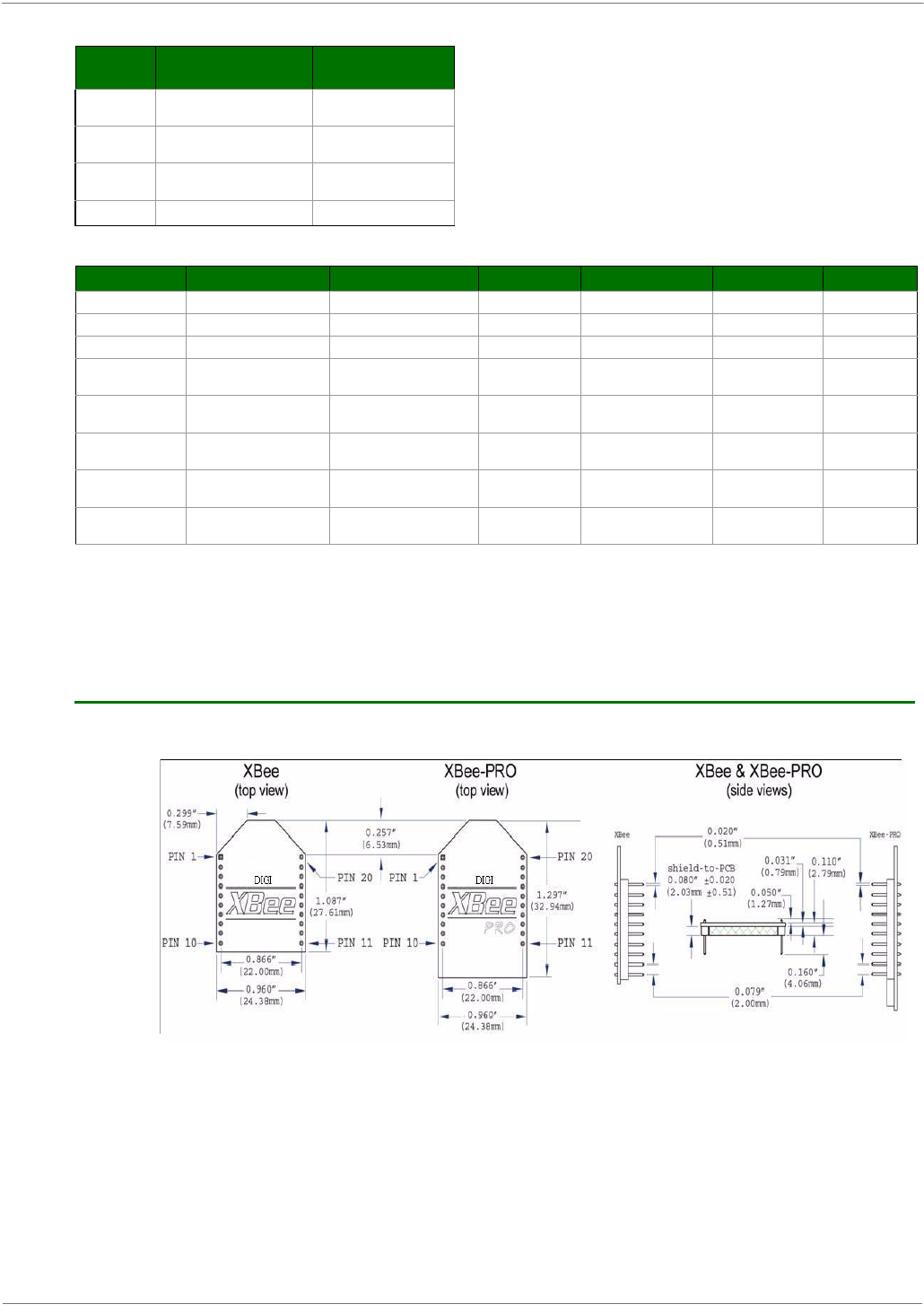
XBee‐PRO®900HP/XBee‐PRO®XSCRFModules
©2012DigiInternational,Inc. 96
Table1‐03. TypicalACCharacteristics(SYparameter=0,symbolscorrespondtoFigure1‐02andFigure1‐03.)
Table1‐04. DCCharacteristics(Vcc=3.0‐3.6VDC)
Note:*MinVoltageforS3Bis2.4v,howeverMaxPowerwillbereducedandSensitivitymaydegrade.
**S3istolerantupto5.5voninputpins.
***S3Bcanhavepull‐upsenabledandstillmaintainlowleakagecurrent.
Mechanical Drawings
Figure1‐04. MechanicalDrawings
Symbol Description 9600 baud rate
(32 byte packet)
TTX Latency from the time data
is transmitted until received 72.0 ms
TTL Time that TX/PWR pin is
driven low 16.8 ms
TRL Time that RX LED pin is
driven high 25.6 ms
TST Channel Initialization Time 35.0 ms
Symbol Parameter Condition Min Typical Max Units
Vcc Module Supply Voltage *3.0 3.6 V
VIL Input Low Voltage All input signals -0.3 0.3Vcc V
VIH Input High voltage All input signals 0.7Vcc Vcc + 0.3 ** V
VOL Output Low-Level
Voltage Iout = Iout_Max 0.4 V
VOH Output High-Level
Voltage Iout = Iout_Max Vcc-0.4 V
IL Input Leakage Current ***With Pull-up resistors
disabled 40 400 nA
IO1 Output Current pins 2, 15 (Dout, ~TX/
Pwr) 2mA
IO2 Output Current pins 4, 12, 13
(DCD,~CTS,ON/~Sleep) 8mA
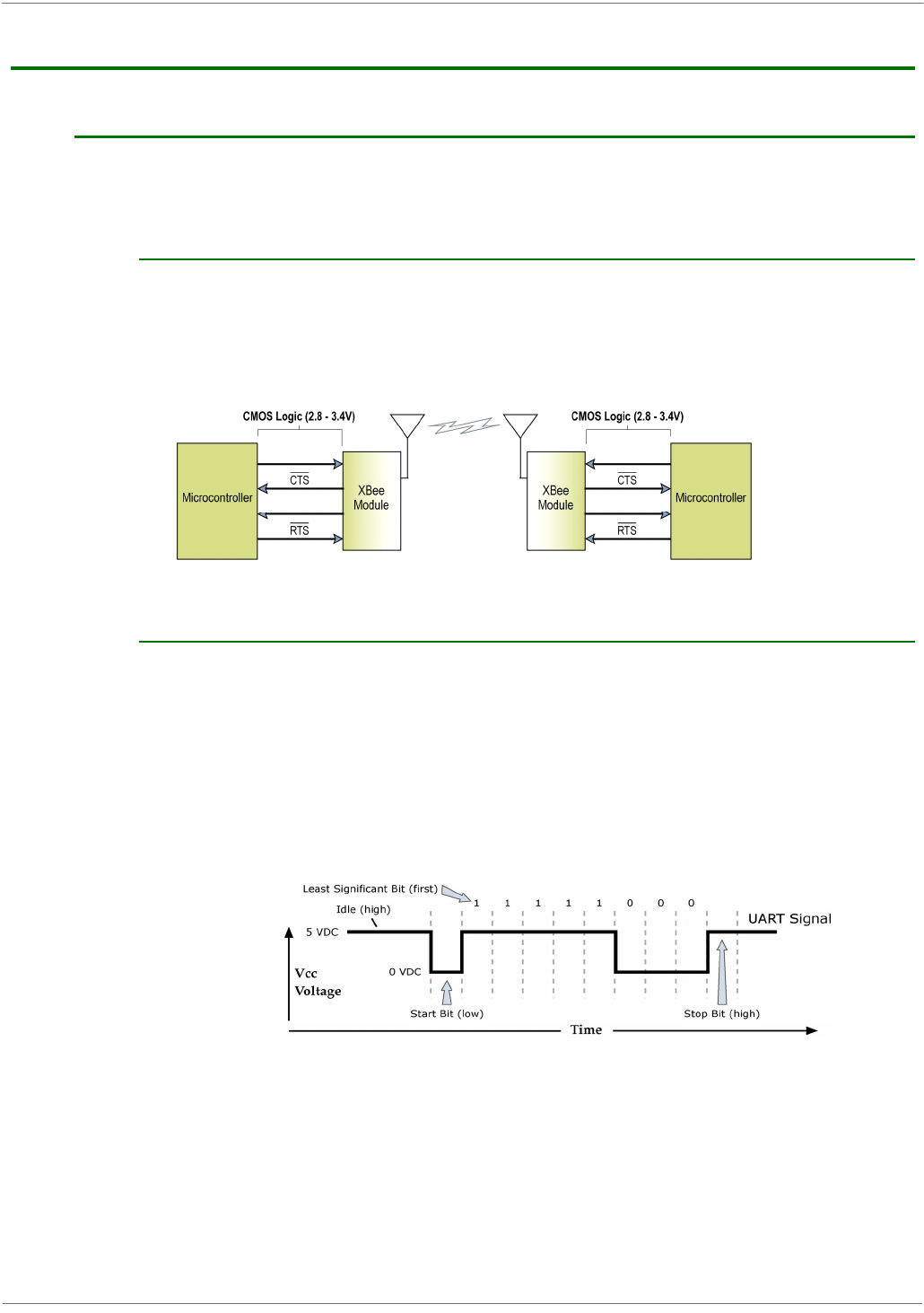
XBee‐PRO®900HP/XBee‐PRO®XSCRFModules
©2012DigiInternational,Inc. 97
2.RFModuleOperation
Serial Communications
The XBee module interfaces to a host device through a CMOS-level asynchronous serial port.
Through its serial port, the module can communicate with any UART voltage compatible device or
through a level translator to any RS-232/485/422 device.
UART-Interfaced Data Flow
DevicesthathaveaUARTinterfacecanconnectdirectlythroughthepinsoftheXBeemoduleasshowninthe
figurebelow.
Figure1‐05. SystemDataFlowDiagraminaUART‐interfacedenvironment
(Low‐assertedsignalsdistinguishedwithhorizontallineoversignalname.)
Serial Data
Data enters the XBee module through the DI pin as an asynchronous serial signal. The signal
should idle high when no data is being transmitted.
The UART performs tasks, such as timing and parity checking, that are needed for data
communications. Serial communication consists of two UARTs, one being the XBee's and the other
being the Microcontroller's, configured with compatible parameters (baud rate, parity, start bits,
stop bits, data bits) to have successful communication. Each data packet consists of a start bit
(low), 8 data bits (least significant bit first) and a stop bit (high). The following figure illustrates
the serial bit pattern of data passing through the module.
Figure1‐06. UARTdatapacket0x1F(decimalnumber“31”)astransmittedthroughtheXBeeModule
ExampleDataFormatis8‐N‐1(bits‐parity‐#ofstopbits)
DIN (data in) DIN (data in)
DOUT (data out) DOUT (data out)
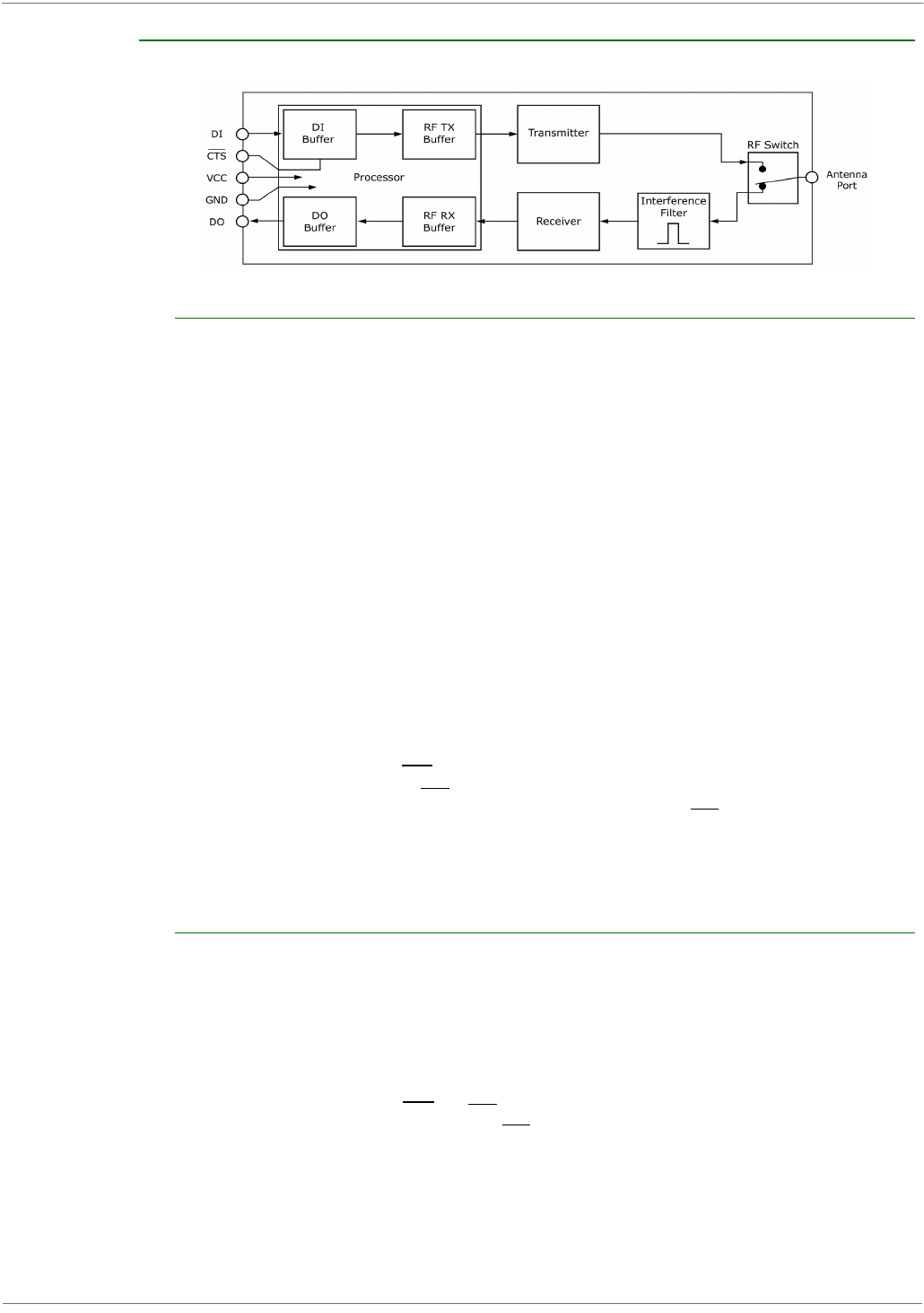
XBee‐PRO®900HP/XBee‐PRO®XSCRFModules
©2012DigiInternational,Inc. 98
Flow Control
Figure1‐07. InternalDataFlowDiagram(Thefivemostcommonly‐usedpinsignalsshown.)
DI (Data In) Buffer and Flow Control
When serial data enters the XBee module through the DI Pin, then the data is stored in the DI
Buffer until it can be transmitted.
When the RO parameter threshold is satisfied (refer to Transmit Mode and Command Descriptions
sections for more information), the module attempts to initialize an RF connection. If the module is
already receiving RF data, the serial data is stored in the module's DI Buffer. If the DI buffer
becomes full, hardware or software flow control must be implemented in order to prevent overflow
(loss of data between the host and XBee RF Module).
How to eliminate the need for flow control:
• Send messages that are smaller than the DI buffer size, which is generally around 1,000
bytes.
• Interface at a lower baud rate (BD parameter) than the fixed RF data rate with the Retries
functionality (RR parameter) disabled.
Two cases in which the DI Buffer may become full and possibly overflow:
• If the serial interface data rate is set higher than the RF data rate of the module, the module
will receive data from the host faster than it can transmit the data over-the-air.
• If the module is receiving a continuous stream of data, monitoring data on a network, or
awaiting acknowledgments for Retries functionality, any serial data that arrives on the DI pin
is placed in the DI Buffer. The data in the DI buffer will be transmitted over-the-air when the
module no longer detects RF data in the network.
Hardware Flow Control (CTS). When the DI buffer is 65 bytes away from being full; by default,
the module de-asserts (high) CTS to signal to the host device to stop sending data [refer to FT
(Flow Control Threshold) and CS (DO2 Configuration) Commands]. CTS is re-asserted after the DI
Buffer has 34 bytes of memory available.
Software Flow Control (XON). XON/XOFF software flow control can be enabled using the FL
(Software Flow Control) command.
DO (Data Out) Buffer and Flow Control
When RF data is received, the data enters the DO buffer and is then sent out the serial port to a
host device. Once the DO Buffer reaches capacity, any additional incoming RF data is lost.
Two cases in which the DO Buffer may become full and possibly overflow:
• If the RF data rate is higher than the set interface data rate of the module, the module will
receive data from the transmitting module faster than it can send the data to the host.
• If the host does not allow the RF module to send data out of the DO buffer because of hard-
ware or software flow control.
Hardware Flow Control (RTS). If RTS is enabled for flow control (RT Parameter = 2), data will
not be sent out the DO Buffer as long as RTS (pin 16) is de-asserted.
Software Flow Control (XOFF). XON/XOFF software flow control can be enabled using the FL
(Software Flow Control) Command. This option only works with ASCII data.
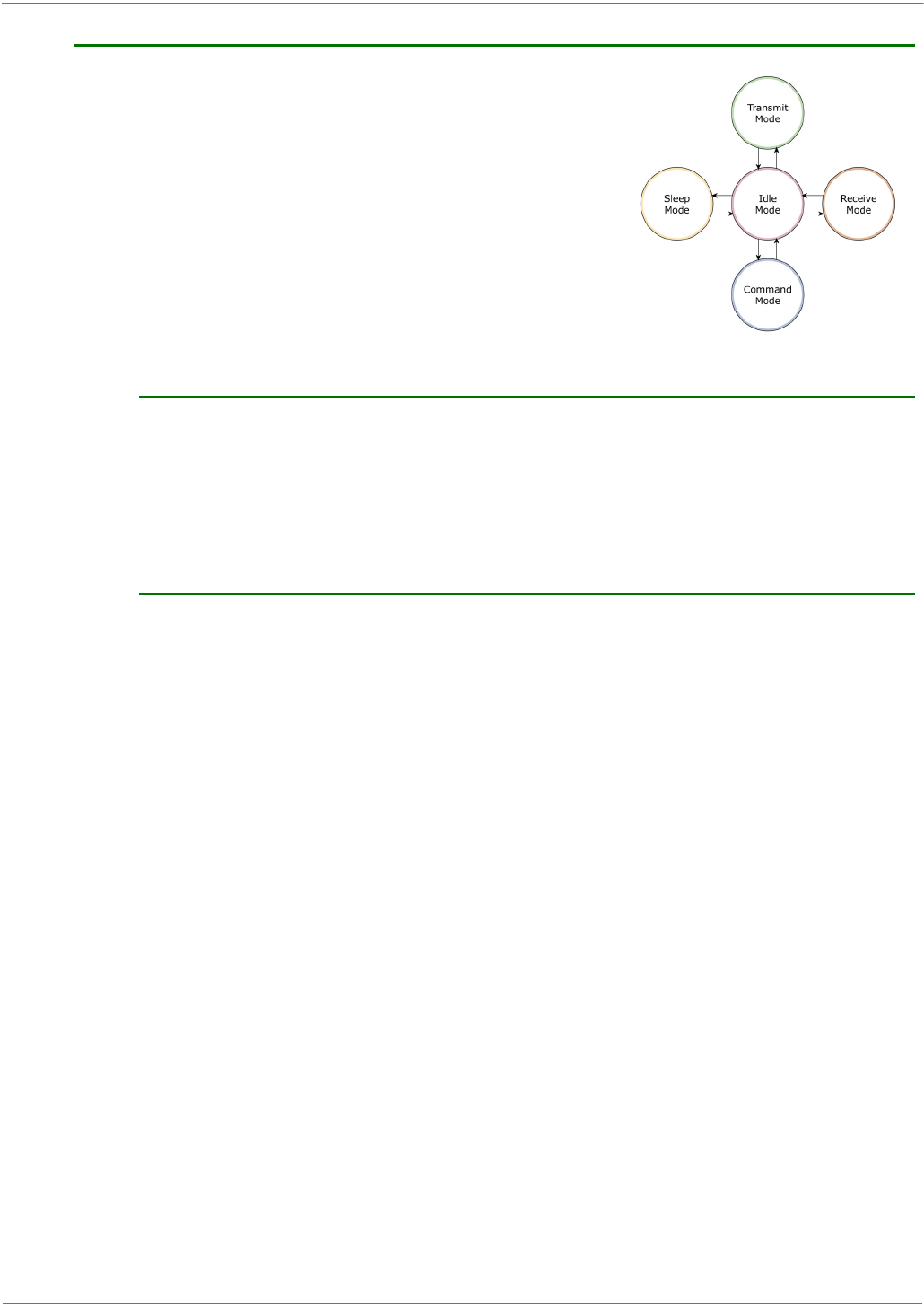
XBee‐PRO®900HP/XBee‐PRO®XSCRFModules
©2012DigiInternational,Inc. 99
Modes of Operation
XBee-PRO® 900HP/XBee-PRO® XSC RF Modules
operate in five modes.
Figure1‐08. ModesofOperation
Idle Mode
When not receiving or transmitting data, the RF module is in Idle Mode. The module shifts into the
other modes of operation under the following conditions:
• Transmit Mode (Serial data is received in the DI Buffer)
• Receive Mode (Valid RF data is received through the antenna)
• Sleep Mode (Sleep Mode condition is met)
• Command Mode (Command Mode Sequence is issued)
Transmit Mode
When the first byte of serial data is received from the UART in the DI buffer, the modem attempts
to shift to Transmit Mode and initiate an RF connection with other modems. After transmission is
complete, the modem returns to Idle Mode.
RF transmission begins after either of the following criteria is met:
1. RB bytes have been received in the DI buffer and are pending for RF transmission [refer to RB
(Packetization Threshold) command, p34].
- The RB parameter may be set to any value between 1 and the RF packet size (PK), inclusive.
When RB = 0, the packetization threshold is ignored.
2. At least one character has been received in the DI buffer (pending for RF transmission) and RO
time has been observed on the UART [refer to RO (Packetization Timeout) command].
- The time out can be disabled by setting RO to zero. In this case, transmission will begin after RB
bytes have been received in the DI buffer.
Note: RF reception must complete before the modem is able to enter into Transmit Mode.
After either RB or RO conditions are met, the modem then initializes a communications channel.
[Channel initialization is the process of sending an RF initializer that synchronizes receiving
modems with the transmitting modem. During channel initialization, incoming serial data
accumulates in the DI buffer.]
Serial data in the DI buffer is grouped into RF packets [refer to PK (RF Packet Size)]; converted to
RF data; then transmitted over-the-air until the DI buffer is empty.
RF data, which includes the payload data, follows the RF initializer. The payload includes up to the
maximum packet size (PK Command) bytes. As the transmitting modem nears the end of the
transmission, it inspects the DI buffer to see if more data exists to be transmitted. This could be
the case if more than PK bytes were originally pending in the DI buffer or if more bytes arrived
from the UART after the transmission began. If more data is pending, the transmitting modem
assembles a subsequent packet for transmission.
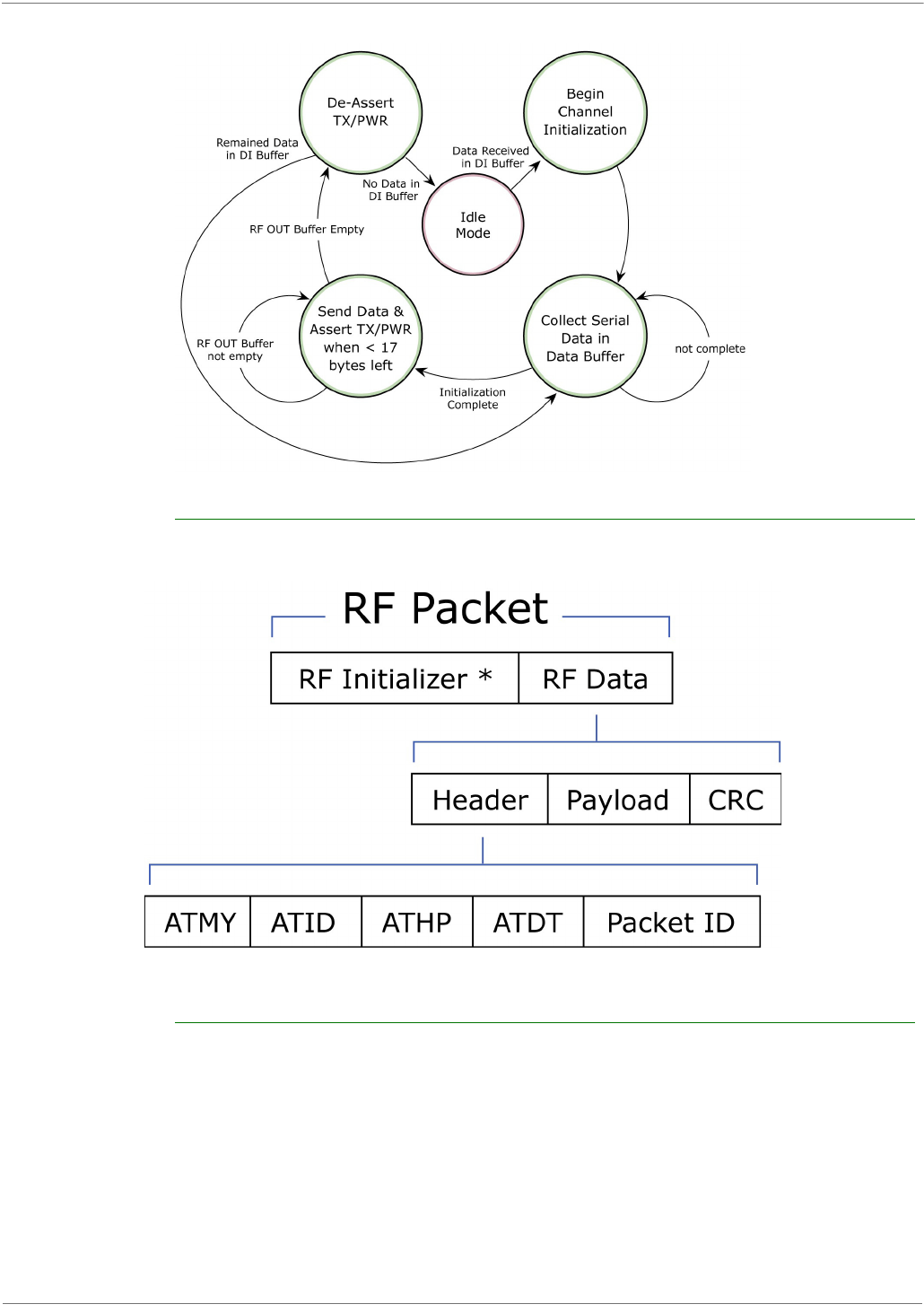
XBee‐PRO®900HP/XBee‐PRO®XSCRFModules
©2012DigiInternational,Inc. 100
RF Packet
The RF packet is the sequence of data used for communicating information between Digi
Radios. An RF Packet consists of an RF Initializer and RF Data.
When streaming multiple RF packets, the RF Initializer is only sent in front of the first packet.
RF Initializer
An RF initializer is sent each time a new connection sequence begins. The RF initializer contains
channel information that notifies receiving modems of information such as the hopping pattern
used by the transmitting modem. The first transmission always sends an RF initializer.
An RF initializer can be of various lengths depending on the amount of time determined to be
required to prepare a receiving modem. For example, a wake-up initializer is a type of RF initial-
izer used to wake remote modems from Sleep Mode (Refer to the FH, LH, HT and SM Com-
mands for more information). The length of the wake-up initializer should be longer than the
length of time remote modems are in cyclic sleep.
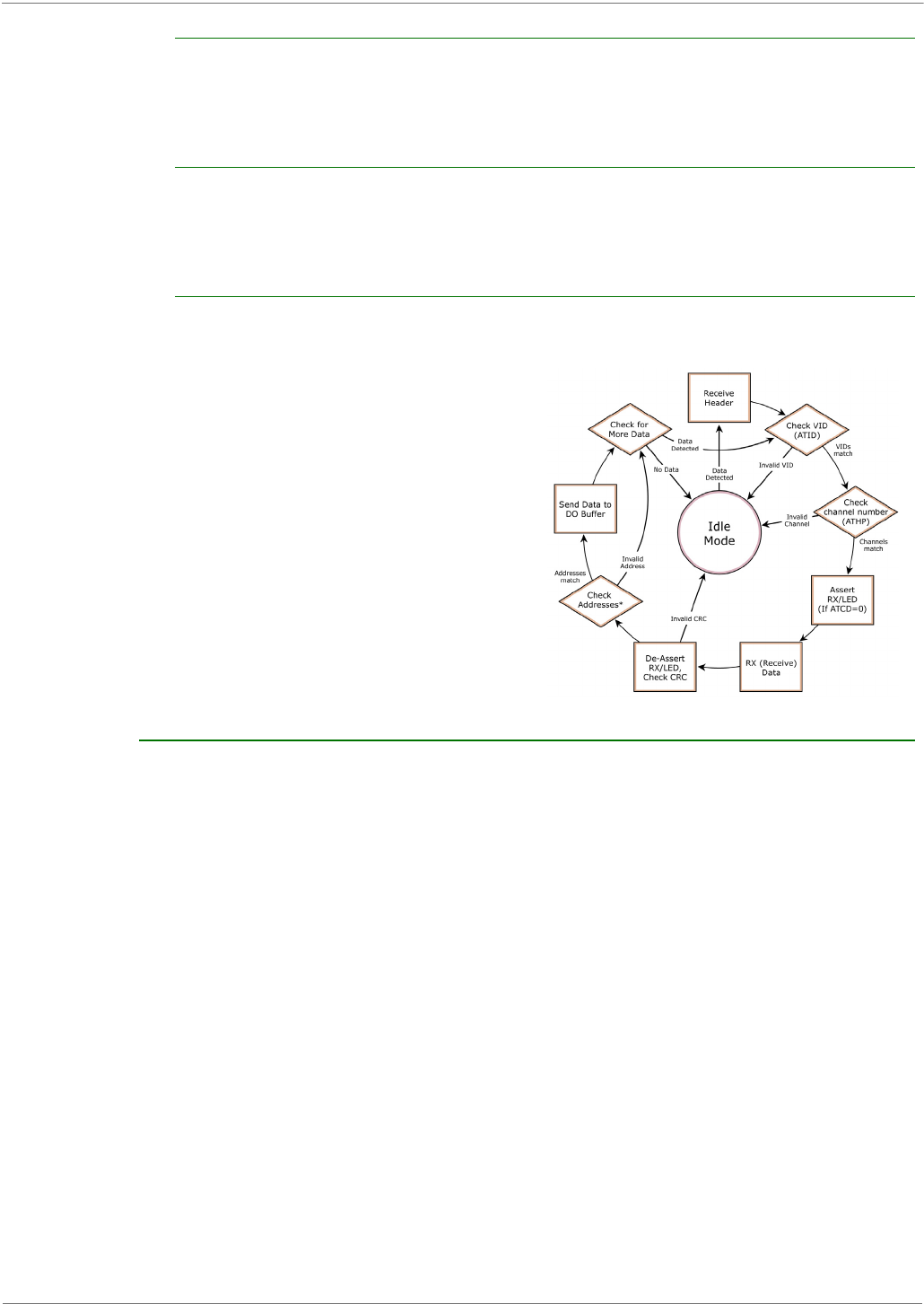
XBee‐PRO®900HP/XBee‐PRO®XSCRFModules
©2012DigiInternational,Inc. 101
Header
The header contains network addressing information that filters incoming RF data. The receiv-
ing modem checks for a matching Hopping Channel (HP parameter), Vendor Identification Num-
ber (ID parameter) and Destination Address (DT parameter). Data that does not pass through
all three network filter layers is discarded.
CRC (Cyclic Redundancy Check)
To verify data integrity and provide built-in error checking, a 16-bit CRC (Cyclic Redundancy
Check) is computed for the transmitted data and attached to the end of each RF packet. On the
receiving end, the receiving modem computes the CRC on all incoming RF data. Received data
that has an invalid CRC is discarded.
Receive Mode
If a module detects RF data while operating in Idle Mode, the module transitions into Receive Mode
to start receiving RF packets.
Figure1‐09. ReceptionofRFData
After a packet is received, the module
checks the CRC (cyclic redundancy check)
to ensure that the data was transmitted
without error. If the CRC data bits on the
incoming packet are invalid, the packet is
discarded. If the CRC is valid, the packet
proceeds to the DO Buffer.
The module returns to Idle Mode after valid
RF data is no longer detected or after an
error is detected in the received RF data. If
serial data is stored in the DI buffer while
the module is in Receive Mode, the serial
data will be transmitted after the module is
finished receiving data and returns to Idle
Mode.
Sleep Mode
Sleep Modes enable the XBee module to operate at minimal power consumption when not in use.
The following Sleep Mode options are available:
•Pin Sleep
•Cyclic Sleep
For the module to transition into Sleep Mode, the module must have a non-zero SM (Sleep Mode)
Parameter and one of the following must occur:
• The module is idle (no data transmission or reception) for a user-defined period of time [Refer
to the ST (Time before Sleep) Command].
• SLEEP is asserted (only for Pin Sleep option).
In Sleep Mode, the module will not transmit or receive data until the module first transitions to
Idle Mode. All Sleep Modes are enabled and disabled using SM Command. Transitions into and out
of Sleep Modes are triggered by various events as shown in the table below.

XBee‐PRO®900HP/XBee‐PRO®XSCRFModules
©2012DigiInternational,Inc. 102
Table1‐05. SummaryofSleepModeConfigurations
Pin Sleep (SM = 1)
In order to achieve this state, SLEEP pin must be asserted (high). The module remains in Pin Sleep
until the SLEEP pin is de-asserted.
After enabling Pin Sleep, the SLEEP pin controls whether the XBee module is active or in Sleep
Mode. When SLEEP is de-asserted (low), the module is fully operational. When SLEEP is asserted
(high), the module transitions to Sleep Mode and remains in its lowest power-consuming state
until the SLEEP pin is de-asserted. SLEEP is only active if the module is setup to operate in this
mode; otherwise the pin is ignored.
Once in Pin Sleep Mode, CTS is de-asserted (high), indicating that data should not be sent to the
module. The PWR pin is also de-asserted (low) when the module is in Pin Sleep Mode.
Note: The module will complete a transmission or reception before activating Pin Sleep.
Cyclic Sleep (SM = 3-8)
Cyclic Sleep is the Sleep Mode in which the XBee module enters into a low-power state and
awakens periodically to determine if any transmissions are being sent.
When Cyclic Sleep settings are enabled, the XBee module goes into Sleep Mode after a user-
defined period of inactivity (no transmission or reception on the RF channel). The user-defined
period is determined by ST (Time before Sleep) Command.
While the module is in Cyclic Sleep Mode, CTS is de-asserted (high) to indicate that data should
not be sent to the module during this time. When the module awakens to listen for data, CTS is
asserted and any data received on the DI Pin is transmitted. The PWR pin is also de-asserted (low)
when the module is in Cyclic Sleep Mode.
The module remains in Sleep Mode for a user-defined period of time ranging from 0.5 seconds to
16 seconds (SM Parameters 3 through 8). After this interval of time, the module returns to Idle
Mode and listens for a valid data packet for 100 ms. If the module does not detect valid data (on
any frequency), the module returns to Sleep Mode. If valid data is detected, the module
transitions into Receive Mode and receives incoming RF packets. The module then returns to Sleep
Mode after a Period of inactivity that is determined by ST “Time before Sleep” Command.
The module can also be configured to wake from cyclic sleep when SLEEP (pin 9) is de-asserted
(low). To configure a module to operate in this manner, PW (Pin Wake-up) Command must be
issued. Once SLEEP is de-asserted, the module is forced into Idle Mode and can begin transmitting
or receiving data. It remains active until no data is detected for the period of time specified by the
ST Command, at which point it resumes its low-power cyclic state.
Note: The cyclic interval time defined by SM (Sleep Mode) Command must be shorter than the
interval time defined by LH (Wake-up Initializer Timer).
For example: If SM=4 (Cyclic 1.0 second sleep), the LH Parameter should equal 0x0B ("1.1"
seconds). With these parameters set, there is no risk of the receiving module being asleep for the
duration of wake-up initializer transmission. “Cyclic Scanning” explains in further detail the
relationship between “Cyclic Sleep” and “Wake-up Initializer Timer”
Sleep Mode
Setting
Transition into
Sleep Mode
Transition out of
Sleep Mode
Related
Commands
Typical Power
Consumption
(S3)
Typical Power
Consumption
(S3B)
Pin Sleep
(SM = 1)
Microcontroller can shut down and wake
modules by asserting (high) SLEEP (pin 9).
Note: The module will complete a
transmission or reception before activating
Pin Sleep.
De-assert (low)
SLEEP (pin 9). SM 50 µA 2.5uA
Cyclic Sleep
(SM = 3-8)
Automatic transition to Sleep Mode occurs
in cycles as defined by the SM (Sleep
Mode) Command.
Note: The cyclic sleep time interval must be
shorter than the “Wake-up Initializer Timer”
(set by LH Command).
After the cyclic sleep
time interval elapses.
Note: Module can be
forced into Idle Mode
if PW (Pin Wake-up)
Command is enabled.
SM, ST, HT,
LH, PW
76 µA
when sleeping
2.5uA
when sleeping
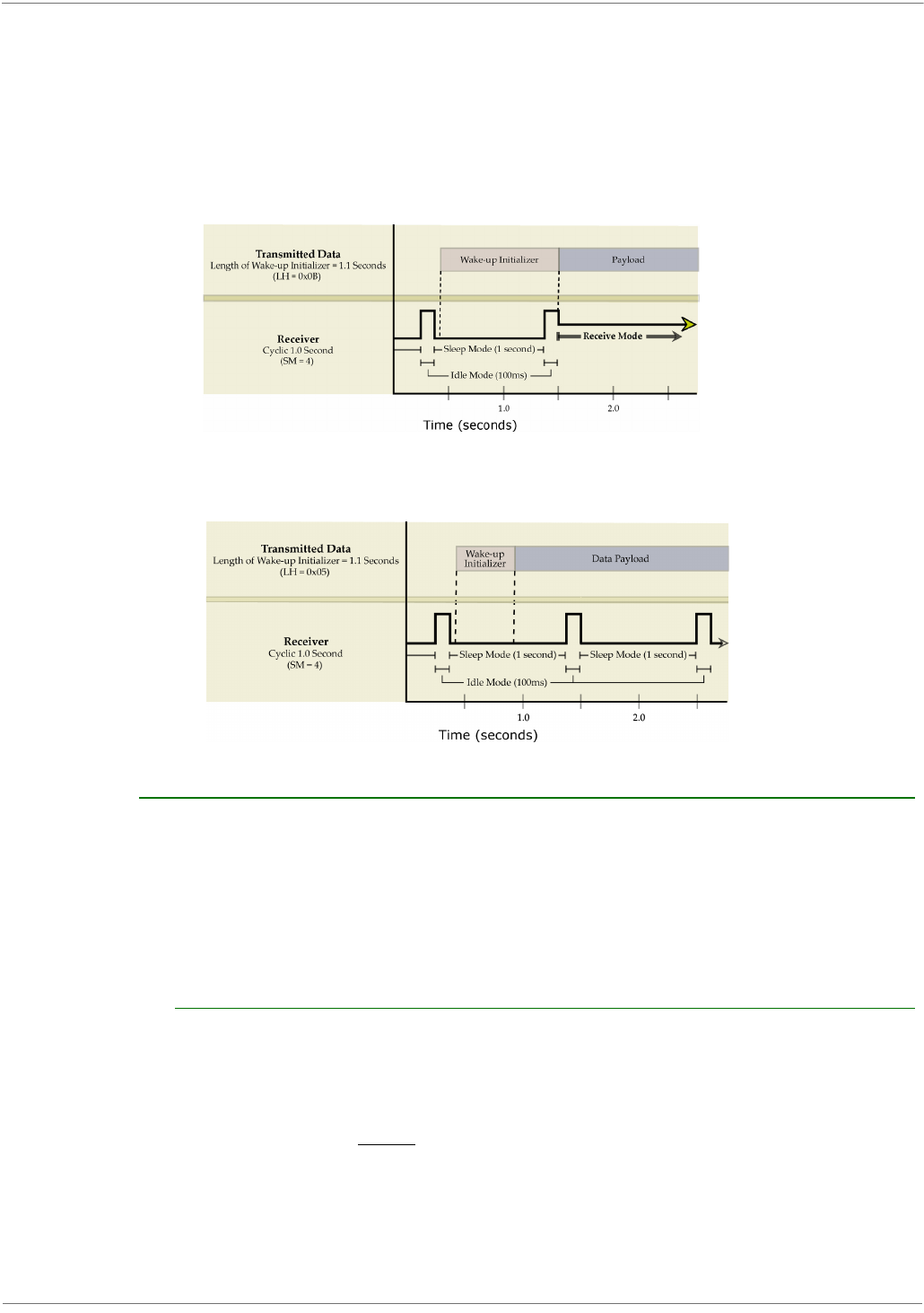
XBee‐PRO®900HP/XBee‐PRO®XSCRFModules
©2012DigiInternational,Inc. 103
Cyclic Scanning. Each RF transmission consists of an RF Initializer and payload. The wake-up
initializer contains initialization information and all receiving modules must wake during the wake-
up initializer portion of data transmission in order to be synchronized with the transmitting module
and receive the data.
Figure1‐010.CorrectConfiguration(LH>SM)
Lengthofthewake‐upinitializerexceedsthetimeintervalofCyclicSleep.Thereceiverisguaranteedtodetect
thewake‐upinitializerandreceivetheaccompanyingpayloaddata.
Figure1‐011.IncorrectConfiguration(LH<SM)
Lengthofwake‐upinitializerisshorterthanthetimeintervalofCyclicSleep.Thisconfigurationisvulnerableto
thereceiverwakingandmissingthewake‐upinitializer(andthereforealsotheaccompanyingpayloaddata).
Command Mode
To modify or read module parameters, the module must first enter into Command Mode, the state in
which received characters on the UART are interpreted as commands. Two command types are avail-
able for programming the module:
• AT Commands
• Binary Commands
For modified parameter values to persist in the module registry, changes must be saved to non-vola-
tile memory using WR (Write) Command. Otherwise, parameters are restored to previously saved val-
ues after the module is powered off and then on again.
AT Commands
To Enter AT Command Mode:
• Send the 3-character command sequence “+++” and observe guard times before and after
the command characters. [refer to ‘Default AT Command Mode Sequence’ below.] The ‘Termi-
nal’ tab (or other serial communications software) of the X-CTU Software can be used to enter
the sequence.
[OR]
• Assert (low) the CONFIG pin and either turn the power going to the module off and back on.
(If using a Digi XBIB-R Interface Board, the same result can be achieved by holding the Data-
In line low (also known as a break) while rebooting the module by pressing the reset button
on the module assembly [module assembly = module mounted to an interface board]).
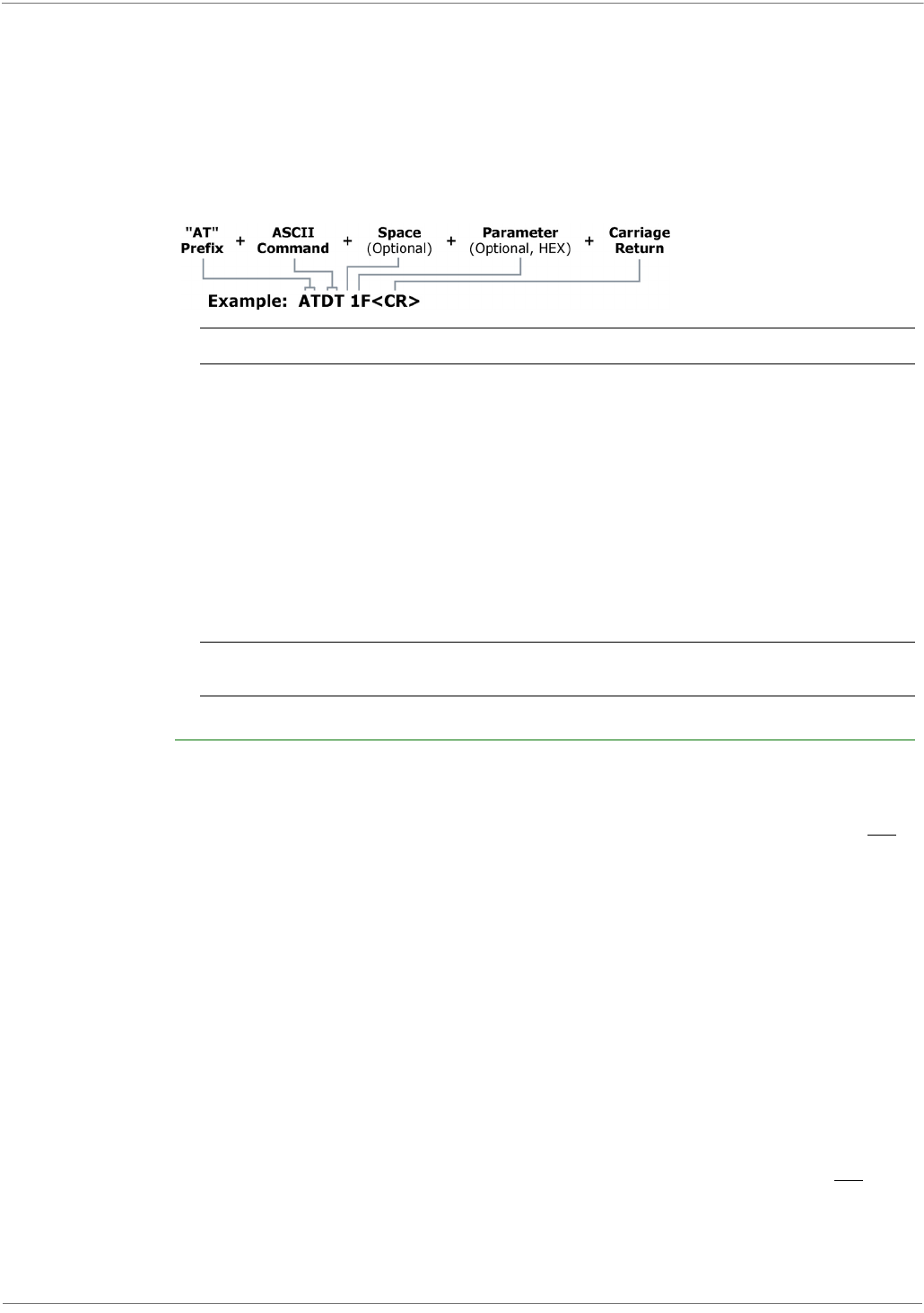
XBee‐PRO®900HP/XBee‐PRO®XSCRFModules
©2012DigiInternational,Inc. 104
Default AT Command Mode Sequence (for transition to Command Mode):
• No characters sent for one second [refer to the BT (Guard Time Before) Command]
• Input three plus characters (“+++”) within one second
[refer to the CC (Command Sequence Character) Command.]
• No characters sent for one second [refer to the AT (Guard Time After) Command.]
To Send AT Commands:
Send AT commands and parameters using the syntax shown below.
Figure1‐12.SyntaxforsendingATCommands
To read a parameter value stored in the module register, leave the parameter field blank.
The preceding example would change the module’s Destination Address to “0x1F”. To store the
new value to non-volatile (long term) memory, the Write (ATWR) command must subsequently be
sent before powering off the module.
System Response. When a command is sent to the module, the module will parse and execute
the command. Upon successful execution of a command, the module returns an “OK” message. If
execution of a command results in an error, the module returns an “ERROR” message.
To Exit AT Command Mode:
• If no valid AT Commands are received within the time specified by CT (Command Mode Time-
out) Command, the module automatically returns to Idle Mode.
[OR]
• Send ATCN (Exit Command Mode) Command.
For an example of programming the RF module using AT Commands and descriptions of each config-
urable parameter, refer to the “RF Module Configuration” chapter.
Binary Commands
Sending and receiving parameter values using binary commands is the fastest way to change
operating parameters of the module. Binary commands are used most often to sample signal
strength (RS parameter) and/or error counts; or to change module addresses and channels for
polling systems when a quick response is necessary. Since the sending and receiving of parameter
values takes place through the same data path as 'live' data (received RF payload), follow the CTS
pin as outlined in Figure 2-012 to distinguish between the two types of data (commands vs 'live'
data).
Common questions regarding the use of binary commands:
• What are the implications of asserting CMD while live data is being sent or received?
• After sending serial data, is there a minimum time delay before CMD can be asserted?
• Is a time delay required after CMD is de-asserted before payload data can be sent?
• How to discern between live data and data received in response to a command?
CMD (pin 16) must be asserted in order to send binary commands to the module. The CMD pin can
be asserted to recognize binary commands anytime during the transmission or reception of data.
The status of the CMD signal is only checked at the end of the stop bit as the byte is shifted into
the serial port. The application does not allow control over when data is received, except by
waiting for dead time between bursts of communication.
If the command is sent in the middle of a stream of payload data to be transmitted, the command
will essentially be executed in the order it is received. If the radio is continuously receiving data,
the radio will wait for a break in the received data before executing the command. The CTS signal
will frame the response coming from the binary command request [Figure 1-013].
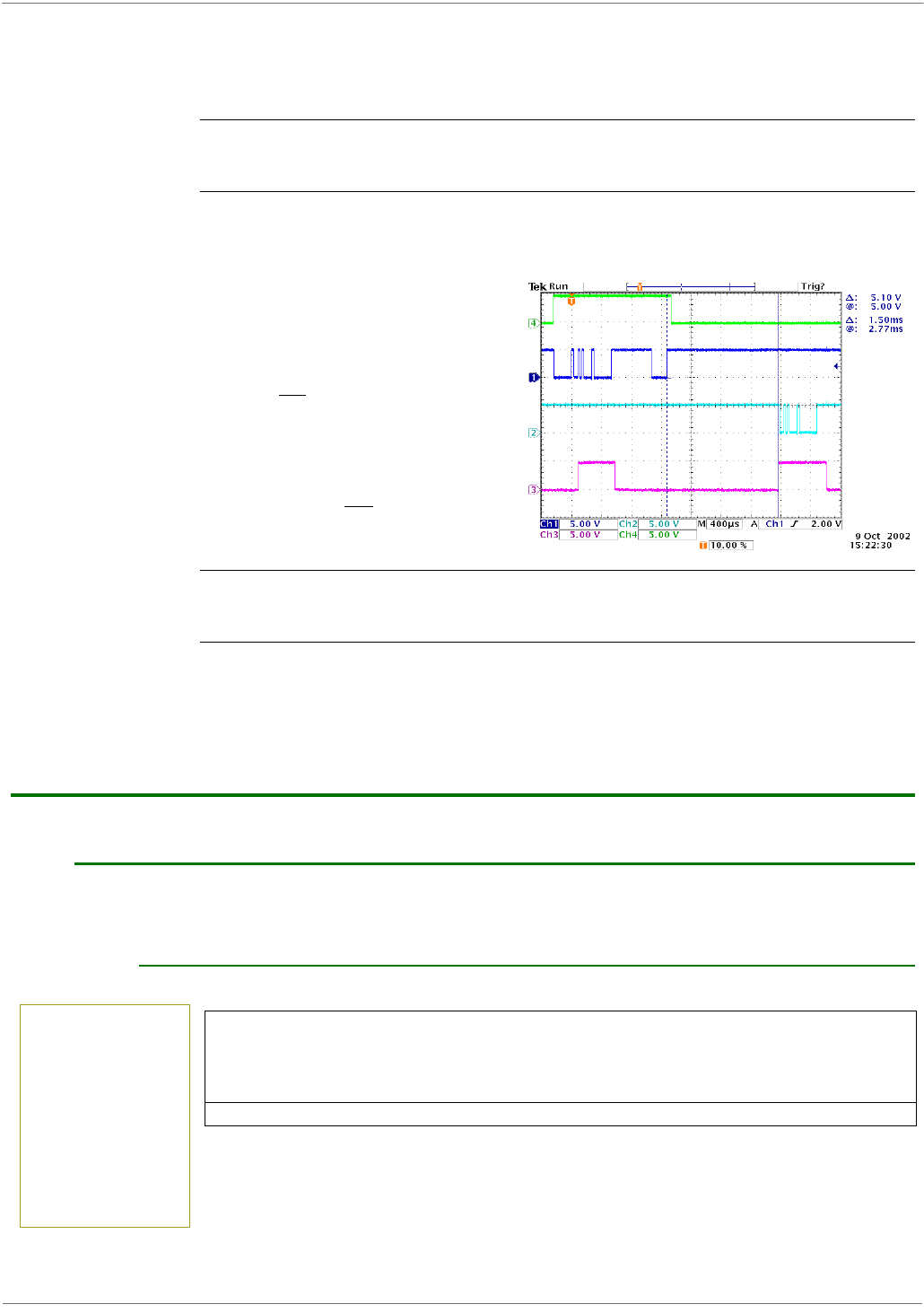
XBee‐PRO®900HP/XBee‐PRO®XSCRFModules
©2012DigiInternational,Inc. 105
A minimum time delay of 100 µs (after the stop bit of the command byte has been sent) must be
observed before pin 5 can be de-asserted. The command executes after all parameters associated
with the command have been sent. If all parameters are not received within 0.5 seconds, the
module aborts the command and returns to Idle Mode.
Note: Binary commands that return only one parameter byte must also be written with two parameter
bytes, 0-padded, LSB first. Refer to “Programming Examples” section [p18] for a binary programming
example.
Commands can be queried for their current value by sending the command logically ORed (bit-
wise) with the value 0x80 (hexadecimal) with CMD asserted. When the binary value is sent (with
no parameters), the current value of the command parameter is sent back through the DO pin.
Figure1‐013.BinaryCommandWritethenRead
Signal#4isCMD(pin16)
Signal#1istheDIN(pin3)signal
totheradio
Signal#2istheDOUT(pin2)signal
fromtheradio
Signal#3isCTS(pin12)
In this graph, a value was written to a
register and then read out to verify it.
While not in the middle of other received
data, note that the CTS signal outlines the
data response out of the module.
IMPORTANT: For the XBee module to recognize a binary command, the RT (DI2 Configuration) param-
eter must be set to one. If binary programming is not enabled RT = 0 or 2, the module will not recog-
nize that the CMD pin is asserted and therefore will not recognize the data as binary commands.
3.RFModuleConfiguration
XBee Programming Examples
For information about entering and exiting AT and Binary Command Modes, refer to the Command
Mode section.
AT Commands
To Send AT Commands (Using the ‘Terminal’ tab of the X-CTU Software)
Example: Utilize the 'Terminal' tab of the X-CTU Software to change the module's DT (Destina-
tion Address) parameter and save the new address to non-volatile memory. This example
requires the installation of Digi’s X-CTU Software and a serial connection to a PC.
Select the ‘Terminal’ tab of the X-CTU Software and enter the following command lines:
Method 1 (One line per command)
Note:Donotsendcom‐
mandstothemodule
duringflashprogram‐
ming(whenparameters
arebeingwrittentothe
moduleregistry).
Waitforthe“OK”sys‐
temresponsethatfol‐
lowstheATWR
commandbeforeenter‐
ingthenextcommand
oruseflowcontrol.
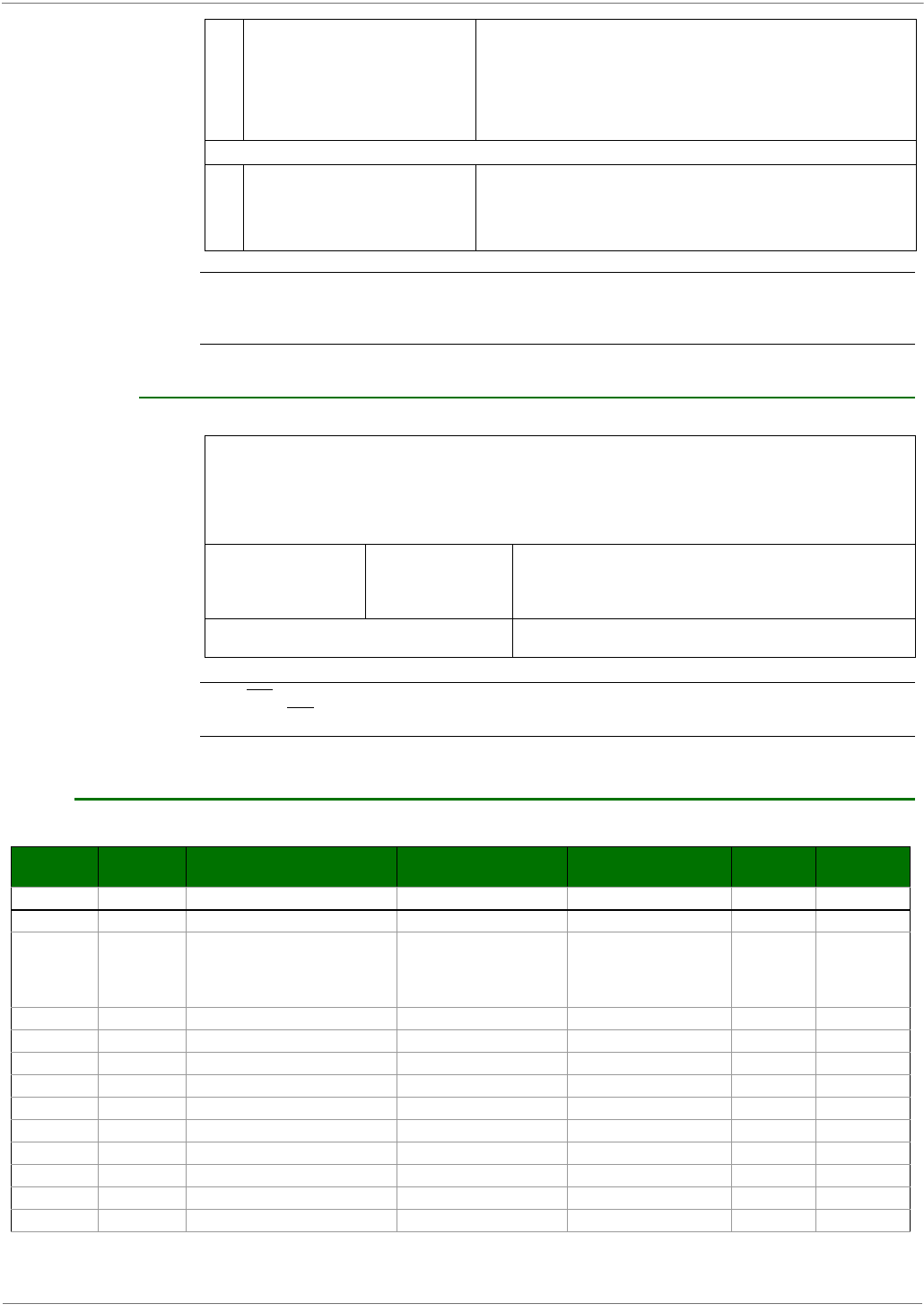
XBee‐PRO®900HP/XBee‐PRO®XSCRFModules
©2012DigiInternational,Inc. 106
Note: When using X-CTU Software to program a module, PC com port settings must match the baud
(interface data rate), parity & stop bits parameter settings of the module. Use the 'Com Port Setup'
section of the “PC Settings” tab to configure PC com port settings to match those of the module.
Binary Commands
To Send Binary Commands
Note: CTS is de-asserted high when commands are being executed. Hardware flow control must be
disabled as CTS will hold off parameter bytes.
Command Reference Table
Table1‐06. ATCommands(TheRFModuleexpectsnumericalvaluesinhexadecimal.“d”denotesdecimalequivalent.)
Send AT Command
+++
ATDT <Enter>
ATDT1A0D <Enter>
ATWR <Enter>
ATCN <Enter>
System Response
OK <CR> (Enter into Command Mode)
{current value} <CR> (Read Destination Address)
OK <CR> (Modify Destination Address)
OK <CR> (Write to non-volatile memory)
OK <CR> (Exit Command Mode)
Method 2 (Multiple commands on one line)
Send AT Command
+++
ATDT <Enter>
ATDT1A0D,WR,CN <Enter>
System Response
OK <CR> (Enter into Command Mode)
{current value} <CR> (Read Destination Address)
OK <CR> (Execute commands)
Example: Use binary commands to change the XBee module's destination address to 0x1A0D
and save the new address to non-volatile memory.
1. RT Command must be set to “1” in AT Command Mode to enable binary programming.
2. Assert CMD (Pin 16 is driven high). (Enter Binary Command Mode)
3. Send Bytes (parameter bytes must be 2 bytes long):
00
0D
1A
08
(Send DT (Destination Address) Command)
(Least significant byte of parameter bytes
(Most significant byte of parameter bytes)
(Send WR (Write) Command)
4. De-assert CMD (Pin 16 is driven
low)
(Exit Binary Command Mode)
AT
Command
Binary
Command AT Command Name Range Command Category # Bytes
Returned
Factory
Default
*AM 0x3A (58d) Auto-set MY - Networking & Security - -
AT 0x05 (5d) Guard Time After 0x02 – 0xFFFF [x 100 msec] Command Mode Options 2 0x0A (10d)
BD 0x15 (21d) Interface Data Rate
Standard baud rates:
0 – 6
Non-standard baud rates:
0x7D – 0xFFFF
Serial Interfacing 2 0x03 9600bps
BT 0x04 (4d) Guard Time Before 2 – 0xFFFF [x 100 msec] Command Mode Options 2 0x0A (10d)
CC 0x13 (19d) Command Sequence Character 0x20 – 0x7F Command Mode Options 1 0x2B (“+”)
CD 0x28 (40d) DO3 Configuration 0 - 4 Serial Interfacing 1 0
CN 0x09 (9d) Exit AT Command Mode - Command Mode Options - -
CS 0x1F (31d) DO2 Configuration 0 – 4 Serial Interfacing 1 0
CT 0x06 (6d) Command Mode Timeout 0x02 – 0xFFFF [x 100 msec] Command Mode Options 2 0xC8 (200d)
DT 0x00 (0d) Destination Address 0 – 0xFFFF Networking 2 0
E0 0x0A (10d) Echo Off - Command Mode Options - -
E1 0x0B (11d) Echo On - Command Mode Options - -
ER 0x0F (15d) Receive Error Count 0 – 0xFFFF Diagnostics 2 0

XBee‐PRO®900HP/XBee‐PRO®XSCRFModules
©2012DigiInternational,Inc. 107
NOTE:ATCommandsissuedwithoutaparametervalueareinterpretedasqueriesandwillreturnthecurrentlystoredparameter.
*CommandsonlysupportedonS3Bhardware.
Command Descriptions
Commands in this section are listed alphabetically. Command categories are designated between
the “< >” symbols that follow each command title. Modules expect numerical values in
hexadecimal and those values are designated by a “0x” prefix.
Modules operating within the same network should contain the same firmware platform to ensure
the same AT Command parameters are supported.
AM (Auto-set MY) Command
FH 0x0D (13d) Force Wake-up Initializer - Sleep (Low Power) - -
FL 0x07 (7d) Software Flow Control 0 – 1 Serial Interfacing 1 0
FR N/A Forces the module to Reset (Special)
FT 0x24 (36d) Flow Control Threshold 0 – (DI buffer – 0x11) [bytes] Serial Interfacing 2 varies
GD 0x10 (16d) Receive Good Count 0 – 0xFFFF Diagnostics 2 0
HP 0x11 (17d) Hopping Channel 0 – 6 Networking 1 0
HT 0x03 (3d) Time before Wake-up Initializer 0 – 0xFFFF [x 100 msec] Sleep (Low Power) 2 0xFFFF
ID 0x27 (39d) Module VID User set table: 0x10 - 0x7FFF
Read-only: 0x8000 – 0xFFFF Networking 2 -
LH 0x0C (12d) Wake-up Initializer Timer 0 – 0xFF [x 100 msec] Sleep (Low Power) 1 1
MD 0x32 (50d) RF Mode 0 – 4 Networking & Security 1 0
MK 0x12 (18d) Address Mask 0 – 0xFFFF Networking 2 0xFFFF
*MY 0x2A (42d) Source Address 0 – 0xFFFF Networking & Security 2 0xFFFF
NB 0x23 (35d) Parity 0 – 5 Serial Interfacing 1 0
PC 0x1E (30d) Power-up Mode 0 – 1 Command Mode Options 1 0
*PK 0x29 (41d) RF Packet Size 0 - 0x100 [bytes] Serial Interfacing 2 0x40 (64d)
*PL 0x3c (60d) RF Power Level 0-4 (Special) 1 4
PW 0x1D (29d) Pin Wake-up 0 – 1 Sleep (Low Power) 1 0
*RB 0x20 (32d) Packetization Threshold 0 - 0x100 [bytes] Serial Interfacing 2 0x01
RE 0x0E (14d) Restore Defaults - (Special) - -
RN 0x19 (25d) Delay Slots 0 – 0xFF [slots] Networking 1 0
RO 0x21 (33d) Packetization Timeout 0 – 0xFFFF [x 200 µsec] Serial Interfacing 2 0
RP 0x22 (34d) RSSI PWM Timer 0 - 0x7F [x 100 msec] Diagnostics 1 0
RR 0x18 (24d) Retries 0 – 0xFF Networking 1 0
RS 0x1C (28d) RSSI 0x06 – 0x36 [read-only] Diagnostics 1 -
RT 0x16 (22d) DI2 Configuration 0 - 2 Serial Interfacing 1 0
*RZ 0x2C (44d) DI Buffer Size [read-only] Diagnostics - -
SB 0x36 (54d) Stop Bits 0 - 1 Serial Interfacing 1 0
SH 0x25 (37d) Serial Number High 0 – 0xFFFF [read-only] Diagnostics 2 -
SL 0x26 (38d) Serial Number Low 0 – 0xFFFF [read-only] Diagnostics 2 -
SM 0x01 (1d) Sleep Mode 0, 1, 3 - 8 Sleep (Low Power) 1 0
ST 0x02 (2d) Time before Sleep 0x10 – 0xFFFF [x 100 msec] Sleep (Low Power) 2 0x64 (100d)
SY 0x17 (23d) Time before Initialization 0 – 0xFF [x 100 msec] Networking 1 0 (disabled)
TR 0x1B (27d) Transmit Error Count 0 – 0xFFFF Diagnostics 2 0
TT 0x1A (26d) Streaming Limit 0 – 0xFFFF [0 = disabled] Networking 2 0xFFFF
VR 0x14 (20d) Firmware Version 0 - 0xFFFF [read-only] Diagnostics 2 -
WR 0x08 (8d) Write - (Special) - -
Command Summary Description

XBee‐PRO®900HP/XBee‐PRO®XSCRFModules
©2012DigiInternational,Inc. 108
AT (Guard Time After) Command
BD (Interface Data Rate) Command
AT Command: ATAM <Networking & Security> AM Command
is used to automatically set the MY
(Source Address) parameter from the
factory-set module serial number. The
address is formed with bits 29, 28 and
13-0 of the serial number (in that
order).
Binary Command: 0x3A (58 decimal)
This command is only supported on S3B
modules.
Command Summary Description
AT Command: ATAT <Command Mode Options> AT
Command is used to set the time-of-
silence that follows the command
sequence character (CC Command). By
default, AT Command Mode will activate
after one second of silence.
Refer to the AT Commands section to
view the default AT Command Mode
Sequence.
Binary Command: 0x05 (5 decimal)
Parameter Range:0x02 – 0xFFFF
[x 100 milliseconds]
Number of bytes returned: 2
Default Parameter Value: 0x0A (10
decimal)
Related Commands: BT (Guard Time
Before), CC (Command Sequence
Character)
Command Summary Description
AT Command: ATBD <Serial Interfacing> BD Command allows the user to adjust the
UART interface data rate and thus modify the rate at which
serial data is sent to the module. The new baud rate does not
take effect until the CN (Exit AT Command Mode) Command is
issued. The RF data rate is not affected by the BD Command.
Although most applications will only require one of the seven
standard baud rates, non-standard baud rates are also
supported.
Note: If the serial data rate is set to exceed the fixed RF data
rate of the module, flow control may need to be implemented
as described in the Pin Signals and Flow Control sections of this
manual.
Non-standard Interface Data Rates: When parameter values
outside the range of standard baud rates are sent, the closest
interface data rate represented by the number is stored in the
BD register. For example, a rate of 19200 bps can be set by
sending the following command line “ATBD4B00”. NOTE: When
using X-CTU Software, non-standard interface data rates can
only be set and read using the X-CTU ‘Terminal’ tab. Non-
standard rates are not accessible through the ‘Modem
Configuration’ tab.
When the BD command is sent with a non-standard interface
data rate, the UART will adjust to accommodate the requested
interface rate. In most cases, the clock resolution will cause the
stored BD parameter to vary from the parameter that was sent
(f h blbl )R di hBD d( d
Binary Command: 0x15 (21 decimal)
Parameter Range (Standard baud rates): 0
– 6
(Non-standard baud rates): 0x7D –
0xFFFF (125d – 65535d)
Parameter
Value
BAUD (bps)
Configuration
0 1200
1 2400
2 4800
3 9600
4 19200
5 38400
6 57600
Number of bytes returned: 2
Default Parameter Value: Set to equal
module’s factory-set RF data rate.
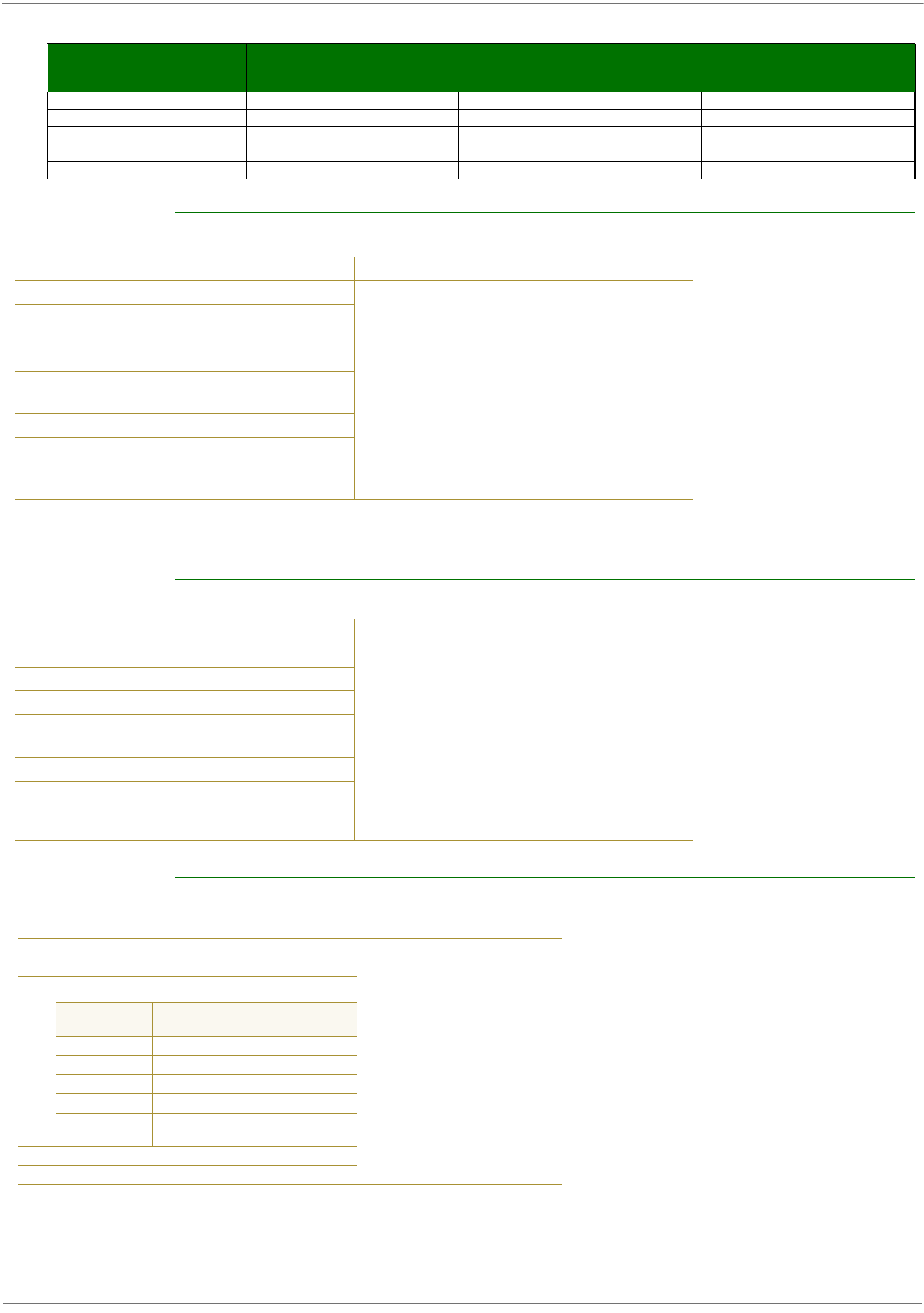
XBee‐PRO®900HP/XBee‐PRO®XSCRFModules
©2012DigiInternational,Inc. 109
Table1‐07. ParameterSentvs.ParameterStored
BT (Guard Time Before) Command
CC (Command Sequence Character) Command
CD (DO3 Configuration) Command
BD Parameter Sent (HEX) Interface Data Rate (bps) S3 BD Parameter Stored (HEX) S3B BD Parameter Stored
(HEX)
0 1200 0 0
4 19,200 4 4
6 57600 6 5
12C 300 12B 12B
E100 57600 E883 E10D
Command Summary Description
AT Command: ATBT <Command Mode Options> BT
Command is used to set the DI pin
silence time that must precede the
command sequence character (CC
Command) of the AT Command Mode
Sequence. Refer to the AT Commands
section to view the default AT Command
Mode Sequence.
Binary Command: 0x04 (4 decimal)
Parameter Range:2 – 0xFFFF
[x 100 milliseconds]
Default Parameter Value: 0x0A (10
decimal)
Number of bytes returned: 2
Related Commands: AT (Guard Time
After), CC (Command Sequence
Character)
Command Summary Description
AT Command: ATCC <Command Mode Options> CC
Command is used to set the ASCII
character to be used between Guard
Times of the AT Command Mode
Sequence (BT+ CC + AT). The AT
Command Mode Sequence activates AT
Command Mode (from Idle Mode).
Refer to the AT Commands section [p.
18] to view the default AT Command
Mode Sequence.
Binary Command: 0x13 (19 decimal)
Parameter Range: 0x20 – 0x7F
Default Parameter Value: 0x2B (ASCII “+”
sign)
Number of bytes returned: 1
Related Commands: AT (Guard Time
After), BT (Guard Time Before)
Description
AT Command: ATCD
Binary Command: 0x28 (40 decimal) <Command Mode
Options> CD
Command is used to
define the behavior of
the DO3/RX LED line.
Parameter Range: 0 – 3
Parameter
Value Configuration
0RX LED
1Default high
2Default low
3 (reserved)
4Assert only when packet
addressed to module is sent
Default Parameter Value: 0
Number of bytes returned: 1
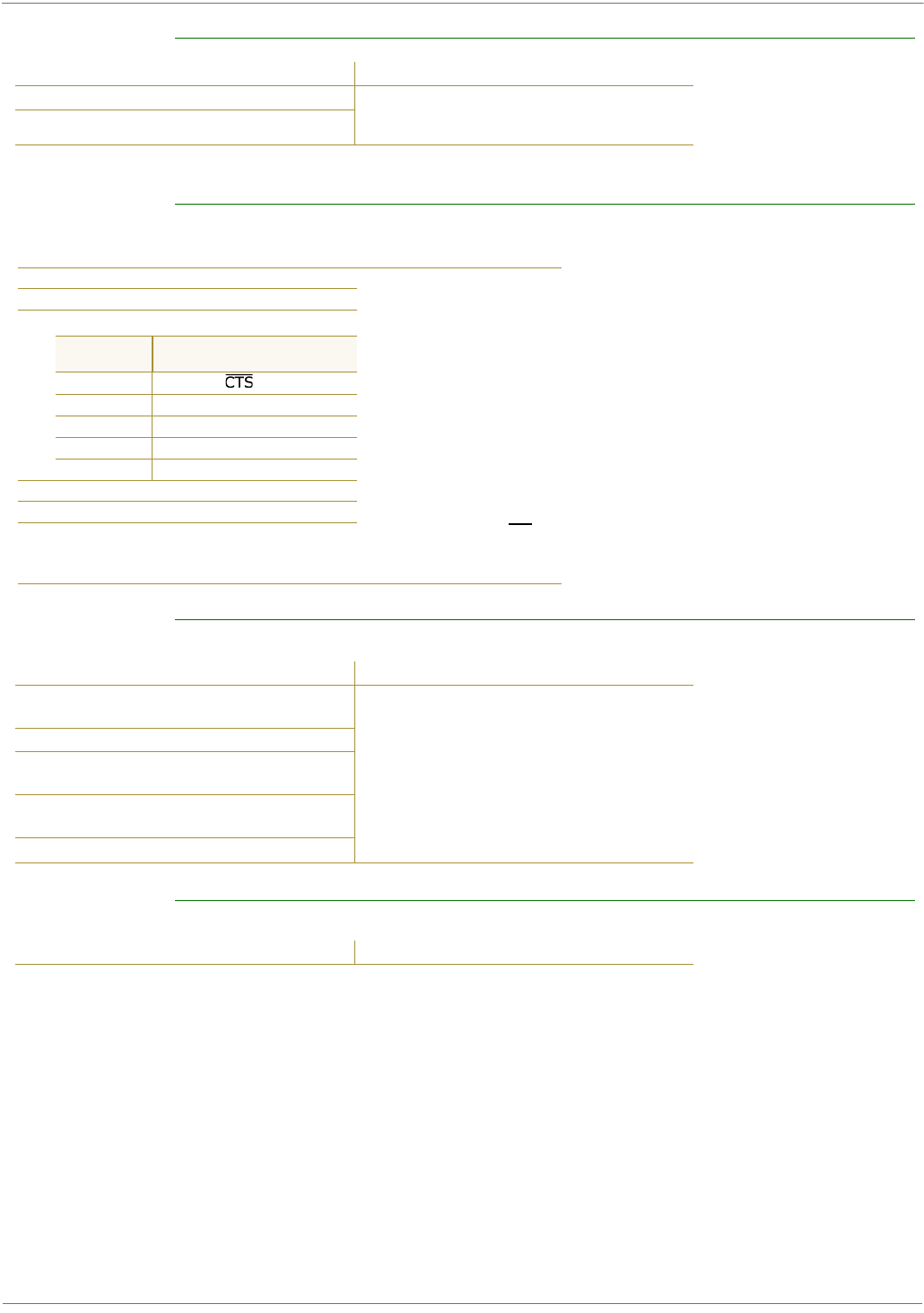
XBee‐PRO®900HP/XBee‐PRO®XSCRFModules
©2012DigiInternational,Inc. 110
CN (Exit AT Command Mode) Command
CS (DO2 Configuration) Command
CT (Command Mode Time out) Command
DT (Destination Address) Command
Command Summary Description
AT Command: ATCN <Command Mode Options> CN
Command is used to explicitly exit AT
Command Mode.
Binary Command: 0x09 (9 decimal)
Command Summary Description
AT Command: ATCS <Serial Interfacing> CS
Command is used to
select the behavior of
the DO2 pin signal.
This output can
provide RS-232 flow
control, control the TX
enable signal (for RS-
485 or RS-422
operations), or set the
default level for the I/O
line passing function.
By default, DO2
provides RS-232 CTS
(Clear-to-Send) flow
control.
Binary Command: 0x1F (31 decimal)
Parameter Range:0 – 4
Parameter
Value Configuration
0RS-232 flow control
1 RS-485 TX enable low
2high
3 RS-485 TX enable high
4low
Default Parameter Value: 0
Number of bytes returned: 1
Minimum Firmware Version Required:
4.27D
Command Summary Description
AT Command: ATCT <Command Mode Options> CT
Command sets the amount of time
before AT Command Mode terminates
automatically. After a CT time of
inactivity, the module exits AT
Command Mode and returns to Idle
Mode. AT Command Mode can also be
exited manually using CN (Exit AT
Command Mode) Command.
Binary Command: 0x06 (6 decimal)
Parameter Range:0x02 – 0xFFFF
[x 100 milliseconds]
Default Parameter Value: 0xC8 (200
decimal, 20 seconds)
Number of bytes returned: 2
Command Summary Description
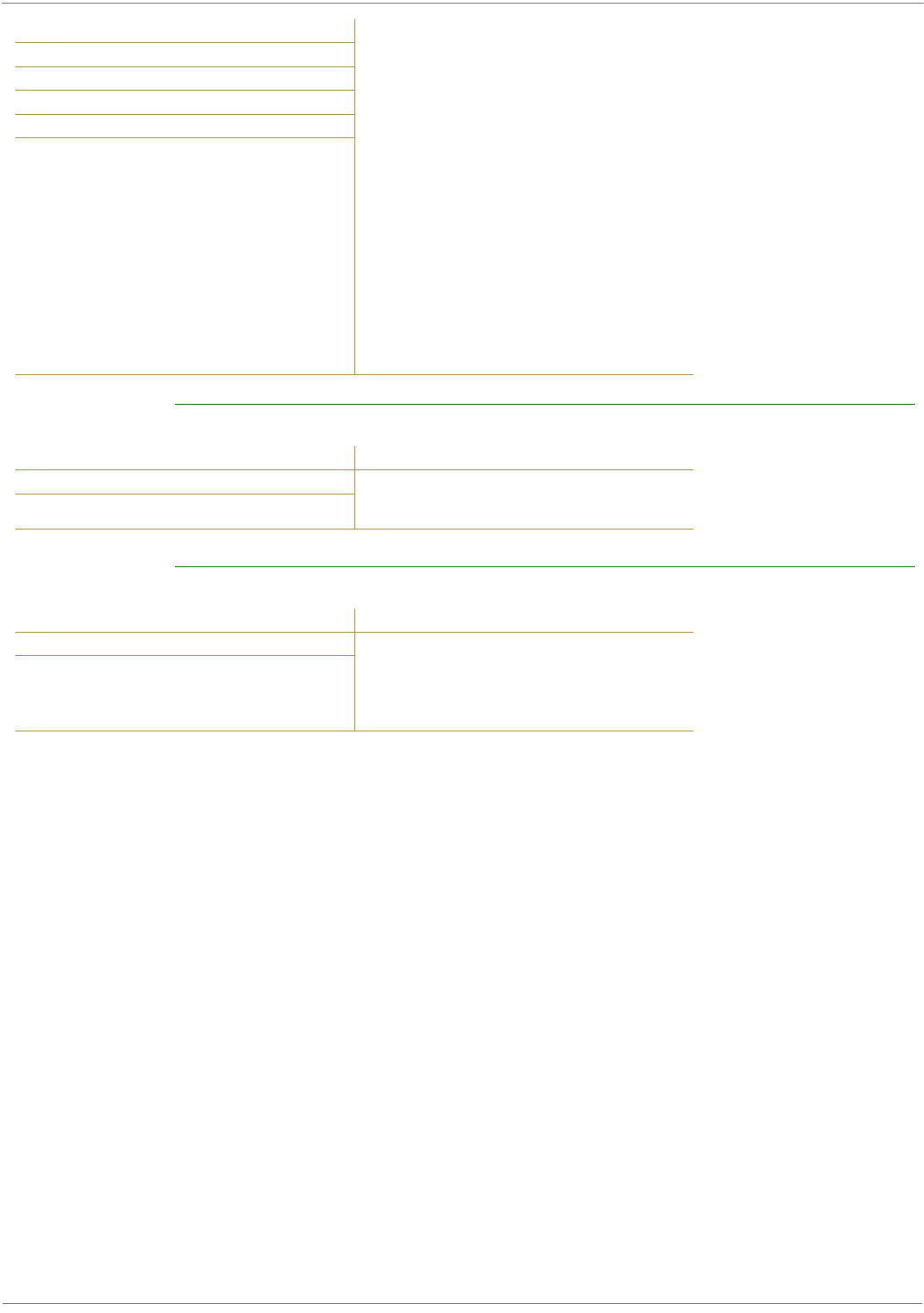
XBee‐PRO®900HP/XBee‐PRO®XSCRFModules
©2012DigiInternational,Inc. 111
E0 (Echo Off) Command
E1 (Echo On) Command
AT Command: ATDT <Networking> DT Command is used to
set the networking address of a Module.
Modules use three network layers –
Vendor Identification Number (ATID),
Channels (ATHP), and Destination
Addresses (ATDT). DT Command
assigns an address to a module that
enables it to communicate only with
other modules having the same
addresses. All modules that share the
same Destination Address can
communicate freely with each other.
Modules in the same network with a
different Destination Address (than that
of the transmitter) will listen to all
transmissions to stay synchronized, but
will not send any of the data out their
serial ports.
Binary Command: 0x00
Parameter Range:0 – 0xFFFF
Default Parameter Value: 0
Number of bytes returned: 2
Related Commands: HP (Hopping
Channel), ID (Module VID), MK (Address
Mask)
Command Summary Description
AT Command: ATE0 <Command Mode Options> E0
Command turns off character echo in AT
Command Mode. By default, echo is off.
Binary Command: 0x0A (10 decimal)
Command Summary Description
AT Command: ATE1 <Command Mode Options> E1
Command turns on the echo in AT
Command Mode. Each typed character
will be echoed back to the terminal
when ATE1 is active. E0 is the default.
Binary Command: 0x0B (11 decimal)
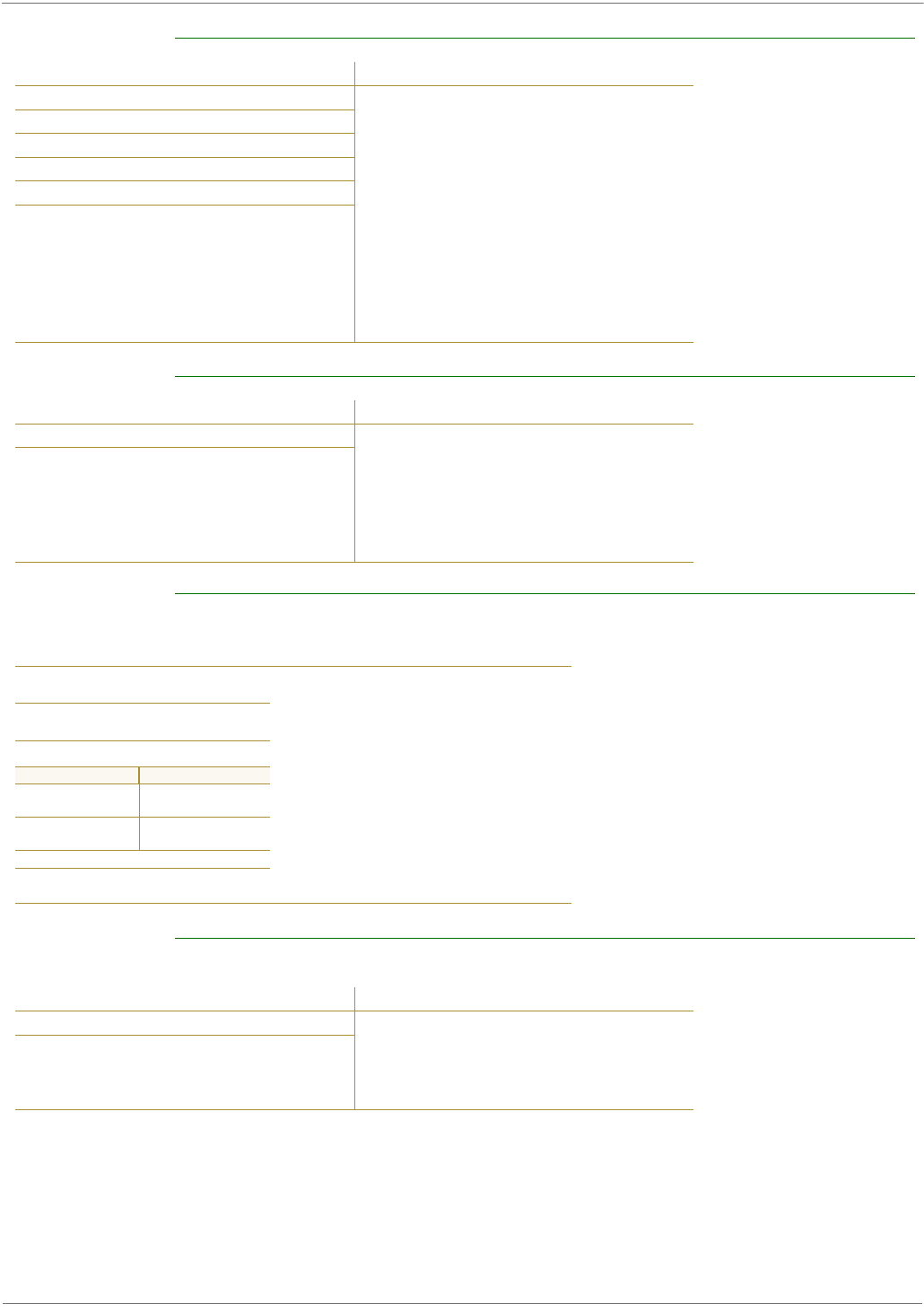
XBee‐PRO®900HP/XBee‐PRO®XSCRFModules
©2012DigiInternational,Inc. 112
ER (Receive Error Count) Command
FH (Force Wake-up Initializer) Command
FL (Software Flow Control) Command
FR (Force Reset) Command
Command Summary Description
AT Command: ATER <Diagnostics> Set/Read the receive-
error. The error-count records the
number of packets partially received
then aborted on a reception error. This
value returns to 0 after a reset and is not
non-volatile (Value does not persist in
the module’s memory after a power-up
sequence). Once the “Receive Error
Count” reaches its maximum value (up
to 0xFFFF), it remains at its maximum
count value until the maximum count
value is explicitly changed or the
module is reset.
Binary Command: 0x0F (15 decimal)
Parameter Range:0 – 0xFFFF
Default Parameter Value: 0
Number of bytes returned: 2
Related Commands: GD (Receive Good
Count)
Command Summary Description
AT Command: ATFH <Sleep (Low Power)> FH Command is
used to force a Wake-up Initializer to be
sent on the next transmit. WR (Write)
Command does not need to be issued
with FH Command.
Use only with cyclic sleep modes active
on remote modules.
Binary Command: 0x0D (13 decimal)
Command Summary Description
AT Command:
ATFL
<Serial Interfacing> FL Command
is used to configure software flow
control. Hardware flow control is
implemented with the Module as
the DO2 pin (), which regulates
when serial data can be transferred
to the module. FL Command can be
used to allow software flow control
to also be enabled. XON character
used is 0x11 (17 decimal). XOFF
character used is 0x13 (19
decimal).
Binary Command: 0x07 (7
decimal)
Parameter Range: 0 – 1
Parameter Value Configuration
0Disable software
flow control
1Enable software
flow control
Default Parameter Value: 0
Number of bytes returned: 1
Command Summary Description
AT Command: ATFR <Special> FR command is used in order
to reset the module through the UART.
The characters “OK”<CR> will be
returned and the module will reset
100ms
Binary Command: Not available

XBee‐PRO®900HP/XBee‐PRO®XSCRFModules
©2012DigiInternational,Inc. 113
FT (Flow Control Threshold) Command
GD (Receive Good Count) Command
HP (Hopping Channel) Command
Command Summary Description
AT Command: ATFT <Serial Interfacing> Flow Control
Threshold - Set or read flow control
threshold. De-assert CTS and/or send
XOFF when FT bytes are in the UART
receive buffer. Re-assert CTS when less
than FT - 16 bytes are in the UART receive
buffer.
Binary Command: 0x24 (36 decimal)
Parameter Range:0 – (DI buffer size minus
0x11 bytes)
Default Parameter Value: DI Buffer size
minus 0x11 (17 decimal)
Number of bytes returned: 2
Minimum Firmware Version Required:
4.27B
Command Summary Description
AT Command: ATGD
Binary Command: 0x10 (16 decimal) <Diagnostics> Set/Read the count of
good received RF packets. Parameter
value is reset to 0 after every reset and is
not non-volatile (Value does not
persist in the module’s memory after a
power-up sequence). Once the
“Receive Good Count” reaches its
maximum value (up to 0xFFFF), it
remains at its maximum count value until
the maximum count value is
manually changed or the module is reset.
Parameter Range:0 – 0xFFFF
Default Parameter Value: 0
Number of bytes returned: 2
Related Commands: ER (Receive Error
Count)
Command Summary Description
AT Command: ATHP <Networking> HP Command is used to
set the module’s hopping channel
number. A channel is one of three layers
of addressing available to the
module. In order for modules to
communicate with each other, the
modules must have the same channel
number since each network uses a
different hopping sequence. Different
channels can be used to prevent
modules in one network from listening
to transmissions of another.
Binary Command: 0x11 (17 decimal)
Parameter Range:0 – 6
Default Parameter Value: 0
Number of bytes returned: 1
Related Commands: DT (Destination
Address), ID (Module VID), MK (Address
Mask)

XBee‐PRO®900HP/XBee‐PRO®XSCRFModules
©2012DigiInternational,Inc. 114
HT (Time before Wake-up Initializer) Command
ID (Modem VID) Command
Command Summary Description
AT Command: ATHT <Sleep (Low Power)> If any modules within range are running
in a “Cyclic Sleep” setting, a wake-up initializer must be used
by the transmitting module for sleeping modules to remain
awake [refer to the LH (“Wake-up InitializerTimer”) Command].
When a receiving module in Cyclic Sleep wakes, it must detect
the wake-up initializer in order to remain awake and
receive data. The value of HT Parameter tells the transmitter,
“After a period of inactivity (no transmitting or receiving)
lasting HT amount of time, send a long wake-up initializer”. HT
Parameter should be set to match the inactivity time out
[specified by ST (Time before Sleep) Command]
used by the receiver(s). From the receiving module perspective,
after HT time elapses and the inactivity
time out [ST Command] is met, the receiver goes into cyclic
sleep. In cyclic sleep, the receiver wakes once per sleep interval
to check for a wakeup initializer. When a wake-up initializer is
detected, the module will stay awake to receive data. The
wake-up initializer must be longer than the
cyclic sleep interval to ensure that sleeping modules detect
incoming data. When HT time elapses, the transmitter then
knows that it needs to send a long Wake-up Initializer for all
receivers to be able to remain awake and
receive the next transmission. Matching HT to the time
specified by ST on the receiving module guarantees that all
receivers will detect the next transmission.
Binary Command: 0x03 (3 decimal)
Parameter Range:0 – 0xFFFF
[x 100 milliseconds]
Default Parameter Value: 0xFFFF (means
that long wake-up initializer will not be
sent)
Number of bytes returned: 2
Related Commands: LH (Wake-up
Initializer Timer), SM (Sleep Mode), ST
(Time before Sleep)
Command Summary Description
AT Command: ATID <Networking> Set/Read the “Vendor
Identification Number”. Only modems
with matching IDs can communicate
with each other. Modules with non-
matching
VIDs will not receive unintended data
transmission.
Binary Command: 0x27 (39 decimal)
Parameter Range (user-set table) 0x10 -
0x7FFFF
(Factory-set and read-only) 0x8000 –
0xFFFF
Number of bytes returned: 2

XBee‐PRO®900HP/XBee‐PRO®XSCRFModules
©2012DigiInternational,Inc. 115
LH (Wake-up Initializer Timer) Command
MD (RF Mode) Command
Command Summary Description
AT Command: ATLH <Sleep (Low Power)> LH Command
adjusts the duration of time for which
the RF initializer is sent.
When receiving modules are put into
Cyclic Sleep Mode, they power-down
after a period of inactivity [specified by
ST (Time before Sleep) Command] and
will periodically awaken and listen
for transmitted data. In order for the
receiving modules to remain awake, they
must detect~35ms of the wake-up
initializer. LH Command must be used
whenever a receiver is operating in
Cyclic Sleep Mode. This lengthens
the Wake-up Initializer to a specific
amount of time (in tenths of a second).
The Wake-up Initializer Time must be
longer than the cyclic sleep time that is
determined by SM (Sleep Mode)
Command. If the wake-up initializer
time were less than the Cyclic Sleep
interval, the connection would be at risk
of missing the wake-up initializer
transmission. Refer to Figures 3.1 & 3.2
of the SM Command description to view
diagrams of correct and incorrect
configurations. The images help
visualize the importance that the value
of LH be greater than the value of SM.
Binary Command: 0x0C (12 decimal)
Parameter Range:0 – 0xFF
[x 100 milliseconds]
Default Parameter Value: 1
Number of bytes returned: 1
Related Commands: HT (Time before
Wake-up Initializer), SM (Sleep Mode), ST
(Time before Sleep)
Command Summary Description
AT Command: ATMD <Networking & Security> The MD
command is used to select/read the RF
Mode (Peer-to-peer or
Repeater Modes) of the module.
Repeater Mode enables longer range via
an intermediary module. When MD=3,
the module will act as a “store and
forward” repeater. Any packets not
addressed to this node will be repeated.
A Repeater End Node (MD=4) handles
repeated messages, but will not forward
the data over-the-air. Refer to the
Repeater Mode section [p. 40] for more
information.
Binary Command: 0x32 (50 decimal)
Parameter Range: 0, 3, 4
Default Parameter Value: 0
Number of bytes returned: 1
Parameter Configuration
0Peer-to-Peer
(transparent operation)
3Repeater & End Node
4End Node
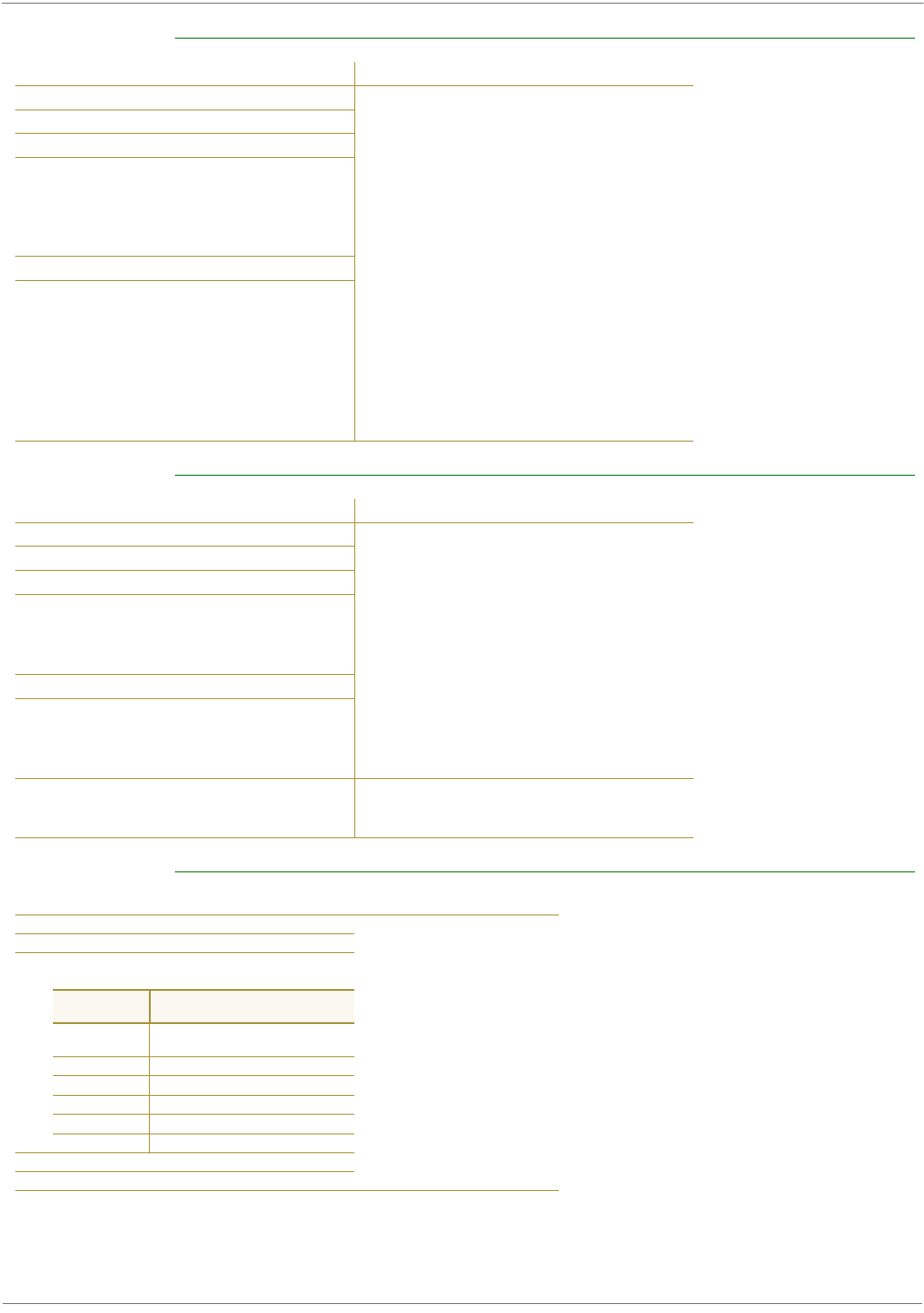
XBee‐PRO®900HP/XBee‐PRO®XSCRFModules
©2012DigiInternational,Inc. 116
MK (Address Mask) Command
MY (Source Address) Command
NB (Parity) Command
Command Summary Description
AT Command: ATMK <Networking> MK Command is used to
set/read the Address Mask.
All data packets contain the Destination
Address of the transmitting module.
When an RF data packet is received, the
transmitter’s Destination Address is
logically “ANDed” (bitwise) with the
Address Mask of the receiver. The
resulting value must match the
Destination Address or the
Address Mask of the receiver for the
packet to be received and sent out the
module’s DO serial port. If the “ANDed”
value does not match either the
Destination Address or the Address
Mask of the receiver, the packet is
discarded. (All “0” values are treated as
“irrelevant” values and are ignored.)
Binary Command: 0x12 (18 decimal)
Parameter Range:0 – 0xFFFF
Default Parameter Value: 0xFFFF
(Destination address (DT parameter) of
the transmitting module must exactly
match the destination address of the
receiving module.)
Number of bytes returned: 2
Related Commands: DT (Destination
Address), HP (Hopping Channel), ID
(Module VID)
Command Summary Description
AT Command: ATMY <Networking & Security> Set/Read the
source address of the module.
Refer to the Addressing section [p. 38]
of the RF Communication Modes chapter
for more information.
Binary Command: 0x2A (42 decimal)
Parameter Range: 0 – 0xFFFF
Default Parameter Value: 0xFFFF
(Disabled – the DT (Destination Address)
parameter serves as both source and
destination address.)
Number of bytes returned: 2
Related Commands: DT (Destination
Address), HP (Hopping Channel), ID
(Modem VID), MK (Address Mask), AM
(Auto-set MY)
This command is only supported on S3B
modules.
Command Summary Description
AT Command: ATNB <Serial Interfacing>
Select/Read parity
settings for UART
communications.
Binary Command: 0x23 (35 decimal)
Parameter Range:0 – 4 (S3 Hardware)
0-5 (S3B Hardware)
Parameter
Value Configuration
08-bit (no parity or
7-bit (any parity)
18-bit even
28-bit odd
38-bit mark
48-bit space
5 9-bit data (S3B Hardware)
Default Parameter Value: 0
Number of bytes returned: 1
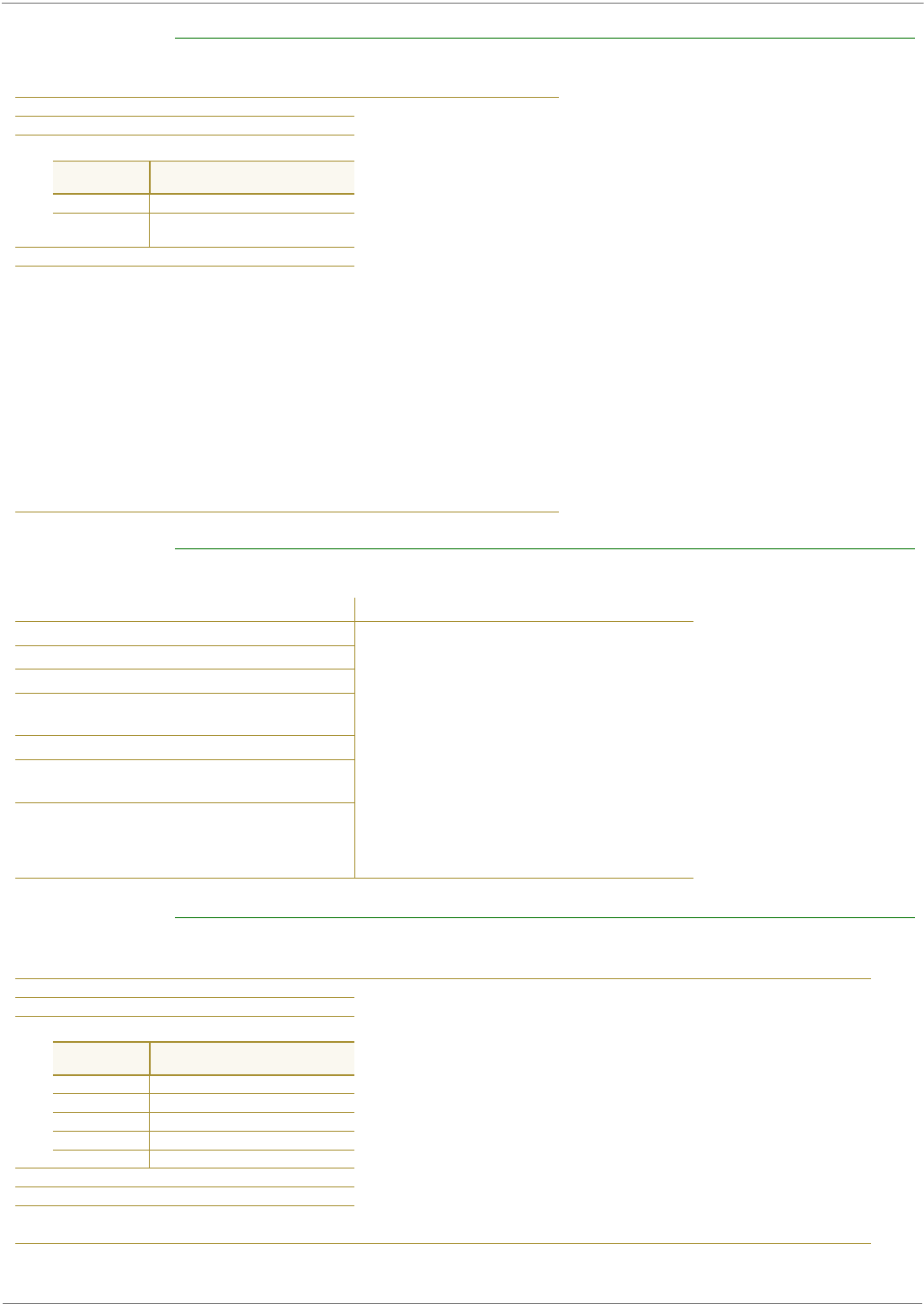
XBee‐PRO®900HP/XBee‐PRO®XSCRFModules
©2012DigiInternational,Inc. 117
PC (Power-up to AT Mode) Command
PK (RF Packet Size) Command
PL (Module Power Level) Command
Command Summary Description
AT Command: ATPC <Command Mode
Options> PC
Command allows the
module to power-up
directly into AT
Command Mode from
reset or power-on. If
PC Command is
enabled with SM
Parameter set to 1, DI3
(pin 9) can be used to
enter the
module into AT
Command Mode. When
the DI3 pin is de-
asserted (low),
the module will wake-
up in AT Command
Mode. This behavior
allows module
DTR emulation.
Binary Command: 0x1E (30 decimal)
Parameter Range:0 – 1
Parameter
Value Configuration
0 Power-up to Idle Mode
1Power-up to
AT Command Mode
Default Parameter Value: 0
Number of bytes returned: 1
Command Summary Description
AT Command: ATPK <Serial Interfacing> Set/Read the
maximum size of the RF packets sent
out a transmitting module. The
maximum packet size can be used along
with the RB and RO parameters to
implicitly set the channel dwell time.
Changes to this parameter may have a
secondary effect on the RB (Packet
Control Characters) parameter. RB must
always be less than or equal to PK. If PK
is changed to a value less than the
current value of RB, RB is automatically
lowered to be equal to PK.
Binary Command: 0x29 (41 decimal)
Parameter Range: 0 – 0x100 [Bytes]
Default Parameter Value: 0x40 (64
decimal)
Number of bytes returned: 2
Related Commands: RB (Packetization
Threshold), RO (Packetization Time out)
This command is only supported on S3B
modules.
Command Summary Description
AT Command: ATPL <Special Commands> Set/Read the power level at which the RF
module transmits conducted power. This command is only
supported on S3B hardware. Power level 4 is calibrated and the
other power levels are approximate.
Binary Command: 0x3C (60 decimal)
Parameter Range:0 – 4
Parameter
Value Configuration
0 +7.0 dBm
1 +15.0dBm
2 +18.0dBm
3 +21.0dBm
4 +24.0 dBm
Default Parameter Value: 4
Number of bytes returned: 1
This command is only supported on S3B
hardware

XBee‐PRO®900HP/XBee‐PRO®XSCRFModules
©2012DigiInternational,Inc. 118
PW (Pin Wake-up) Command
RB (Packetization Threshold) Command
RE (Restore Defaults) Command
Command Summary Description
AT Command: ATPW <Sleep (Low Power)> Under normal operation, a module in
Cyclic Sleep Mode cycles from an active state to a low-power
state at regular intervals until data is ready to be received. If
the PW Parameter is set to 1, SLEEP (pin 2) can be used to wake
the module from Cyclic Sleep. If the SLEEP pin
is de-asserted (low), the module will be fully operational and
will not go into Cyclic Sleep. Once SLEEP is asserted, the
module will remain active for the period of time specified by ST
(Time before Sleep) Command, and will return to Cyclic Sleep
Mode (if no data is ready to be transmitted). PW
Command is only valid if Cyclic Sleep has been enabled.
Binary Command: 0x1D (29 decimal)
Parameter Range:0 – 1
Parameter
Value Configuration
0 Disabled
1Enabled
Default Parameter Value: 0
Number of bytes returned: 1
Related Commands: SM (Sleep Mode), ST
(Time before Sleep)
Command Summary Description
AT Command: ATRB <Serial Interfacing> RF transmission will
commence when data is in the DI Buffer
and either of the following criteria are
met:
• RO times out on the UART receive lines
(ignored if RO = 0)
• RB characters have been received by
the UART (ignored if RB = 0)
If PK is lowered below the value of RB; RB
is automatically lowered to match PK.
Note: RB and RO criteria only apply to
the first packet of a multi-packet
transmission. If data remains in the DI
Buffer after the first packet,
transmissions will continue in streaming
manner until there is no data left in the
DI Buffer (UART receive buffer).
Binary Command: 0x20 (32 decimal)
Parameter Range: 0 – 0x100 [Bytes]
(Maximum value equals the current value
of PK Parameter (up to 0x100 HEX (800
decimal))
Default Parameter Value: 1
Number of bytes returned: 2
Related Commands: PK (RF Packet Size),
RO (Packetization Time out)
This command is only supported on S3B
modules.
Command Summary Description
AT Command: ATRE <Diagnostics> RE Command restores all
configurable parameters to factory
default settings. However, RE Command
will not write the default values to
non-volatile (persistent) memory. Unless
the WR (Write) Command is
issued after the RE command, the
default settings will not be saved in the
event of module reset or power-down.
Binary Command: 0x0E (14 decimal)

XBee‐PRO®900HP/XBee‐PRO®XSCRFModules
©2012DigiInternational,Inc. 119
RN (Delay Slots) Command
RO (Packetization Time out) Command
RP (RSSI PWM Timer) Command
Command Summary Description
AT Command: ATRN <Networking> RN Command is only
applicable if retries have been
enabled [RR (Retries) Command], or if
forced delays will be inserted into
a transmission [refer to TT (Streaming
Limit) Command]. RN Command is
used to adjust the time delay that the
transmitter inserts before attempting
to resend a packet. If the transmitter
fails to receive an acknowledgement
after sending a packet, it will insert a
random number of delay slots
(ranging from 0 to (RN minus 1)) before
attempting to resend the packet.
Each delay slot lasts for a period of
38ms.
If two modules attempted to transmit at
the same time, the random time
delay after packet failure would allow
one of the two modules to transmit
the packet successfully, while the other
would wait until the channel
opens up to begin transmission.
Binary Command: 0x19 (25 decimal)
Parameter Range:0 – 0xFF [slots]
Default Parameter Value: 0 (no delay slots
inserted)
Number of bytes returned: 1
Command Summary Description
AT Command: ATRO <Serial Interfacing> RO Command is used
to specify/read the time of
silence (no bytes received) after which
transmission begins. After a serial
byte is received and if no other byte is
received before the RO time out,
the transmission will start.
Binary Command: 0x21 (33 decimal)
Parameter Range:0 – 0xFFFF [x 200 µs]
Default Parameter Value: 0
Number of bytes returned: 2
Command Summary Description
AT Command: ATRP <Diagnostics> RP Command is used to
enable a PWM (“Pulse Width Modulation”)
output on the Config pin which is
calibrated to show the level the
received RF signal is above the sensitivity
level of the module. The PWM
pulses vary from zero to 95 percent. Zero
percent means the received RF
signal is at or below the published
sensitivity level of the module. The
following
table shows levels above sensitivity and
PWM values.
The total period of the PWM output is
8.32 ms. There are 40 steps in the
PWM output and therefore the minimum
step size is 0.208 ms.
Binary Command: 0x22 (34 decimal)
Parameter Range:0 - 0x7F
[x 100 milliseconds]
Default Parameter Value: 0 (disabled)
Number of bytes returned: 1
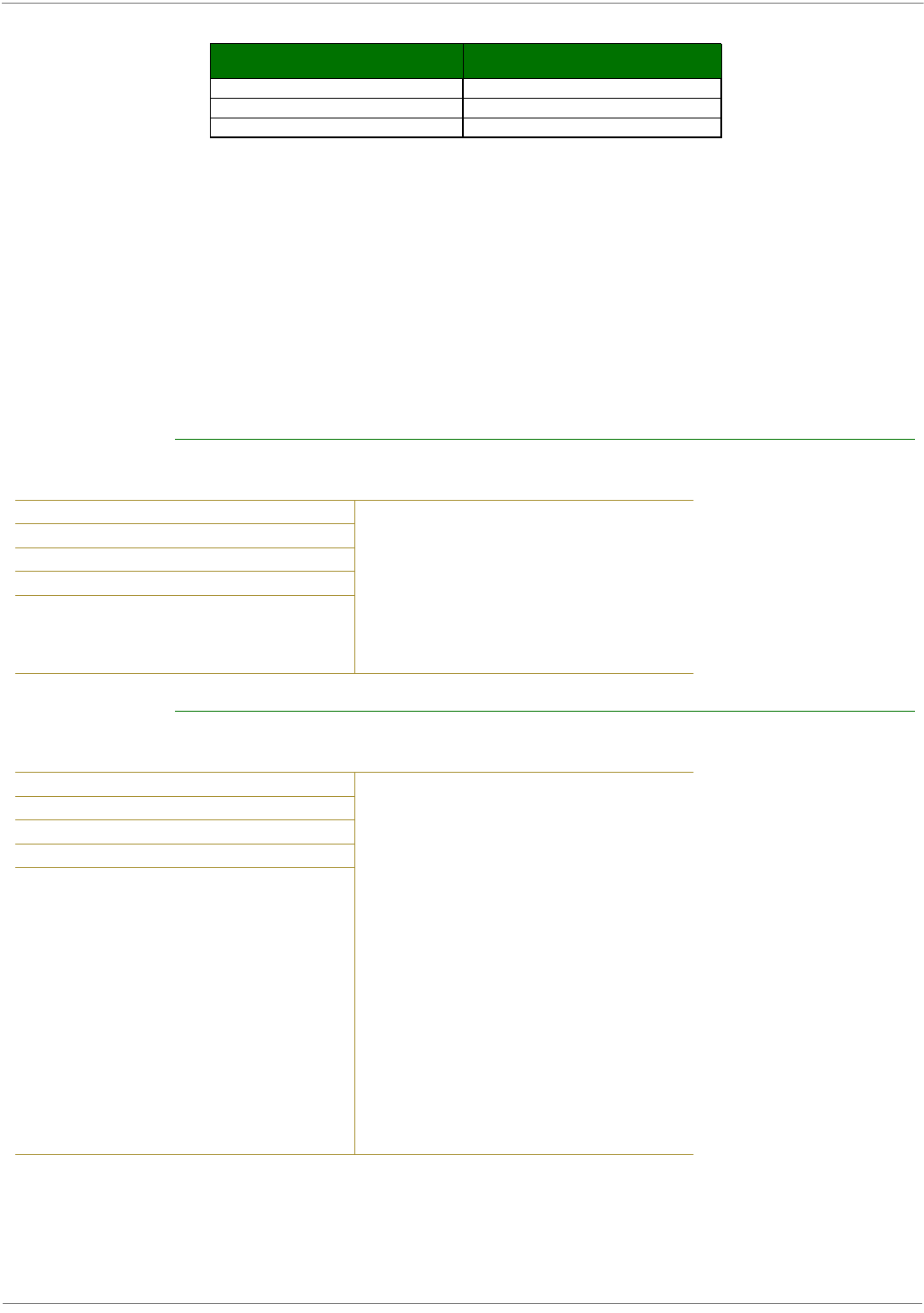
XBee‐PRO®900HP/XBee‐PRO®XSCRFModules
©2012DigiInternational,Inc. 120
Table1‐08. PWMChart
A non-zero value defines the time that the PWM output will be active with the RSSI value of the
last received RF packet. After the set time when no RF packets are received, the PWM output will
be set low (0 percent PWM) until another RF packet is received. The PWM output will also be set
low at power-up. A parameter value of 0xFF permanently enables the PWM output and it will
always reflect the value of the last received RF packet.
PWM output shares the Config input pin. When the module is powered, the Config pin will be an
input. During the power-up sequence, the Config pin will be read to determine whether the module
is going into AT Command Mode. After this, if RP parameter is a non-zero value, the Config pin will
be configured as an output and set low until the first RF packet is received. With a non-zero RP
parameter, the Config pin will be an input for RP ms after power up.
RZ (DI Buffer Size) Command
RR (Retries) Command
dBm above Sensitivity PWM percentage
(high period / total period)
10 47.5 %
20 62.5 %
30 77.5 %
Command Summary Description
AT Command: ATRZ <Diagnostics> The RZ command is used
to read the size of the DI buffer (UART RX
(Receive)).
Note: The DO buffer size can be
determined by multiplying the DI buffer
size by 1.5.
Binary Command: 0x2C (44 decimal)
Parameter Range:Read-only
Number of bytes returned: 1
This command is only supported on S3B
modules.
Command Summary Description
AT Command: ATRR Networking> RR Command specifies the
number of retries that can be sent
for a given RF packet. Once RR Command
is enabled (set to a non-zero
value), RF packet acknowledgements and
retries are enabled. After transmitting
a packet, the transmitter will wait to
receive an acknowledgement
from a receiver. If the acknowledgement
is not received in the period of
time specified by the RN (Delay Slots)
Command, the transmitter will transmit
the original packet again. The packet will
be transmitted repeatedly
until an acknowledgement is received or
until the packet has been sent RR
times.
Note: For retries to work correctly, all
modules in the system must have
retries enabled.
Binary Command: 0x18 (24 decimal)
Parameter Range:0 – 0xFF
Default Parameter Value: 0 (disabled)
Number of bytes returned: 1
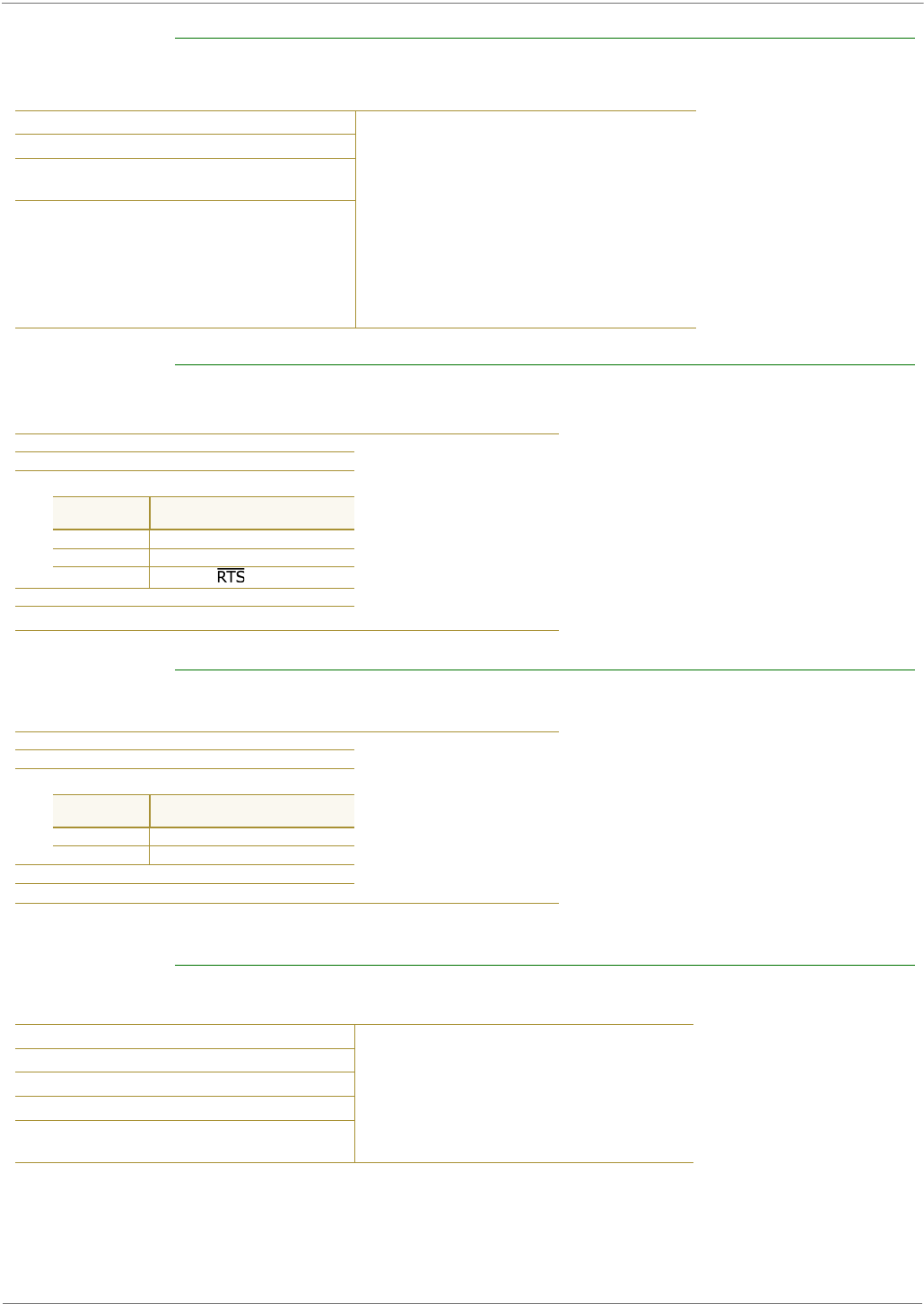
XBee‐PRO®900HP/XBee‐PRO®XSCRFModules
©2012DigiInternational,Inc. 121
RS (RSSI) Command
RT (DI2 Configuration) Command
SB (Stop Bits) Command
SH (Serial Number High) Command
Command Summary Description
AT Command: ATRS <Diagnostics> RS Command returns the
signal level of the last packet
received. This reading is useful for
determining range characteristics of the
modules under various conditions of
noise and distance.
Once the command is issued, the
module will return a value between 0x6
and 0x36 where 0x36 represents a very
strong signal level and 0x4 indicates
a low signal level.
Binary Command: 0x1C (28 decimal)
Parameter Range: 0x06 – 0x36 [read-
only]
Number of bytes returned: 1
Command Summary Description
AT Command: ATRT <Serial Interfacing> RT
command is used to
dictate the behavior of
the
DI2/RTS/CMD line. RT
Command must be
issued to enable RTS
flow control
or binary
programming.
Binary Command: 0x16 (22 decimal)
Parameter Range:0 – 2
Parameter
Value Configuration
0 disabled
1 Enable Binary Programming
2Enable Flow Control
Default Parameter Value: 0
Number of bytes returned: 1
Command Summary Description
AT Command: ATSB SB Command is used to
set/read the number of
stop bits in the data
packets.
Binary Command: 0x36 (54 decimal)
Parameter Range:0 – 1
Parameter
Value Configuration
01 stop bits
12 stop bits
Default Parameter Value: 0
Number of bytes returned: 1
Command Summary Description
AT Command: ATSH <Diagnostics> Read the serial number
high word of the module.
Binary Command: 0x25 (37 decimal)
Parameter Range:0 – 0xFFFF [read-only]
Number of bytes returned: 2
Related Commands: SL (Serial Number
Low)

XBee‐PRO®900HP/XBee‐PRO®XSCRFModules
©2012DigiInternational,Inc. 122
SL (Serial Number Low) Command
SM (Sleep Mode) Command
ST (Time before Sleep) Command
Command Summary Description
AT Command: ATSL <Diagnostics> Read the serial number
low word of the module.
Binary Command: 0x26 (38 decimal)
Parameter Range:0 – 0xFFFF [read-only]
Number of bytes returned: 2
Related Commands: SH (Serial Number
High)
Command Summary Description
AT Command: ATSM <Sleep Mode (Low Power)> SM Command is used to adjust
Sleep Mode settings. By default, Sleep Mode is disabled and the
module remains continually active. SM Command allows the
module to run in a lower-powerstate and be configured in one
of eight settings. Cyclic Sleep settings wake the module after
the amount of time designated
by SM Command. If the module detects a wake-up initializer
during the time it is awake, it will synchronize with the
transmitter and start receiving data after the wake-up
initializer runs its duration. Otherwise, it
returns to Sleep Mode and continue to cycle in and out of
inactivity until the Wake-up Initializer is detected. If a Cyclic
Sleep setting is chosen, the ST, LH and HT parameters must
also be set as described in the “Sleep
Mode” section of this manual.
Binary Command: 0x01
Parameter Range:0,1 3-8
Parameter
Value Configuration
0 Disabled
1Pin Sleep
3
Cyclic 0.5 second sleep
(Module wakes every 0.5
seconds)
4 Cyclic 1.0 second sleep
5 Cyclic 2.0 second sleep
6 Cyclic 4.0 second sleep
7 Cyclic 8.0 second sleep
8 Cyclic 16.0 second sleep
Default Parameter Value: 0
Number of bytes returned: 1
Related Commands:
For Pin Sleep – PC (Power-up Mode), PW
(Pin Wake-up)
For Serial Port Sleep – ST (Time before
Sleep)
For Cyclic Sleep – ST (Time before Sleep),
LH (Wake-up Initializer Timer), HT (Time
Before Wake-up Initializer), PW (Pin Wake-
up)
Command Summary Description
AT Command: ATST <Sleep Mode (Low Power)> ST
Command sets the period of time (in
tenths of seconds) in which the module
remains inactive before entering
into Sleep Mode. For example, if the ST
Parameter is set to 0x64 (100
decimal), the module will enter into
Sleep mode after 10 seconds of
inactivity
(no transmitting or receiving). This
command can only be used if
Cyclic Sleep or Serial Port Sleep Mode
settings have been selected using
SM (Sleep Mode) Command.
Binary Command: 0x02
Parameter Range:0x10 – 0xFFFF
[x 100 milliseconds]
Default Parameter Value: 0x64 (100
decimal)
Number of bytes returned: 2
Related Commands: SM (Sleep Mode), LH
(Wake-up Initializer Timer), HT (Time
before Wake-up Initializer)

XBee‐PRO®900HP/XBee‐PRO®XSCRFModules
©2012DigiInternational,Inc. 123
SY (Time before Initialization) Command
TR (Transmit Error Count) Command
Command Summary Description
AT Command: ATSY <Networking> SY Command keeps a communication channel
open as long as module transmits or receives before the active
connection expires. It can be used to reduce latency in a query/
response sequence and should be set 100 ms longer than the
delay between transmissions. This command allows multiple
Modules to share a hopping channel
for a given amount of time after receiving data. By default, all
packets include an RF initializer that contains channel
information used to synchronize any listening receivers to the
transmitter’s hopping pattern. Once a new module comes
within range, it is able to instantly synchronize to the
transmitter and start receiving data. If no new modules are
introduced into the system, the synchronization information
becomes redundant once modules
have become synchronized.
SY Command allows the modules to remove this information
from the RF Initializer after the initial synchronization. For
example, changing the SY Parameter to 0x14 (20 decimal)
allows all modules to remain in sync for 2
seconds after the last data packet was received.
Synchronization information is not re-sent unless transmission
stops for more than 2 seconds. This command allows
significant savings in packet transmission time.
Warning: Not recommended for use in an interference-prone
environment. Interference can break up the session and the
communications channel will not be available again until SY
time expires. With SY set to zero, the channel session is opened
and closed with each transmission - resulting in a more robust
link with more latency.
Binary Command: 0x17 (23 decimal)
Parameter Range:0 – 0xFF
[x 100 milliseconds]
Default Parameter Value: 0 (Disabled -
channel initialization information is sent
with each RF packet.)
Number of bytes returned: 1
Command Summary Description
AT Command: ATTR <Diagnostics> TR Command records the
number of retransmit failures.
This number is incremented each time a
packet is not acknowledged within
the number of retransmits specified by
the RR (Retries) Command. It
therefore counts the number of packets
that were not successfully received
and have been dropped.
The TR Parameter is not non-volatile and
will therefore be reset to zero
each time the module is reset.
Binary Command: 0x1B (27 decimal)
Parameter Range:0 – 0xFFFF
Default Parameter Value: 0
Number of bytes returned: 2
Related Commands: RR (Retries)
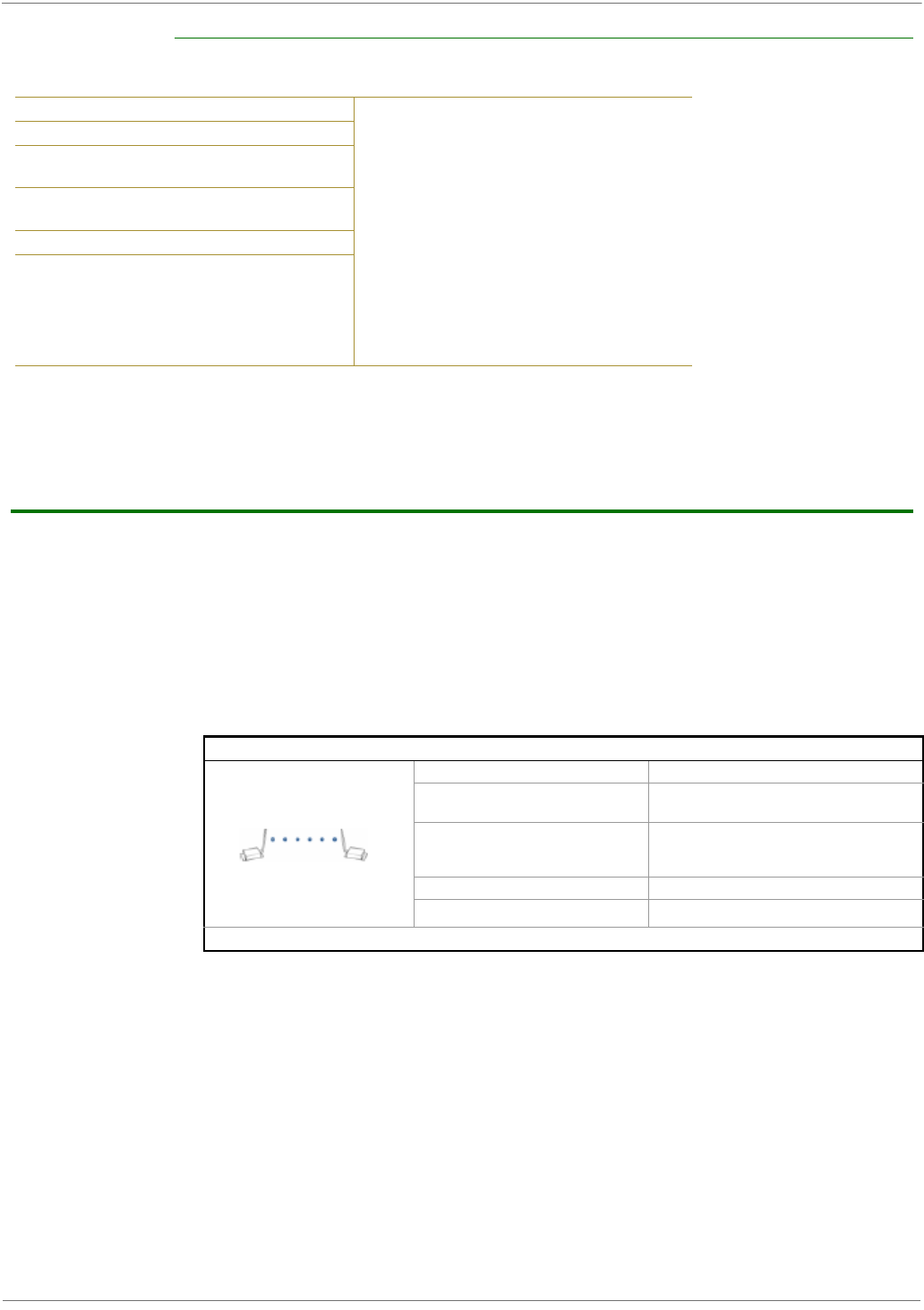
XBee‐PRO®900HP/XBee‐PRO®XSCRFModules
©2012DigiInternational,Inc. 124
TT (Streaming Limit) Command
4.RFCommunicationModes
Network configurations covered in this chapter are described in terms of the following:
• Network Topology (Point-to-Point, Point-to-Multipoint or Peer-to-Peer)
• RF Communication Type (Basic or Acknowledged)
• RF Mode (Streaming, Repeater, Acknowledged or Multi-Streaming)
The following table provides a summary of the network configurations supported.
Table1‐09. SummaryofnetworkconfigurationssupportedbytheXStreamRFModule
Command Summary Description
AT Command: ATTT <Networking> TT Command defines a
limit on the number of bytes that can
be sent out before a random delay is
issued. TT Command is used to simulate
full-duplex behavior.
If a module is sending a continuous
stream of RF data, a delay is inserted
which stops its transmission and allows
other modules time to transmit
(once it sends number of bytes specified
by TT Command). Inserted random
delay lasts between 1 & ‘RN + 1’ delay
slots, where each delay slot
lasts 38 ms.
Binary Command: 0x1A (26 decimal)
Parameter Range:0 – 0xFFFF (0 =
disabled)
Default Parameter Value: 0xFFFF (65535
decimal)
Number of bytes returned: 2
Related Commands: RN (Delay Slots)
Point-to Point
Definition An RF data link between two modules
Sample Network Profile *
(Broadcast Communications) Use default values for all modules.
Sample Network Profile *
(Acknowledged Communications)
All Modules: ATAM [auto-set MY (Source Address)
parameter] **
ATDTFFFF [set Destination Address to 0xFFFF]
Basic Communication RF Modes Streaming Mode [p. 39], Repeater Mode [p. 40]
Acknowledged Communication RF Mode Acknowledge Mode [p. 43]
Point-to -Multipoint
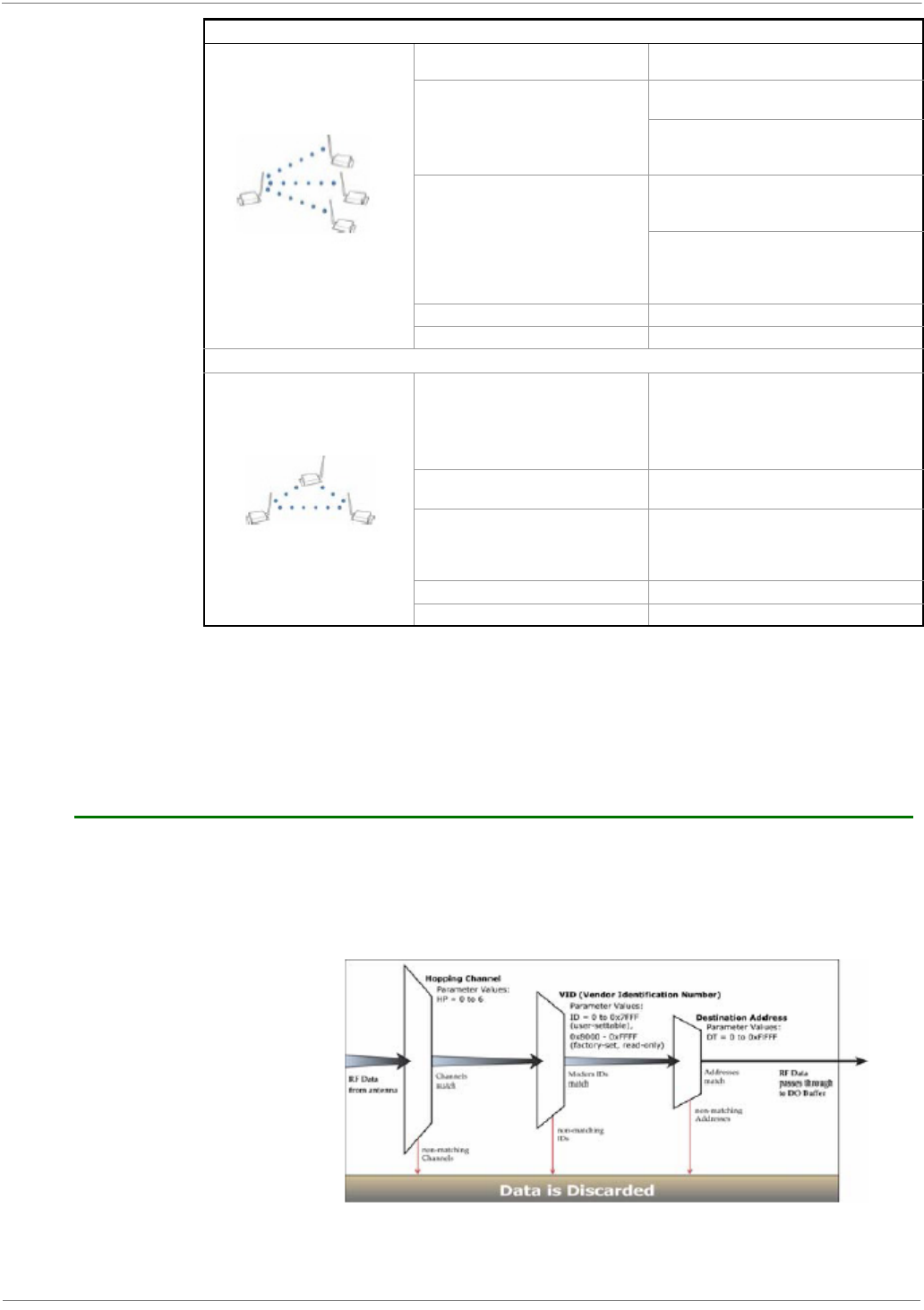
XBee‐PRO®900HP/XBee‐PRO®XSCRFModules
©2012DigiInternational,Inc. 125
*Assumedefaultvaluesforparametersnotlisted.Profilesdonotreflectaddressingimplementations.
**AM (Auto-set MY) Command must be issued through a terminal program such as the one
incorporated in the X-CTU ‘Terminal’ tab.
Addressing
Each RF packet contains addressing information that is used to filter incoming RF data. Receiving
modules inspect the Hopping Channel (HP parameter), Vendor Identification Number (ID
parameter) and Destination Address (DT parameter) contained in each RF packet. Data that does
not pass through all three network security layers is discarded.
Figure1‐014.FiltrationlayerscontainedintheRFpacketheader
Definition RF Data links between one base and multiple
remotes.
Sample Network Profile *
(Basic Communications)
Base: ATMY 0 [set Source Address to 0x00]
ATDT FFFF [set Destination Address to 0xFFFF]
Remotes: ATAM [auto-set MY (Source Address)
parameter] **
ATDT 0 [set Destination Address to 0x00]
Sample Network Profile *
(Acknowledged Communications)
Base: ATMY 0 [set Source Address to 0x00]
ATDT FFFF [set Destination Address to 0xFFFF]
ATRR 3 [set number of Retries to 3]
Remotes: ATAM [auto-set MY (Source Address)
parameter] **
ATDT 0 [set Destination Address to 0x00]
ATRR 3 [set number of Retries to 3]
Basic Communication RF Modes Streaming Mode [p39], Repeater Mode [p.40]
Acknowledged Communication RF Modes Acknowledged Mode [p43]
Peer-to-Peer
Definition
Modules remain synchronized without use of a
master/server. Each module shares the roles of
master and slave. MaxStream’s peer-to-peer
architecture features fast synch times (35ms to
synchronize modules) and fast cold start times
(50ms before transmission).
Sample Network Profile *
(Basic Communications) Use default values for all modules.
Sample Network Profile *
(Acknowledged Communications)
All Modules: ATAM [auto-set MY (Source Address)
parameter] **
ATDT FFFF [set Destination Address to 0xFFFF]
ATRR 3 [set number of Retries to 3]
Basic Communication RF Mode Streaming Mode [p.39]
Acknowledged Communication RF Mode Acknowledged Mode [p.43]
Point-to Point
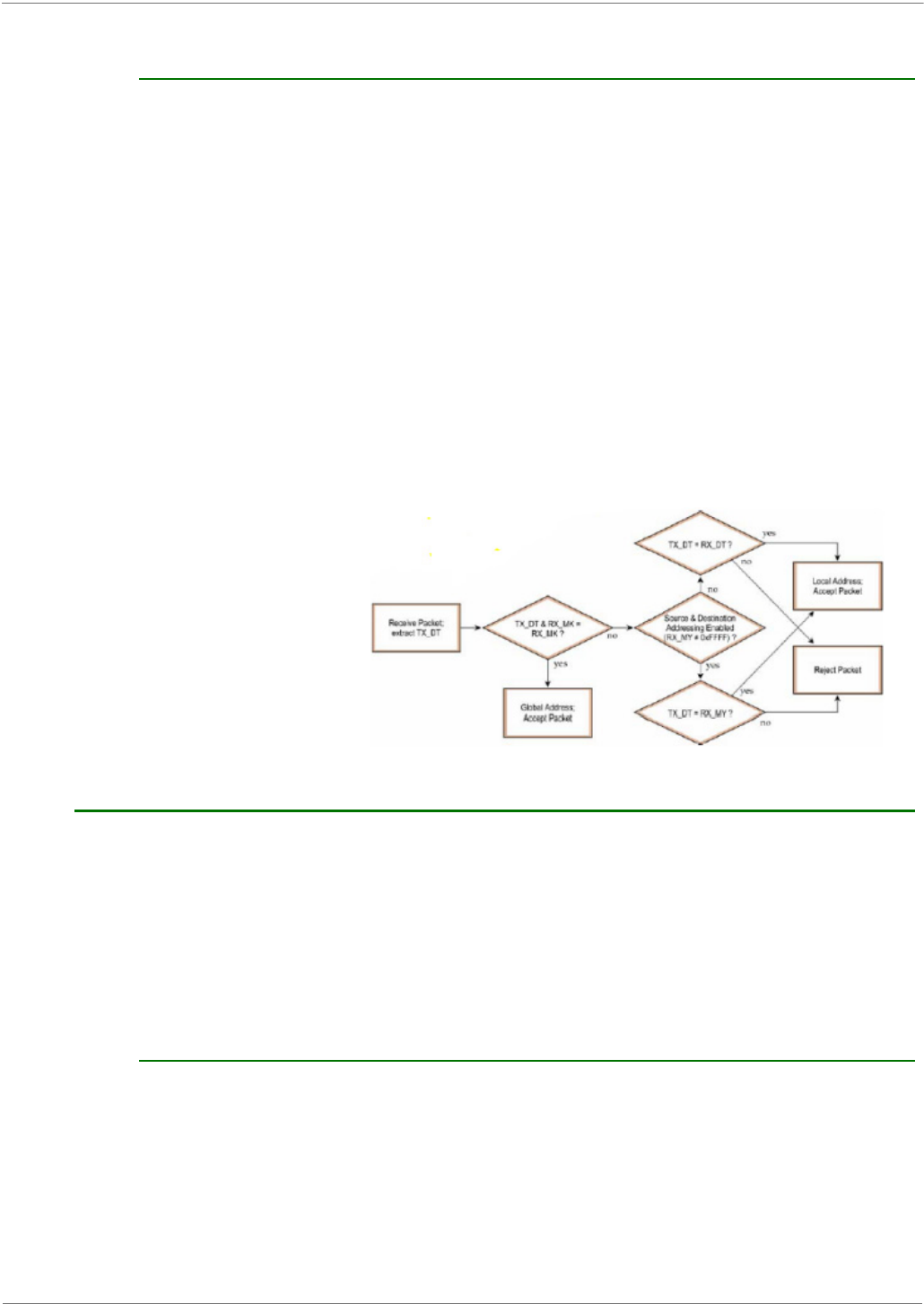
XBee‐PRO®900HP/XBee‐PRO®XSCRFModules
©2012DigiInternational,Inc. 126
Address Recognition
Transmissions can be addressed to a specific module or group of modules using the DT
(Destination Address) and MK (Address Mask) parameters. The transmitting module dictates
whether the packet is intended for a specific module (local address) or multiple modules (global
address) by comparing the packet’s DT parameter to its own MK parameter.
Figure1‐015.LocalPacketsvs.GlobalPackets(TransmittingModule)
TX_DT = Transmitter Destination Address
TX_MK = Transmitter Address Mask
Note: When TX_DT = 0xFFFF (default), RF packets are global and are received by all modules
within range. (Receivers do not send ACKs.)
A receiving module will only accept a packet if a packet is addressed to it (either as a global or
local packet). The RX module makes this determination by inspecting the destination address of
the RF packet and comparing it to its own address and mask. The Destination Address of the TX
module is logically “ANDed” with the Address Mask of the RX module.
Figure1‐016.AddressRecognition(ReceivingModule)
TX_DT = Transmitter Destination Address
RX_DT = Receiver Destination Address
RX_MY = Receiver Source Address
Basic Communications
Basic Communications are accomplished through two sub-types:
• Broadcast - By default, XStream Modules communicate through Broadcast communications
and within a peer-to-peer network topology. When any module transmits, all other modules
within range will receive the data and pass it directly to their host device.
• Addressed - If addressing parameters match, received RF data is forwarded to the DO (Data
Out) buffer; otherwise, the RF data is discarded.
When using Basic Communications, any functions such as acknowledgements are handled at the
application layer by the integrator. The Broadcast Modes provide transparent communications,
meaning that the RF link simply replaces a wired link.
Streaming Mode (Default)
Characteristics: Highest data throughput
Lowest latency and jitter
Reduced immunity to interference
Transmissions never acknowledged (ACK) by receiving module(s)
Required Parameter Values (TX Module): RR (Retries) = 0
Related Commands: Networking (DT, MK, MY), Serial Interfacing (PK, RB, RO, TT)

XBee‐PRO®900HP/XBee‐PRO®XSCRFModules
©2012DigiInternational,Inc. 127
Recommended Use: Mode is most appropriate for data systems more sensitive to latency and/or
jitter than to occasional packet loss.
Streaming Mode Data Flow
Figure1‐017.StreamingModeStateDiagram(TXModule)
Events & processes in this mode are common to all of the other RF Modes.
NOTE: When streaming data, RB and RO parameters are only observed on the first packet.
After transmission begins, the TX event will continue uninterrupted until the DI buffer is empty or
the streaming limit (TT Command) is reached. As with the first packet, the payload of each subse-
quent packet includes up to the maximum packet size (PK Command).
The streaming limit (TT Command) is specified by the transmitting module as the maximum num-
ber of bytes the transmitting module can send in one transmission event. After the TT parameter
threshold is reached, the transmitting module will force a random delay of 1 to RN delay slots
(exactly 1 delay slot if RN = 0).
Subsequent packets are sent without an RF initializer since receiving modules stay synchronized
with the transmitting module for the duration of the transmission event (from preceding packet
information). However, due to interference, some receiving modules may lose data (and synchro-
nization to the transmitting module), particularly during long transmission events.
Once the transmitting module has sent all pending data or has reached the TT limit, the transmis-
sion event ends. The transmitting module will not transmit again for exactly RN delay slots if the
local (i.e. transmitting module’s) RN parameter is set to a non-zero value. The receiving module(s)
will not transmit for a random number of delays between 0 and (RN-1) if the local (i.e. receiving
module’s) RN parameter is set to a non-zero value. These delays are intended to lessen congestion
following long bursts of packets from a single transmitting module, during which several receiving
modules may have become ready to transmit.
Repeater Mode
Characteristics: Self-organizing - No route configuration is necessary
Self-healing / Fault-tolerant
Low power consumption and Minimized interference
Network throughput is determined by number of hops, not by number of
repeaters. Multiple repeaters within range of source node count as one hop.
Supports “transparent” multi-drop mode or addressed data filtering mode.
Duplicate RF packets are automatically filtered out.
All packets propagate to every node in the network (filtering rules apply).
Broadcast communications - each packet comes out every node exactly once.
Addressed communications - all radios see every packet. Only the module with
a matching address will forward it to the DO buffer (UART IN).
Data entering the network on any module is transmitted and forwarded through
every repeater module until it reaches the ends of the network.
Each repeater will repeat a packet only once.
Constraints: Requires that each module have a unique MY (Source Address) parameter.
System must introduce just one packet at a time to the network for
transmission (256 bytes max).
Each hop (H) decreases network throughput by a factor of 1/(H+1). Additional
repeaters add network redundancy without decreasing throughput.
Required Parameter Values (TX Module): MD = 3 or 4, MY = unique value (can be
accomplished by issuing the AM (Auto-set MY) and WR (Write) commands to all modules in the
network).
Related Commands: Networking (MD, DT, MY, AM), Serial Interfacing (RN, PK, RO, RB).

XBee‐PRO®900HP/XBee‐PRO®XSCRFModules
©2012DigiInternational,Inc. 128
Recommended Use: Use in networks where intermediary nodes are needed to relay data to
modules that are beyond the transmission range of the base module.
Theory of Operation
Integrators can extend the effective range and reliability of a data radio system by forwarding
traffic through one or more repeaters.
Instead of using routing tables and path discovery to establish dynamic paths through a network,
the repeater system uses a sophisticated algorithm to propagate each RF packet through the
entire network.
The network supports RF packets of up to 256 bytes. The repeater network can operate using
broadcast or addressed communications for multi-drop networks and works well in many systems
with no special configuration.
When in Repeater Mode, the network repeats each message among all available nodes exactly one
time. This mechanism eliminates the need for configuring specific routes. The network is self-
organizing and self-healing so that the system is able to receive transmissions in the event of a
module going down.
Figure1‐018.SampleRepeaterNetworkTopology
Repeater Network Configuration
A network may consist of End Nodes (EN), End/Repeater Nodes (ERN) and a Base Node (BN). The
base node initiates all communications.
The repeater network can be configured to operate using Basic Broadcast or Basic Addressed
communications. The addressing capabilities of the modules allow integrators to send a packet as
a global packet (DT = 0xFFFF) and shift out of every radio in the network (Basic Broadcast).
Alternatively, the packet can be sent with a specific DT (Destination Address) parameter so that it
is only accepted by a specific remote node (Basic Addressed).
Configuration Instruction (Basic Broadcast Communications)
Assign each module a unique MY (source) address. (The AM (Auto-set MY) command will configure
a unique source address that is based on module serial number.)
Enable Basic Broadcast Communications (DT = 0xFFFF) or Addressed Broadcast Communications
(ATDT specifies a specific destination)
Configure PK, RO and RB to ensure that RF packet aligns with protocol packet. (ex. PK=0x100,
RB=0x100, RO depends on baud rate).
Configure one or more repeaters in the system (ATMD = 3).
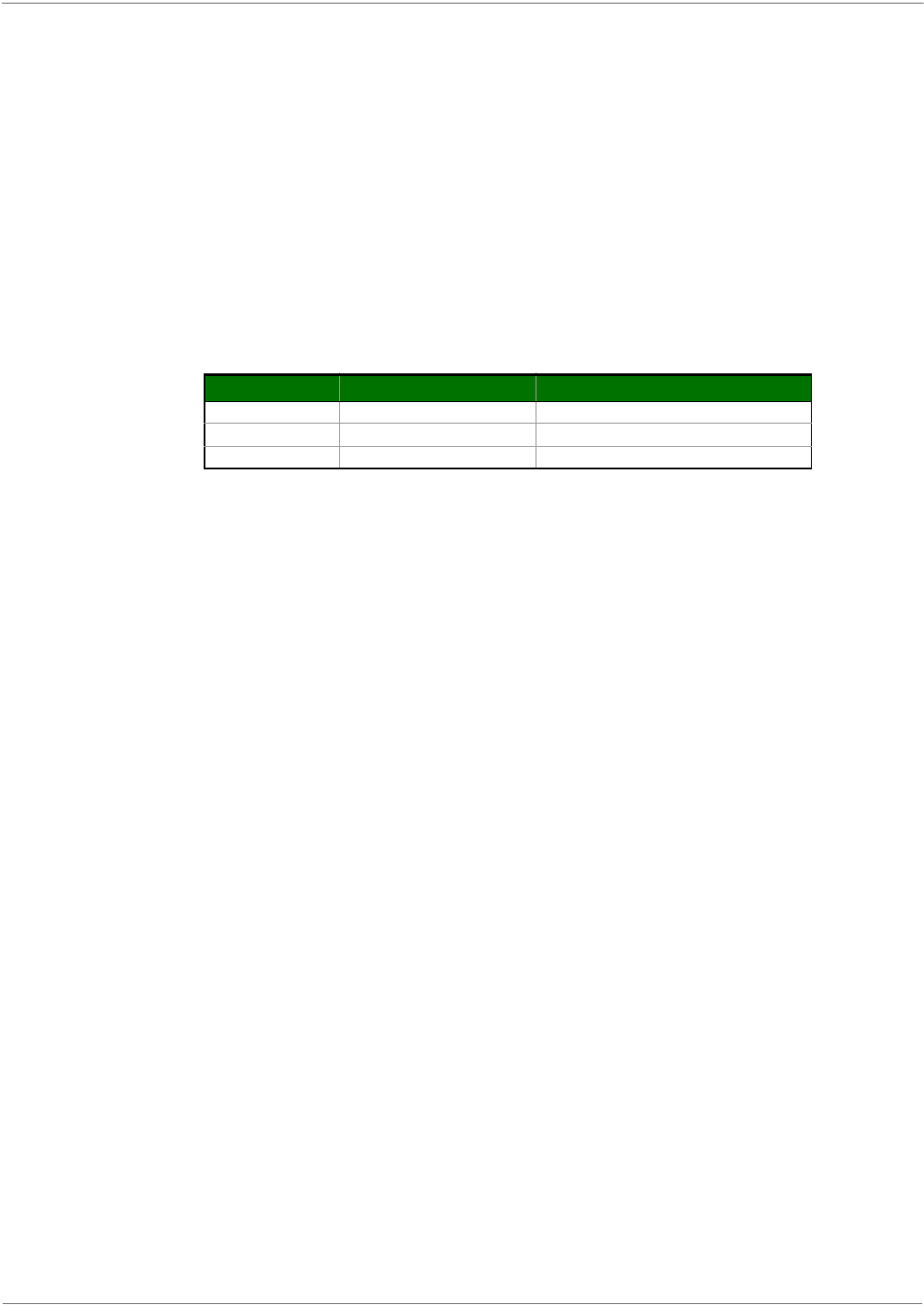
XBee‐PRO®900HP/XBee‐PRO®XSCRFModules
©2012DigiInternational,Inc. 129
Configure remote nodes as destinations (MD = 4). This will ensure that the remote node waits for
the repeater traffic to subside before it transmits a response.
The configuration instructions above reflect configuration for a Basic Broadcast Repeater system.
To configure a Basic Addressed Repeater system, use the DT (Destination Address) parameter to
assign unique addresses to each module in the network.
Algorithm details
• Packet ID (PID) is composed of transmitting module MY address and packet serial number.
• Incoming packets with a PID already found in the PID buffer will be ignored.
• Each module maintains a PID buffer 8 deep of previously received packets (managed as
FIFO).
Packets may be shifted out the serial port and/or repeated depending on the DT parameter
contained in the RF packet.
Table1‐010. DT(DestinationAddress)parametertruthtable
Repeat delay based on RSSI
A transmitted packet may be received by more that one repeater at the same time. In order to
reduce the probability that the repeaters will transmit at the same instant, resulting in a collision
and possible data loss; an algorithm has been developed that will allow a variable back-off prior to
retransmission of the packet by a repeater. The algorithm allows radios that receive the packet
with a stronger RF signal (RSSI) to have the first opportunity to retransmit the packet.
The RN (Delay Slots) parameter is used to configure this delay. Set RN=0 (no delays) for small
networks with few repeaters or repeaters that are not within range of each other. Set RN=1 for
systems with 2 to 5 repeaters that may be within range of each other.
The actual length of the delay is computed by the formula:
Delay (ms) = L * DS
DS = (-41-RSSI)/10*RN)+RandomInt(0,RN)
Where L is the length of the transmitted packet in milliseconds, DS is the number of delay slots to
wait, RSSI is the received signal strength in dBm, RN is the value of the RN register and
RandomInt(A,B) is a function that returns a random integer from A to B-0.
Response packet delay
As a packet propagates through the repeater network, if any node receives the data and generates
a quick response, the response needs to be delayed so as not to collide with subsequent
retransmissions of the original packet. To reduce collisions, both repeater and end node radios in a
repeater network will delay transmission of data shifted in the serial port to allow any repeaters
within range to complete their retransmissions.
The time for this delay is computed by the formula:
Maximum Delay (ms) = L * DS
DS = ((-41-(-100))/10)*RN)+RN+1
Where L is the length of the transmitted packet in milliseconds, DS is the number of delay slots to
wait, RSSI is the received signal strength in dBm, and RN is the value of the RN register.
Address Match Send out serial port? Repeat?
Global Yes Yes
Local Yes Yes
None No Yes
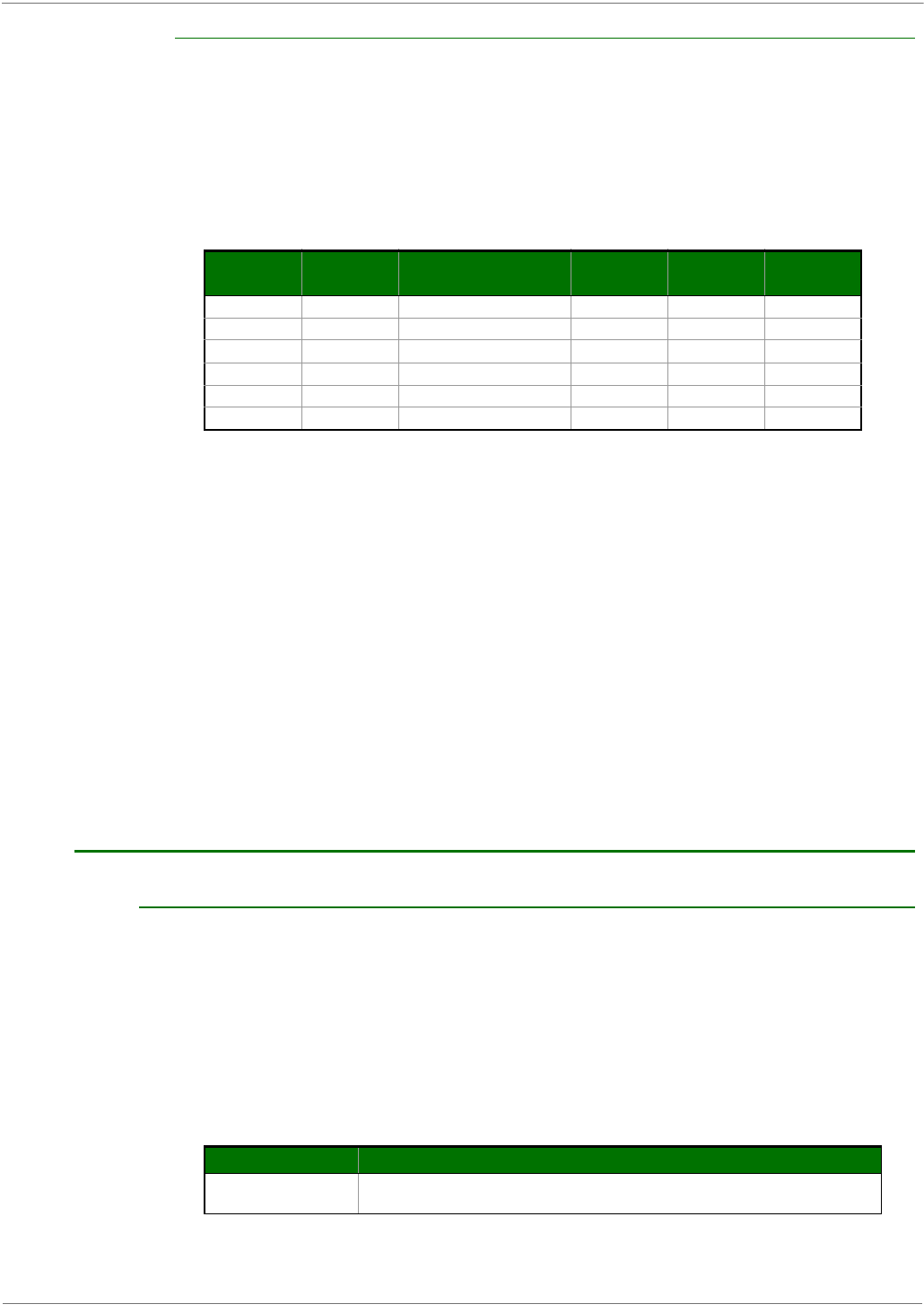
XBee‐PRO®900HP/XBee‐PRO®XSCRFModules
©2012DigiInternational,Inc. 130
Use Case - Broadcast Repeater Network
Consider modules R1 through R10 each communicating to a PLC using the ModBus protocol and
spaced evenly in a line. All ten nodes are configured as ‘destinations & repeaters’ within the scope
of Basic Broadcast Communications (MD=3, AM, DT=0xFFFF, PK=0x100, RO=0x03, RB=0x100,
RN=1). The Base Host (BH) shifts payload that is destined for R10 to R1. R1 initializes RF
communication and transmits payload to nodes R2 through R5 which are all within range of R1.
Modules R2 through R5 receive the RF packet and retransmit the packet simultaneously. They also
send the data out the serial ports, to the PLC's.
Table1‐011. Commandsusedtoconfigurerepeaterfunctions
Bandwidth Considerations
Using broadcast repeaters in a network reduces the overall network data throughput as each
repeater must buffer an entire packet before retransmitting it. For example: if the destination is
within range of the transmitter and the packet is 32 bytes long, the transmission will take
approximately 72ms on a 9600 baud XSC Module. If that same packet has to propagate through
two repeaters, it will take 72ms to arrive at the first repeater, another 72 ms to get to the second
and a final 72ms to get to the destination for a total of 216ms. Taking into account UART transfer
times (~1ms/byte at 9600 baud), a server to send a 32 byte query and receive a 32 byte response
is ~200ms, allowing for 5 polls per second. With the two repeaters in the path, the same query/
response sequence would take about 500ms for 2 polls per second.
To summarize, this system is sending and receiving 64 bytes 5 times per second for a throughput
of 320 bytes per second with no repeaters and 128 bytes per second with 2 repeaters. Generally,
the network throughput will decrease by a factor of 1/(R+1), with R representing the number of
repeaters between the source and destination.
Acknowledged Communications
Acknowledged Mode
Characteristics: Reliable delivery through positive acknowledgements for each packet
Throughput, latency and jitter vary depending on the quality of the channel and
the strength of the signal.
Recommended Use: Acknowledge Mode configuration is appropriate when reliable delivery is
required between modules. If messages are smaller than 256 bytes, use RB and RO commands to
align RF packets with application packets.
Required Parameter Values (TX Module): RR (Retries) >= 1
Related Commands: Networking (DT, MK, RR), Serial Interfacing (PK, RN, TT, RO, RB)
Table1‐012. SampleNetworkProfile
AT
Command
Binary
Command AT Command Name Range
# Bytes
Returned
Factory
Default
AM 0x3A (58d) Auto-set MY - - -
DT 0x00 (0d) Destination Address 0-0xFFFF 2 0
MD 0x3C (60d) RF Mode 3-4 1 0
MY 0x2A (42d) Source Address 0-0xFFFF 2 0xFFFF
RN 0x19 (25d) Delay Slots 0-0xFF [slots] 1 0
WR 0x08 (8d) Write - - -
Module Parameter Settings (assume default values for parameter not listed)
All ATRR A [set number of Retries to 0x0A]
ATRN 5 [set number of Delay Slots to 5]

XBee‐PRO®900HP/XBee‐PRO®XSCRFModules
©2012DigiInternational,Inc. 131
Acknowledged Mode Connection Sequence
Figure1‐019.AcknowledgedModeStateDiagram
After sending a packet while in Acknowledged Mode, the transmitting module listens for the ACK
(acknowledgement). If it receives the ACK, it will either send a subsequent packet (if more
transmit data is pending), or will wait for exactly RN random delay slots before allowing another
transmission (if no more data is pending for transmission). If the transmitting module
does not receive the ACK within the allotted time, it will retransmit the packet with a new RF
initializer following the ACK slot. There is no delay between the first ACK slot and the first
retransmission. Subsequent retransmissions incur a delay of a random number of delay slots,
between 0 and RN. If RN is set to 0 on the transmitting module, there are never any back-off
delays between retransmissions. Note that during back-off delays, the transmitting module will go
into Idle Mode and may receive RF data. This can have the effect of increasing the back-off delay,
as the radio cannot return to RF transmit (or retransmit) mode as long as it is receiving RF data.
After receiving and acknowledging a packet, the receiving module will move to the next frequency
and listen for either a retransmission or new data for a specific period of time. Even if the
transmitting module has indicated that it has no more pending transmit data, it may have not
received the previous ACK, and so it may retransmit the packet (potentially with no delay after the
ACK slot). In this case, the receiving module will always detect the immediate retransmission,
which will hold off the communications channel and thereby reduce collisions. Receiving modules
acknowledge each retransmission they receive, but they only pass the first copy of a packet they
receive out the UART. RB and RO parameters are not applied to subsequent packets. This means
that once transmission has begun, it will continue uninterrupted until the DI buffer is empty or the
streaming limit (TT) has been reached. As with the first packet, the payload of each subsequent
packet includes up to the maximum packet size (PK parameter). The transmitting module checks
for more pending data near the end of each packet. The streaming limit (TT parameter) specifies
the maximum number of bytes that the transmitting module will send in one transmission event,
which may consist of many packets and retries. If the TT parameter is reached, the transmitting
module will force a random delay of 1 to RN delay slots (exactly 1 delay slot if RN is zero). Each
packet is counted only once toward TT, no matter how many times the packet is retransmitted.
Subsequent packets in acknowledged mode are similar to those in streaming mode, with the
addition of an acknowledgement between each packet, and the possibility of retransmissions.
Subsequent packets are sent without an RF initializer, as the receiving modules are already
synchronized to the transmitting module from the preceding packet(s) and they remain

XBee‐PRO®900HP/XBee‐PRO®XSCRFModules
©2012DigiInternational,Inc. 132
synchronized for the duration of the transmission event. Each retransmission of a packet includes
an RF initializer. Once the transmitting module has sent all pending data or has reached the TT
limit, the acknowledged transmission event is completed. The transmitting module will not
transmit again for exactly RN delay slots, if the local RN parameter is set to a nonzero value. The
receiving module will not transmit for a random number of delay slots between 0 and (RN-1), if
the local RN parameter is set to a nonzero value. These delays are intended to lessen congestion
following long bursts of packets from a single transmitting module, during which several receiving
modules may have themselves become ready to transmit.
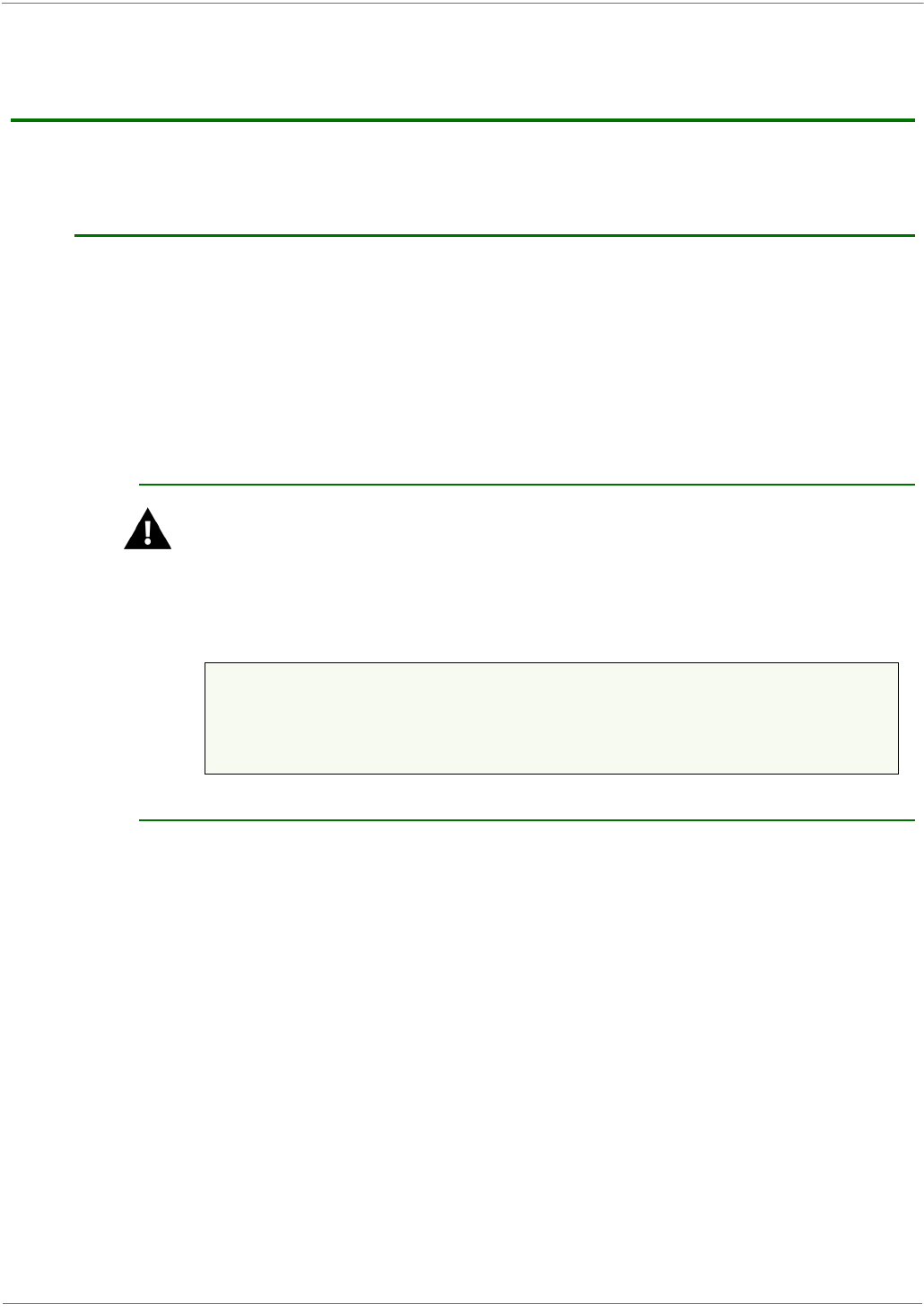
XBee‐PRO®900HP/XBee‐PRO®XSCRFModules
©2012DigiInternational,Inc. 133
AppendixB:AgencyCertificationsforS3B
Hardware
Please note that both Appendix B and Appendix C contain Agency Certification information. Please refer to the
Preface for instructions on which appendix applies to your product.
FCC (United States) Certification
The XBee-PRO® 900HP/XBee-PRO® XSC RF Module complies with Part 15 of the FCC rules and regulations.
Compliance with the labeling requirements, FCC notices and antenna usage guidelines is required.
In order to operate under Digi’s FCC Certification, RF Modules/integrators must comply with the following
regulations:
Labeling Requirements
WARNING: The Original Equipment Manufacturer (OEM) must ensure that FCC labeling requirements
are met. This includes a clearly visible label on the outside of the final product enclosure that
displays the text shown in the figure below.
FigureA‐01. RequiredFCCLabelforOEMproductscontainingtheXBee‐PRO®900HP/XBee‐PRO®XSCRF
Module.
XBEE PRO 900HP
FCC Notices
IMPORTANT: The XBee-PRO® 900HP/XBee-PRO® XSC OEM RF Module has been certified by the FCC for use
with other products without any further certification (as per FCC section 2.1091). Modifications not expressly
approved by Digi could void the user's authority to operate the equipment.
IMPORTANT: OEMs must test final product to comply with unintentional radiators (FCC section 15.107 &
15.109) before declaring compliance of their final product to Part 15 of the FCC Rules.
IMPORTANT: The RF module has been certified for remote and base radio applications. If the module will be
used for portable applications, the device must undergo SAR testing.
This equipment has been tested and found to comply with the limits for a Class B digital device, pursuant to
Part 15 of the FCC Rules. These limits are designed to provide reasonable protection against harmful
interference in a residential installation. This equipment generates, uses and can radiate radio frequency
energy and, if not installed and used in accordance with the instructions, may cause harmful interference to
radio communications. However, there is no guarantee that interference will not occur in a particular
installation.
If this equipment does cause harmful interference to radio or television reception, which can be determined by
turning the equipment off and on, the user is encouraged to try to correct the interference by one or more of
the following measures: Re-orient or relocate the receiving antenna, Increase the separation between the
equipment and receiver, Connect equipment and receiver to outlets on different circuits, or Consult the dealer
or an experienced radio/TV technician for help.
1. The system integrator must ensure that the text provided with this device [Figure A-01] is
placed on the outside of the final product and within the final product operation manual.
2. The XBee-PRO® 900HP/XBee-PRO® XSC RF Module may only be used with antennas that
have been tested and approved for use with this module refer to Table A-1.
Contains FCC ID: MCQ-XB900HP
The enclosed device complies with Part 15 of the FCC Rules. Operation is subject to the following two
conditions: (i.) this device may not cause harmful interference and (ii.) this device must accept any inter-
ference received, including interference that may cause undesired operation.
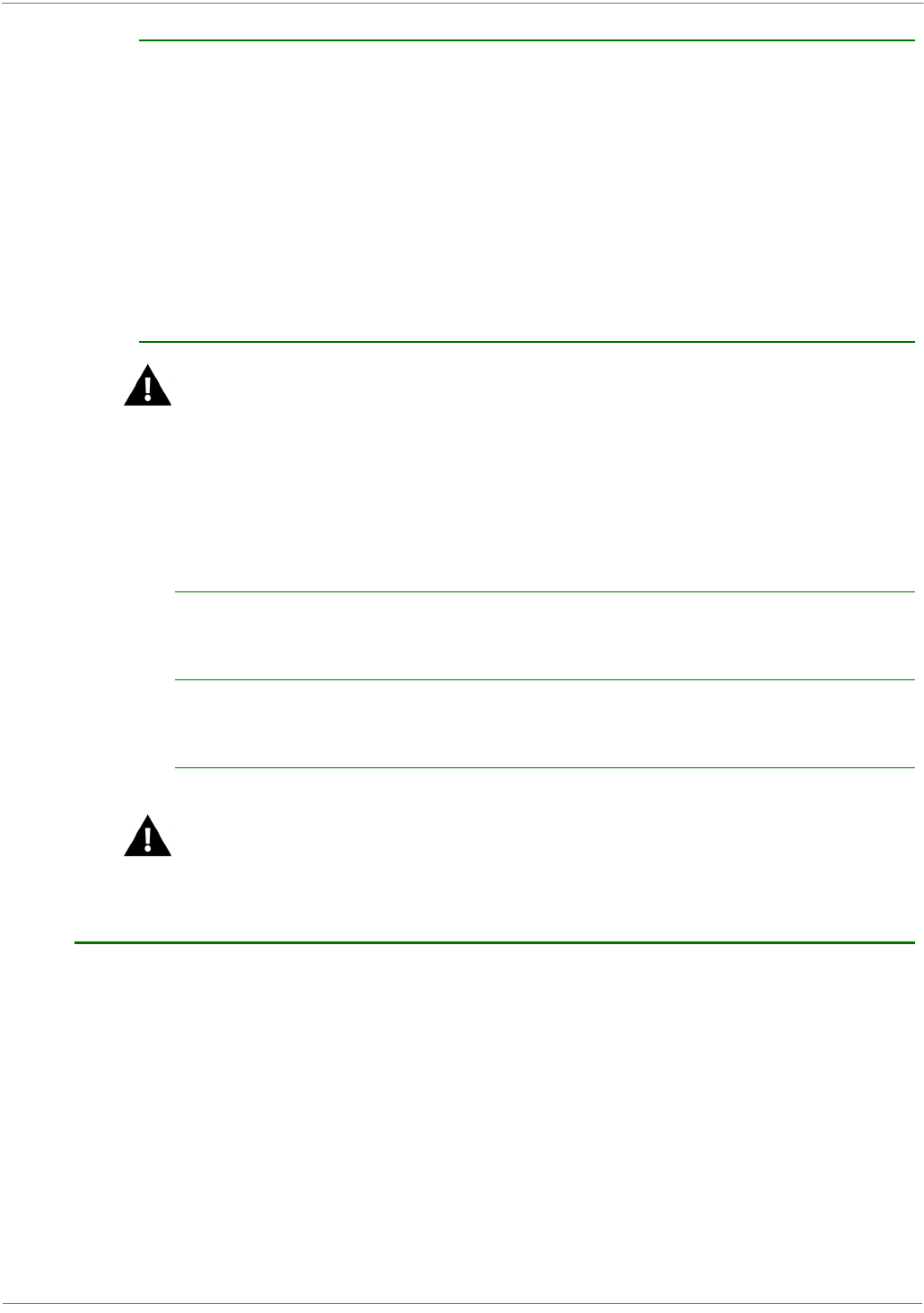
XBee‐PRO®900HP/XBee‐PRO®XSCRFModules
©2012DigiInternational,Inc. 134
Limited Modular Approval
This is an RF module approved for Limited Modular use operating as a mobile transmitting device with respect
to section 2.1091 and is limited to OEM installation for Mobile and Fixed applications only. During final
installation, end-users are prohibited from access to any programming parameters. Professional installation
adjustment is required for setting module power and antenna gain to meet EIRP compliance for high gain
antenna(s).
Final antenna installation and operating configurations of this transmitter including antenna gain and cable
loss must not exceed the EIRP of the configuration used for calculating MPE. Grantee (Digi) must coordinate
with OEM integrators to ensure the end-users and installers of products operating with the module are
provided with operating instructions to satisfy RF exposure requirements.
The FCC grant is valid only when the device is sold to OEM integrators. Integrators are instructed to ensure
the end-user has no manual instructions to remove, adjust or install the device.
FCC-approved Antennas
WARNING: This device has been tested with Reverse Polarity SMA connectors with the antennas
listed in the tables of this section. When integrated into OEM products, fixed antennas require
installation preventing end-users from replacing them with non-approved antennas. Antennas not
listed in the tables must be tested to comply with FCC Section 15.203 (unique antenna connectors)
and Section 15.247 (emissions).
WARNING: The FCC requires that all spread spectrum devices operating within the Unlicensed radio frequency
bands must limit themselves to a maximum radiated power of 4 Watts EIRP. Failure to observe this limit is a
violation of our warranty terms, and shall void the user’s authority to operate the equipment.
This can be stated: RF power - cable loss + antenna gain <= 36 dBm eirp.
Fixed Base Station and Mobile Applications
Digi RF Modules are pre-FCC approved for use in fixed base station and mobile applications. When the antenna
is mounted at least 20cm (8") from nearby persons, the application is considered a mobile application.
Portable Applications and SAR Testing
If the module will be used at distances closer than 20cm to all persons, the device may be required to undergo
SAR testing. Co-location with other transmitting antennas closer than 20cm should be avoided.
RF Exposure
This statement must be included as a CAUTION statement in OEM product manuals.
WARNING: This equipment is approved only for mobile and base station transmitting devices.
Antenna(s) used for this transmitter must be installed to provide a separation distance of at least 20
cm from all persons and must not be co-located or operating in conjunction with any other antenna
or transmitter.
IC (Industry Canada) Certification
This device complies with Industry Canada licence-exempt RSS standard(s). Operation is
subject to the following two conditions: (1) this device may not cause interference, and
(2) this device must accept any interference, including interference that may cause
undesired operation of the device.
Le présent appareil est conforme aux CNR d'Industrie Canada applicables aux appareils
radio exempts de licence. L'exploitation est autorisée aux deux conditions suivantes: (1)
l'appareil ne doit pas produire de brouillage, et (2) l'utilisateur de l'appareil doit accepter
tout brouillage radioélectrique subi, même si le brouillage est susceptible d'en
compromettre le fonctionnement
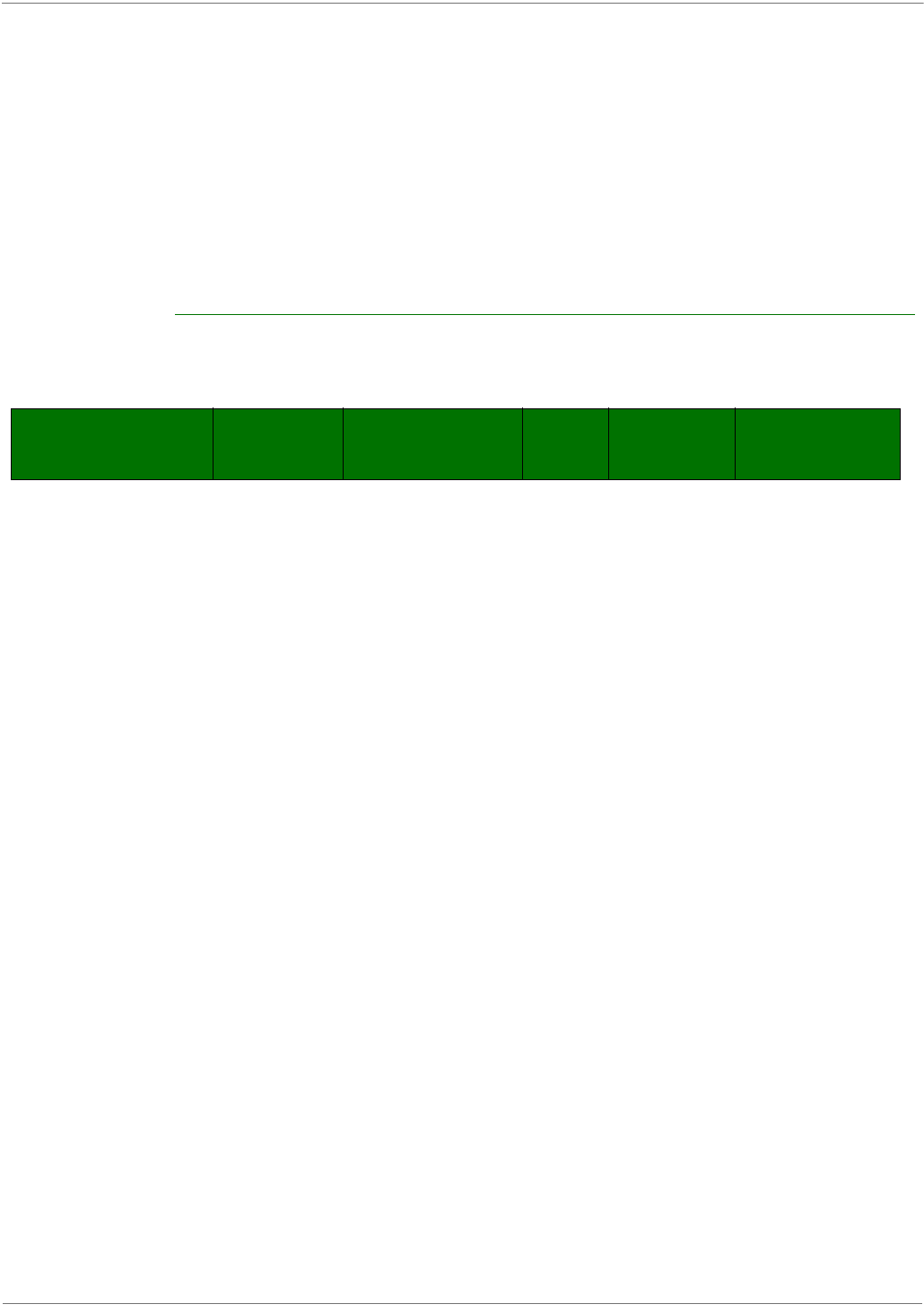
XBee‐PRO®900HP/XBee‐PRO®XSCRFModules
©2012DigiInternational,Inc. 135
Labeling Requirements
Labeling requirements for Industry Canada are similar to those of the FCC. A clearly
visible label on the outside of the final product enclosure must display one of the following
text:
Contains IC: 1846A-XB900HP
The integrator is responsible for its product to comply with IC ICES?003 & FCC Part 15,
Sub. B-Unintentional Radiators. ICES-003 is the same as FCC Part 15 Sub. B and Industry
Canada accepts FCC test report or CISPR 22 test report for compliance with ICES-003.
Antenna Options: 900 MHz Antenna Listings
The antennas in the tables below have been approved for use with this module. Digi does not carry all of these
antenna variants. Contact Digi Sales for available antennas.
Table A-01. Antennas approved for use with the XBee-PRO 900HP RF Module
Part Number Type Connector Gain Application
Cable Loss or
Power Reduction
for S3B Radio
Omni-directional antennas
A09-F0 Fiberglass Base RPN 0 dBi Fixed 0dB
A09-F1 Fiberglass Base RPN 1.0 dBi Fixed 0dB
A09-F2 Fiberglass Base RPN 2.1 dBi Fixed 0dB
A09-F3 Fiberglass Base RPN 3.1 dBi Fixed 0dB
A09-F4 Fiberglass Base RPN 4.1 dBi Fixed 0dB
A09-F5 Fiberglass Base RPN 5.1 dBi Fixed 0dB
A09-F6 Fiberglass Base RPN 6.1 dBi Fixed 0dB
A09-F7 Fiberglass Base RPN 7.1 dBi Fixed 0dB
A09-F8 Fiberglass Base RPN 8.1 dBi Fixed 0dB
A09-F9 Base Station RPSMAF 9.2dBi Fixed 0dB
A09-W7 Wire Base Station RPN 7.1 dBi Fixed 0dB
A09-F0 Fiberglass Base RPSMA 0 dBi Fixed 0dB
A09-F1 Fiberglass Base RPSMA 1.0 dBi Fixed 0dB
A09-F2 Fiberglass Base RPSMA 2.1 dBi Fixed 0dB
A09-F3 Fiberglass Base RPSMA 3.1 dBi Fixed 0dB
A09-F4 Fiberglass Base RPSMA 4.1 dBi Fixed 0dB
A09-F5 Fiberglass Base RPSMA 5.1 dBi Fixed 0dB
A09-F6 Fiberglass Base RPSMA 6.1 dBi Fixed 0dB
A09-F7 Fiberglass Base RPSMA 7.1 dBi Fixed 0dB
A09-F8 Fiberglass Base RPSMA 8.1 dBi Fixed 0dB
A09-M7 Base Station RPSMAF 7.2dBi Fixed 0dB
A09-W7SM Wire Base Station RPSMA 7.1 dBi Fixed 0dB
A09-F0TM Fiberglass Base RPTNC 0 dBi Fixed 0dB
A09-F1TM Fiberglass Base RPTNC 1.0 dBi Fixed 0dB
A09-F2TM Fiberglass Base RPTNC 2.1 dBi Fixed 0dB
A09-F3TM Fiberglass Base RPTNC 3.1 dBi Fixed 0dB
A09-F4TM Fiberglass Base RPTNC 4.1 dBi Fixed 0dB
A09-F5TM Fiberglass Base RPTNC 5.1 dBi Fixed 0dB
A09-F6TM Fiberglass Base RPTNC 6.1 dBi Fixed 0dB

XBee‐PRO®900HP/XBee‐PRO®XSCRFModules
©2012DigiInternational,Inc. 136
A09-F7TM Fiberglass Base RPTNC 7.1 dBi Fixed 0dB
A09-F8TM Fiberglass Base RPTNC 8.1 dBi Fixed 0dB
A09-W7TM Wire Base Station RPTNC 7.1 dBi Fixed 0dB
A09-HSM-7 Straight half-wave RPSMA 3.0 dBi Fixed / Mobile 0dB
A09-HASM-675 Articulated half- RPSMA 2.1 dBi Fixed / Mobile 0dB
A09-HABMM-P6I Articulated half- MMCX 2.1 dBi Fixed / Mobile 0dB
A09-HABMM-6-P6I Articulated half- MMCX 2.1 dBi Fixed / Mobile 0dB
A09-HBMM-P6I Straight half-wave MMCX 2.1 dBi Fixed / Mobile 0dB
A09-HRSM Right angle half- RPSMA 2.1 dBi Fixed 0dB
A09-HASM-7 Articulated half- RPSMA 2.1 dBi Fixed 0dB
A09-HG Glass mounted RPSMA 2.1 dBi Fixed 0dB
A09-HATM Articulated half- RPTNC 2.1 dBi Fixed 0dB
A09-H Half-wave dipole RPSMA 2.1 dBi Fixed 0dB
A09-HBMMP6I 1/2 wave antenna MMCX 2.1dBi Mobile 0dB
A09-QBMMP6I 1/4 wave antenna MMCX 1.9 dBi Mobile 0dB
A09-QI 1/4 wave integrated
wire antenna Integrated 1.9 dBi Mobile 0dB
29000187 Helical Integrated -2.0 dBi Fixed/Mobile 0dB
A09-QW Quarter-wave wire Permanent 1.9 dBi Fixed / Mobile 0dB
A09-QRAMM 3 “Quarter-wave MMCX 2.1 dBi Fixed / Mobile 0dB
A09-QSM-3 Quarter-wave RPSMA 1.9 dBi Fixed / Mobile 0dB
A09-QSM-3H Heavy duty quarter- RPSMA 1.9 dBi Fixed / Mobile 0dB
A09-QBMM-P6I Quarter-wave w/ 6” MMCX 1.9 dBi Fixed / Mobile 0dB
A09-QHRN Miniature Helical Permanent -1 dBi Fixed / Mobile 0dB
A09-QHSN Miniature Helical Permanent -1 dBi Fixed / Mobile 0dB
A09-QHSM-2 2” Straight RPSMA 1.9 dBi Fixed / Mobile 0dB
A09-QHRSM-2 2" Right angle RPSMA 1.9 dBi Fixed / Mobile 0dB
A09-QHRSM-170 1.7" Right angle RPSMA 1.9 dBi Fixed / Mobile 0dB
A09-QRSM-380 3.8" Right angle RPSMA 1.9 dBi Fixed / Mobile 0dB
A09-QAPM-520 5.2” Articulated Permanent 1.9 dBi Fixed / Mobile 0dB
A09-QSPM-3 3” Straight screw Permanent 1.9 dBi Fixed / Mobile 0dB
A09-QAPM-3 3” Articulated screw Permanent 1.9 dBi Fixed / Mobile 0dB
A09-QAPM-3H 3” Articulated screw Permanent 1.9 dBi Fixed / Mobile 0dB
A09-DPSM-P12F omni directional RPSMA 3.0 dBi Fixed 0dB
A09-D3NF-P12F omni directional RPN 3.0 dBi Fixed 0dB
A09-D3SM-P12F omni directional w/ RPSMA 3.0 dBi Fixed 0dB
A09-D3PNF omni directional RPN 3.0 dBi Fixed 0dB
A09-D3TM-P12F omni directional w/ RPTNC 3.0 dBi Fixed 0dB
A09-D3PTM omni directional RPTNC 3.0 dBi Fixed 0dB
A09-M0SM Mag Mount RPSMA 0 dBi Fixed 0dB
A09-M2SM Mag Mount RPSMA 2.1 dBi Fixed 0dB
A09-M3SM Mag Mount RPSMA 3.1 dBi Fixed 0dB
A09-M5SM Mag Mount RPSMA 5.1 dBi Fixed 0dB
A09-M7SM Mag Mount RPSMA 7.1 dBi Fixed 0dB
A09-M8SM Mag Mount RPSMA 8.1 dBi Fixed 0dB
A09-M0TM Mag Mount RPTNC 0 dBi Fixed 0dB
A09-M2TM Mag Mount RPTNC 2.1 dBi Fixed 0dB
A09-M3TM Mag Mount RPTNC 3.1 dBi Fixed 0dB

XBee‐PRO®900HP/XBee‐PRO®XSCRFModules
©2012DigiInternational,Inc. 137
Transmitters with Detachable Antennas
This radio transmitter (IC: 1846A-XBEE900HP) has been approved by Industry Canada to operate with the
antenna types listed in the table above with the maximum permissible gain and required antenna impedance
for each antenna type indicated. Antenna types not included in this list, having a gain greater than the
maximum gain indicated for that type, are strictly prohibited for use with this device.
Le présent émetteur radio (IC: 1846A-XBEE900HP) a été approuvé par Industrie Canada pour fonctionner
avec les types d'antenne énumérés ci?dessous et ayant un gain admissible maximal et l'impédance requise
pour chaque type d'antenne. Les types d'antenne non inclus dans cette liste, ou dont le gain est supérieur au
gain maximal indiqué, sont strictement interdits pour l'exploitation de l'émetteur.
Detachable Antenna
Under Industry Canada regulations, this radio transmitter may only operate using an antenna of a type and
maximum (or lesser) gain approved for the transmitter by Industry Canada. To reduce potential radio
interference to other users, the antenna type and its gain should be so chosen that the equivalent isotropically
radiated power (e.i.r.p.) is not more than that necessary for successful communication.
Conformément à la réglementation d'Industrie Canada, le présent émetteur radio peutfonctionner avec une
antenne d'un type et d'un gain maximal (ou inférieur) approuvépour l'émetteur par Industrie Canada. Dans le
but de réduire les risques de brouillageradioélectrique à l'intention des autres utilisateurs, il faut choisir le type
d'antenne etson gain de sorte que la puissance isotrope rayonnée équivalente (p.i.r.e.) ne dépassepas
l'intensité nécessaire àl'établissement d'une communication satisfaisante.
A09-M5TM Mag Mount RPTNC 5.1 dBi Fixed 0dB
A09-M7TM Mag Mount RPTNC 7.1 dBi Fixed 0dB
A09-M8TM Mag Mount RPTNC 8.1 dBi Fixed 0dB
Yagi antennas
A09-Y6 2 Element Yagi RPN 6.1 dBi Fixed / Mobile 0dB
A09-Y7 3 Element Yagi RPN 7.1 dBi Fixed / Mobile 0dB
A09-Y8 4 Element Yagi RPN 8.1 dBi Fixed / Mobile 0dB
A09-Y9 4 Element Yagi RPN 9.1 dBi Fixed / Mobile 0dB
A09-Y10 5 Element Yagi RPN 10.1 dBi Fixed / Mobile 0dB
A09-Y11 6 Element Yagi RPN 11.1 dBi Fixed / Mobile 0dB
A09-Y12 7 Element Yagi RPN 12.1 dBi Fixed / Mobile 0dB
A09-Y13 9 Element Yagi RPN 13.1 dBi Fixed / Mobile 0.8dB
A09-Y14 10 Element Yagi RPN 14.1 dBi Fixed / Mobile 1.8dB
A09-Y14 12 Element Yagi RPN 14.1 dBi Fixed / Mobile 1.8dB
A09-Y15 13 Element Yagi RPN 15.1 dBi Fixed / Mobile 2.8dB
A09-Y15 15 Element Yagi RPN 15.1 dBi Fixed / Mobile 2.8dB
A09-Y6TM 2 Element Yagi RPTNC 6.1 dBi Fixed / Mobile 0dB
A09-Y7TM 3 Element Yagi RPTNC 7.1 dBi Fixed / Mobile 0dB
A09-Y8TM 4 Element Yagi RPTNC 8.1 dBi Fixed / Mobile 0dB
A09-Y9TM 4 Element Yagi RPTNC 9.1 dBi Fixed / Mobile 0dB
A09-Y10TM 5 Element Yagi RPTNC 10.1 dBi Fixed / Mobile 0dB
A09-Y11TM 6 Element Yagi RPTNC 11.1 dBi Fixed / Mobile 0dB
A09-Y12TM 7 Element Yagi RPTNC 12.1 dBi Fixed / Mobile 0dB
A09-Y13TM 9 Element Yagi RPTNC 13.1 dBi Fixed / Mobile 0.8dB
A09-Y14TM 10 Element Yagi RPTNC 14.1 dBi Fixed / Mobile 1.8dB
A09-Y14TM 12 Element Yagi RPTNC 14.1 dBi Fixed / Mobile 1.8dB
A09-Y15TM 13 Element Yagi RPTNC 15.1 dBi Fixed / Mobile 2.8dB
A09-Y15TM 15 Element Yagi RPTNC 15.1 dBi Fixed / Mobile 2.8dB
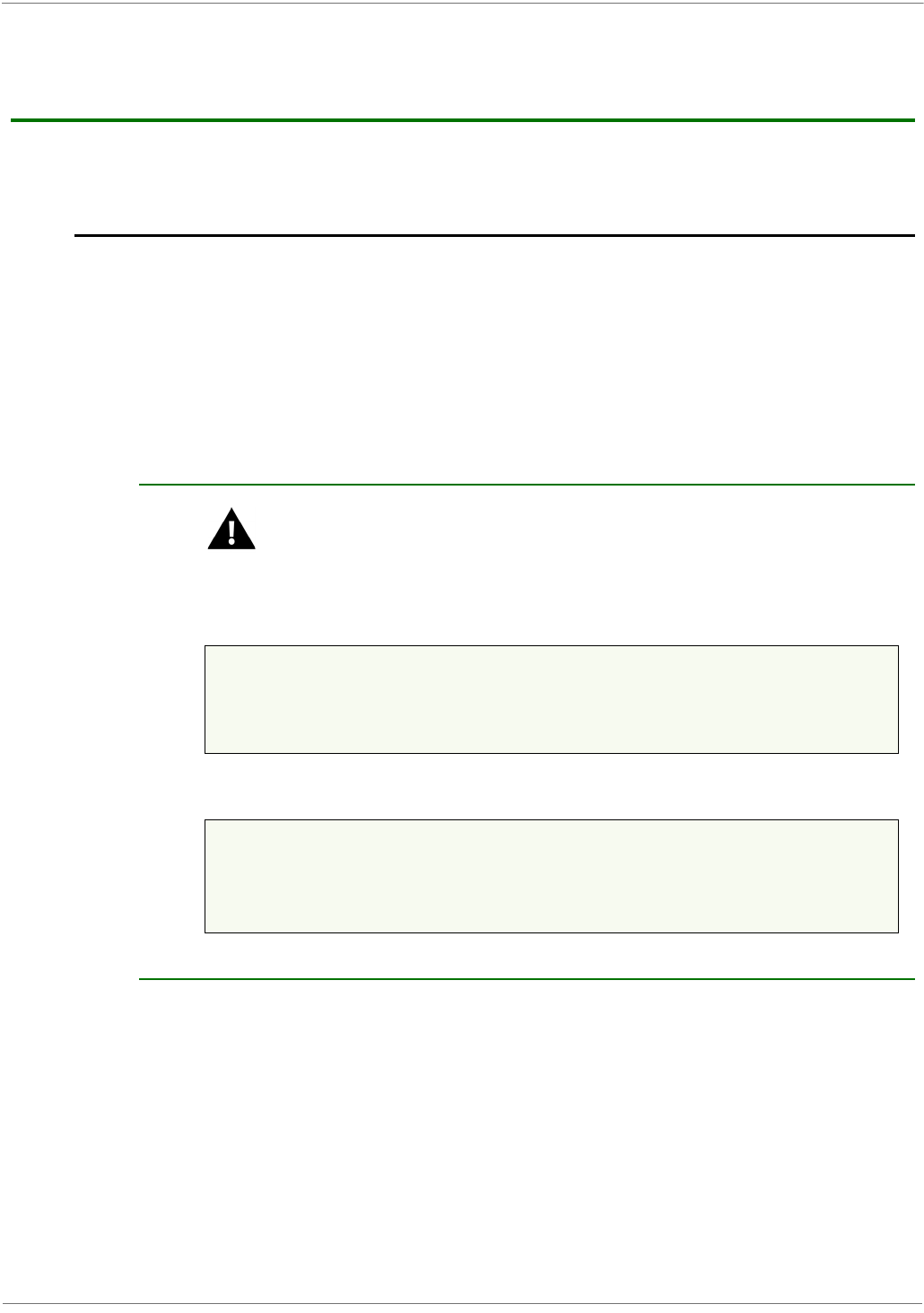
XBee‐PRO®900HP/XBee‐PRO®XSCRFModules
©2012DigiInternational,Inc. 138
AppendixC::AgencyCertificationsforlega‐
cyS3/S3BHardware
Please note that both Appendix B and Appendix C contain Agency Certification information. Please
refer to the Preface for instructions on which appendix applies to your product.
FCC (United States) Certification
The XBee-PRO® XSC RF Module complies with Part 15 of the FCC rules and regulations.
Compliance with the labeling requirements, FCC notices and antenna usage guidelines is required.
In order to operate under Digi’s FCC Certification, RF Modules/integrators must comply with the
following regulations:
Labeling Requirements
WARNING: The Original Equipment Manufacturer (OEM) must ensure that FCC labeling
requirements are met. This includes a clearly visible label on the outside of the final
product enclosure that displays the text shown in the figure below.
FigureA‐01. RequiredFCCLabelforOEMproductscontainingtheXBee‐PRO®XSCRFModule.
XBEE PRO S3
OR
XBEE PRO S3B
FCC Notices
IMPORTANT: The XBee-PRO® XSC OEM RF Module has been certified by the FCC for use with
other products without any further certification (as per FCC section 2.1091). Modifications not
expressly approved by Digi could void the user's authority to operate the equipment.
IMPORTANT: OEMs must test final product to comply with unintentional radiators (FCC section
15.107 & 15.109) before declaring compliance of their final product to Part 15 of the FCC Rules.
IMPORTANT: The RF module has been certified for remote and base radio applications. If the
module will be used for portable applications, the device must undergo SAR testing.
This equipment has been tested and found to comply with the limits for a Class B digital device,
pursuant to Part 15 of the FCC Rules. These limits are designed to provide reasonable protection
against harmful interference in a residential installation. This equipment generates, uses and can
radiate radio frequency energy and, if not installed and used in accordance with the instructions,
1. The system integrator must ensure that the text provided with this device [Figure A-01] is
placed on the outside of the final product and within the final product operation manual.
2. The XBee-PRO® XSC RF Module may only be used with antennas that have been tested and
approved for use with this module refer to Table A-1.
Contains FCC ID: MCQ-XBEEXSC
The enclosed device complies with Part 15 of the FCC Rules. Operation is subject to the following two
conditions: (i.) this device may not cause harmful interference and (ii.) this device must accept any inter-
ference received, including interference that may cause undesired operation.
Contains FCC ID: MCQ-XBPS3B
The enclosed device complies with Part 15 of the FCC Rules. Operation is subject to the following two
conditions: (i.) this device may not cause harmful interference and (ii.) this device must accept any inter-
ference received, including interference that may cause undesired operation.
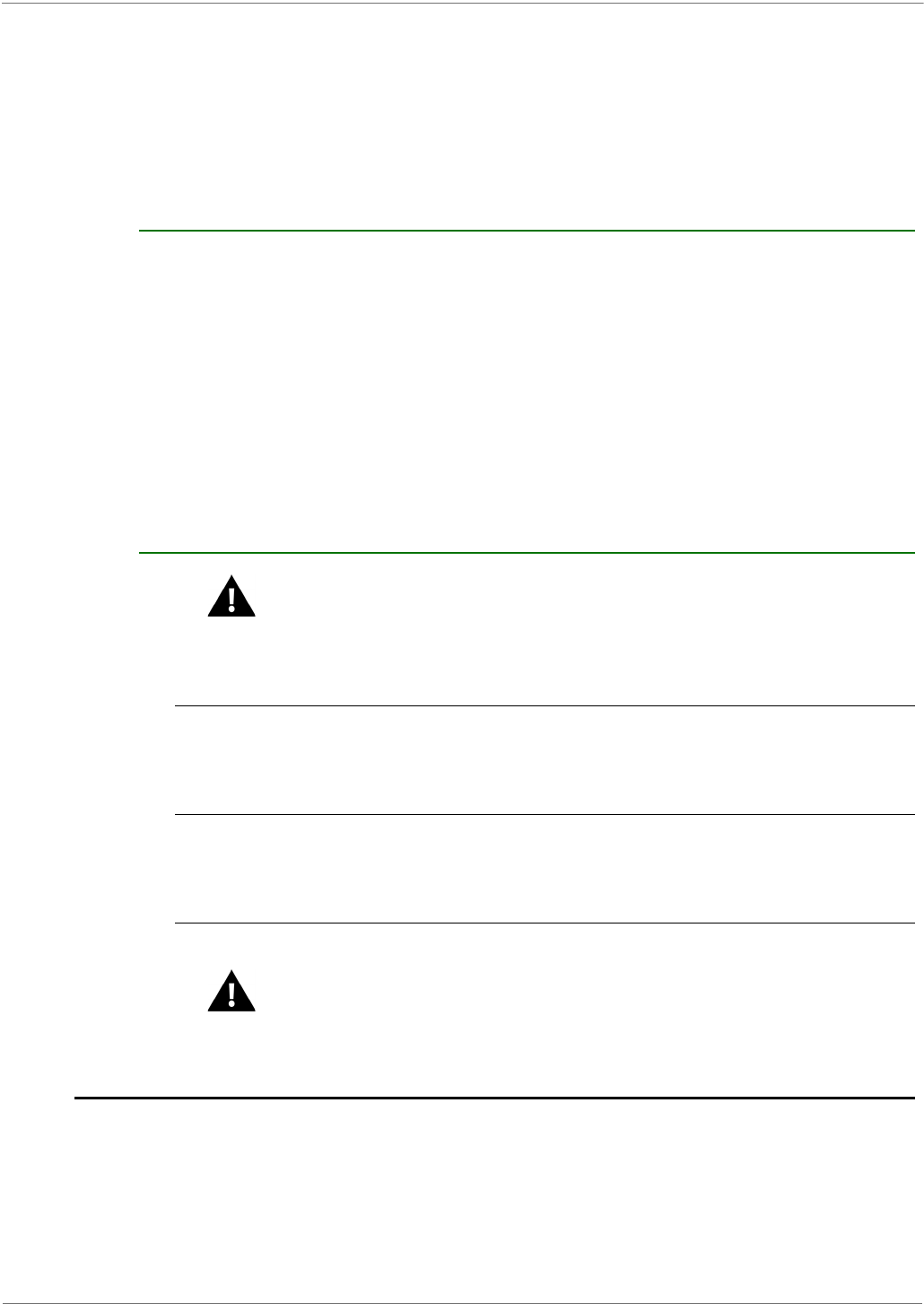
XBee‐PRO®900HP/XBee‐PRO®XSCRFModules
©2012DigiInternational,Inc. 139
may cause harmful interference to radio communications. However, there is no guarantee that
interference will not occur in a particular installation.
If this equipment does cause harmful interference to radio or television reception, which can be
determined by turning the equipment off and on, the user is encouraged to try to correct the
interference by one or more of the following measures: Re-orient or relocate the receiving
antenna, Increase the separation between the equipment and receiver, Connect equipment and
receiver to outlets on different circuits, or Consult the dealer or an experienced radio/TV technician
for help.
Limited Modular Approval
This is an RF module approved for Limited Modular use operating as a mobile transmitting device
with respect to section 2.1091 and is limited to OEM installation for Mobile and Fixed applications
only. During final installation, end-users are prohibited from access to any programming
parameters. Professional installation adjustment is required for setting module power and antenna
gain to meet EIRP compliance for high gain antenna(s).
Final antenna installation and operating configurations of this transmitter including antenna gain
and cable loss must not exceed the EIRP of the configuration used for calculating MPE. Grantee
(Digi) must coordinate with OEM integrators to ensure the end-users and installers of products
operating with the module are provided with operating instructions to satisfy RF exposure
requirements.
The FCC grant is valid only when the device is sold to OEM integrators. Integrators are instructed
to ensure the end-user has no manual instructions to remove, adjust or install the device.
FCC-approved Antennas
WARNING: This device has been tested with Reverse Polarity SMA connectors with the
antennas listed in the tables of this section. When integrated into OEM products, fixed
antennas require installation preventing end-users from replacing them with non-
approved antennas. Antennas not listed in the tables must be tested to comply with FCC
Section 15.203 (unique antenna connectors) and Section 15.247 (emissions).
Fixed Base Station and Mobile Applications
Digi RF Modules are pre-FCC approved for use in fixed base station and mobile applications. When
the antenna is mounted at least 20cm (8") from nearby persons, the application is considered a
mobile application.
Portable Applications and SAR Testing
If the module will be used at distances closer than 20cm to all persons, the device may be
required to undergo SAR testing. Co-location with other transmitting antennas closer than 20cm
should be avoided.
RF Exposure
This statement must be included as a CAUTION statement in OEM product manuals.
WARNING: This equipment is approved only for mobile and base station transmitting
devices. Antenna(s) used for this transmitter must be installed to provide a separation
distance of at least 20 cm from all persons and must not be co-located or operating in
conjunction with any other antenna or transmitter.
IC (Industry Canada) Certification
This device complies with Industry Canada licence-exempt RSS standard(s). Operation is
subject to the following two conditions: (1) this device may not cause interference, and
(2) this device must accept any interference, including interference that may cause
undesired operation of the device.
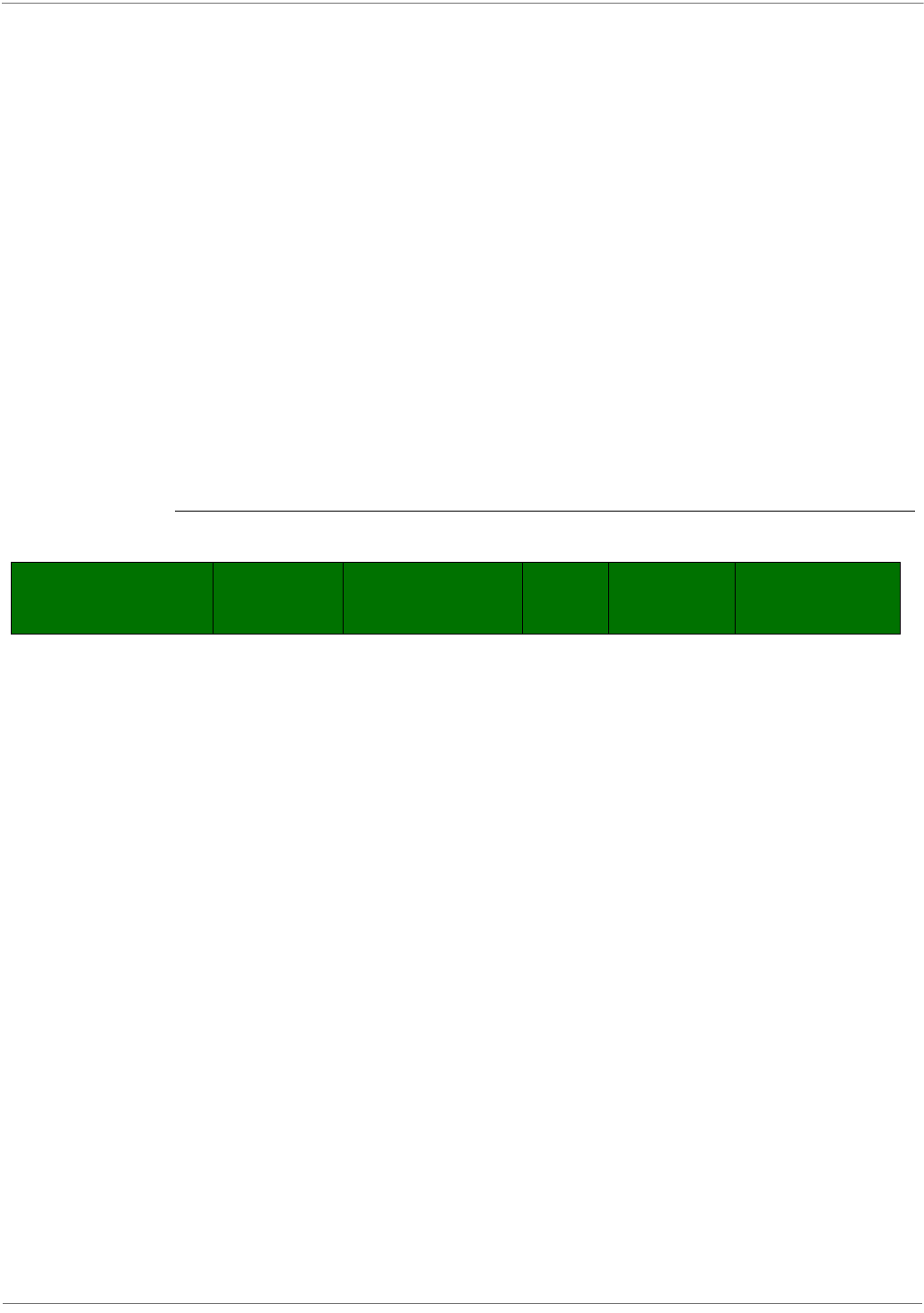
XBee‐PRO®900HP/XBee‐PRO®XSCRFModules
©2012DigiInternational,Inc. 140
Le présent appareil est conforme aux CNR d'Industrie Canada applicables aux appareils
radio exempts de licence. L'exploitation est autorisée aux deux conditions suivantes: (1)
l'appareil ne doit pas produire de brouillage, et (2) l'utilisateur de l'appareil doit accepter
tout brouillage radioélectrique subi, même si le brouillage est susceptible d'en
compromettre le fonctionnement
Labeling Requirements
Labeling requirements for Industry Canada are similar to those of the FCC. A clearly
visible label on the outside of the final product enclosure must display one of the following
text:
Contains IC: 1846A-XBEEXSC
OR
Contains IC: 1846A-XBPS3B
The integrator is responsible for its product to comply with IC ICES?003 & FCC Part 15,
Sub. B-Unintentional Radiators. ICES-003 is the same as FCC Part 15 Sub. B and Industry
Canada accepts FCC test report or CISPR 22 test report for compliance with ICES-003.
Antenna Options: 900 MHz Antenna Listings
Table A-01. Antennas approved for use with the XBee-PRO XSC RF Module
Part Number Type Connector Gain Application
Cable Loss or
Power Reduction
for S3B Radio
Omni-directional antennas
A09-F0 Fiberglass Base RPN 0 dBi Fixed 0dB
A09-F1 Fiberglass Base RPN 1.0 dBi Fixed 0dB
A09-F2 Fiberglass Base RPN 2.1 dBi Fixed 0dB
A09-F3 Fiberglass Base RPN 3.1 dBi Fixed 0dB
A09-F4 Fiberglass Base RPN 4.1 dBi Fixed 0dB
A09-F5 Fiberglass Base RPN 5.1 dBi Fixed 0dB
A09-F6 Fiberglass Base RPN 6.1 dBi Fixed 0dB
A09-F7 Fiberglass Base RPN 7.1 dBi Fixed 0dB
A09-F8 Fiberglass Base RPN 8.1 dBi Fixed 0dB
A09-F9 Base Station RPSMAF 9.2dBi Fixed 0dB
A09-W7 Wire Base Station RPN 7.1 dBi Fixed 0dB
A09-F0 Fiberglass Base RPSMA 0 dBi Fixed 0dB
A09-F1 Fiberglass Base RPSMA 1.0 dBi Fixed 0dB
A09-F2 Fiberglass Base RPSMA 2.1 dBi Fixed 0dB
A09-F3 Fiberglass Base RPSMA 3.1 dBi Fixed 0dB
A09-F4 Fiberglass Base RPSMA 4.1 dBi Fixed 0dB
A09-F5 Fiberglass Base RPSMA 5.1 dBi Fixed 0dB
A09-F6 Fiberglass Base RPSMA 6.1 dBi Fixed 0dB
A09-F7 Fiberglass Base RPSMA 7.1 dBi Fixed 0dB
A09-F8 Fiberglass Base RPSMA 8.1 dBi Fixed 0dB
A09-M7 Base Station RPSMAF 7.2dBi Fixed 0dB
A09-W7SM Wire Base Station RPSMA 7.1 dBi Fixed 0dB
A09-F0TM Fiberglass Base RPTNC 0 dBi Fixed 0dB

XBee‐PRO®900HP/XBee‐PRO®XSCRFModules
©2012DigiInternational,Inc. 141
A09-F1TM Fiberglass Base RPTNC 1.0 dBi Fixed 0dB
A09-F2TM Fiberglass Base RPTNC 2.1 dBi Fixed 0dB
A09-F3TM Fiberglass Base RPTNC 3.1 dBi Fixed 0dB
A09-F4TM Fiberglass Base RPTNC 4.1 dBi Fixed 0dB
A09-F5TM Fiberglass Base RPTNC 5.1 dBi Fixed 0dB
A09-F6TM Fiberglass Base RPTNC 6.1 dBi Fixed 0dB
A09-F7TM Fiberglass Base RPTNC 7.1 dBi Fixed 0dB
A09-F8TM Fiberglass Base RPTNC 8.1 dBi Fixed 0dB
A09-W7TM Wire Base Station RPTNC 7.1 dBi Fixed 0dB
A09-HSM-7 Straight half-wave RPSMA 3.0 dBi Fixed / Mobile 0dB
A09-HASM-675 Articulated half- RPSMA 2.1 dBi Fixed / Mobile 0dB
A09-HABMM-P6I Articulated half- MMCX 2.1 dBi Fixed / Mobile 0dB
A09-HABMM-6-P6I Articulated half- MMCX 2.1 dBi Fixed / Mobile 0dB
A09-HBMM-P6I Straight half-wave MMCX 2.1 dBi Fixed / Mobile 0dB
A09-HRSM Right angle half- RPSMA 2.1 dBi Fixed 0dB
A09-HASM-7 Articulated half- RPSMA 2.1 dBi Fixed 0dB
A09-HG Glass mounted RPSMA 2.1 dBi Fixed 0dB
A09-HATM Articulated half- RPTNC 2.1 dBi Fixed 0dB
A09-H Half-wave dipole RPSMA 2.1 dBi Fixed 0dB
A09-HBMMP6I 1/2 wave antenna MMCX 2.1dBi Mobile 0dB
A09-QBMMP6I 1/4 wave antenna MMCX 1.9 dBi Mobile 0dB
A09-QI 1/4 wave integrated
wire antenna Integrated 1.9 dBi Mobile 0dB
29000187 Helical Integrated -2.0 dBi Fixed/Mobile 0dB
A09-QW Quarter-wave wire Permanent 1.9 dBi Fixed / Mobile 0dB
A09-QRAMM 3 “Quarter-wave MMCX 2.1 dBi Fixed / Mobile 0dB
A09-QSM-3 Quarter-wave RPSMA 1.9 dBi Fixed / Mobile 0dB
A09-QSM-3H Heavy duty quarter- RPSMA 1.9 dBi Fixed / Mobile 0dB
A09-QBMM-P6I Quarter-wave w/ 6” MMCX 1.9 dBi Fixed / Mobile 0dB
A09-QHRN Miniature Helical Permanent -1 dBi Fixed / Mobile 0dB
A09-QHSN Miniature Helical Permanent -1 dBi Fixed / Mobile 0dB
A09-QHSM-2 2” Straight RPSMA 1.9 dBi Fixed / Mobile 0dB
A09-QHRSM-2 2" Right angle RPSMA 1.9 dBi Fixed / Mobile 0dB
A09-QHRSM-170 1.7" Right angle RPSMA 1.9 dBi Fixed / Mobile 0dB
A09-QRSM-380 3.8" Right angle RPSMA 1.9 dBi Fixed / Mobile 0dB
A09-QAPM-520 5.2” Articulated Permanent 1.9 dBi Fixed / Mobile 0dB
A09-QSPM-3 3” Straight screw Permanent 1.9 dBi Fixed / Mobile 0dB
A09-QAPM-3 3” Articulated screw Permanent 1.9 dBi Fixed / Mobile 0dB
A09-QAPM-3H 3” Articulated screw Permanent 1.9 dBi Fixed / Mobile 0dB
A09-DPSM-P12F omni directional RPSMA 3.0 dBi Fixed 0dB
A09-D3NF-P12F omni directional RPN 3.0 dBi Fixed 0dB
A09-D3SM-P12F omni directional w/ RPSMA 3.0 dBi Fixed 0dB
A09-D3PNF omni directional RPN 3.0 dBi Fixed 0dB
A09-D3TM-P12F omni directional w/ RPTNC 3.0 dBi Fixed 0dB
A09-D3PTM omni directional RPTNC 3.0 dBi Fixed 0dB
A09-M0SM Mag Mount RPSMA 0 dBi Fixed 0dB
A09-M2SM Mag Mount RPSMA 2.1 dBi Fixed 0dB
A09-M3SM Mag Mount RPSMA 3.1 dBi Fixed 0dB

XBee‐PRO®900HP/XBee‐PRO®XSCRFModules
©2012DigiInternational,Inc. 142
Transmitters with Detachable Antennas
This radio transmitter (IC: 1846A-XBEEXSC or IC: 1846A-XBPS3B) has been approved by Industry
Canada to operate with the antenna types listed in the table above with the maximum permissible
gain and required antenna impedance for each antenna type indicated. Antenna types not included
in this list, having a gain greater than the maximum gain indicated for that type, are strictly
prohibited for use with this device.
Le présent émetteur radio (IC: 1846A-XBPS3B ou IC: 1846A-XBPS3B) a été approuvé par
Industrie Canada pour fonctionner avec les types d'antenne énumérés ci?dessous et ayant un gain
admissible maximal et l'impédance requise pour chaque type d'antenne. Les types d'antenne non
inclus dans cette liste, ou dont le gain est supérieur au gain maximal indiqué, sont strictement
interdits pour l'exploitation de l'émetteur.
A09-M5SM Mag Mount RPSMA 5.1 dBi Fixed 0dB
A09-M7SM Mag Mount RPSMA 7.1 dBi Fixed 0dB
A09-M8SM Mag Mount RPSMA 8.1 dBi Fixed 0dB
A09-M0TM Mag Mount RPTNC 0 dBi Fixed 0dB
A09-M2TM Mag Mount RPTNC 2.1 dBi Fixed 0dB
A09-M3TM Mag Mount RPTNC 3.1 dBi Fixed 0dB
A09-M5TM Mag Mount RPTNC 5.1 dBi Fixed 0dB
A09-M7TM Mag Mount RPTNC 7.1 dBi Fixed 0dB
A09-M8TM Mag Mount RPTNC 8.1 dBi Fixed 0dB
Yagi antennas
A09-Y6 2 Element Yagi RPN 6.1 dBi Fixed / Mobile 0dB
A09-Y7 3 Element Yagi RPN 7.1 dBi Fixed / Mobile 0dB
A09-Y8 4 Element Yagi RPN 8.1 dBi Fixed / Mobile 0dB
A09-Y9 4 Element Yagi RPN 9.1 dBi Fixed / Mobile 0dB
A09-Y10 5 Element Yagi RPN 10.1 dBi Fixed / Mobile 0dB
A09-Y11 6 Element Yagi RPN 11.1 dBi Fixed / Mobile 0dB
A09-Y12 7 Element Yagi RPN 12.1 dBi Fixed / Mobile 0dB
A09-Y13 9 Element Yagi RPN 13.1 dBi Fixed / Mobile 0.8dB
A09-Y14 10 Element Yagi RPN 14.1 dBi Fixed / Mobile 1.8dB
A09-Y14 12 Element Yagi RPN 14.1 dBi Fixed / Mobile 1.8dB
A09-Y15 13 Element Yagi RPN 15.1 dBi Fixed / Mobile 2.8dB
A09-Y15 15 Element Yagi RPN 15.1 dBi Fixed / Mobile 2.8dB
A09-Y6TM 2 Element Yagi RPTNC 6.1 dBi Fixed / Mobile 0dB
A09-Y7TM 3 Element Yagi RPTNC 7.1 dBi Fixed / Mobile 0dB
A09-Y8TM 4 Element Yagi RPTNC 8.1 dBi Fixed / Mobile 0dB
A09-Y9TM 4 Element Yagi RPTNC 9.1 dBi Fixed / Mobile 0dB
A09-Y10TM 5 Element Yagi RPTNC 10.1 dBi Fixed / Mobile 0dB
A09-Y11TM 6 Element Yagi RPTNC 11.1 dBi Fixed / Mobile 0dB
A09-Y12TM 7 Element Yagi RPTNC 12.1 dBi Fixed / Mobile 0dB
A09-Y13TM 9 Element Yagi RPTNC 13.1 dBi Fixed / Mobile 0.8dB
A09-Y14TM 10 Element Yagi RPTNC 14.1 dBi Fixed / Mobile 1.8dB
A09-Y14TM 12 Element Yagi RPTNC 14.1 dBi Fixed / Mobile 1.8dB
A09-Y15TM 13 Element Yagi RPTNC 15.1 dBi Fixed / Mobile 2.8dB
A09-Y15TM 15 Element Yagi RPTNC 15.1 dBi Fixed / Mobile 2.8dB

XBee‐PRO®900HP/XBee‐PRO®XSCRFModules
©2012DigiInternational,Inc. 143
Detachable Antenna
Under Industry Canada regulations, this radio transmitter may only operate using an antenna of a
type and maximum (or lesser) gain approved for the transmitter by Industry Canada. To reduce
potential radio interference to other users, the antenna type and its gain should be so chosen that
the equivalent isotropically radiated power (e.i.r.p.) is not more than that necessary for successful
communication.
Conformément à la réglementation d'Industrie Canada, le présent émetteur radio peut
fonctionner avec une antenne d'un type et d'un gain maximal (ou inférieur) approuvé
pour l'émetteur par Industrie Canada. Dans le but de réduire les risques de brouillage
radioélectrique à l'intention des autres utilisateurs, il faut choisir le type d'antenne et
son gain de sorte que la puissance isotrope rayonnée équivalente (p.i.r.e.) ne dépasse
pas l'intensité nécessaire àl'établissement d'une communication satisfaisante.

©2012DigiInternational,Inc. 144
AppendixD:AdditionalInformation
1-Year Warranty
XBee RF Modules from Digi International, Inc. (the "Product") are warranted against defects in materials and
workmanship under normal use, for a period of 1-year from the date of purchase. In the event of a product
failure due to materials or workmanship, Digi will repair or replace the defective product. For warranty service,
return the defective product to Digi International, shipping prepaid, for prompt repair or replacement.
The foregoing sets forth the full extent of Digi International's warranties regarding the Product. Repair or
replacement at Digi International's option is the exclusive remedy. THIS WARRANTY IS GIVEN IN LIEU OF ALL
OTHER WARRANTIES, EXPRESS OR IMPLIED, AND DIGI SPECIFICALLY DISCLAIMS ALL WARRANTIES OF
MERCHANTABILITY OR FITNESS FOR A PARTICULAR PURPOSE. IN NO EVENT SHALL DIGI, ITS SUPPLIERS OR
LICENSORS BE LIABLE FOR DAMAGES IN EXCESS OF THE PURCHASE PRICE OF THE PRODUCT, FOR ANY LOSS
OF USE, LOSS OF TIME, INCONVENIENCE, COMMERCIAL LOSS, LOST PROFITS OR SAVINGS, OR OTHER
INCIDENTAL, SPECIAL OR CONSEQUENTIAL DAMAGES ARISING OUT OF THE USE OR INABILITY TO USE THE
PRODUCT, TO THE FULL EXTENT SUCH MAY BE DISCLAIMED BY LAW. SOME STATES DO NOT ALLOW THE
EXCLUSION OR LIMITATION OF INCIDENTAL OR CONSEQUENTIAL DAMAGES. THEREFORE, THE FOREGOING
EXCLUSIONS MAY NOT APPLY IN ALL CASES. This warranty provides specific legal rights. Other rights which
vary from state to state may also apply.